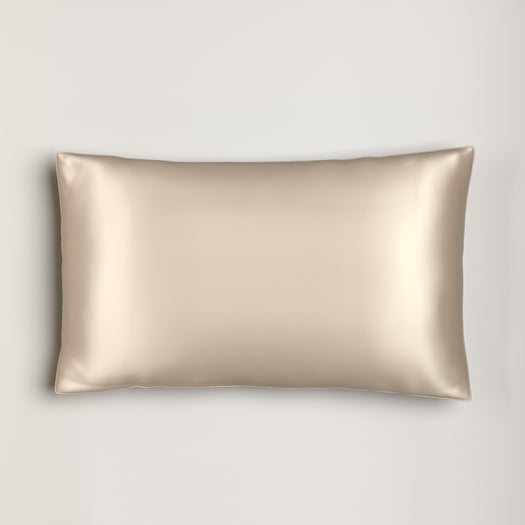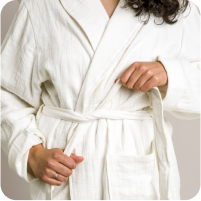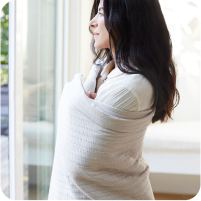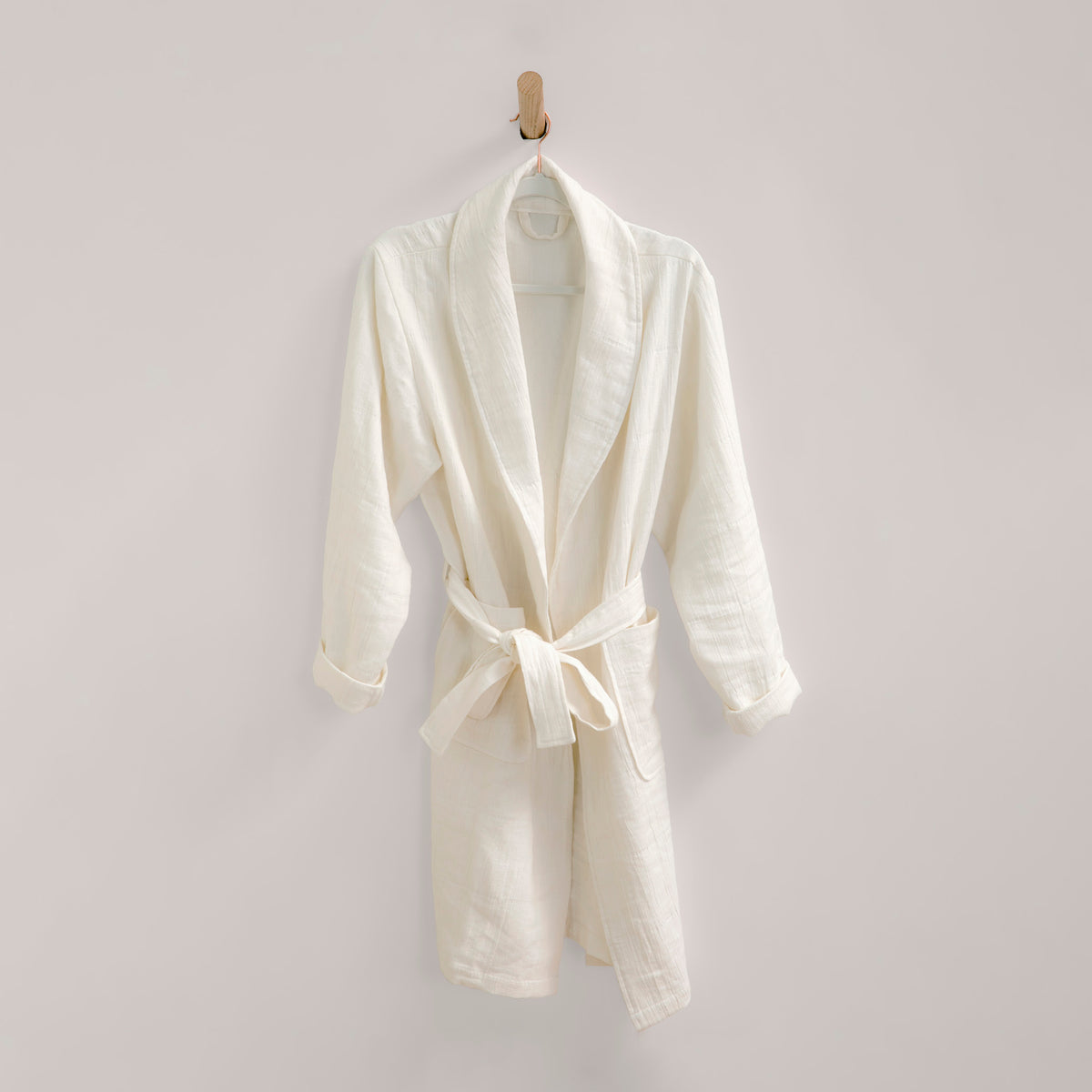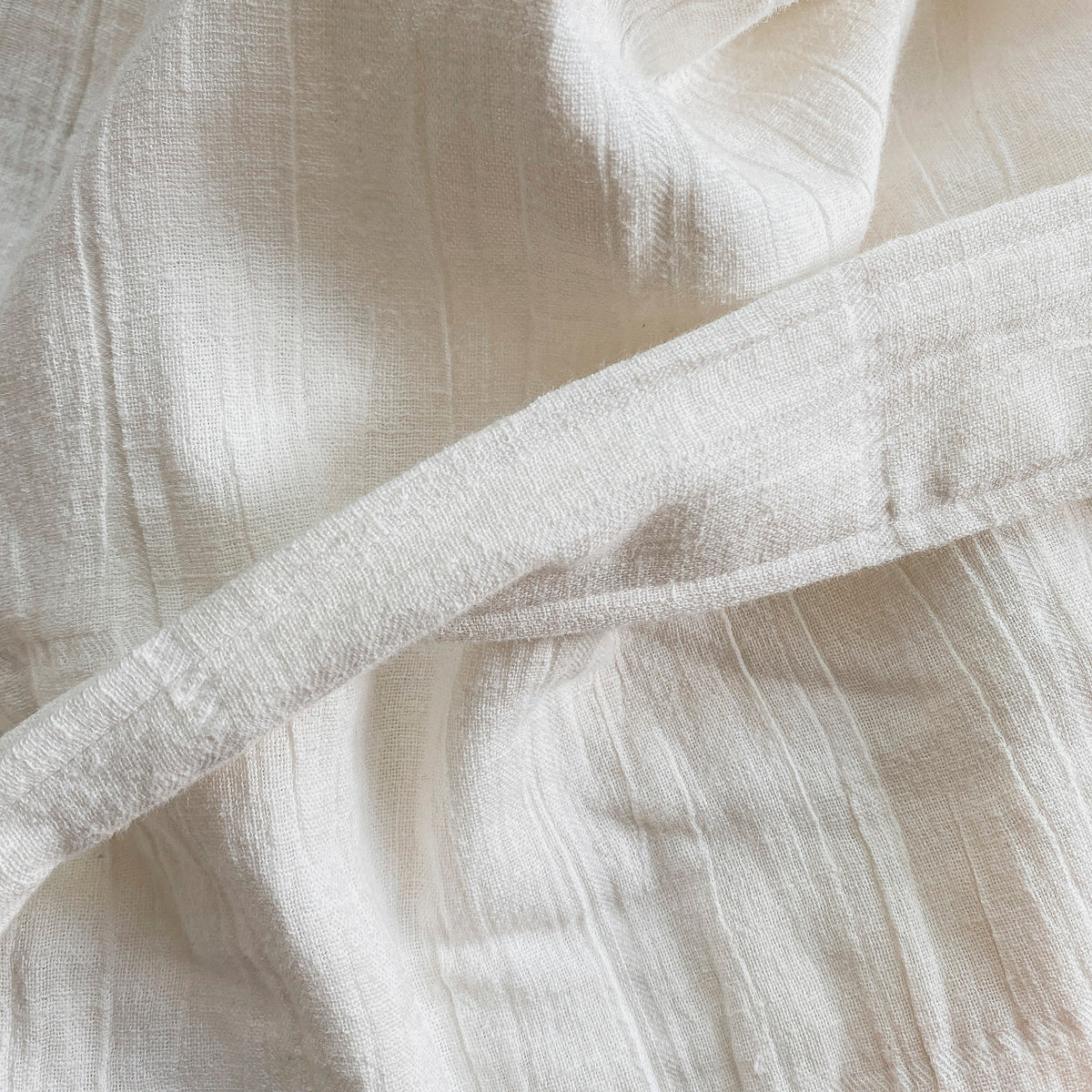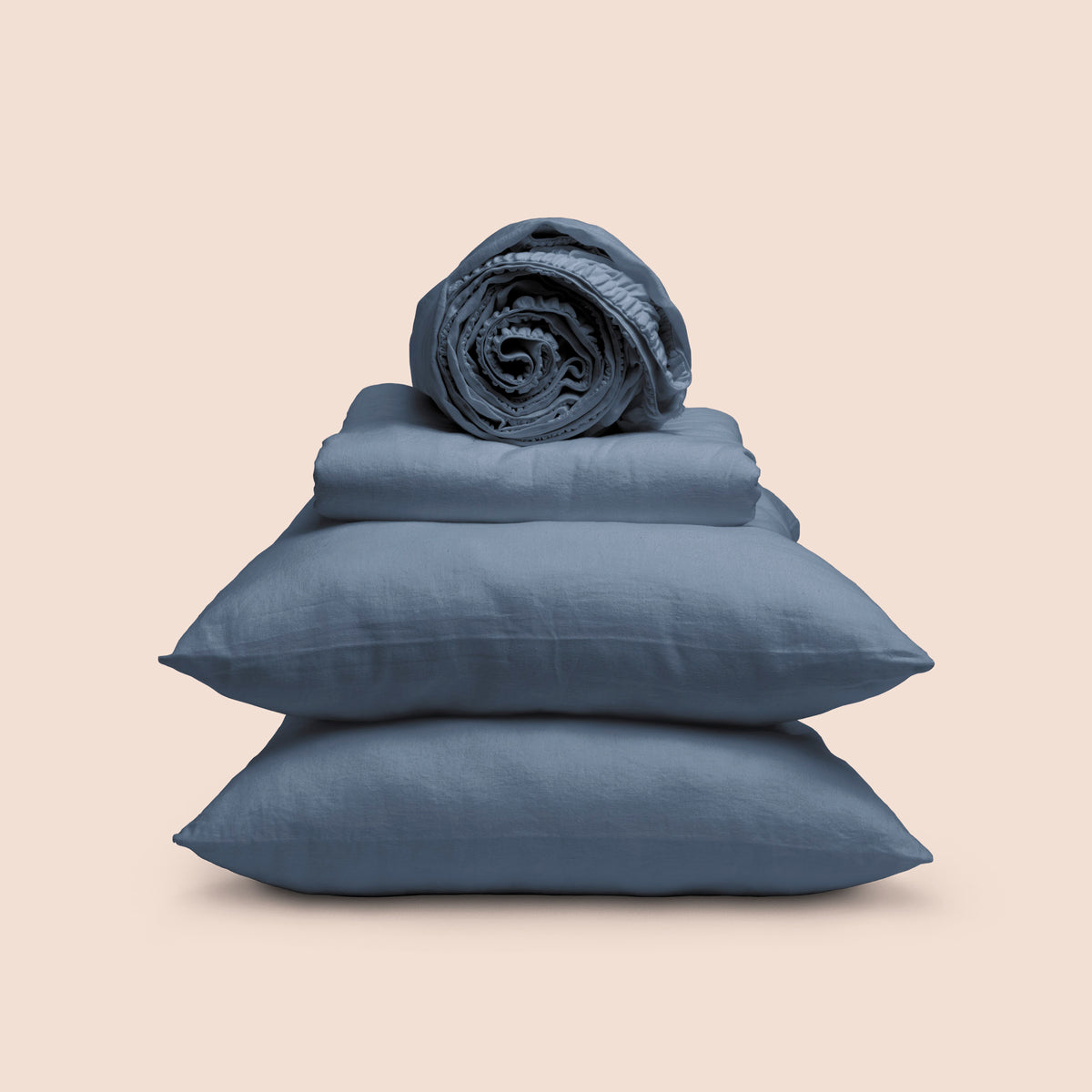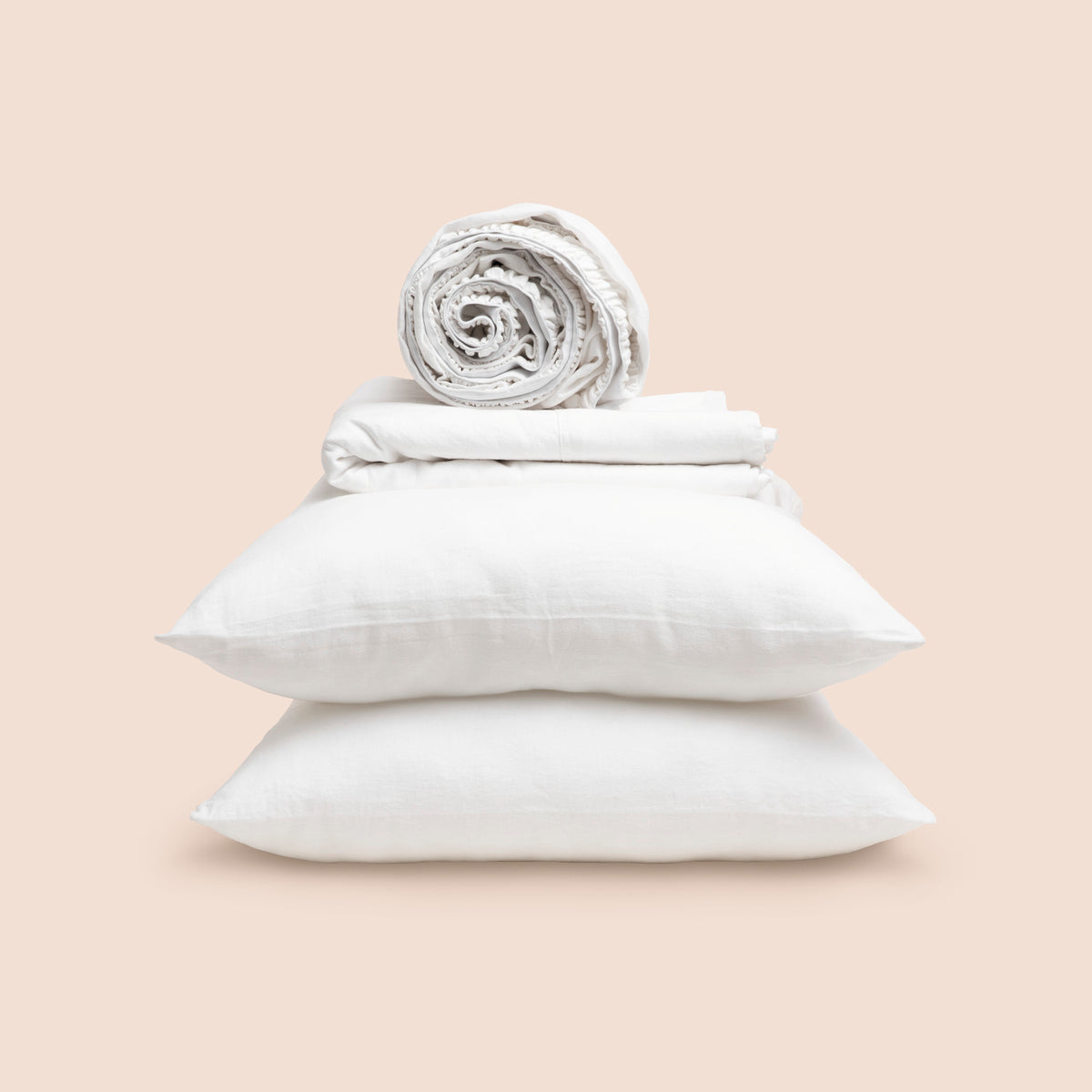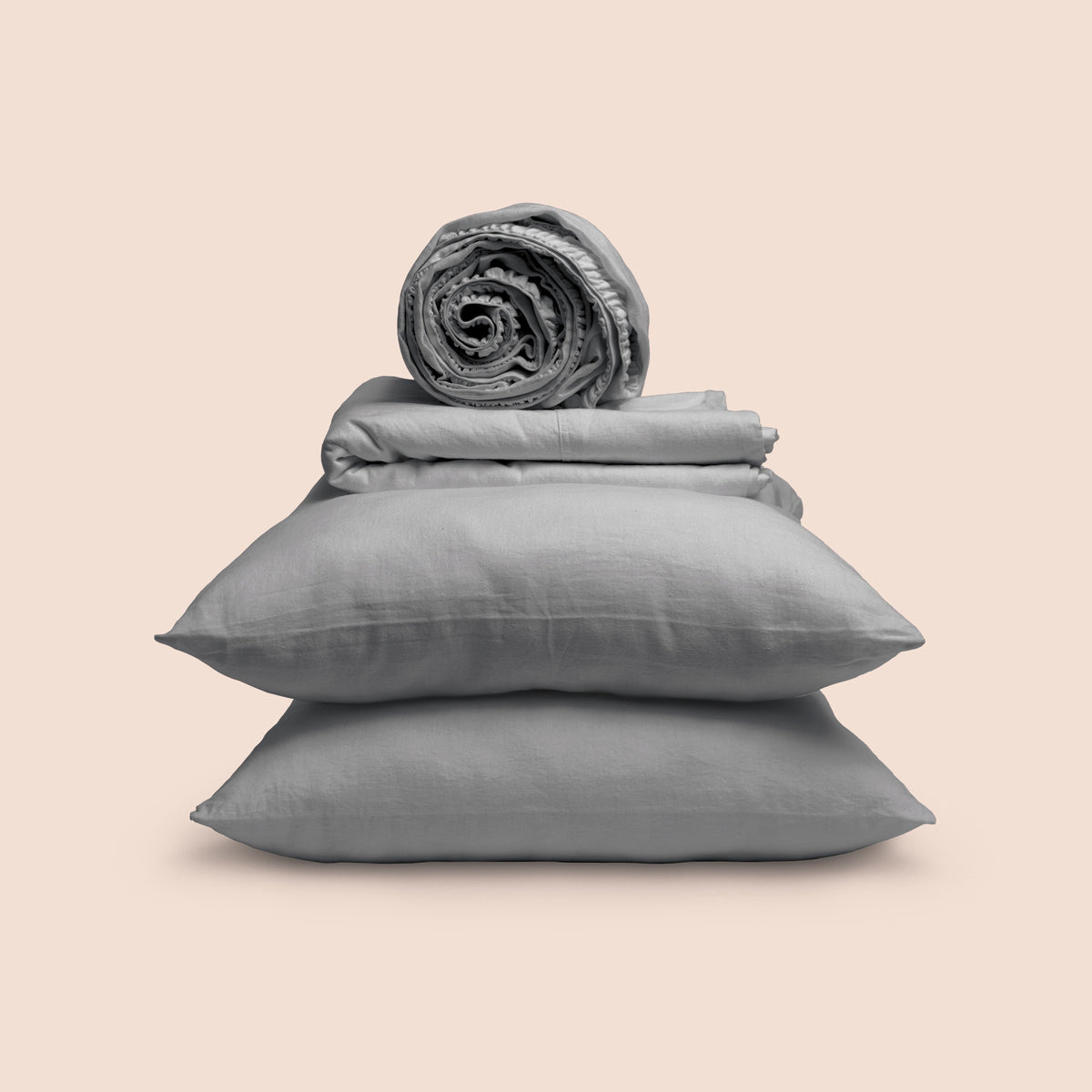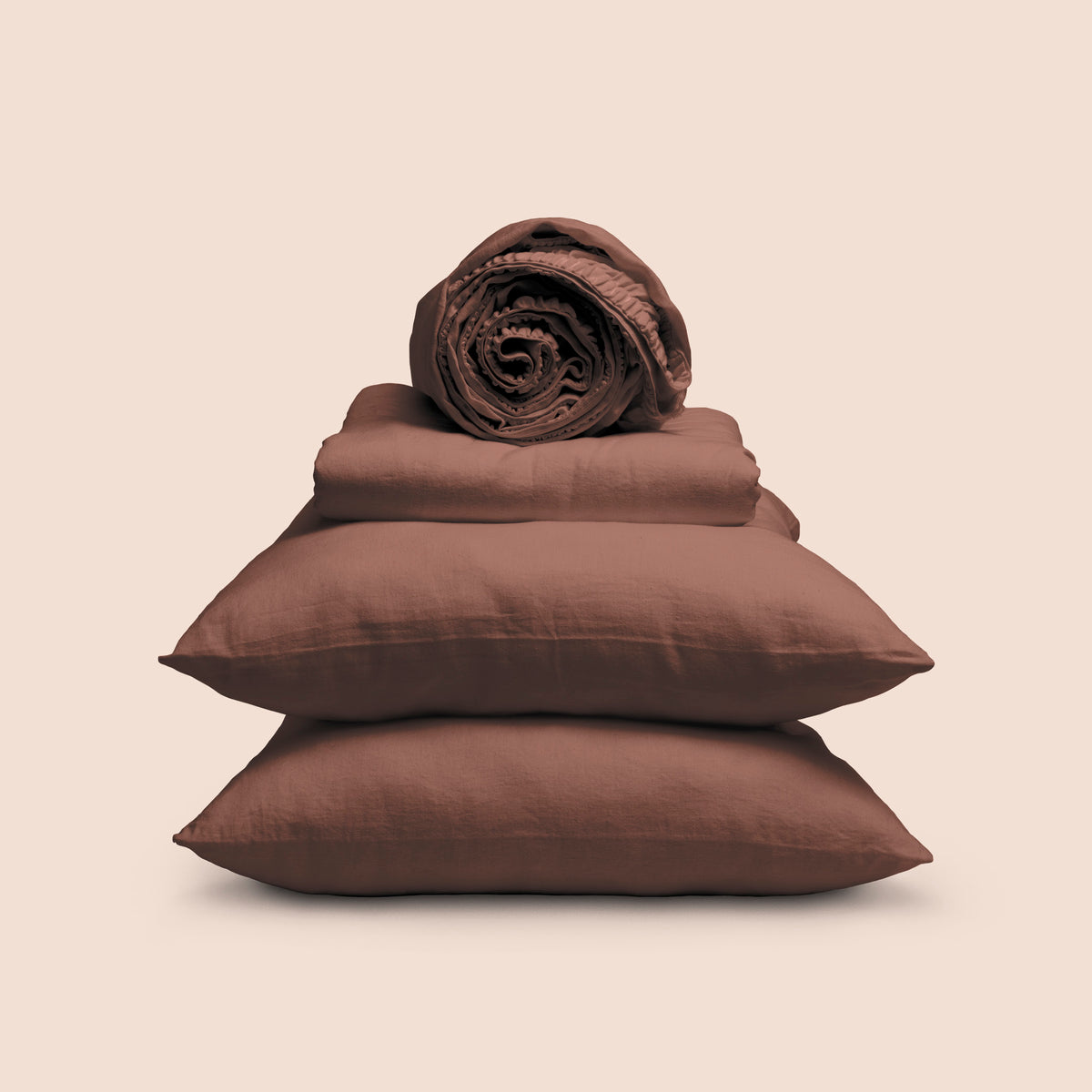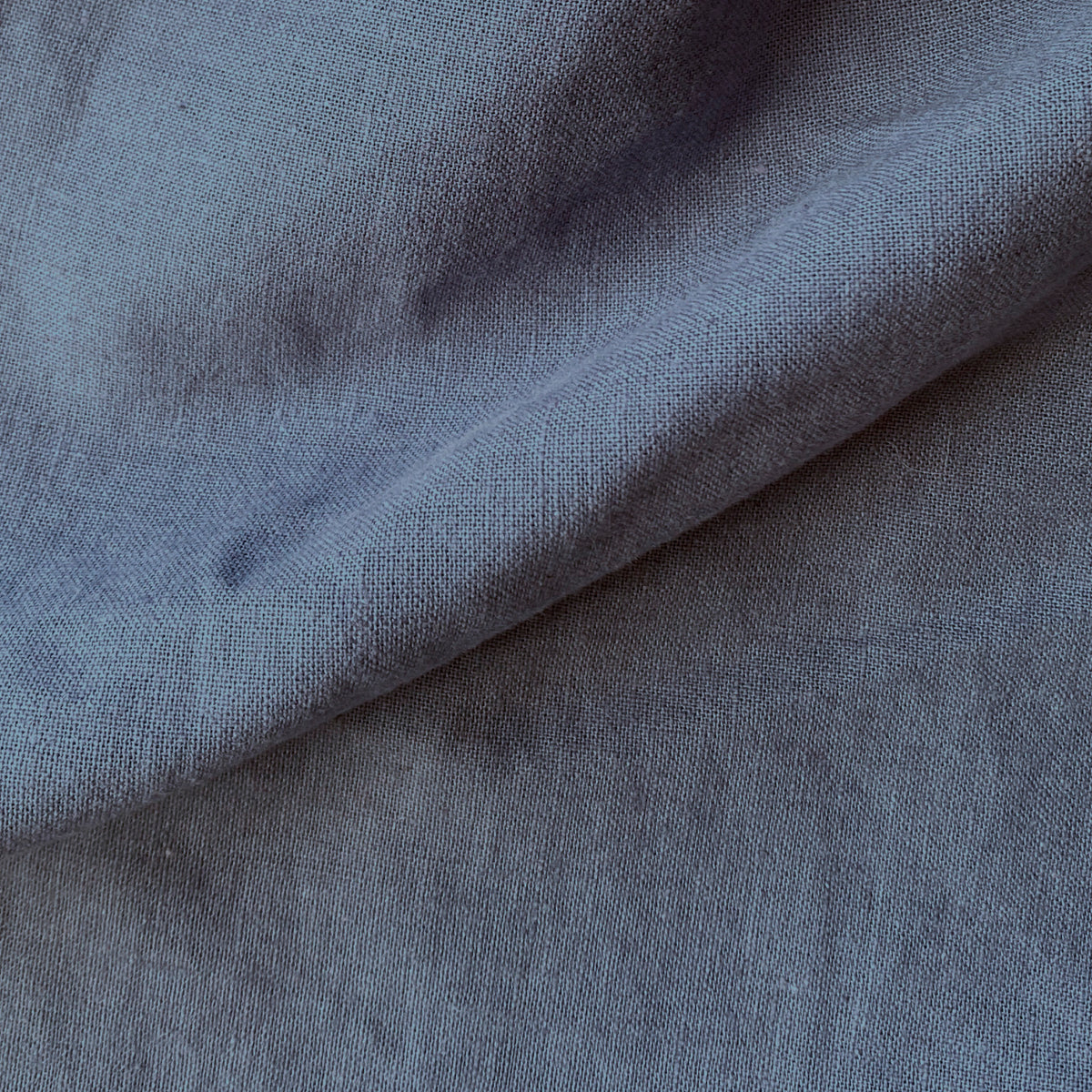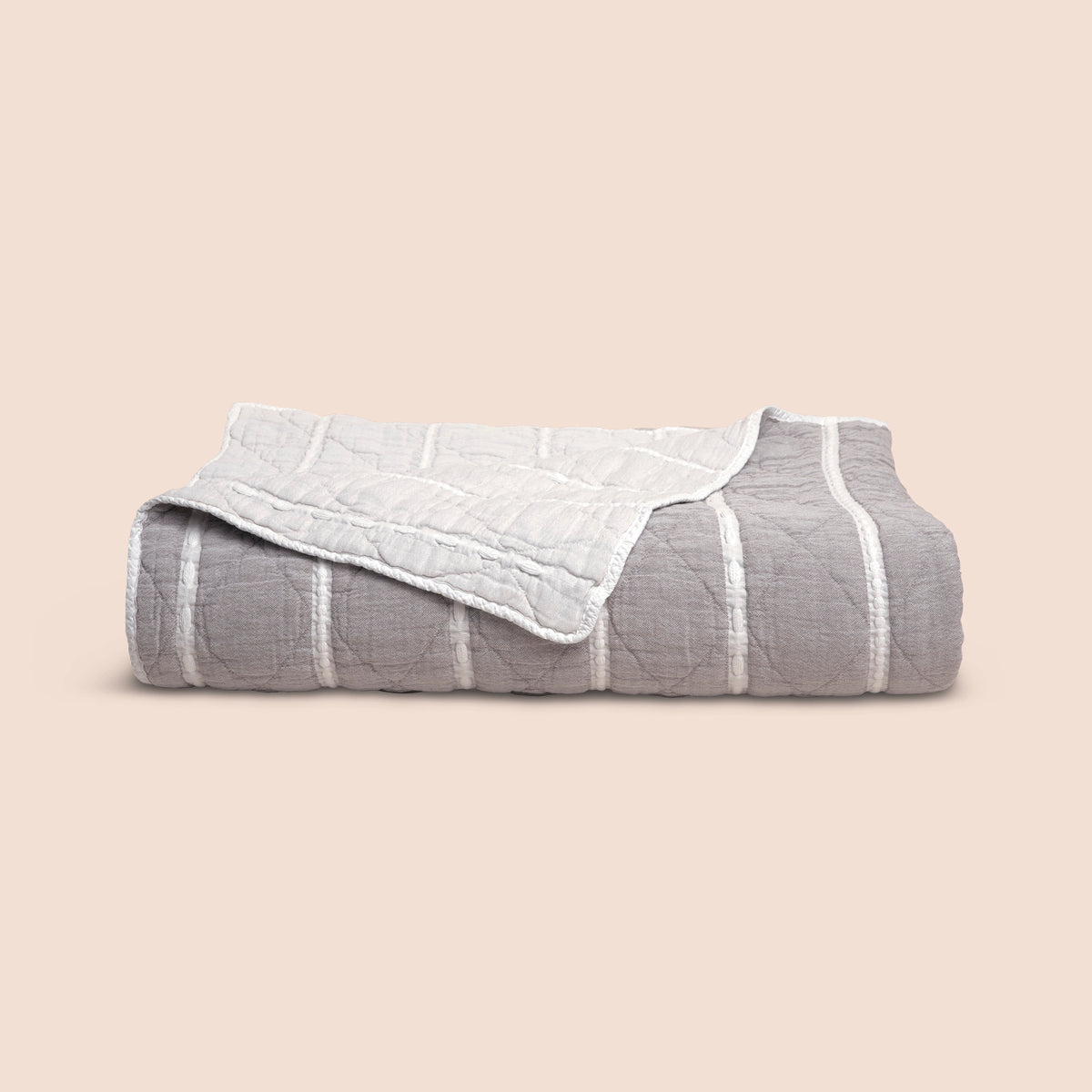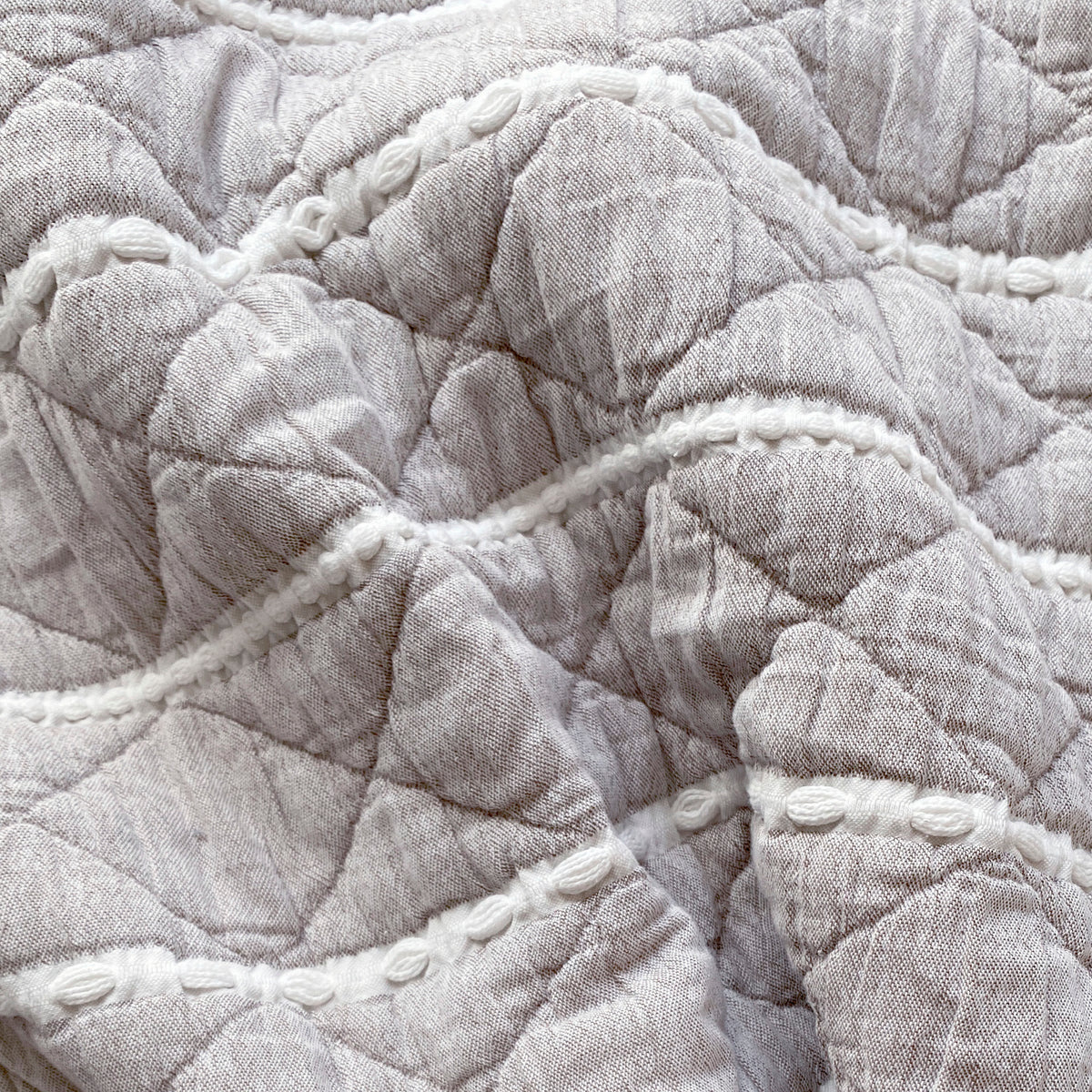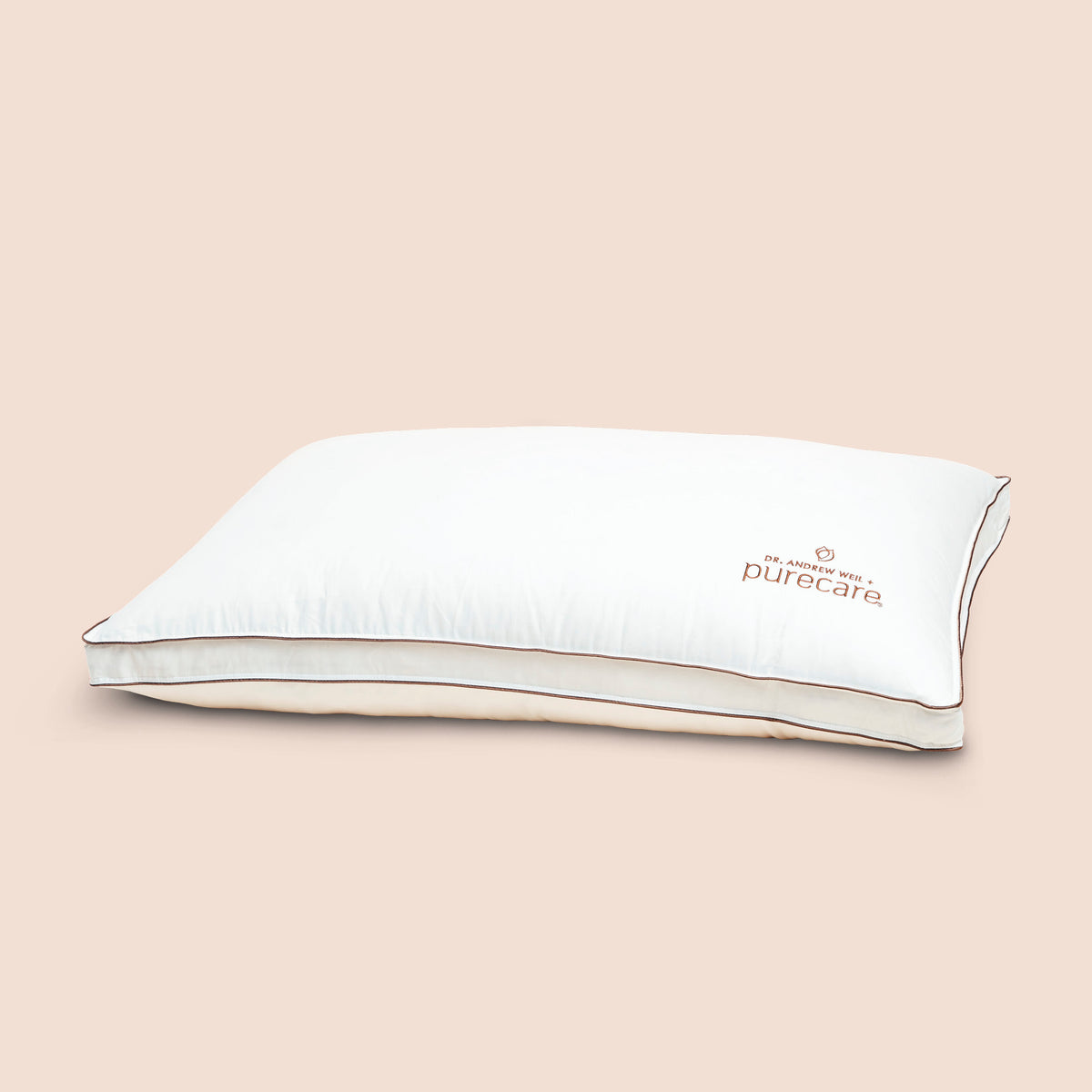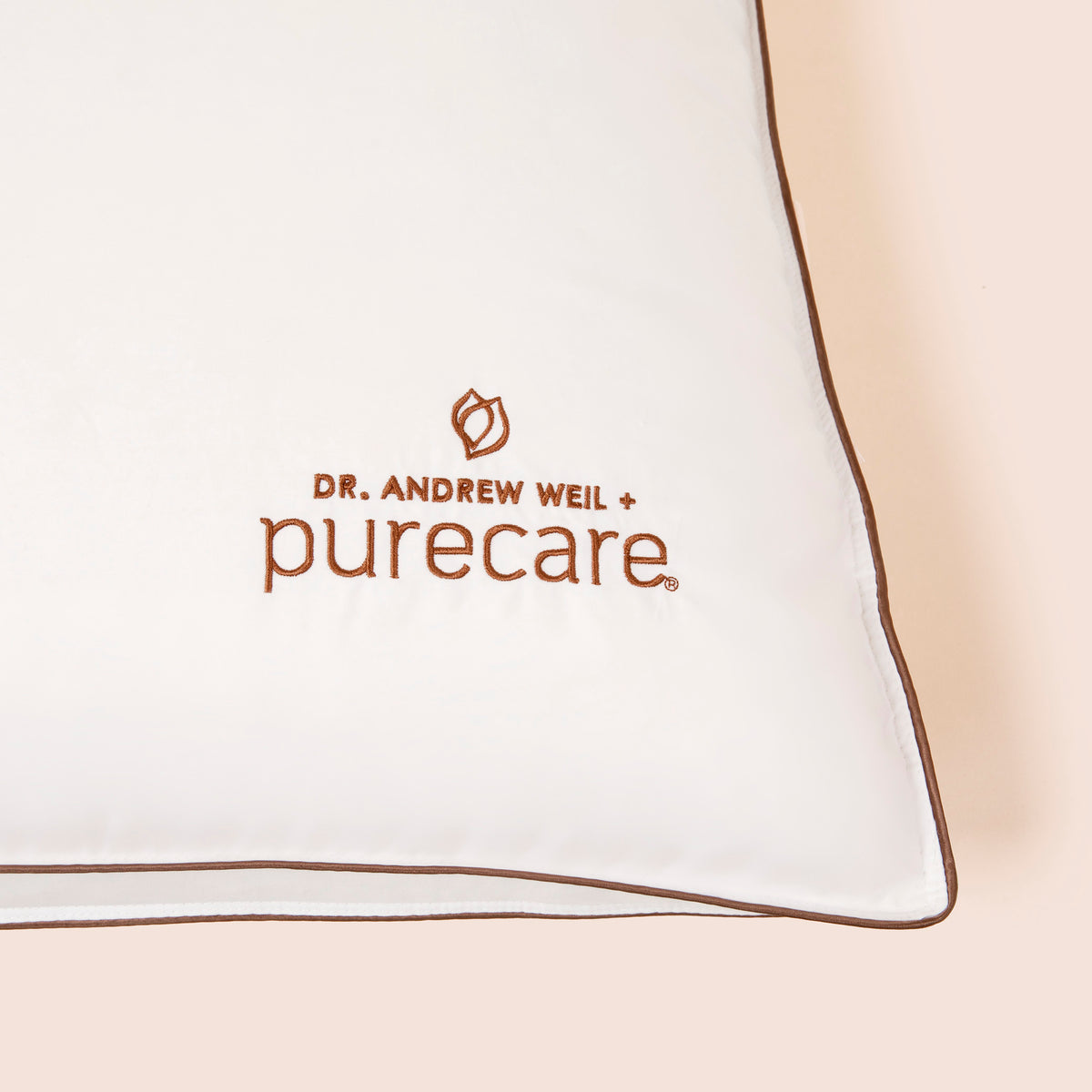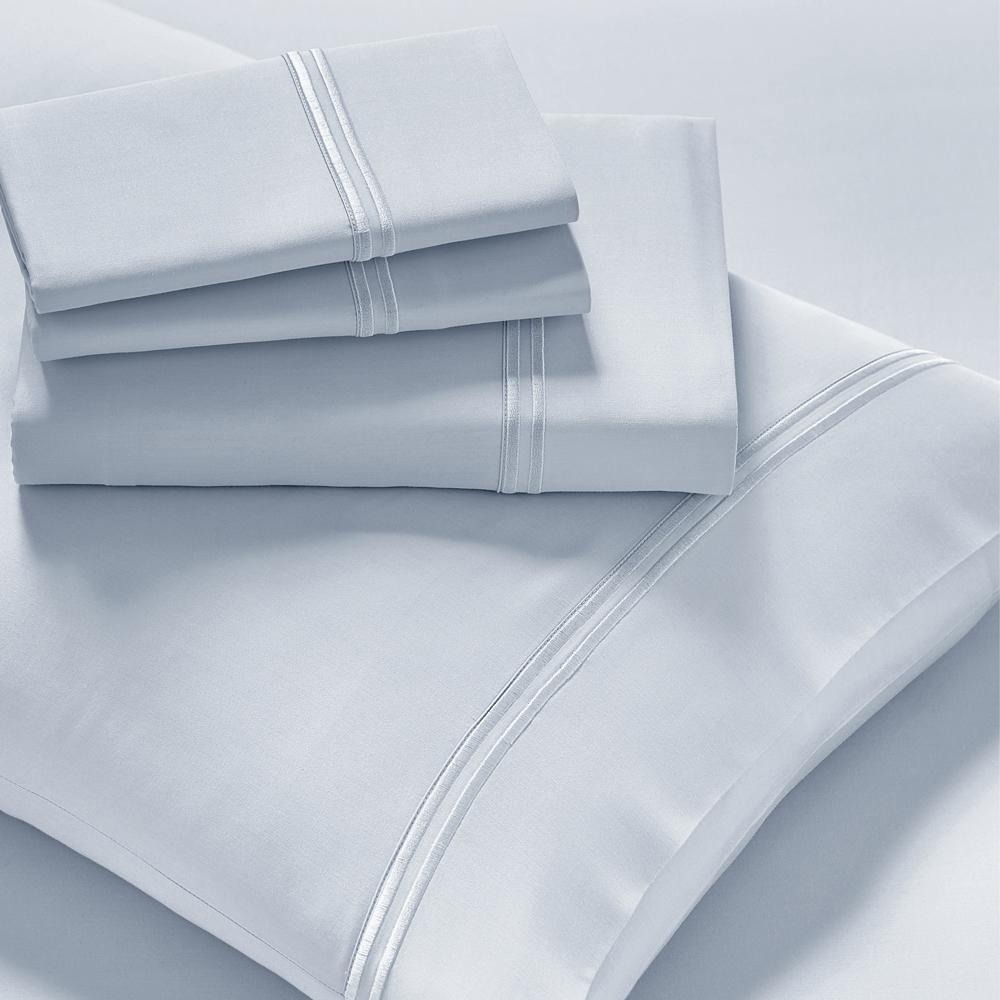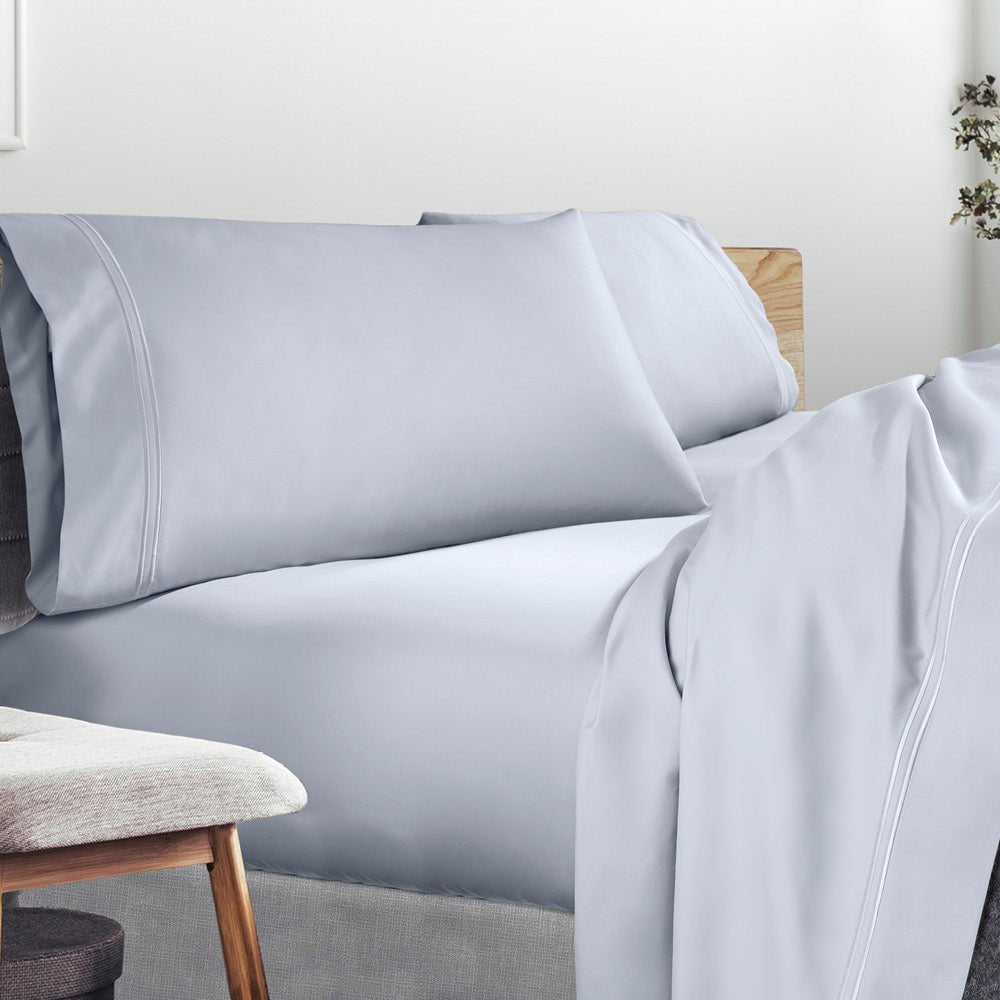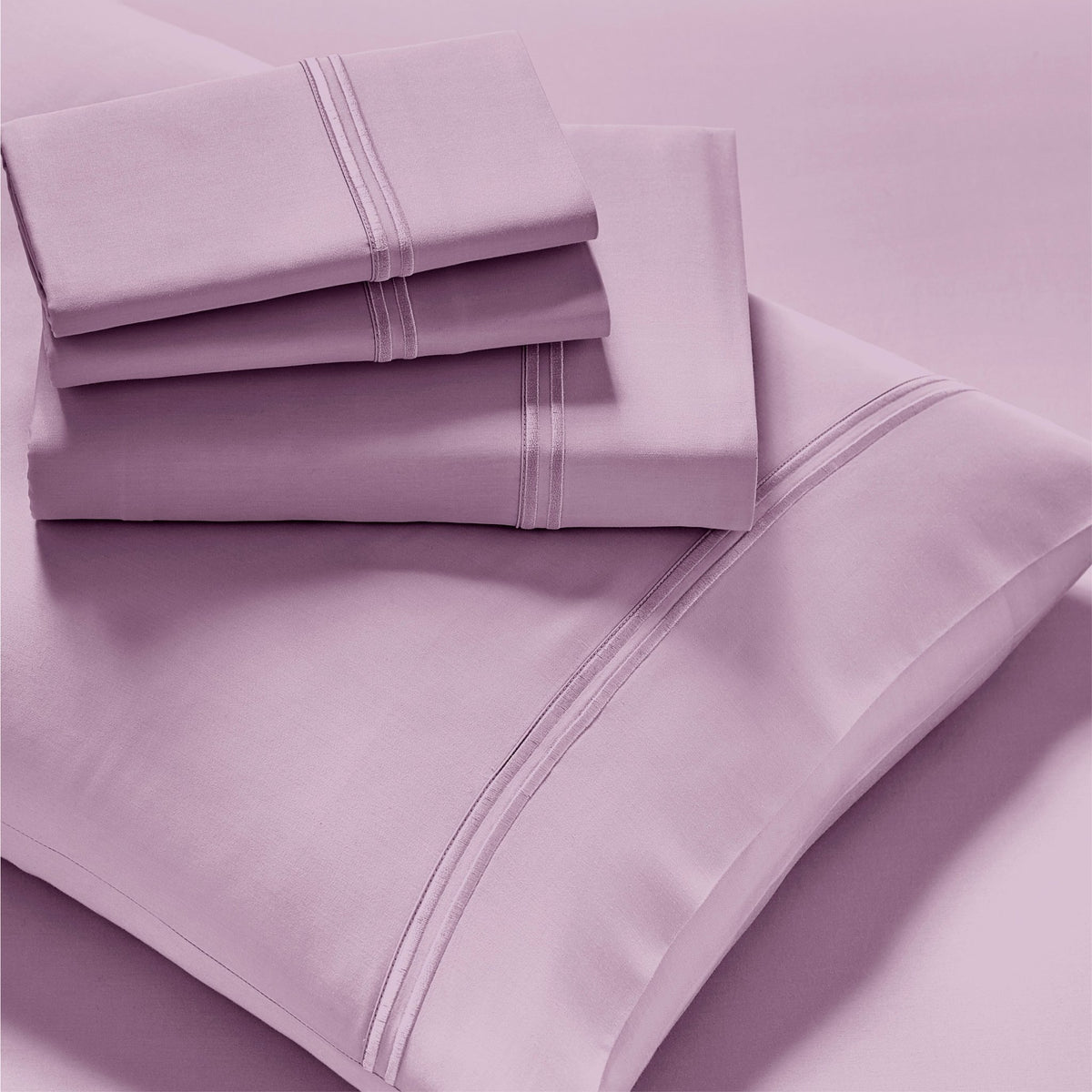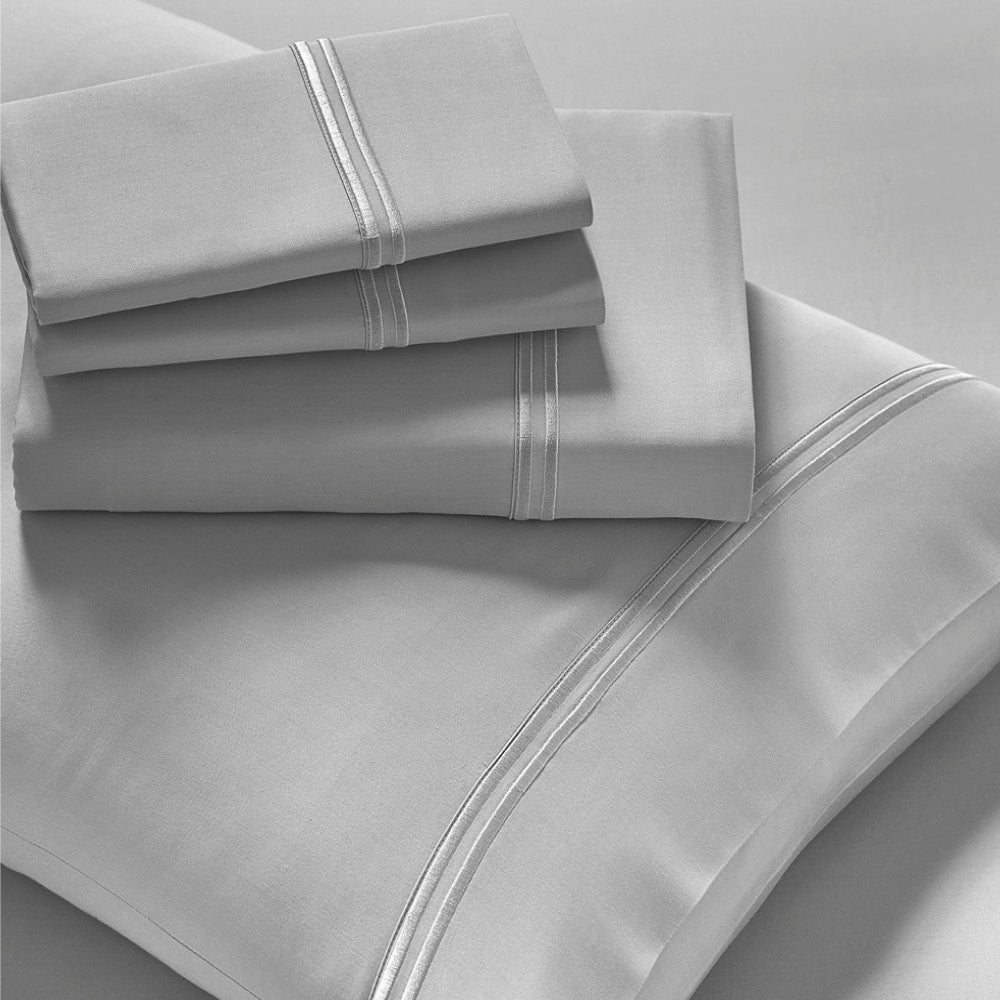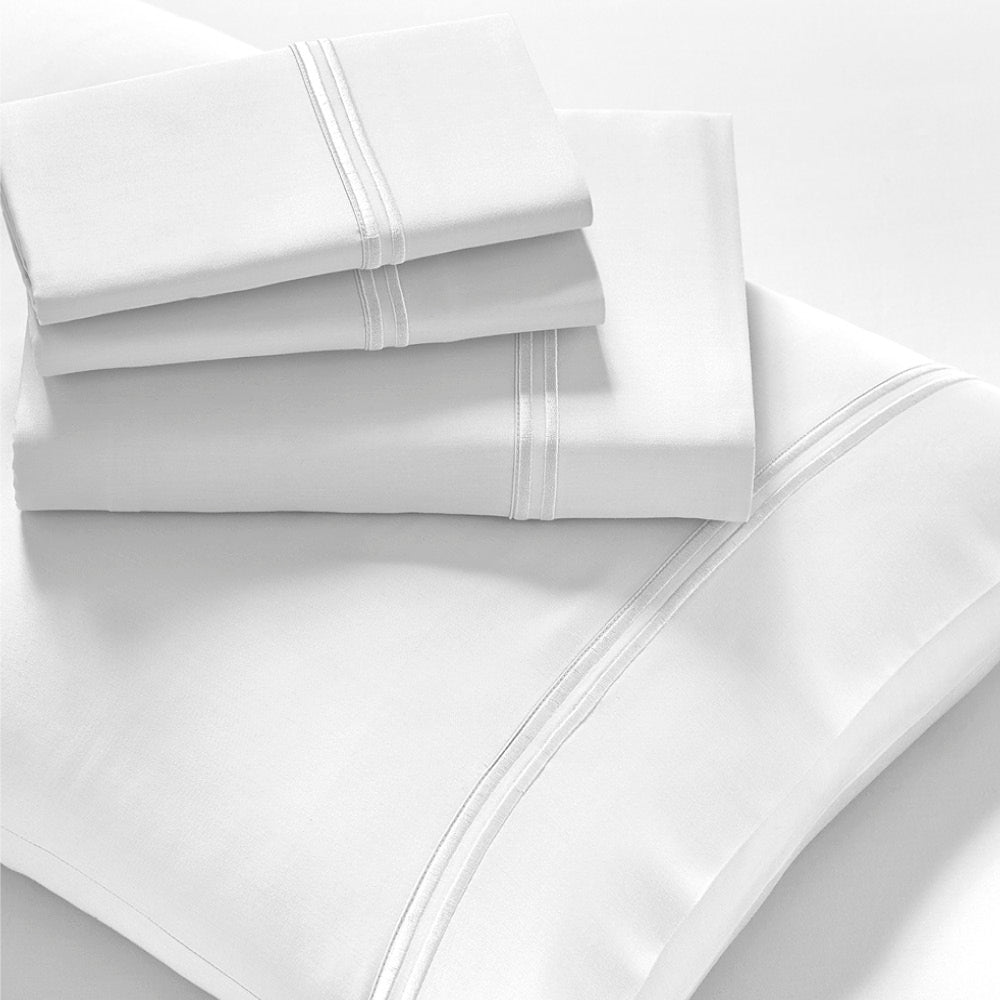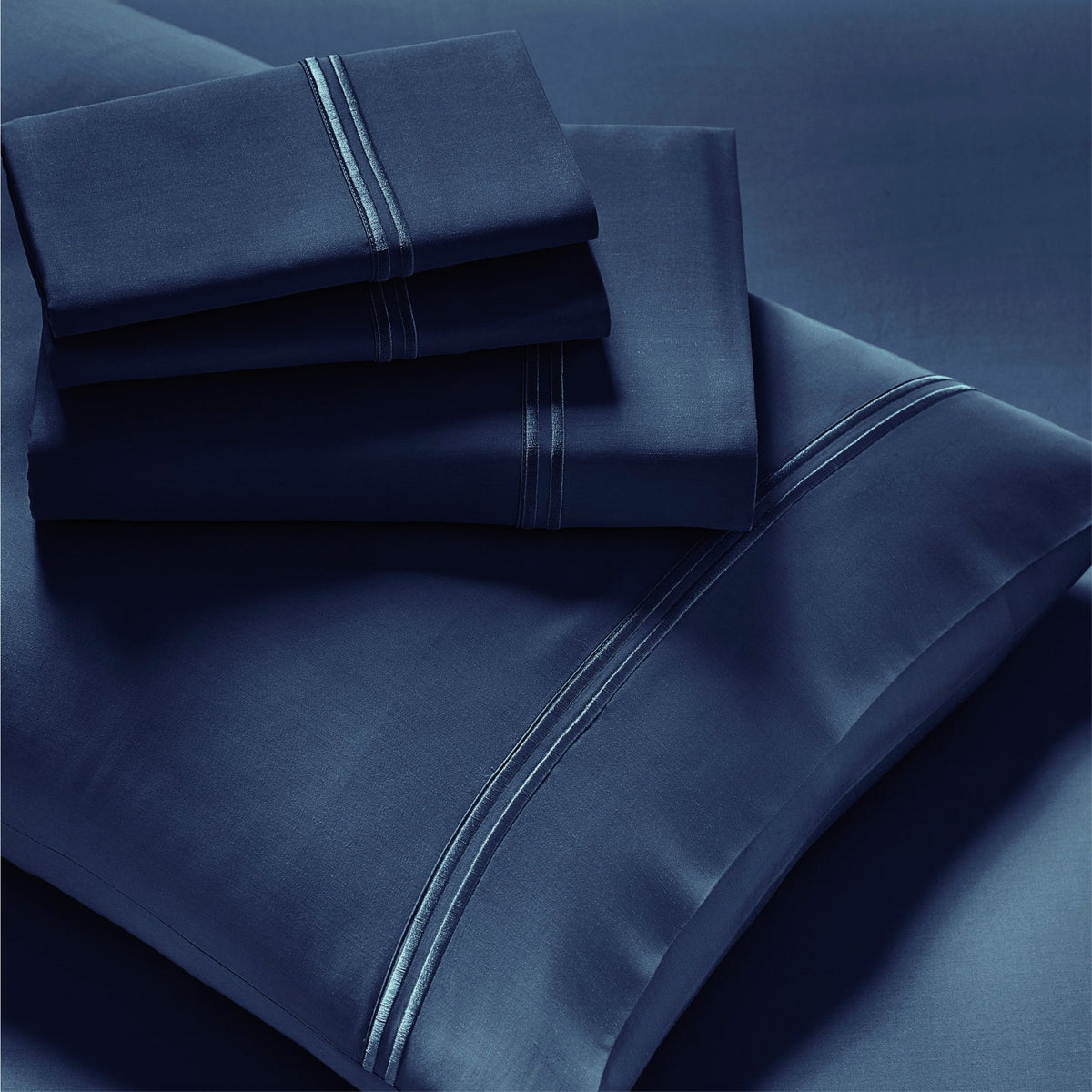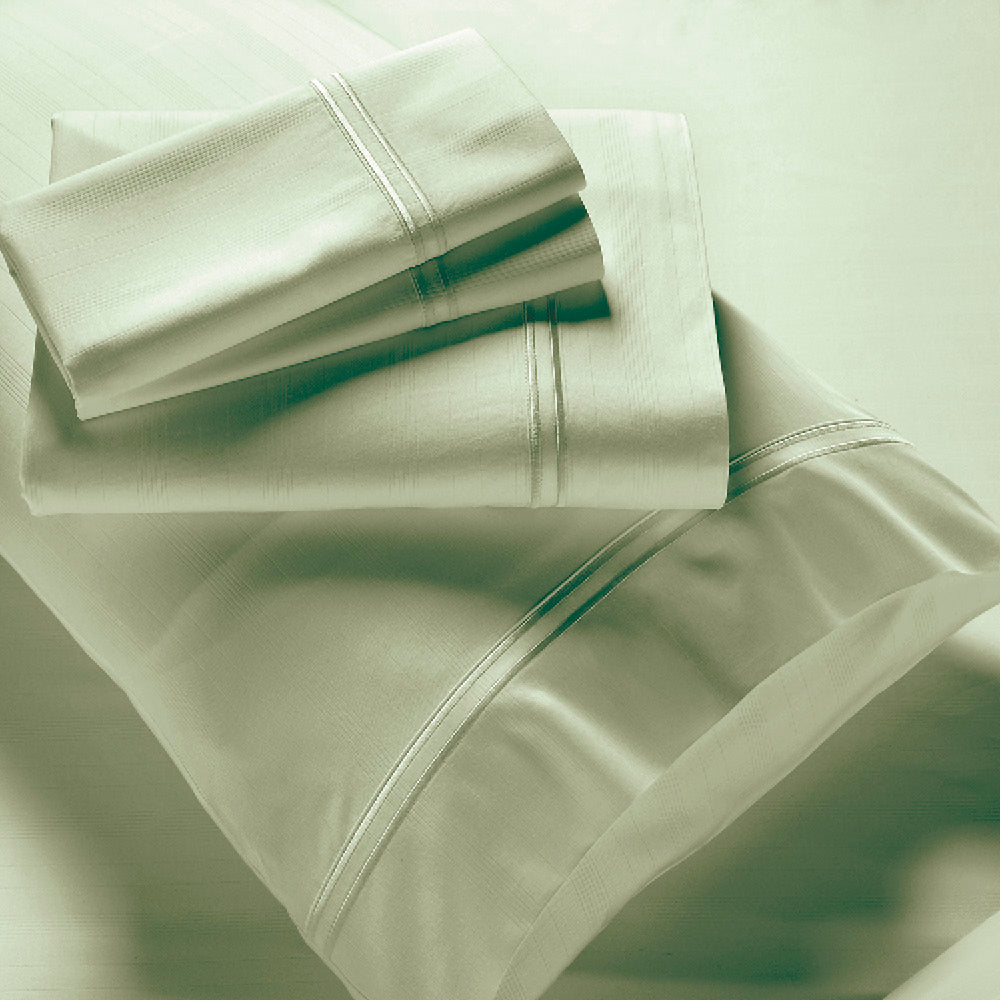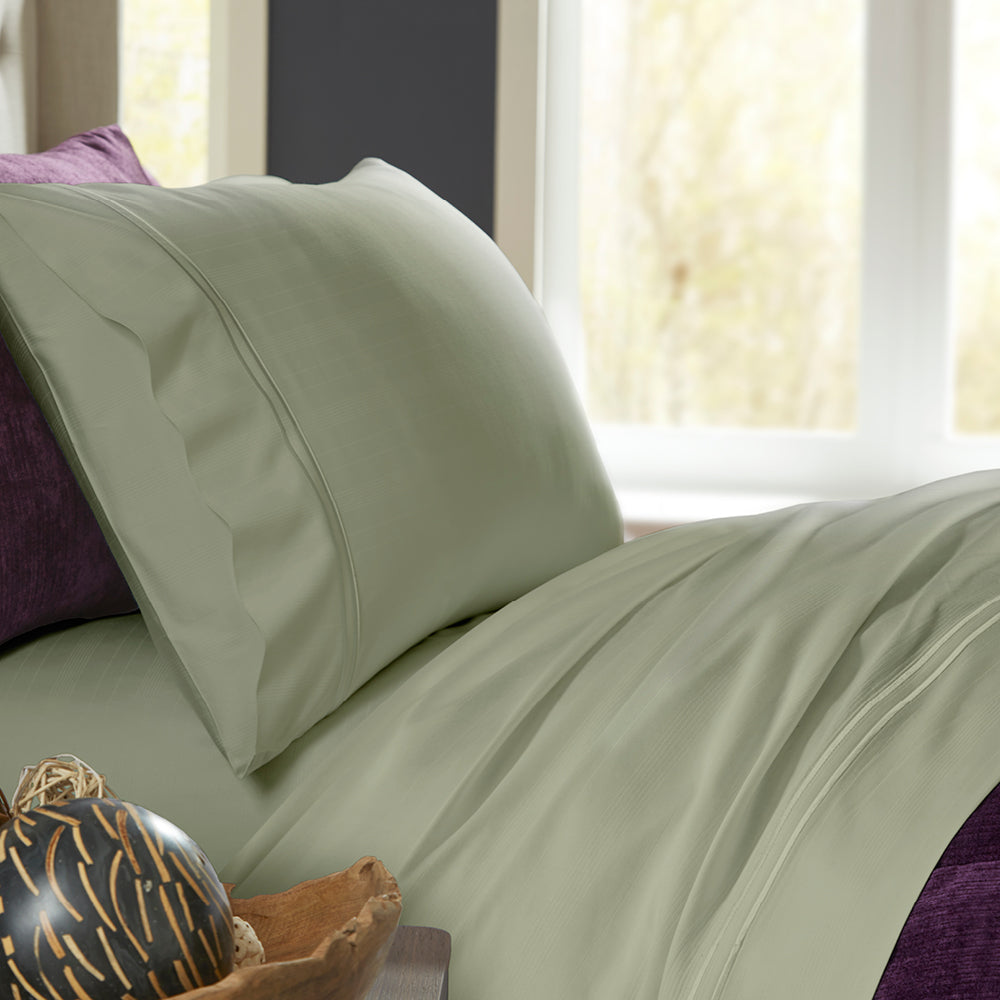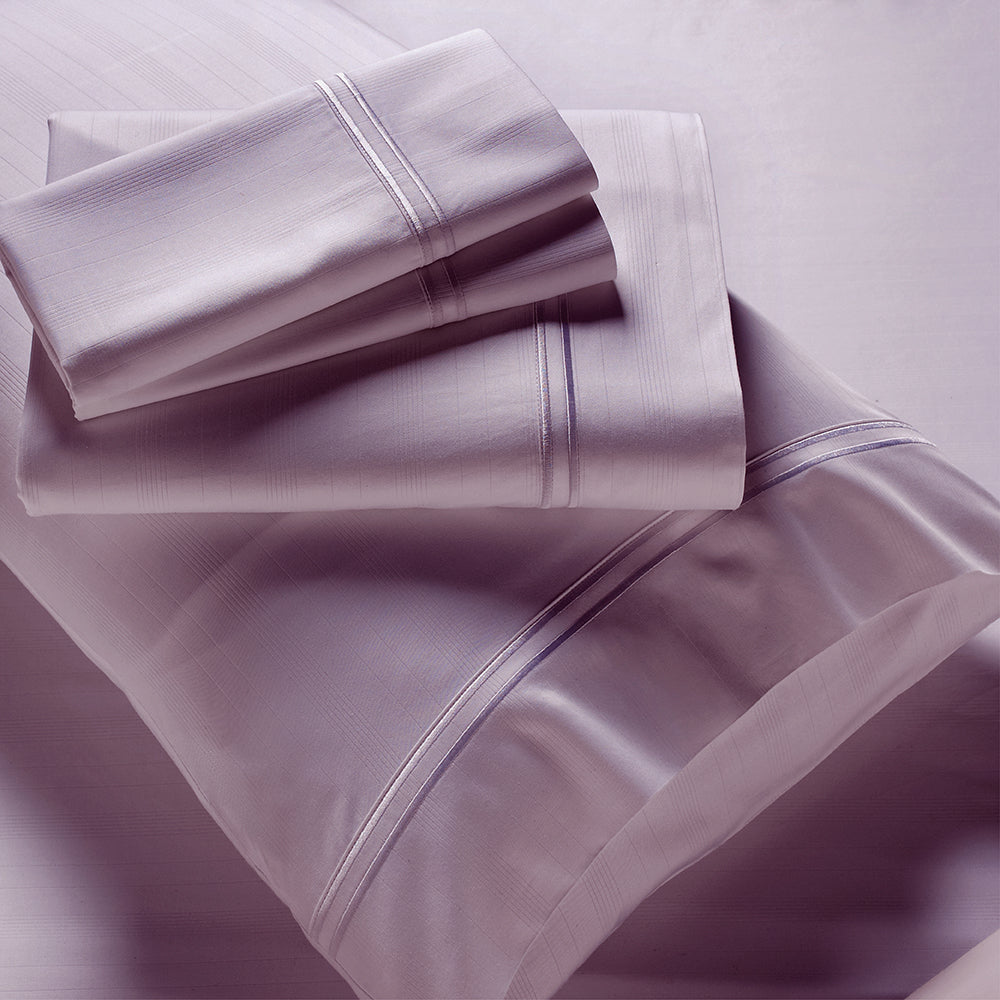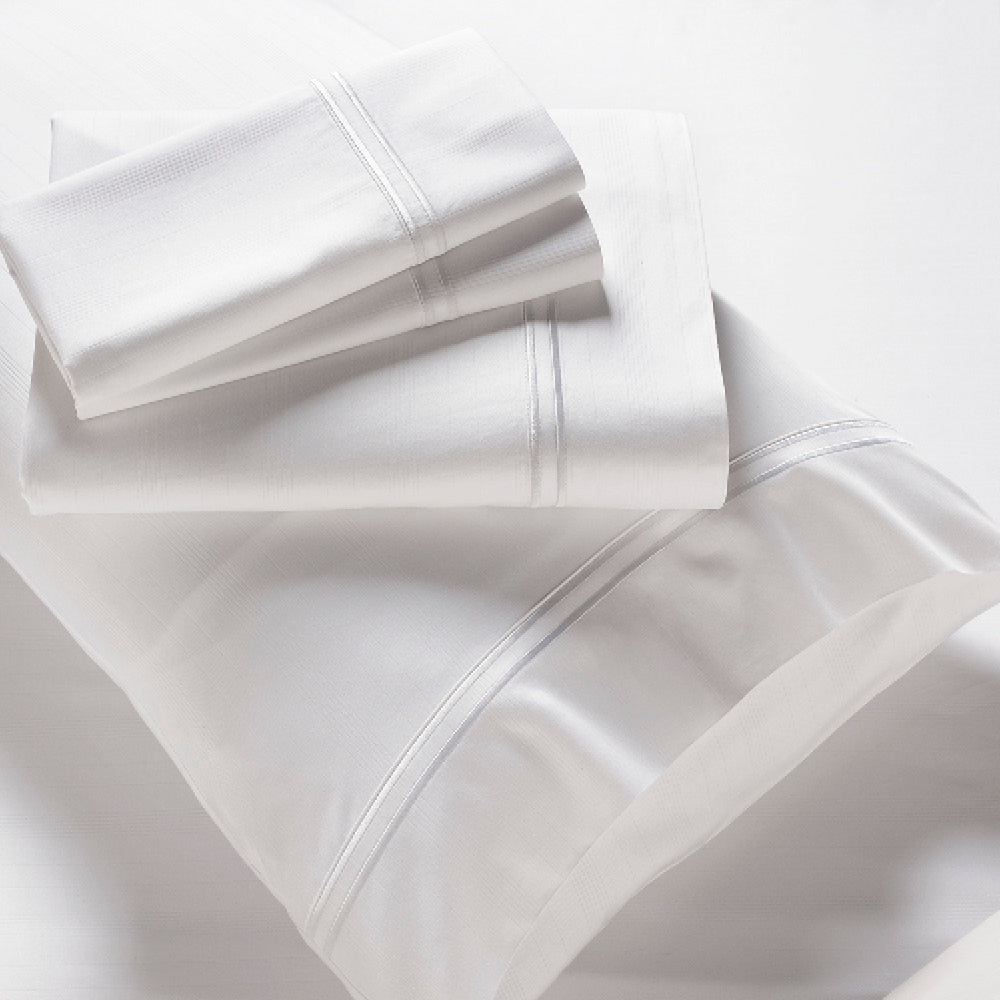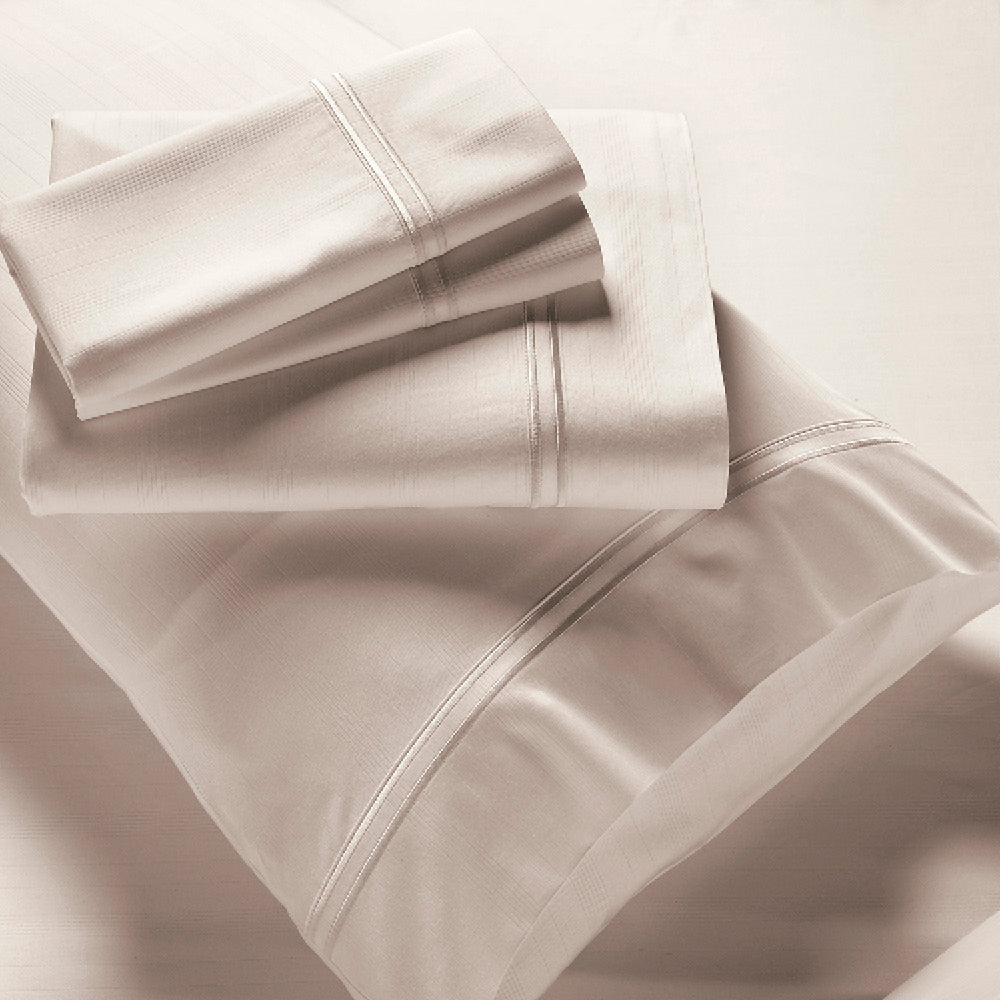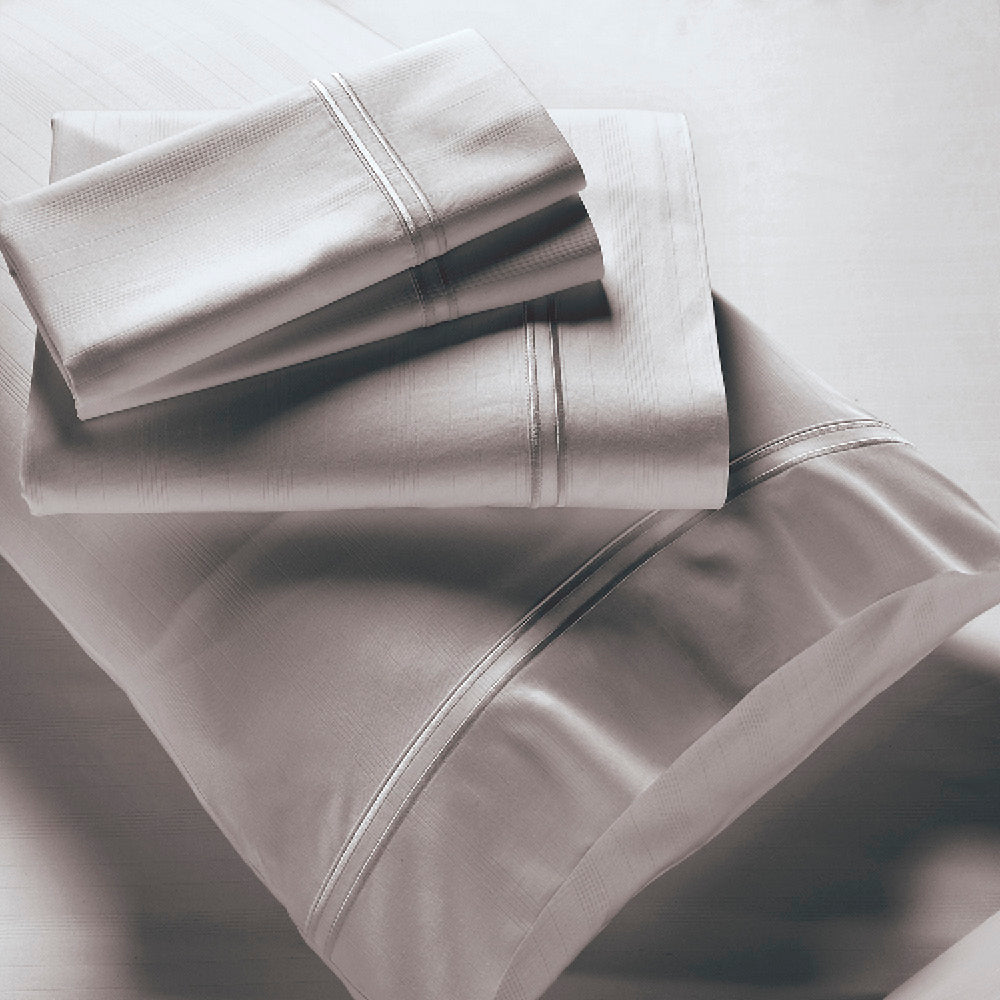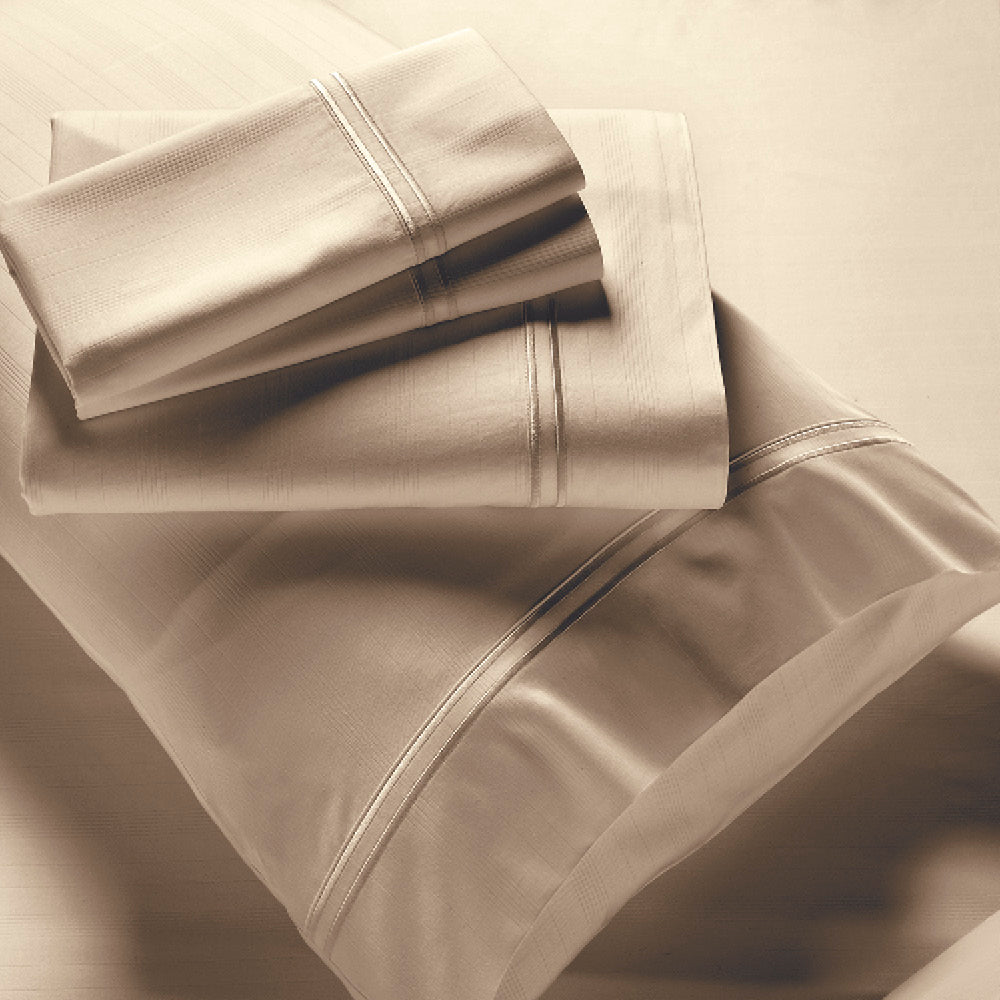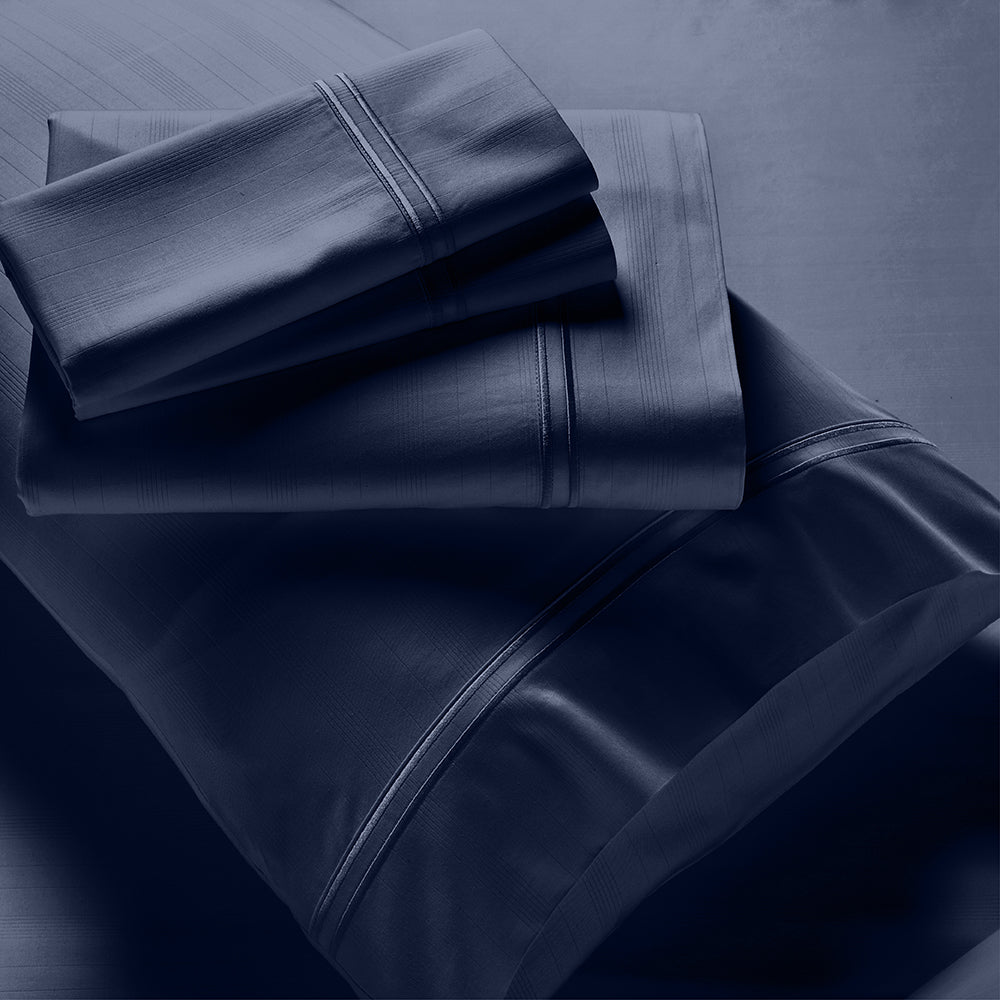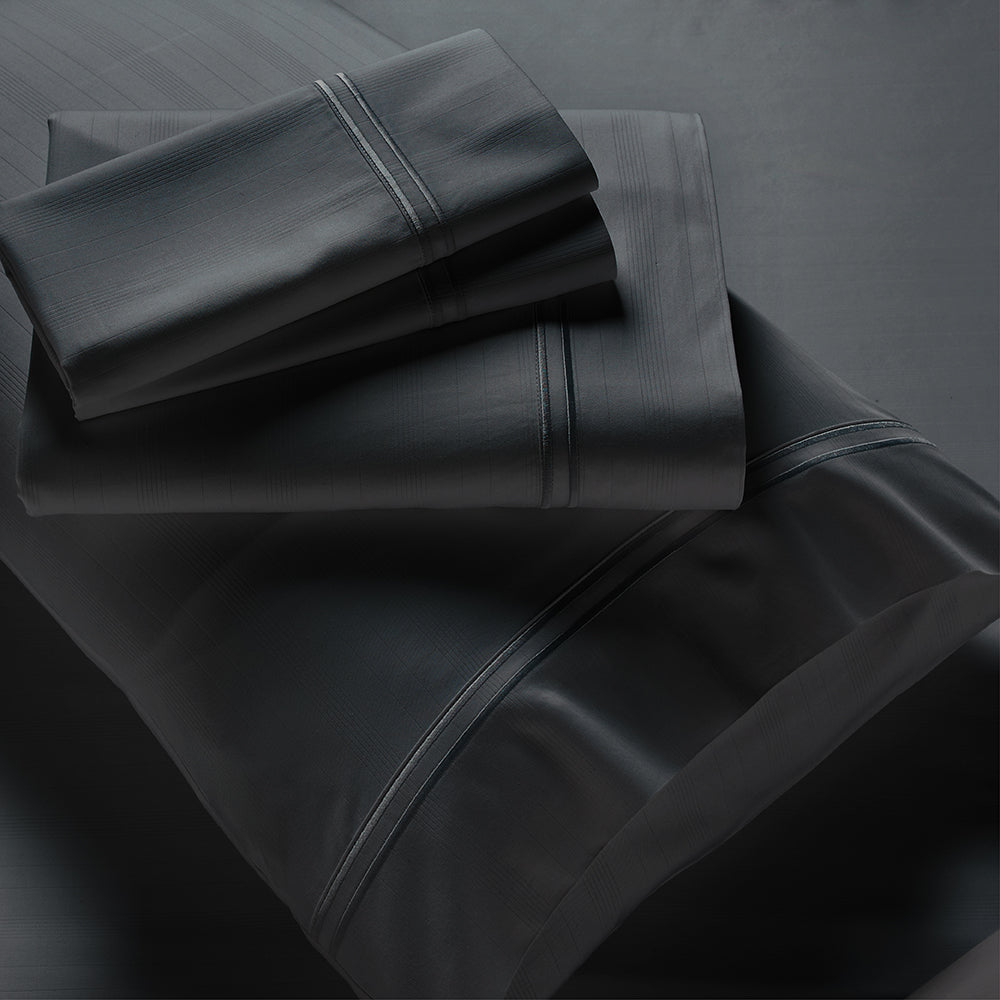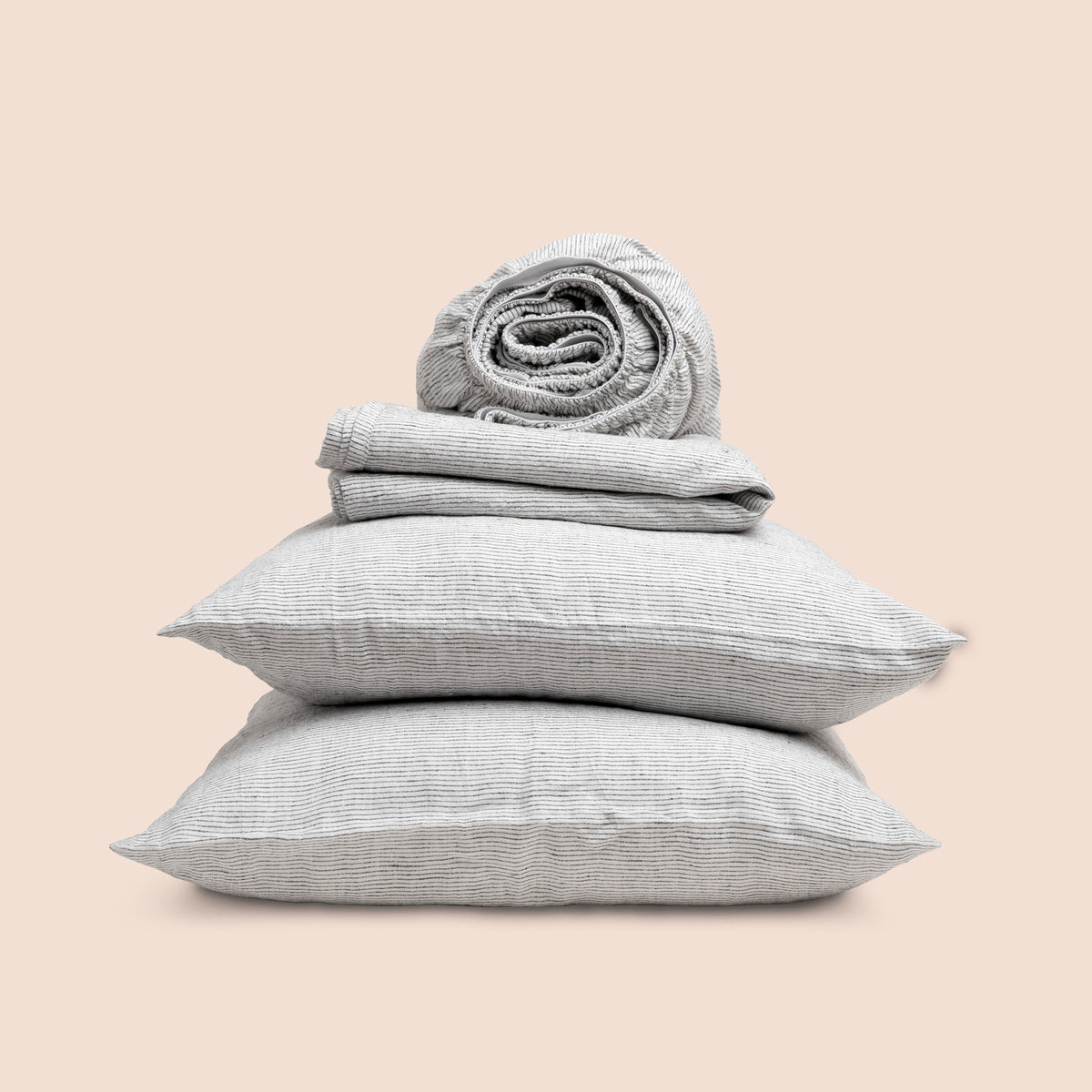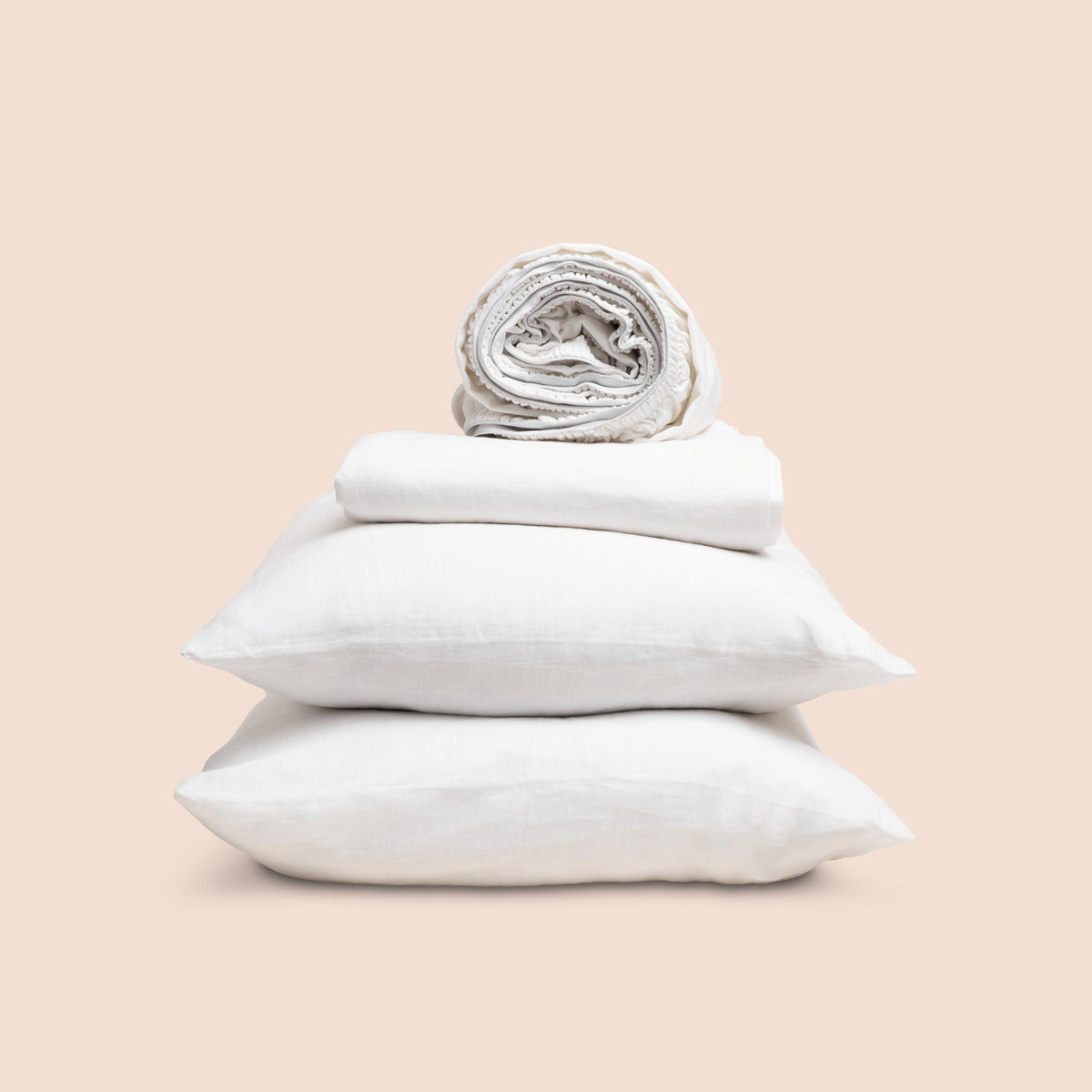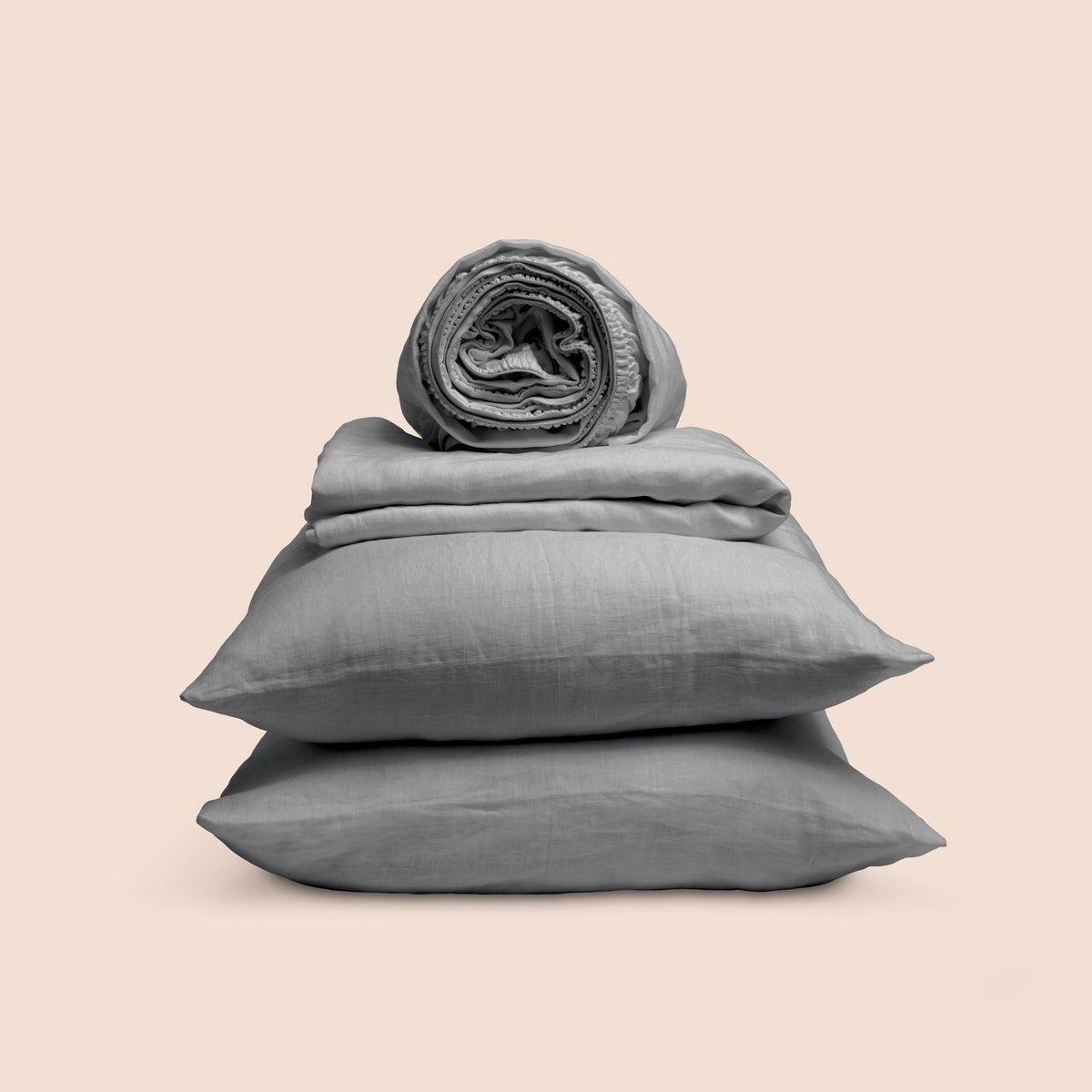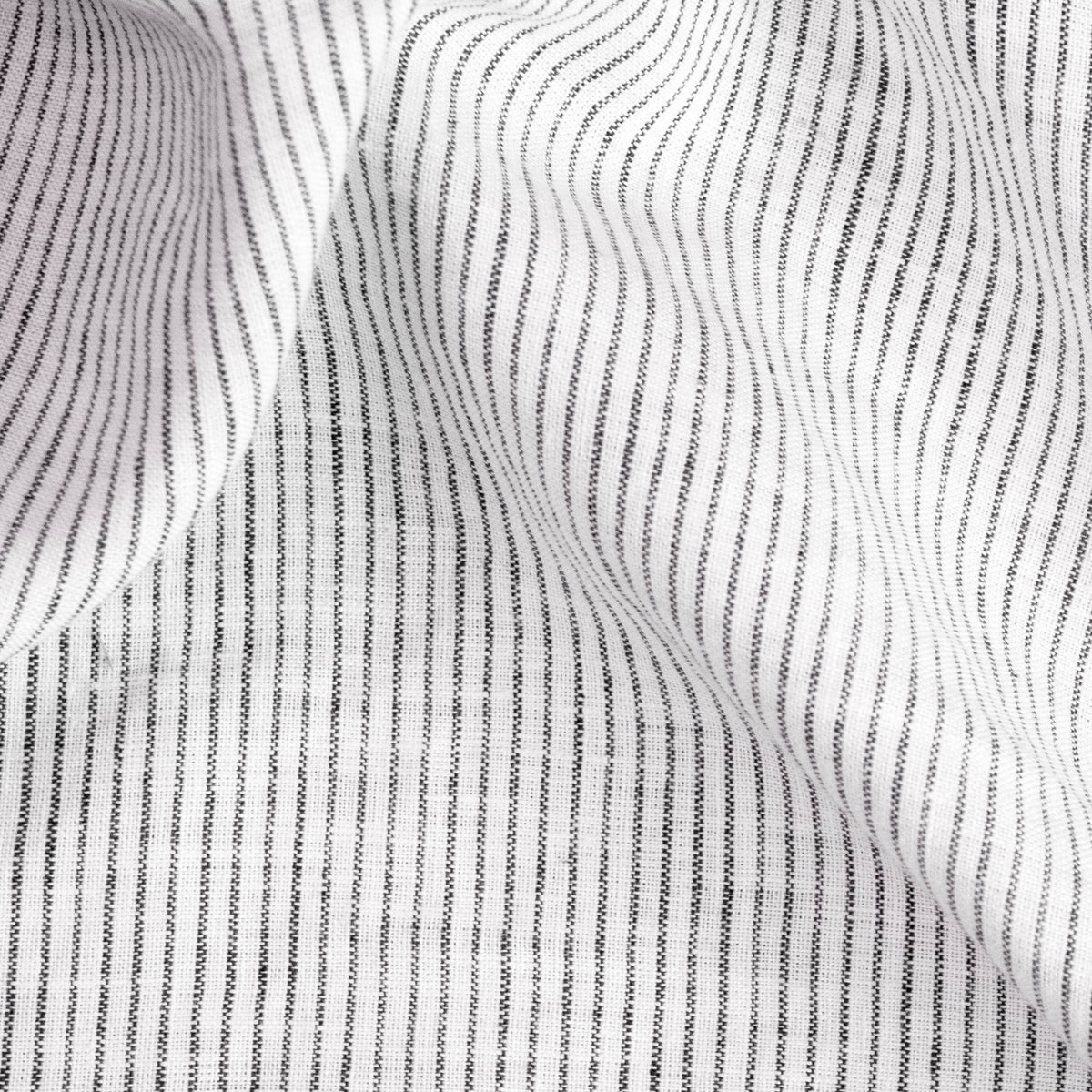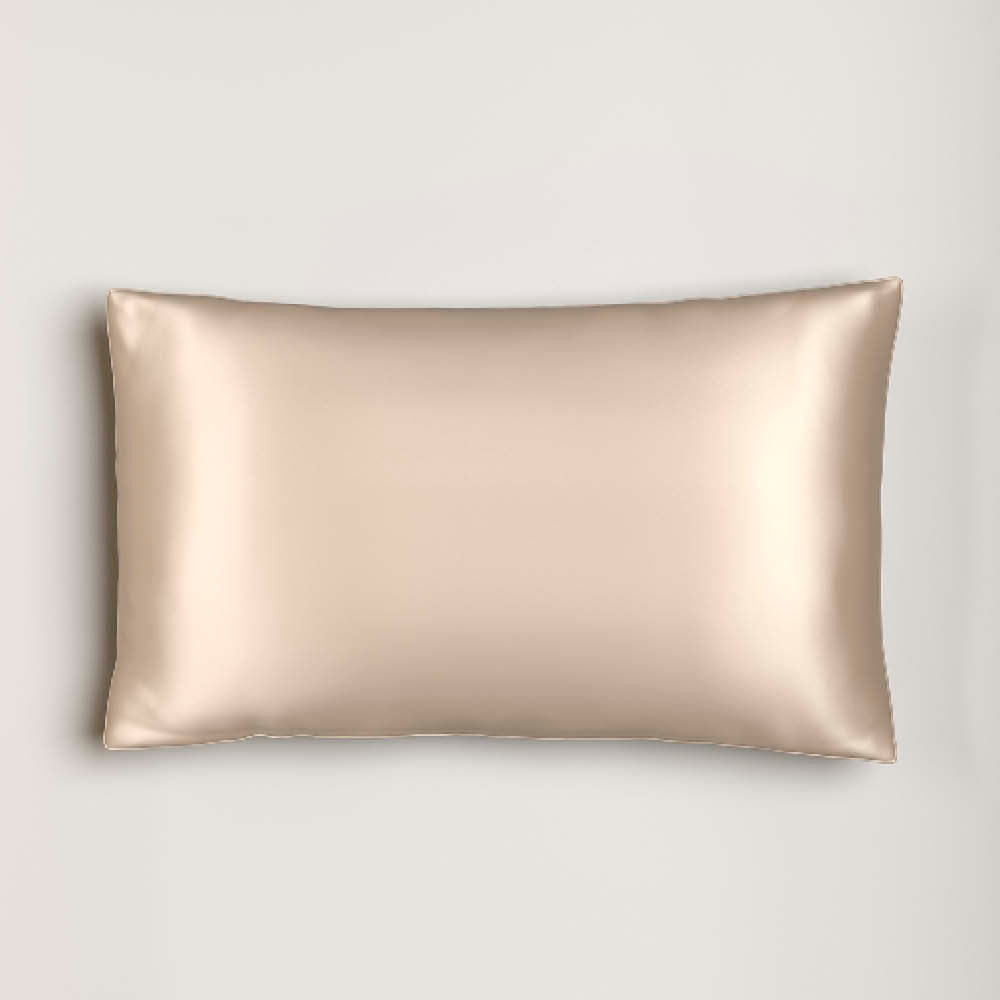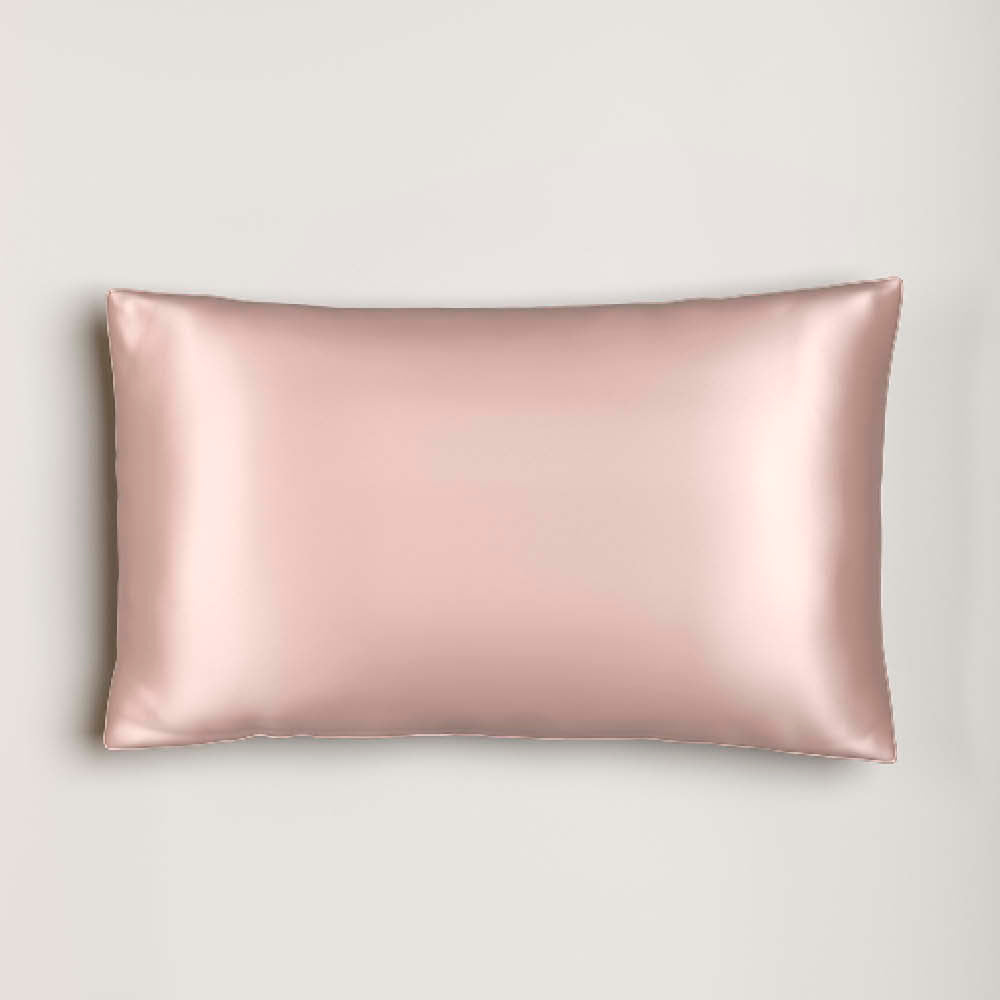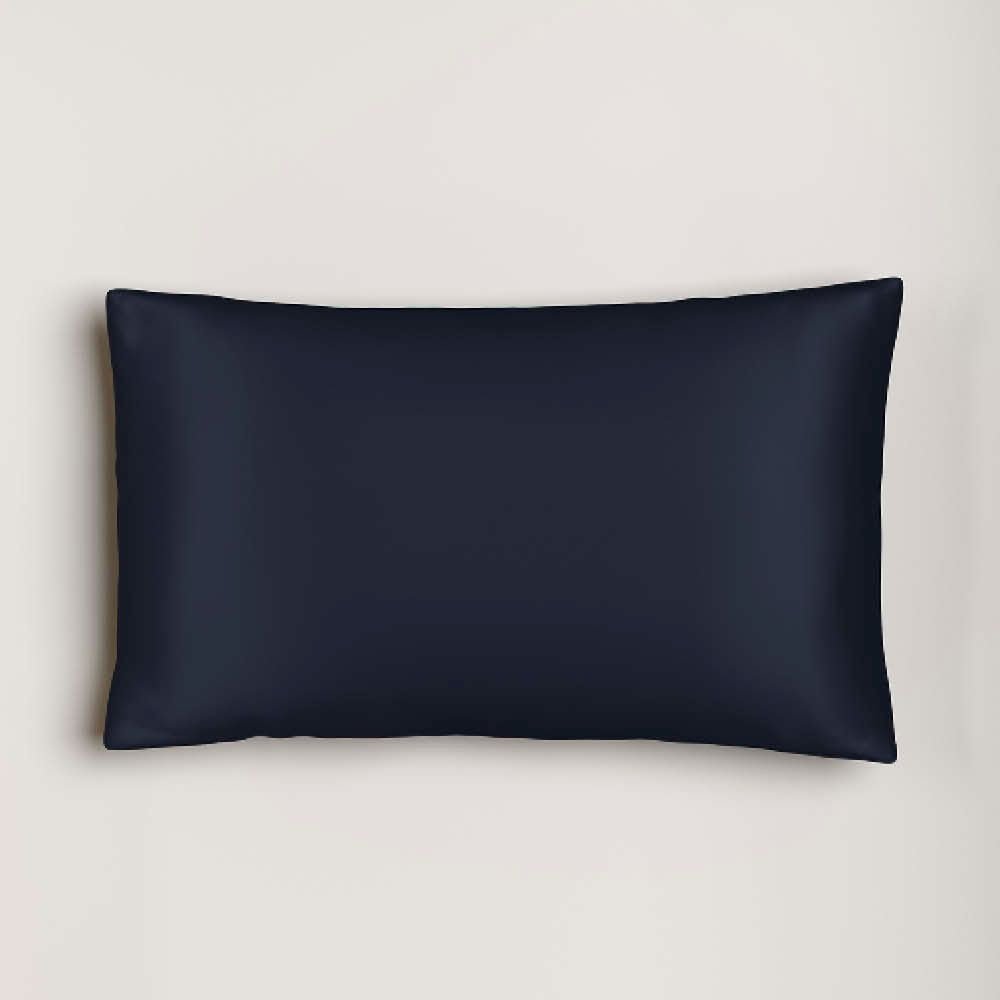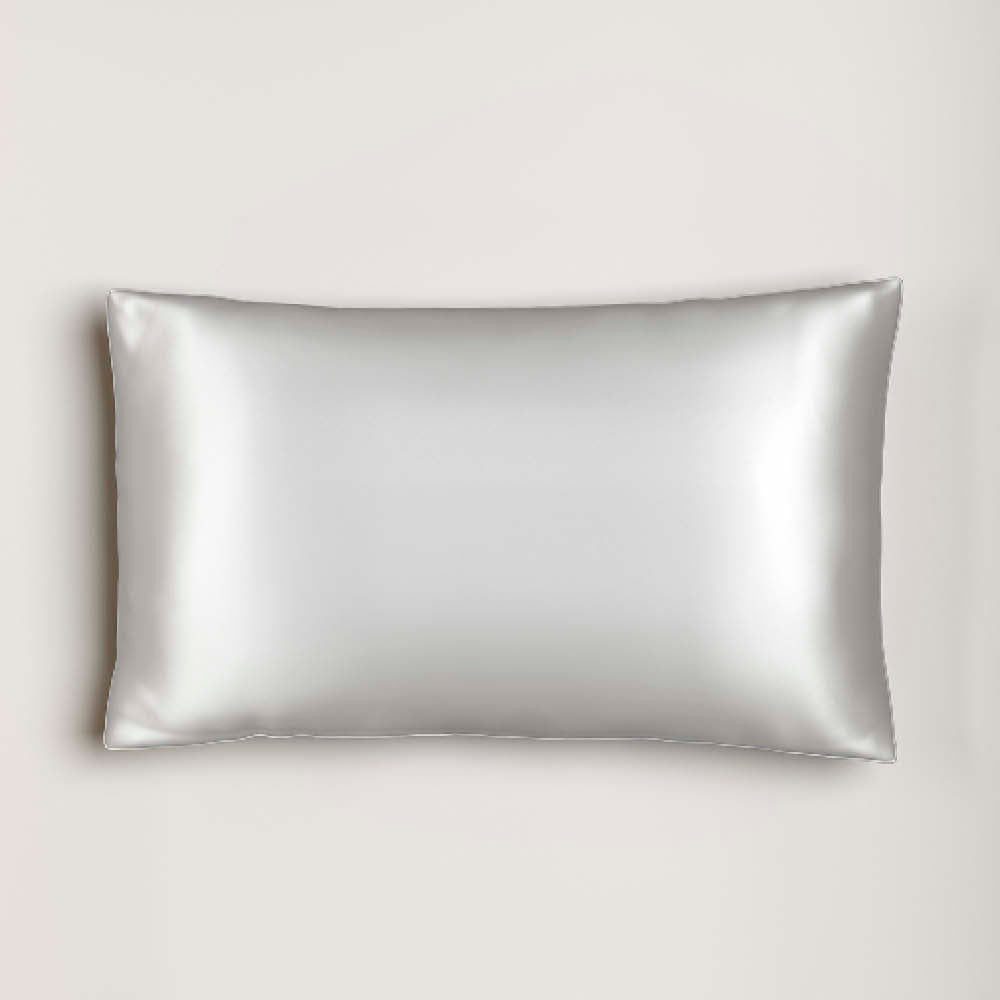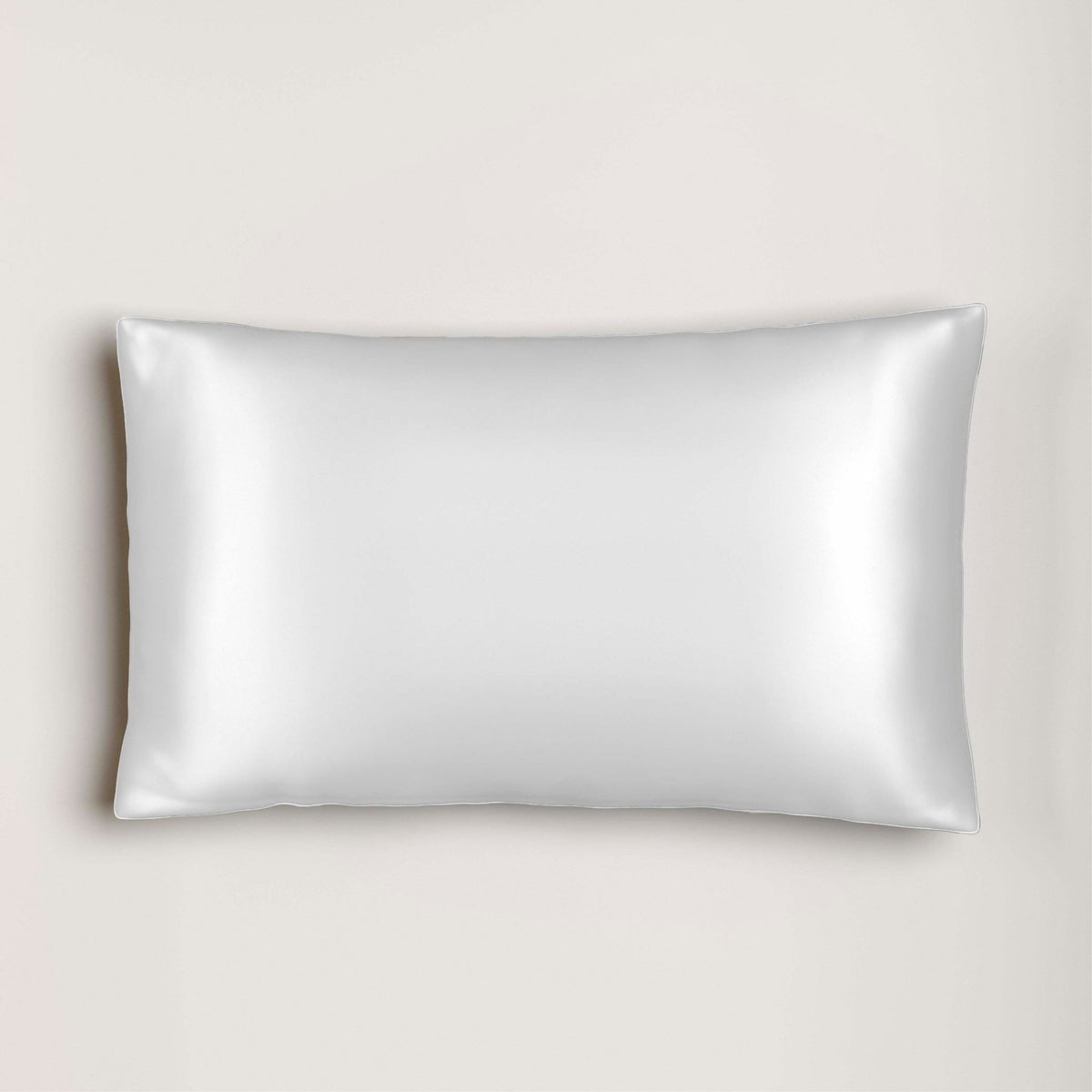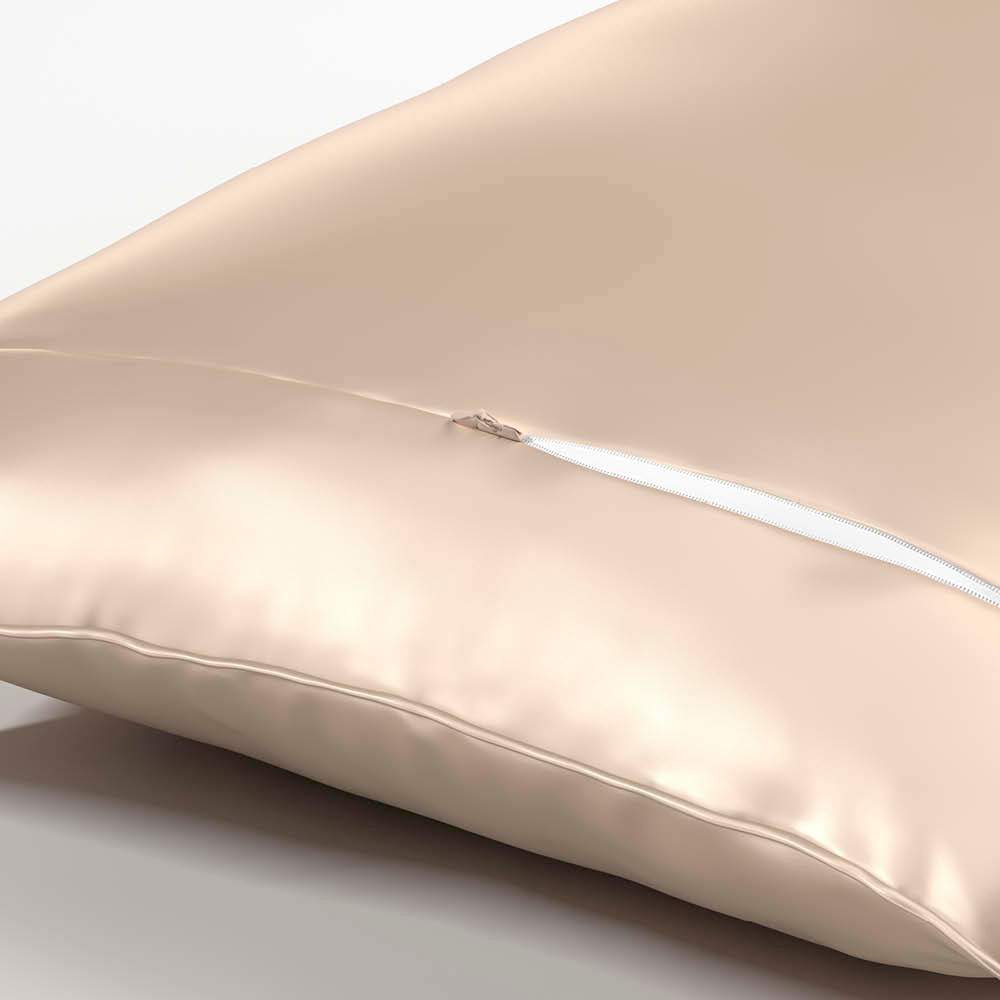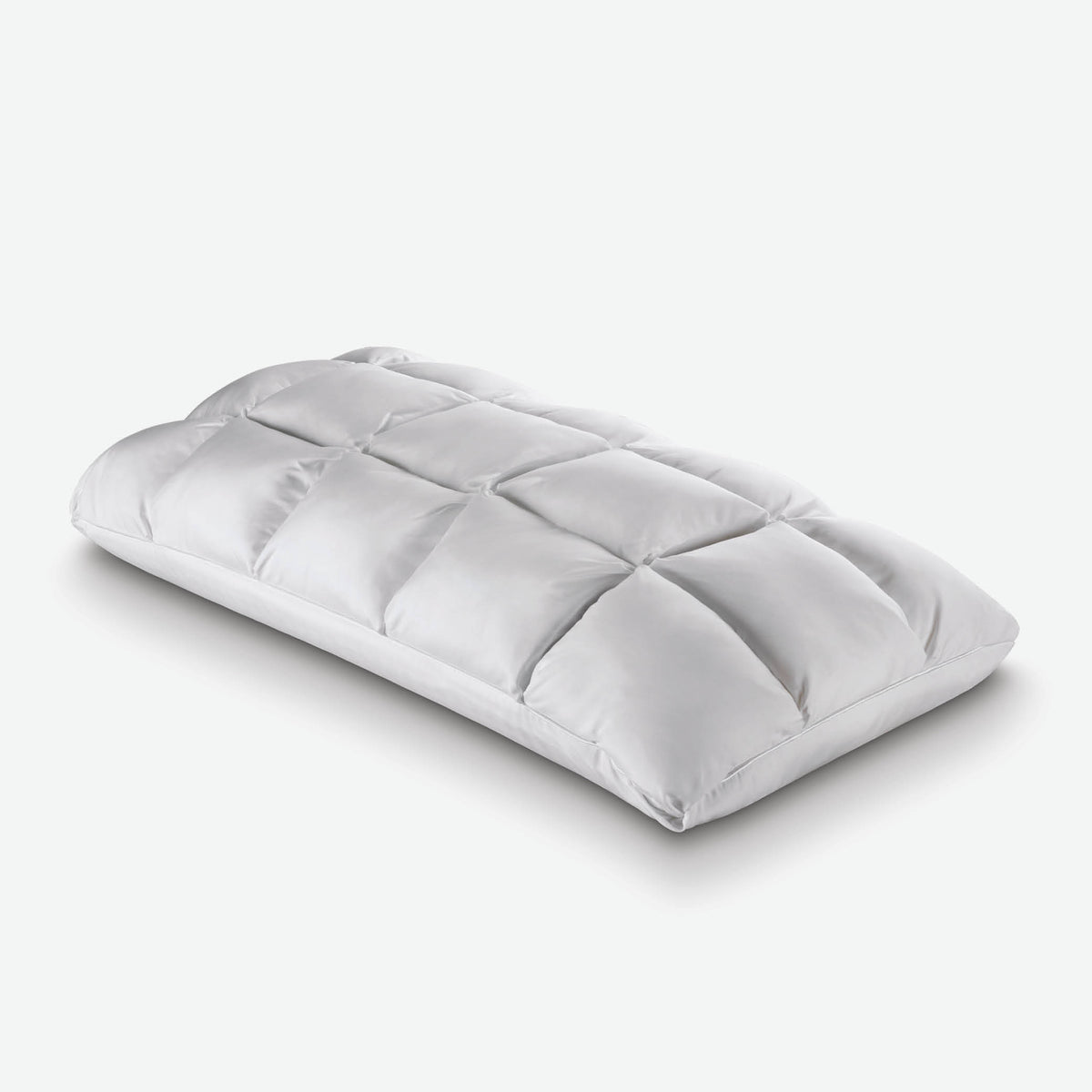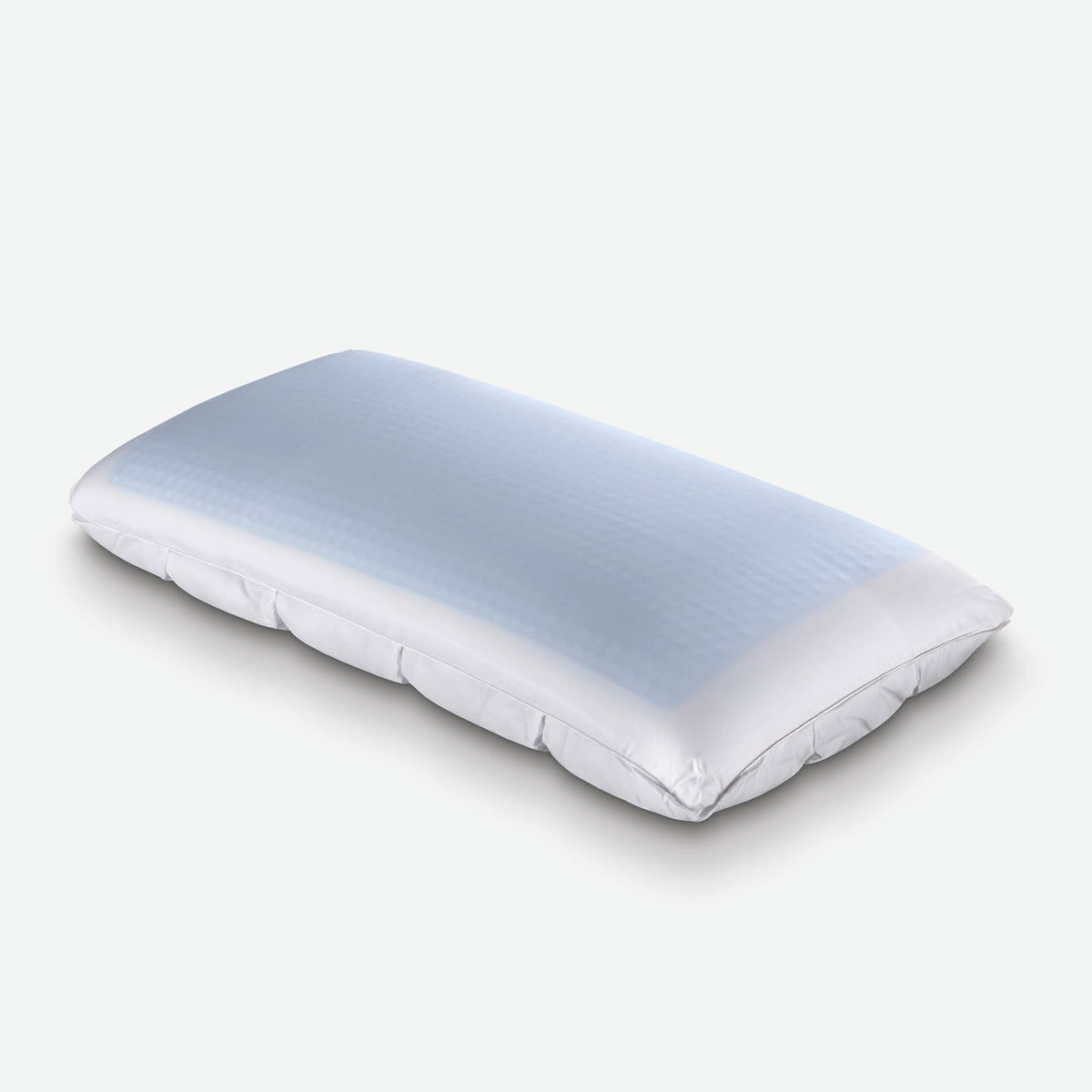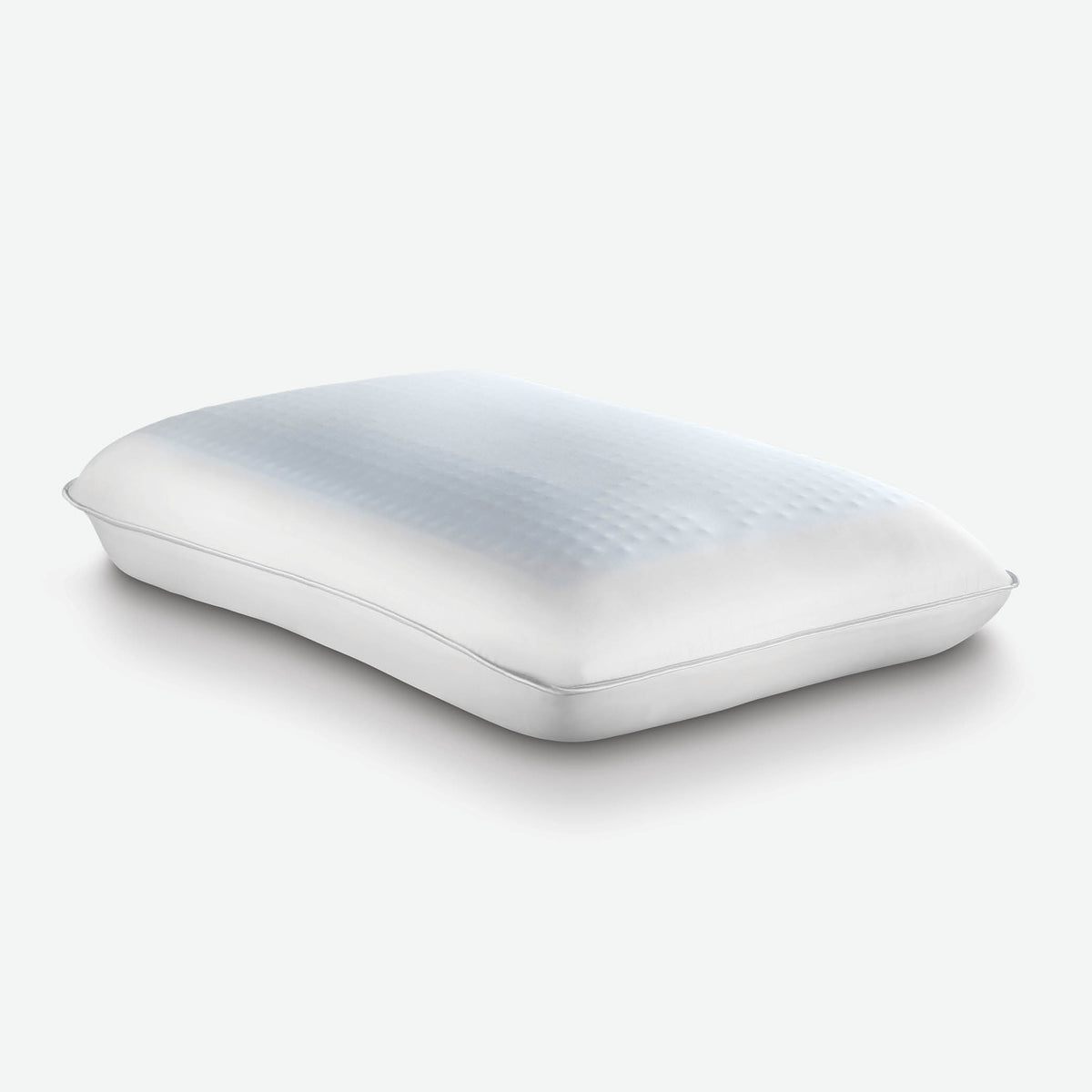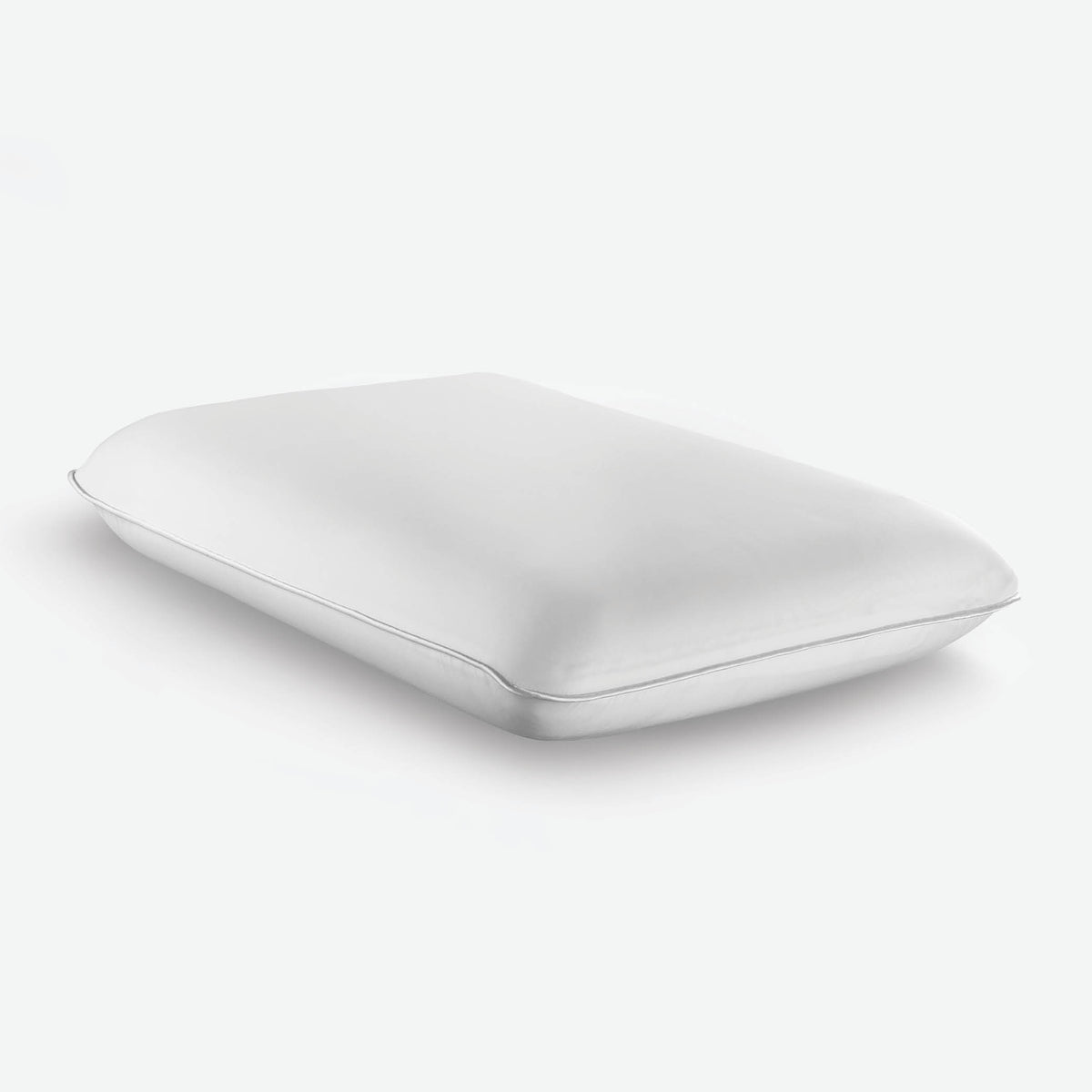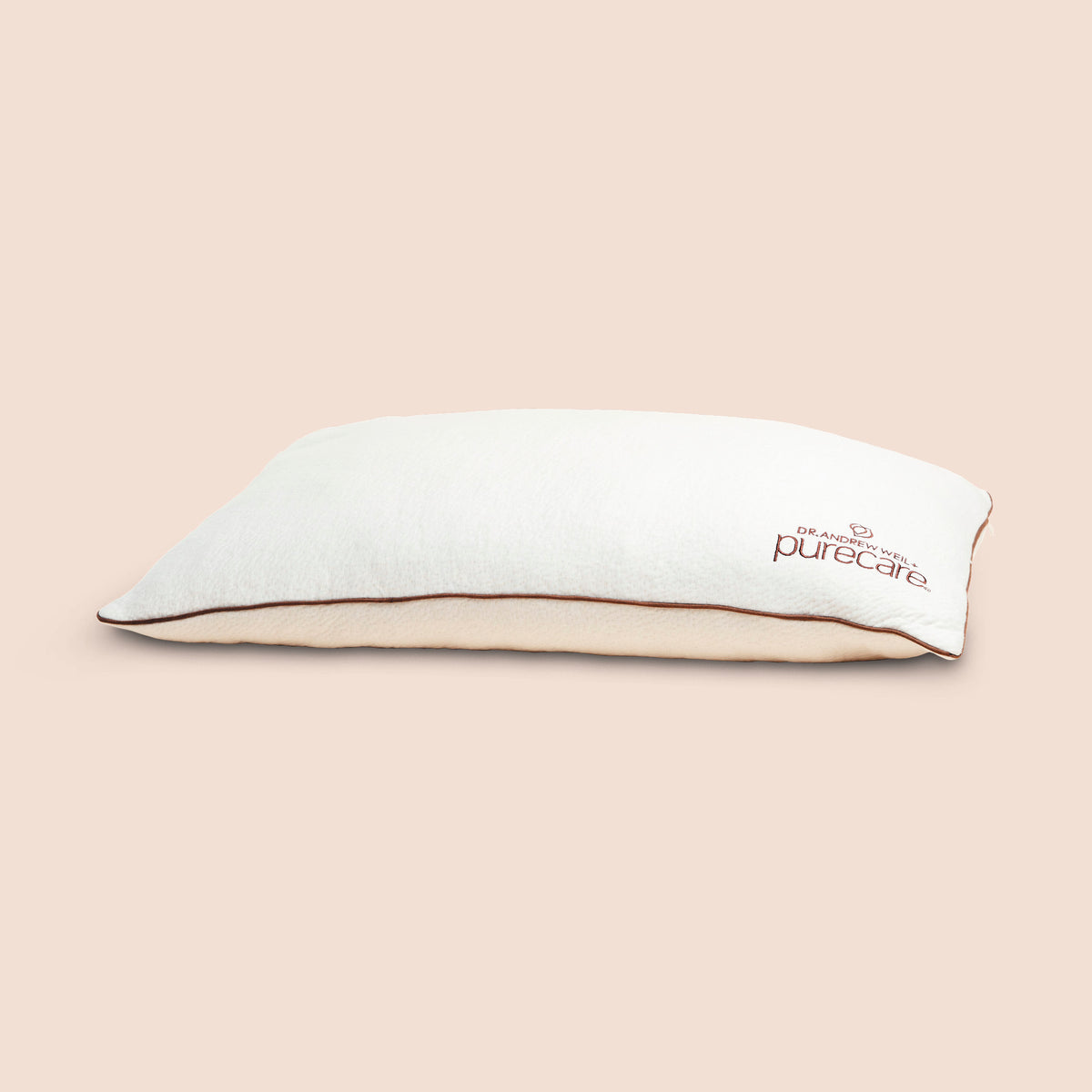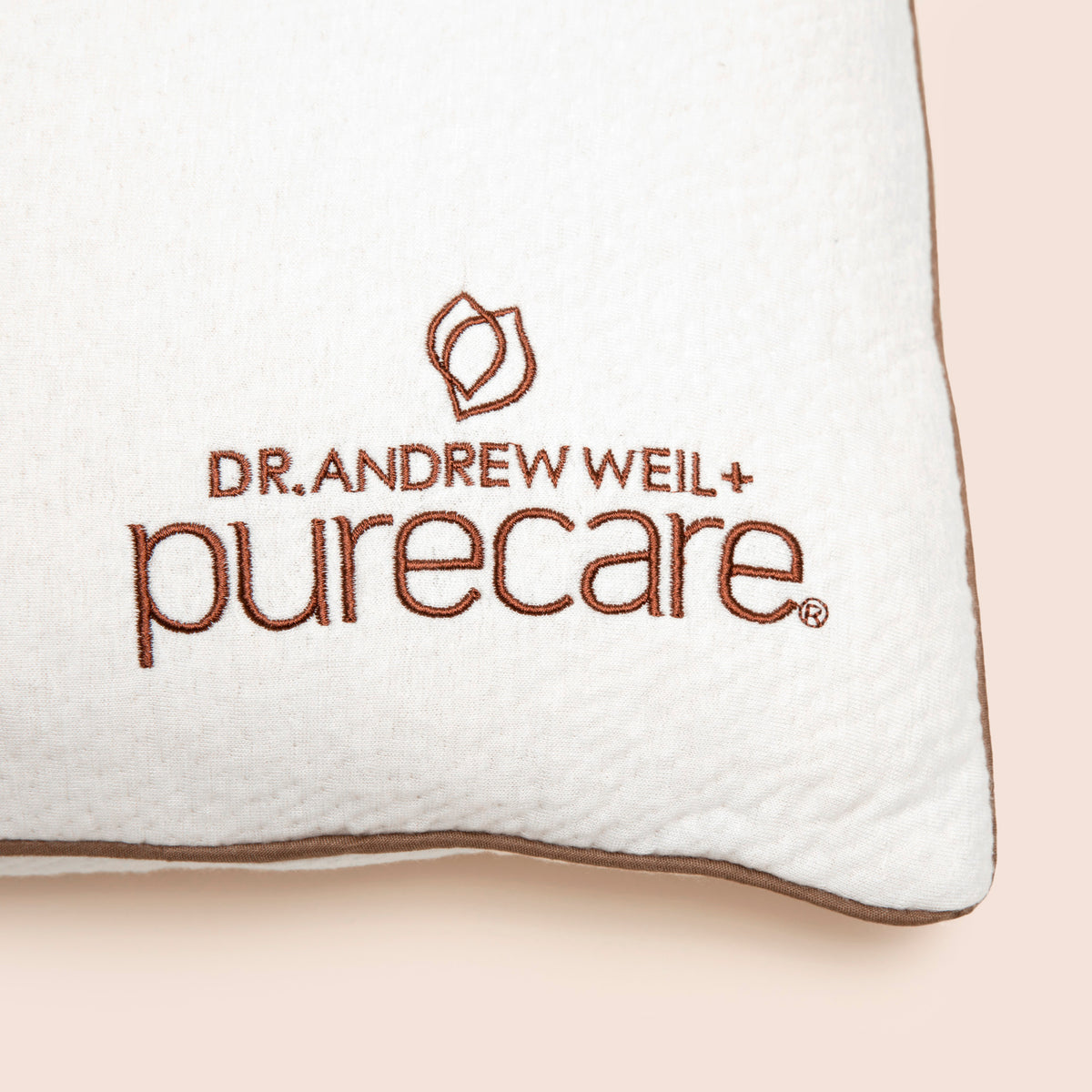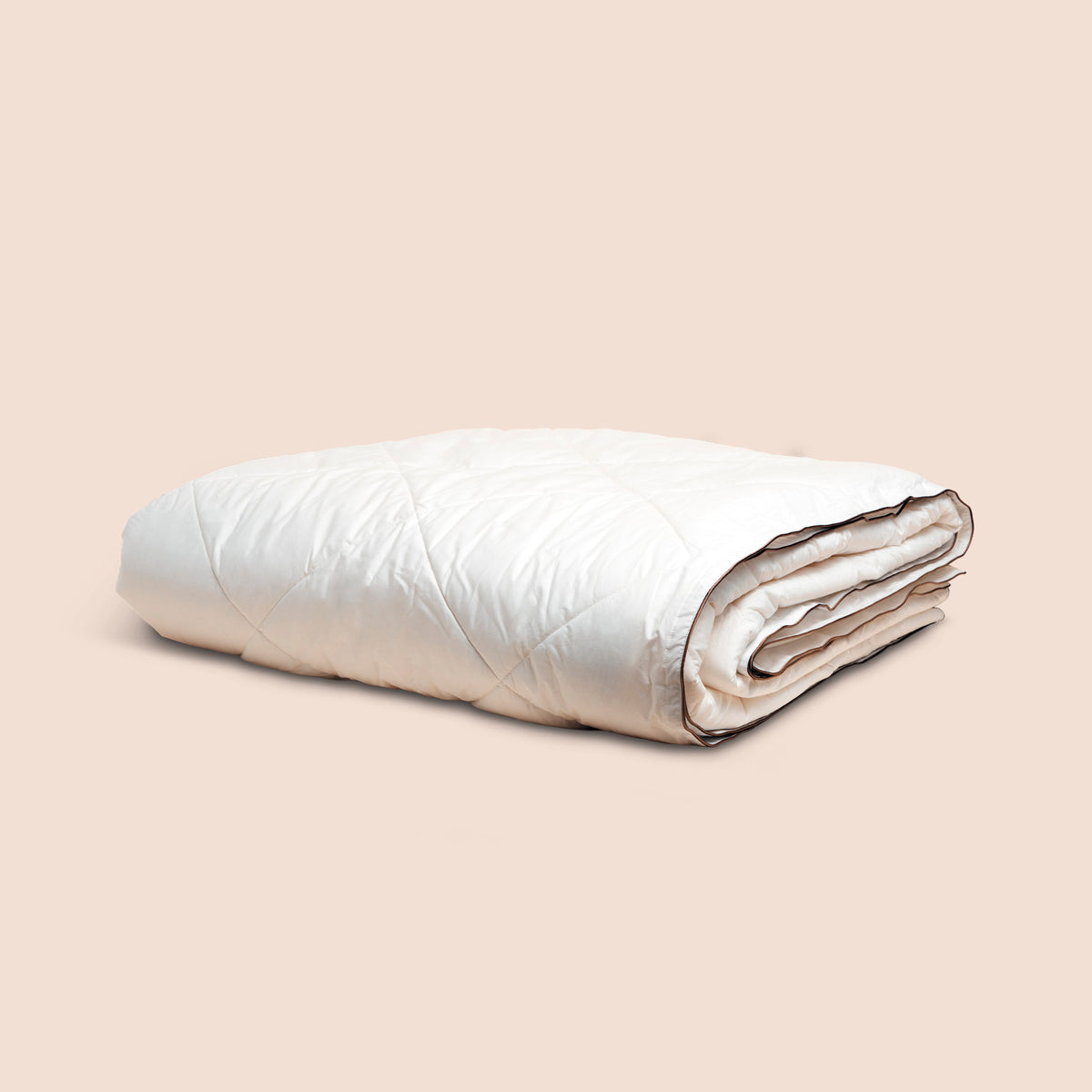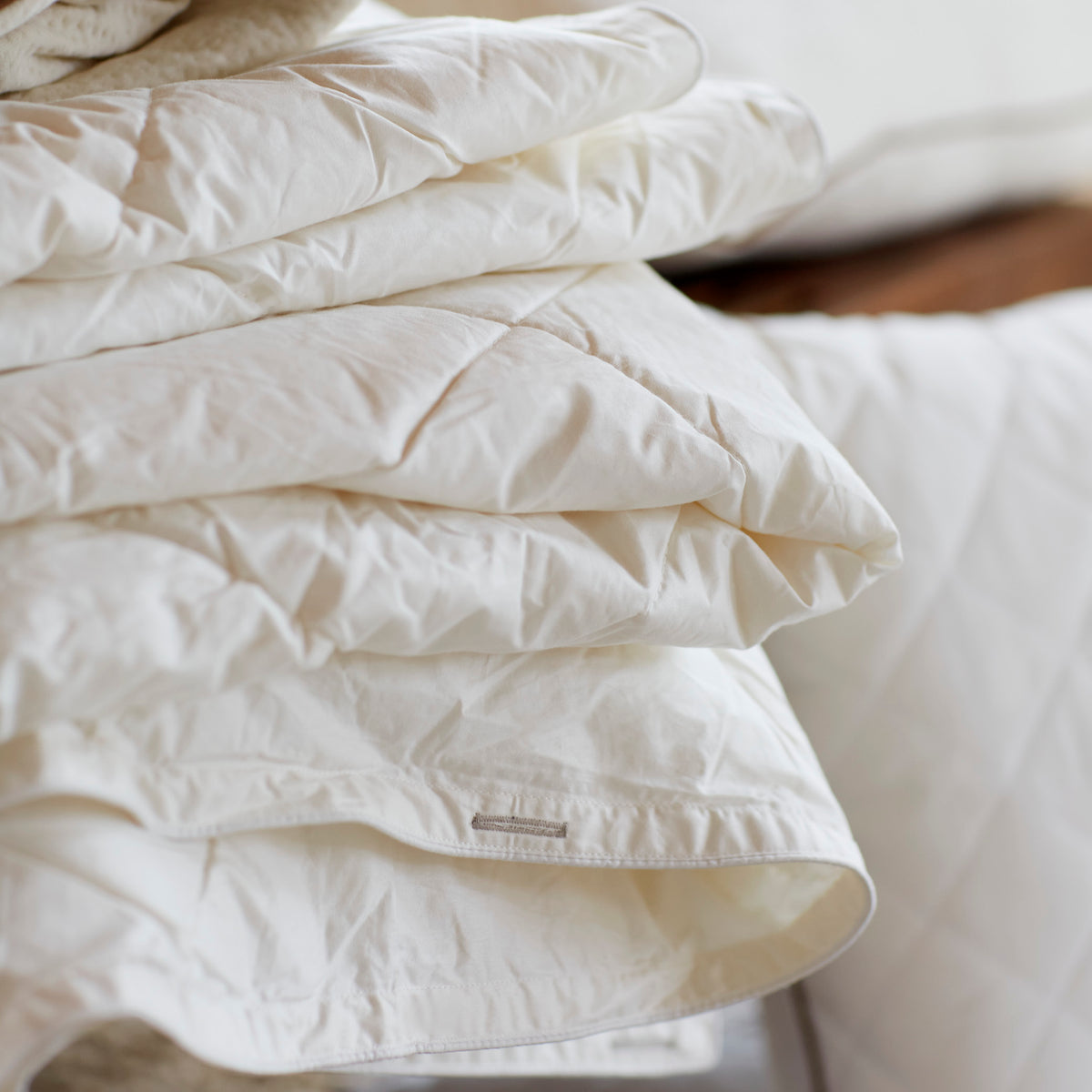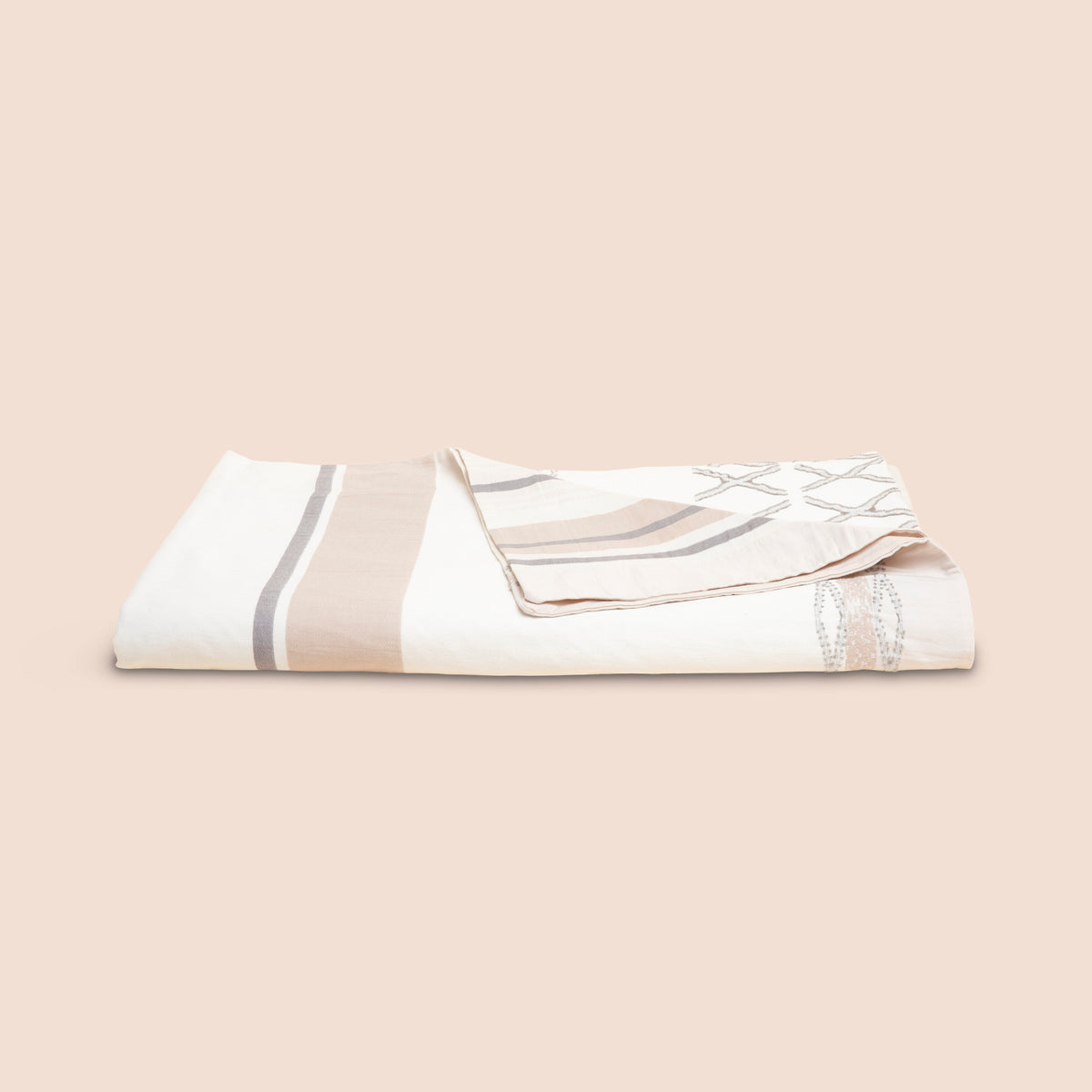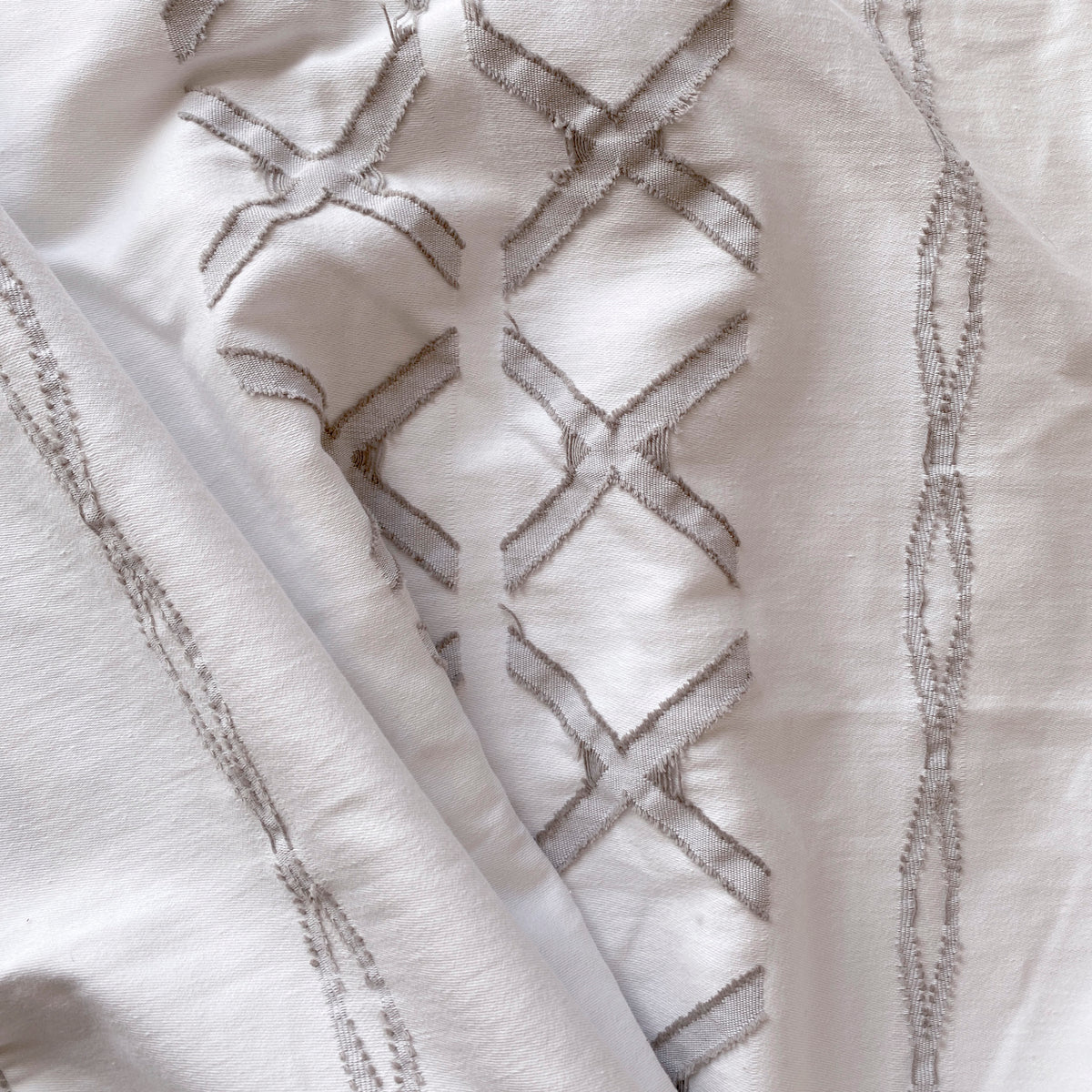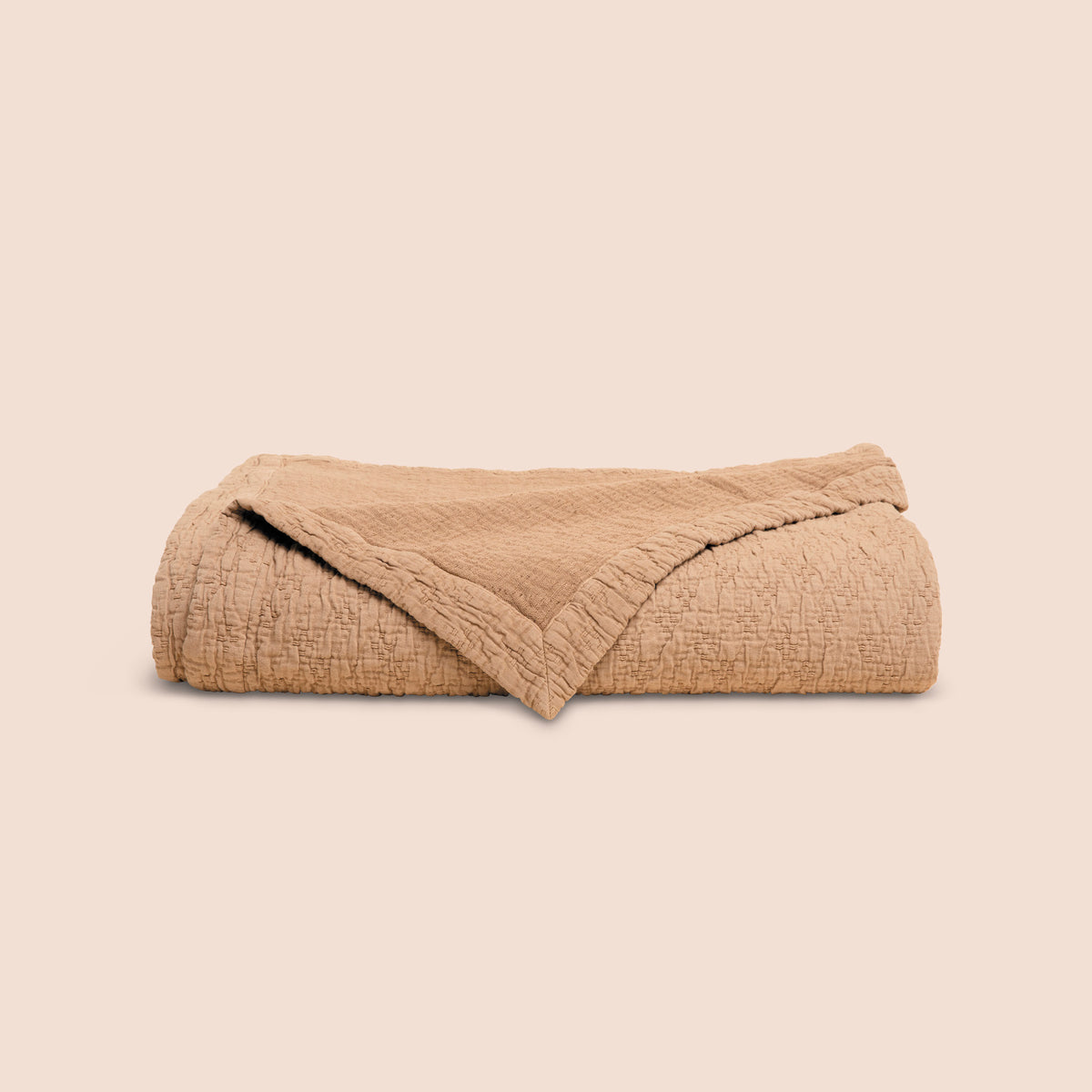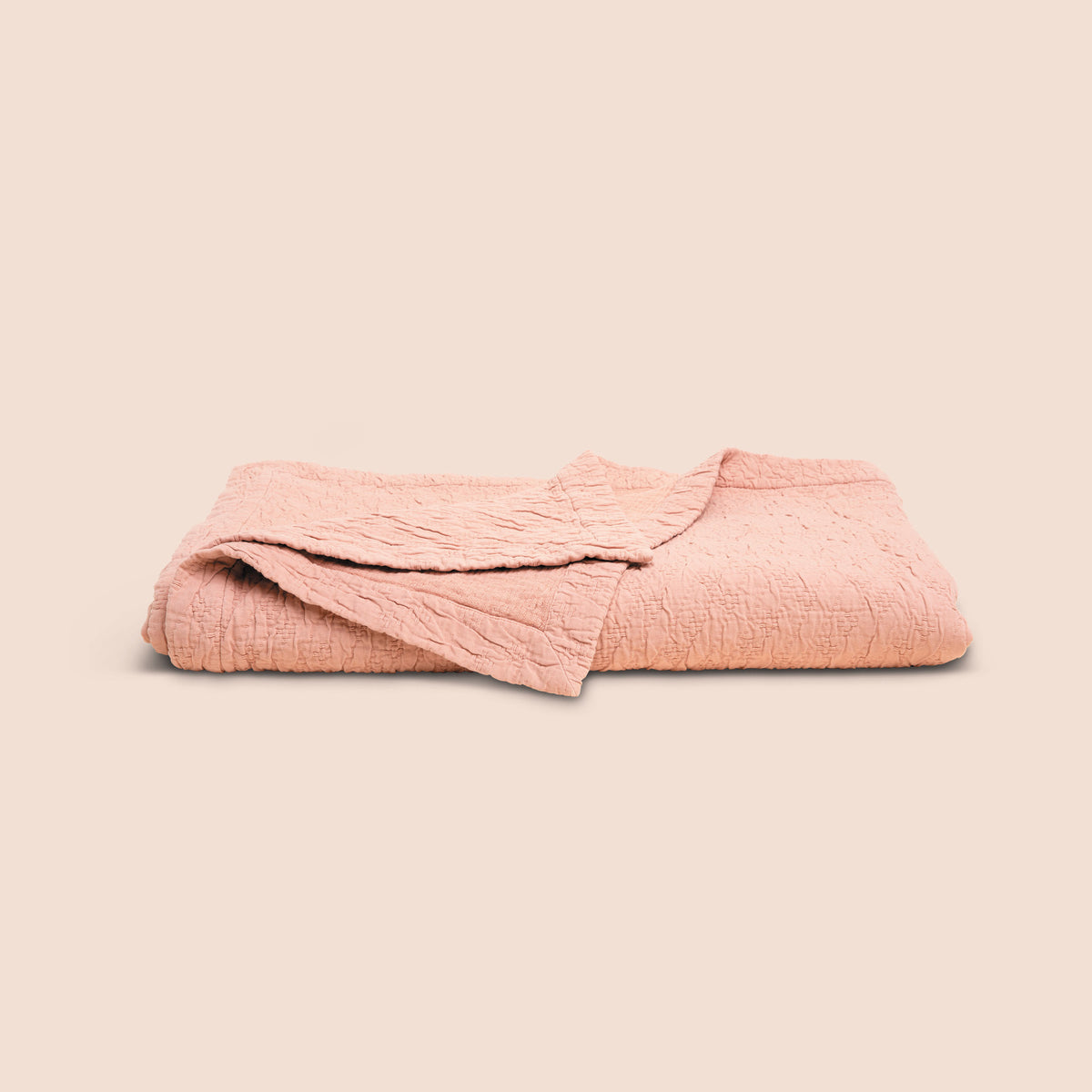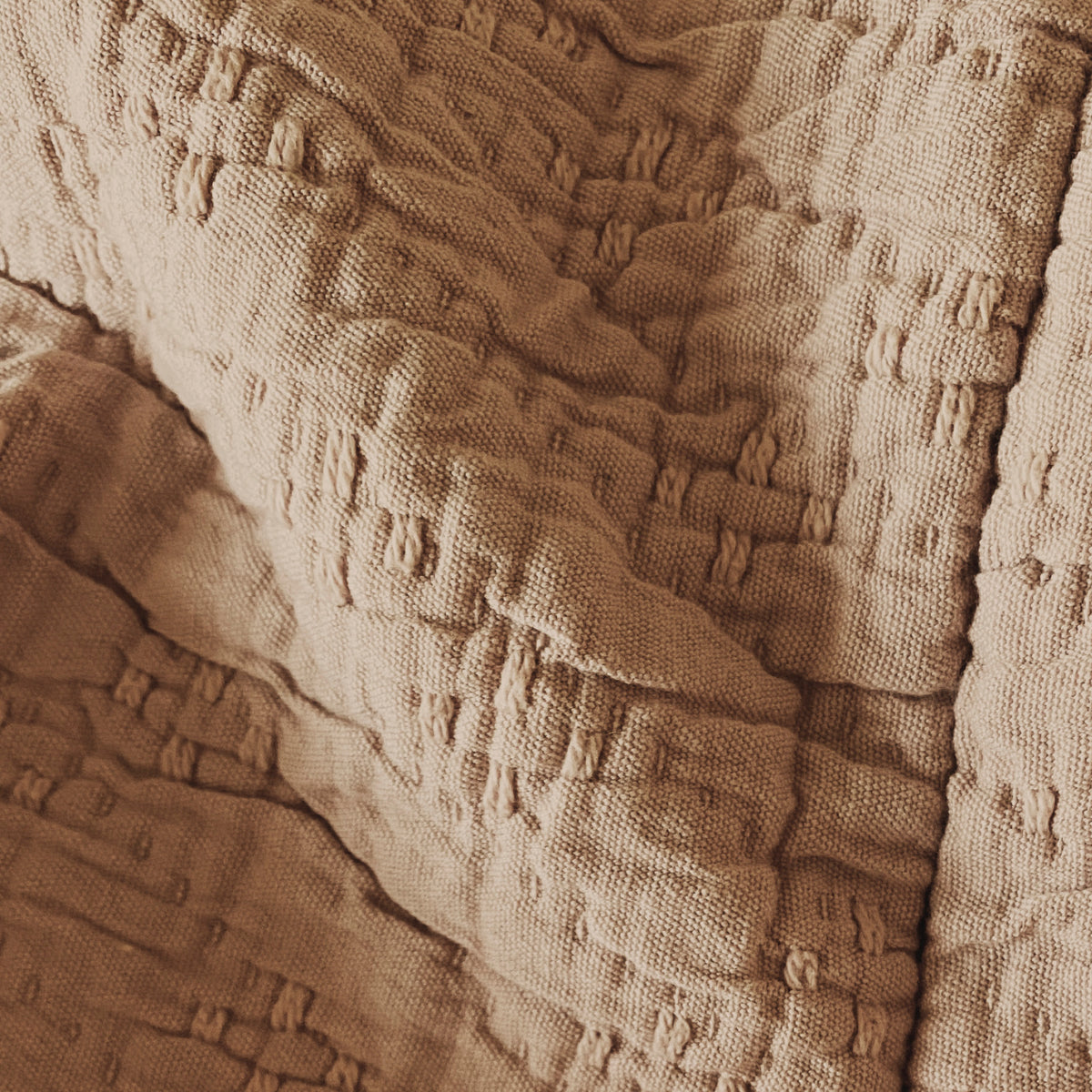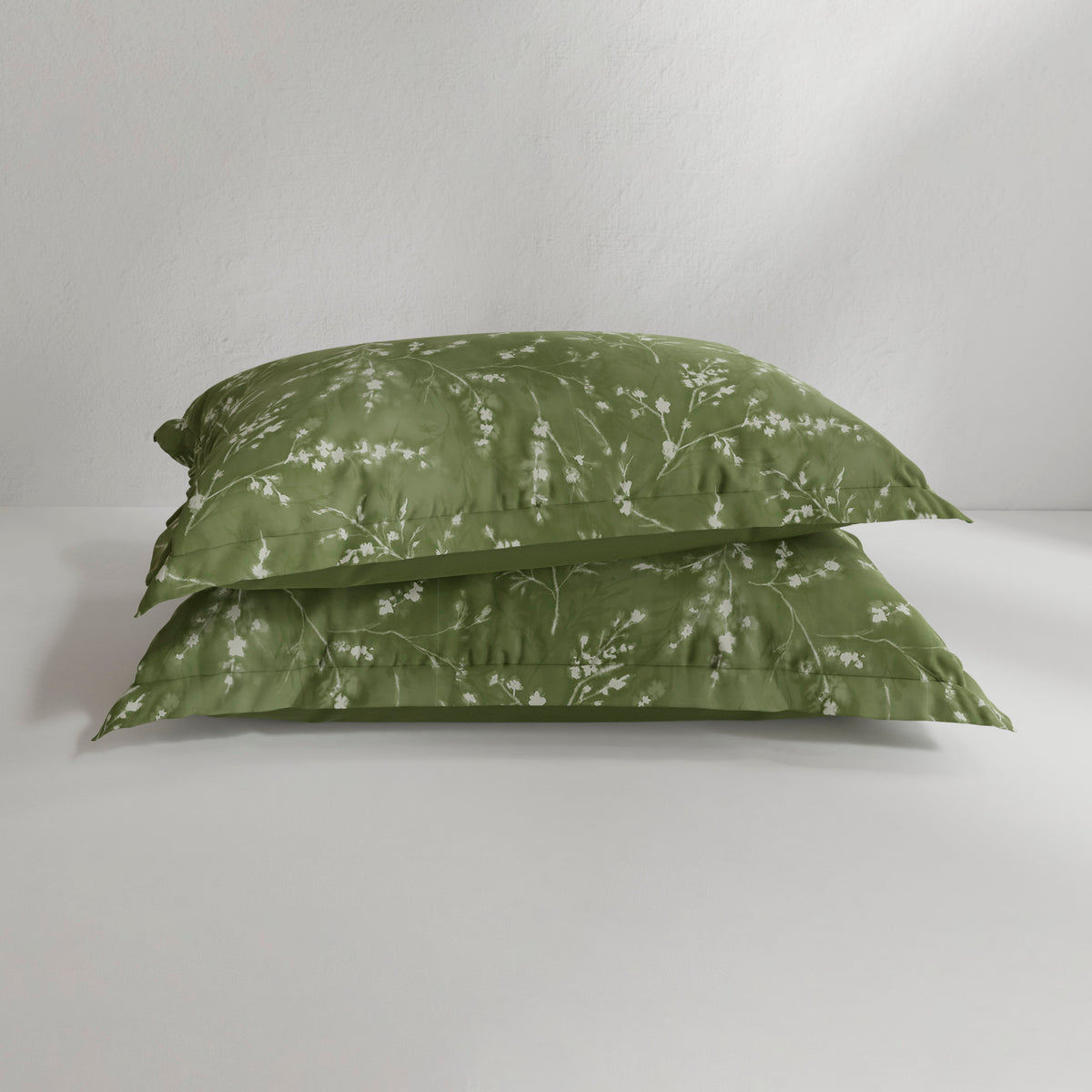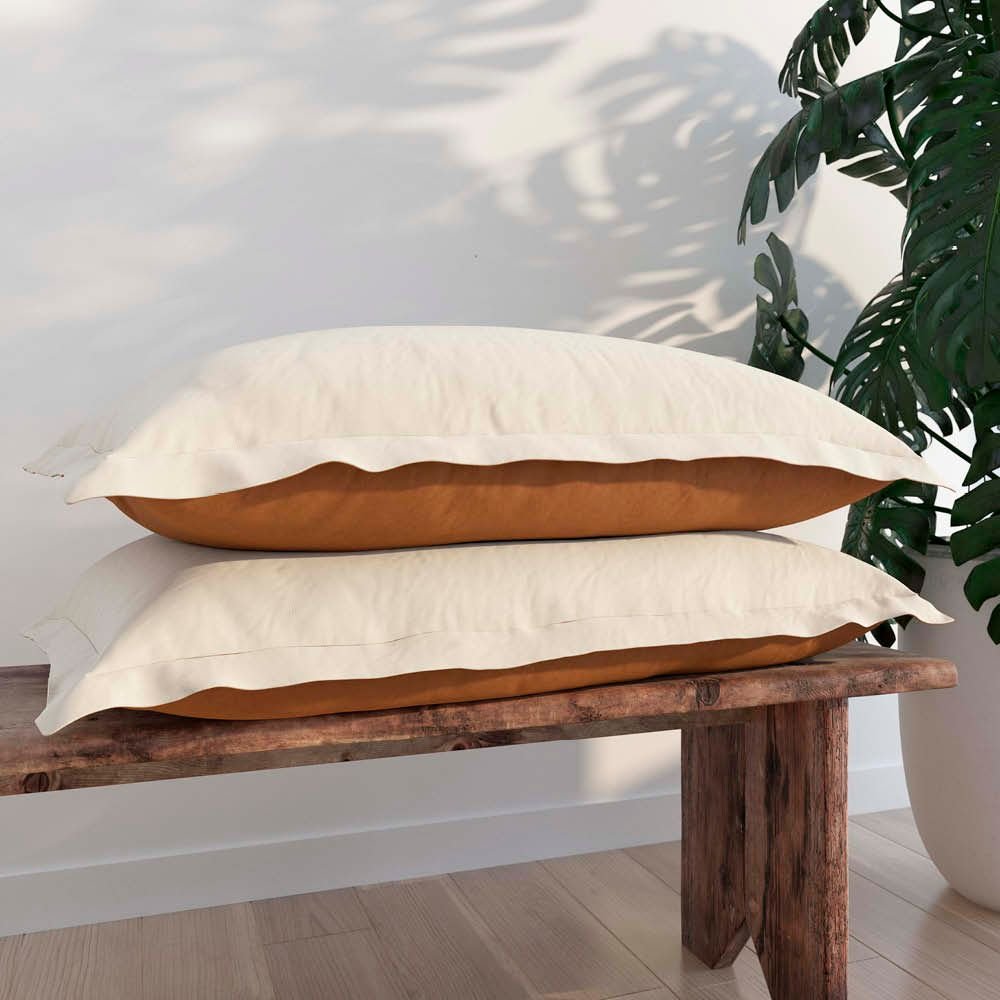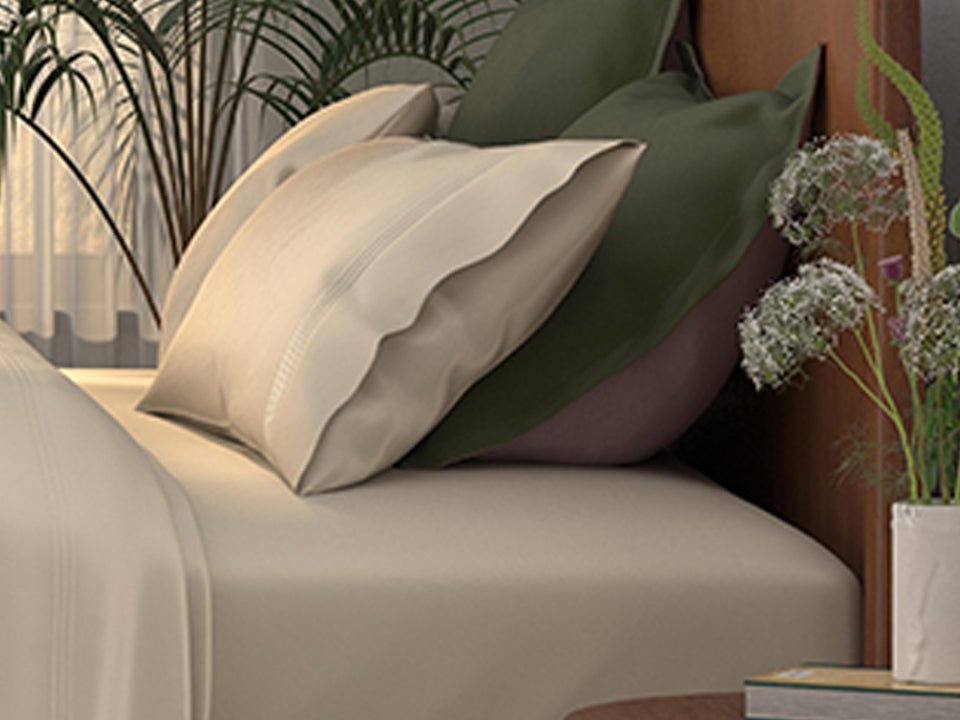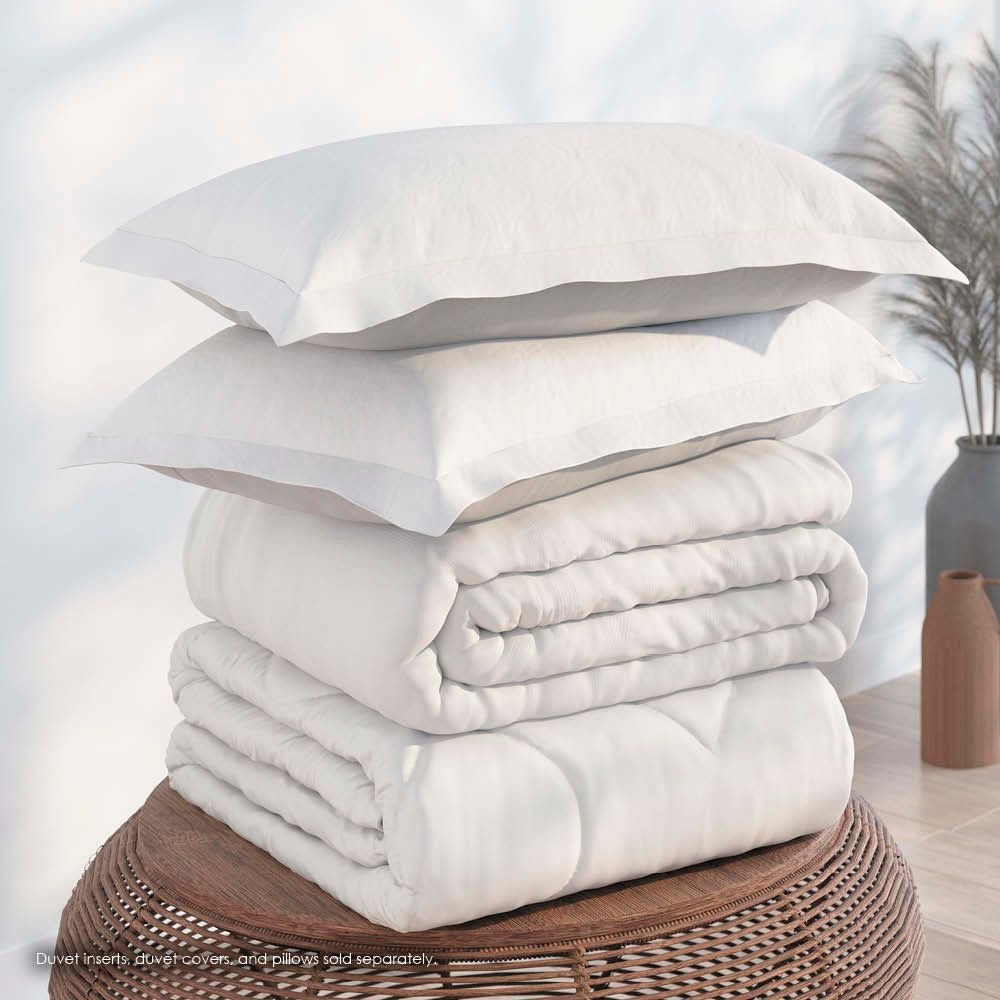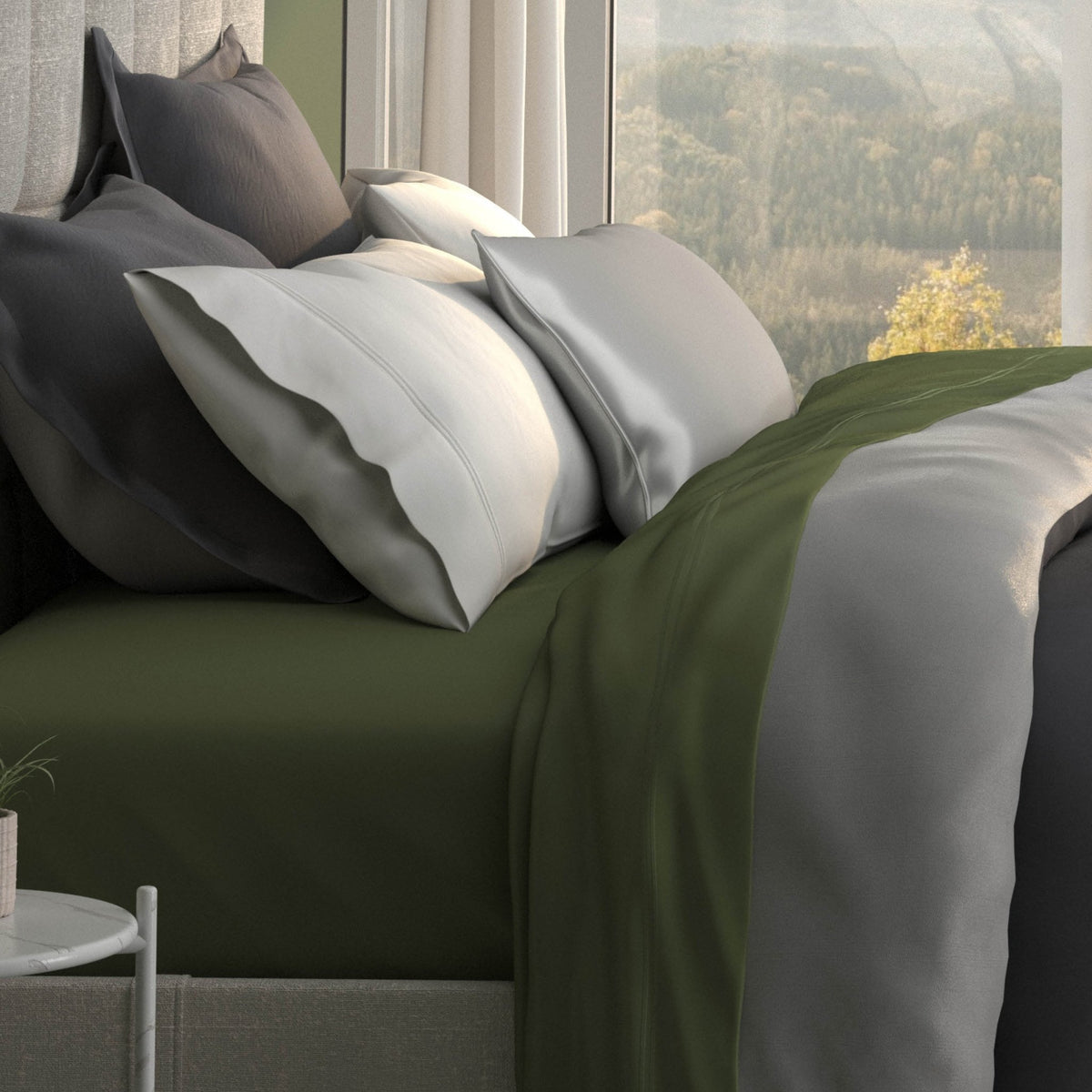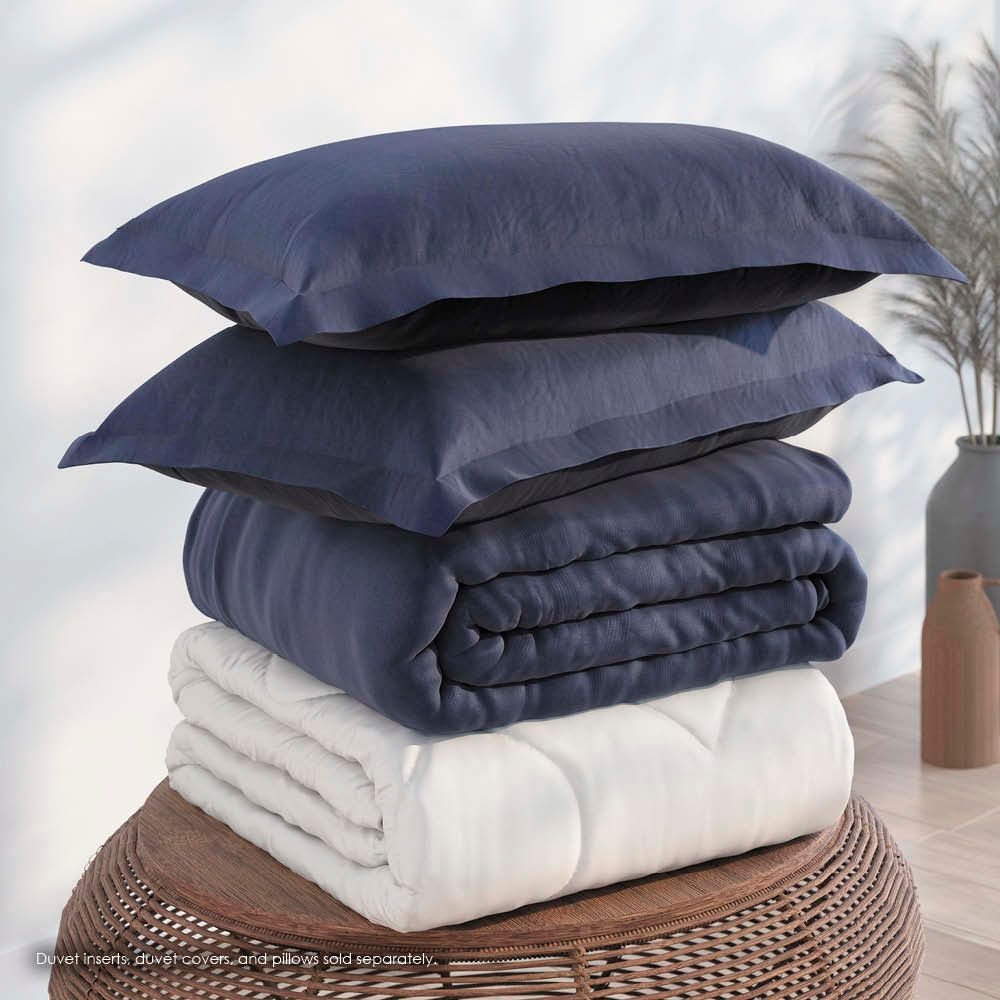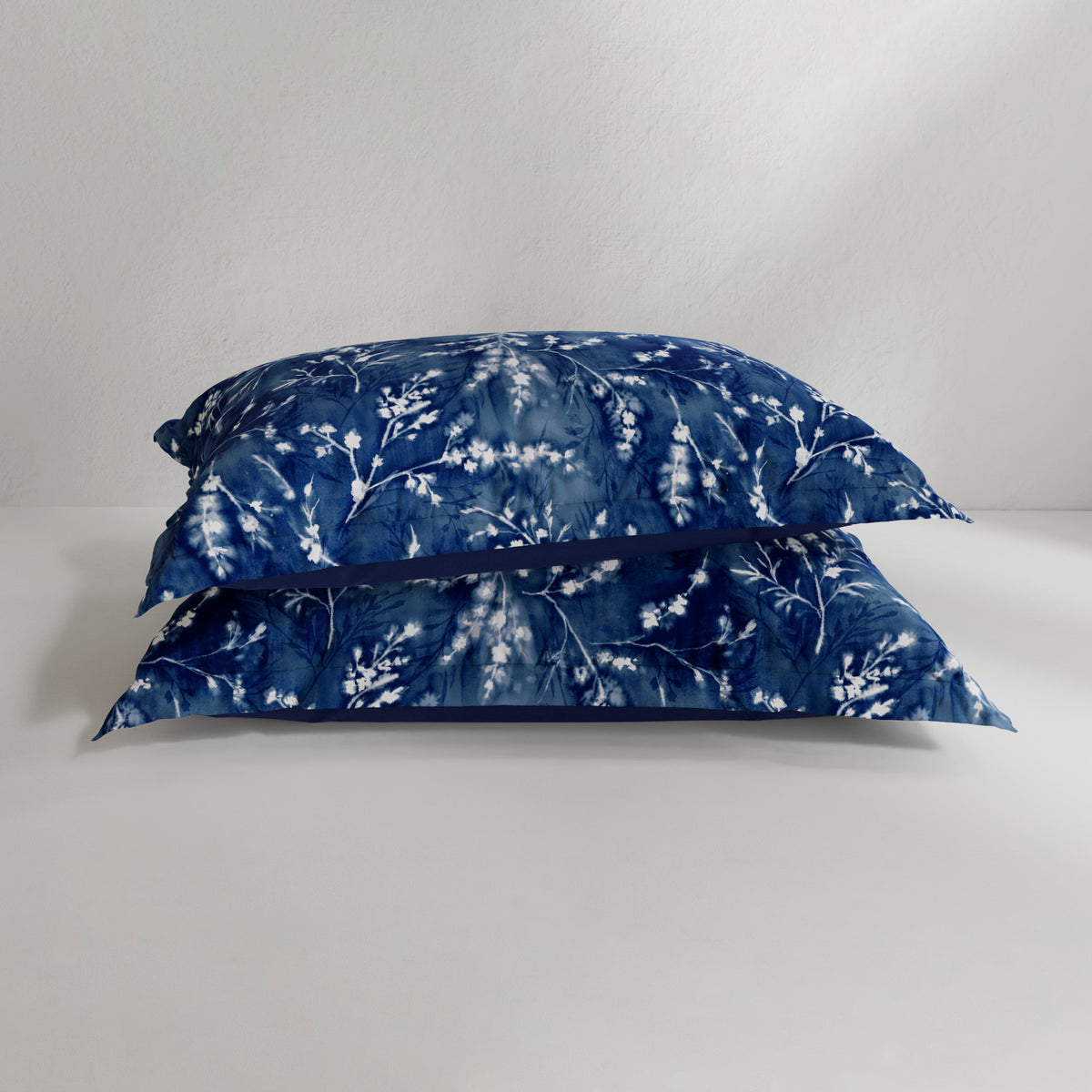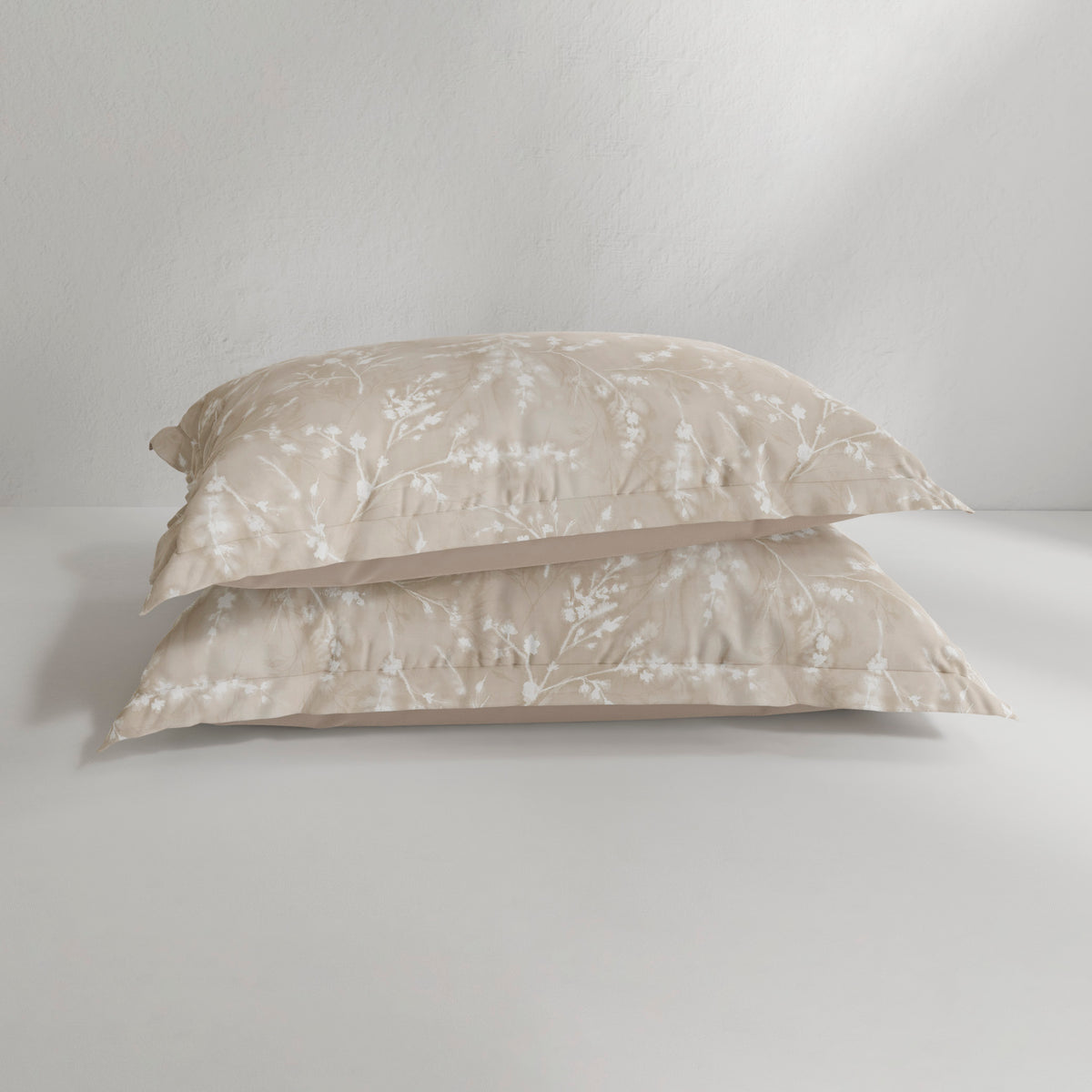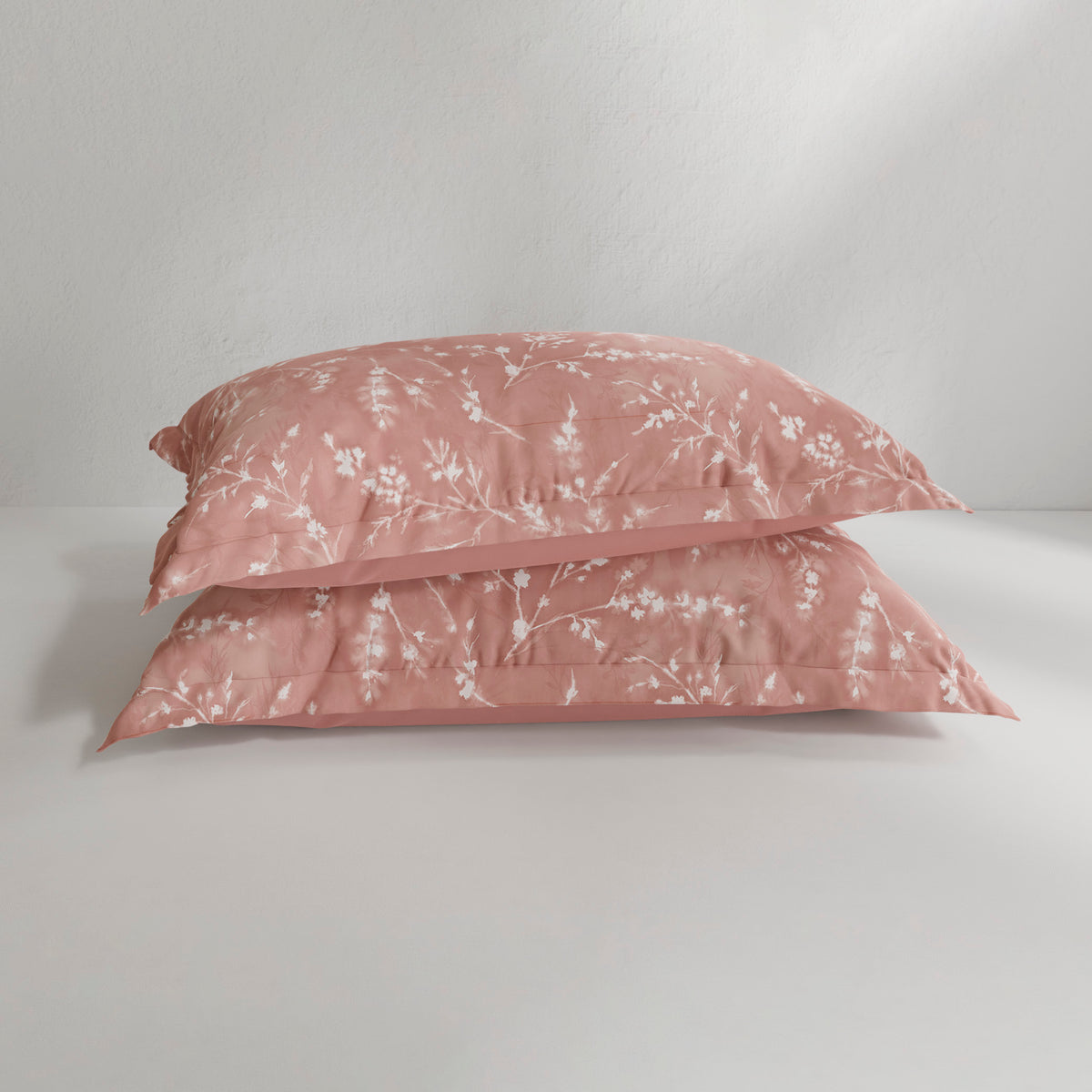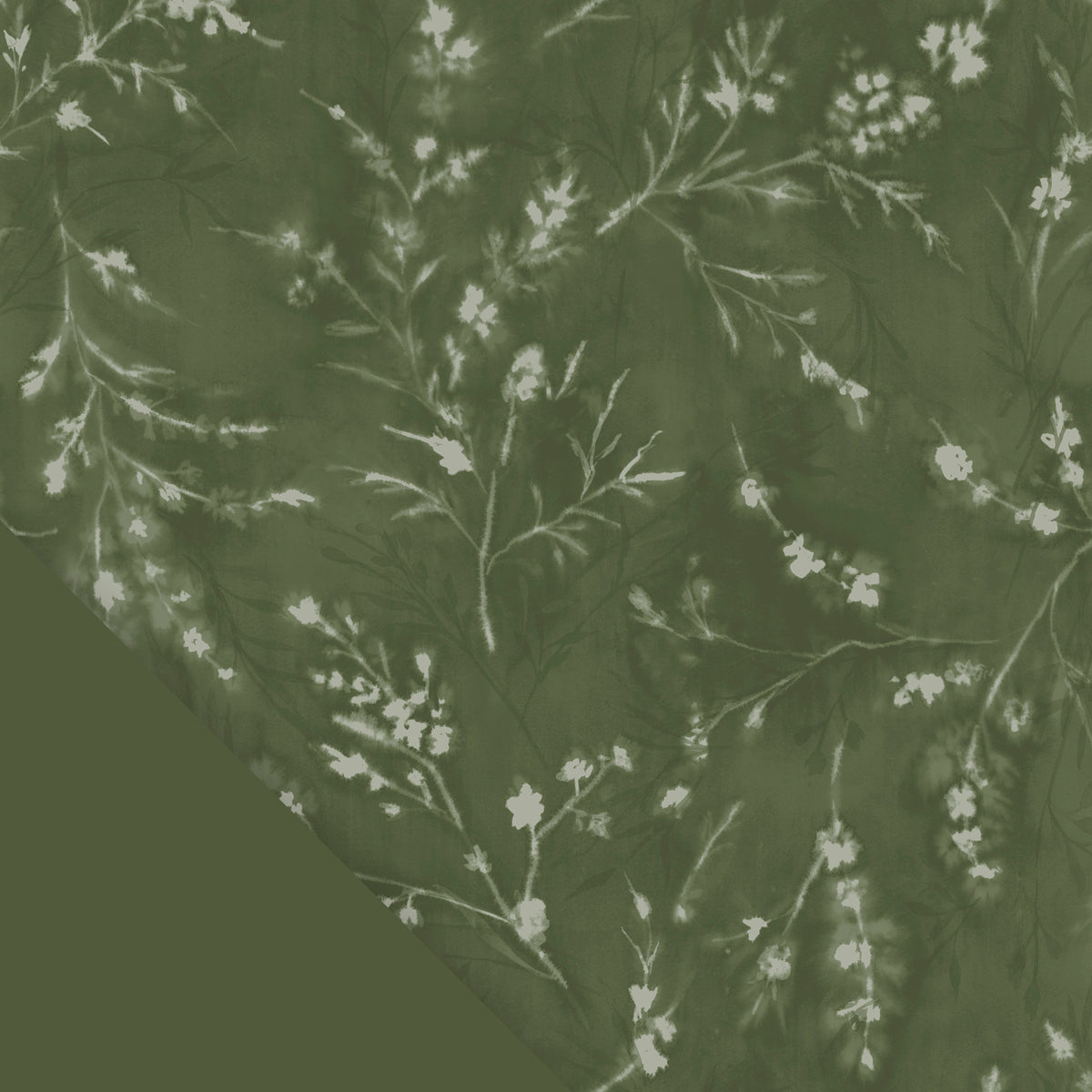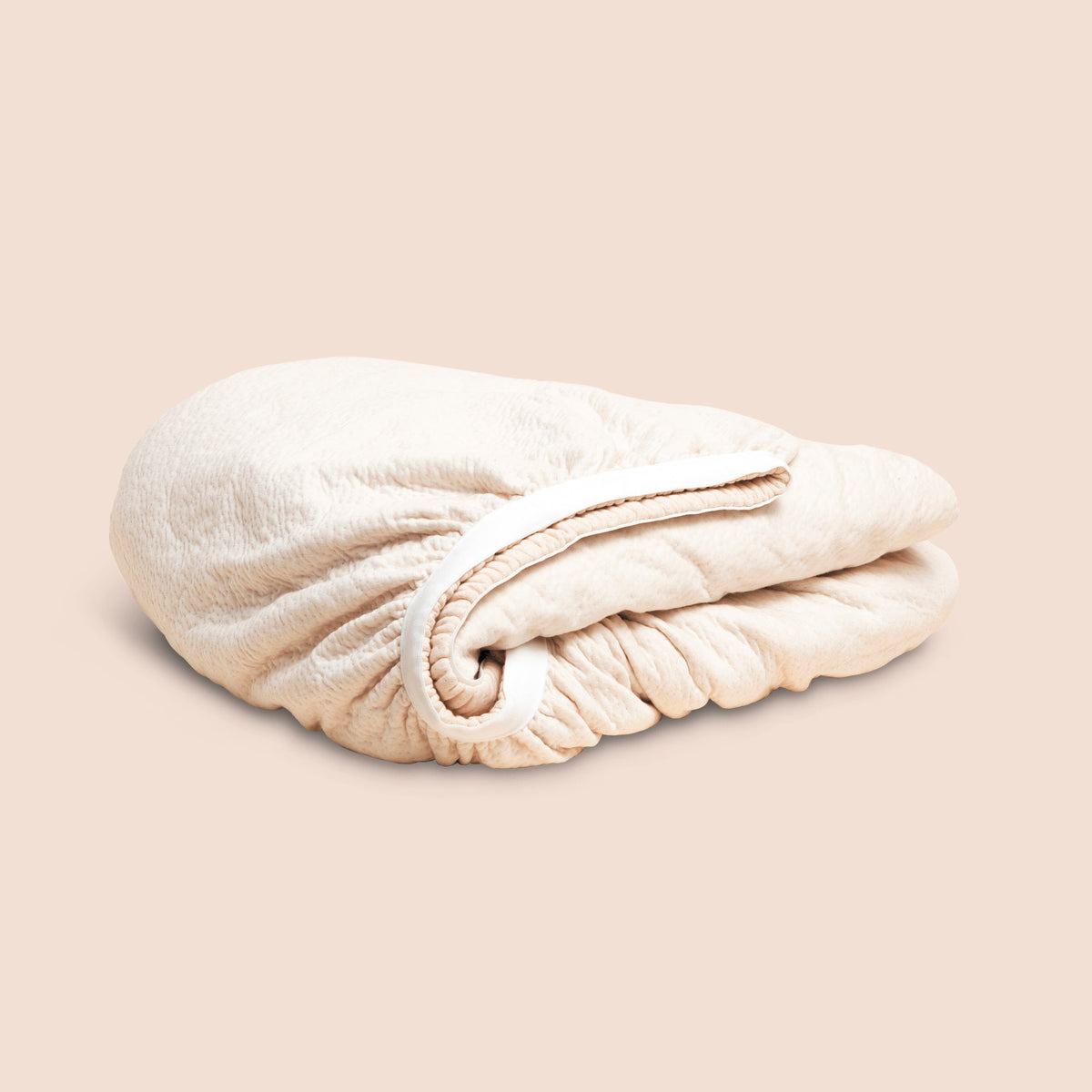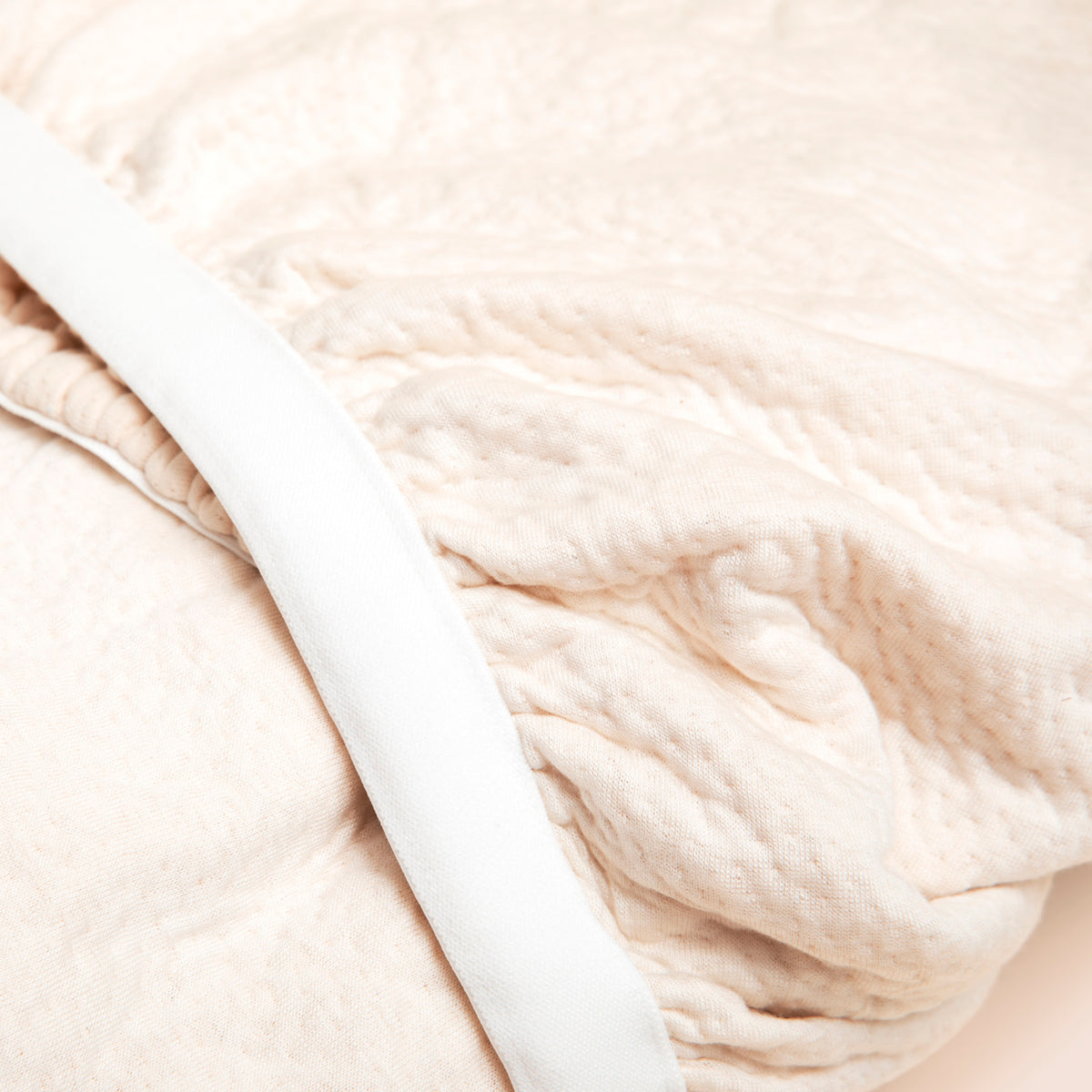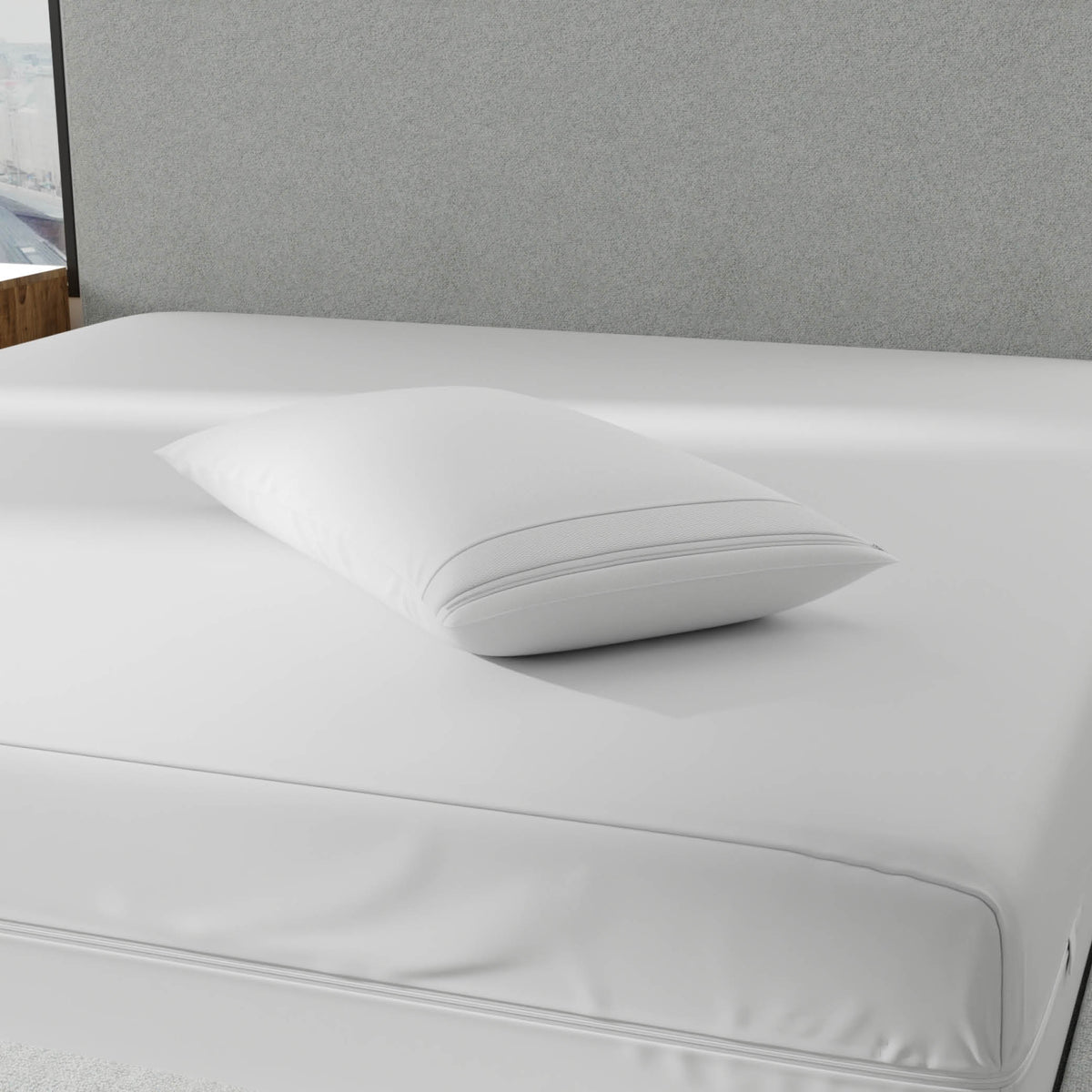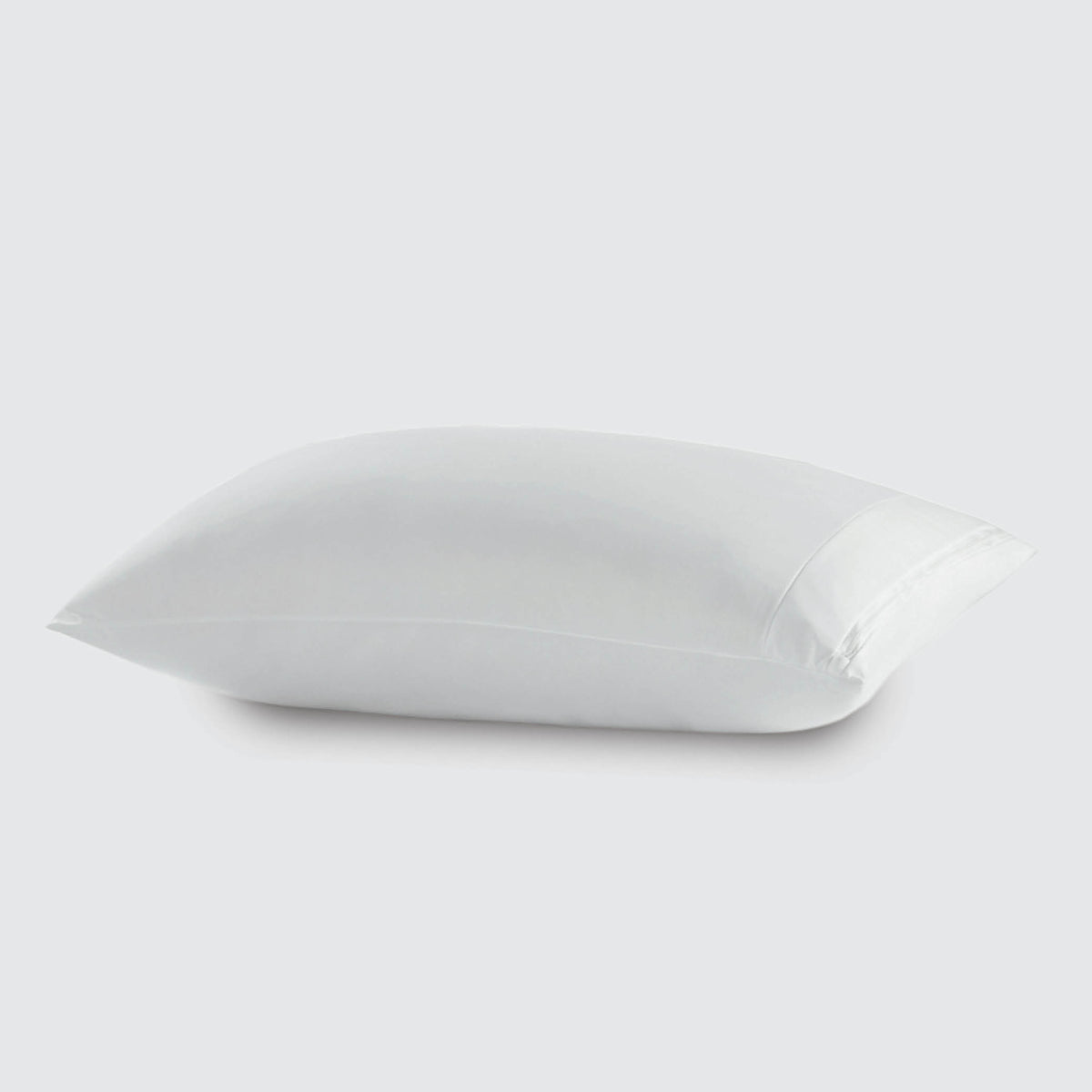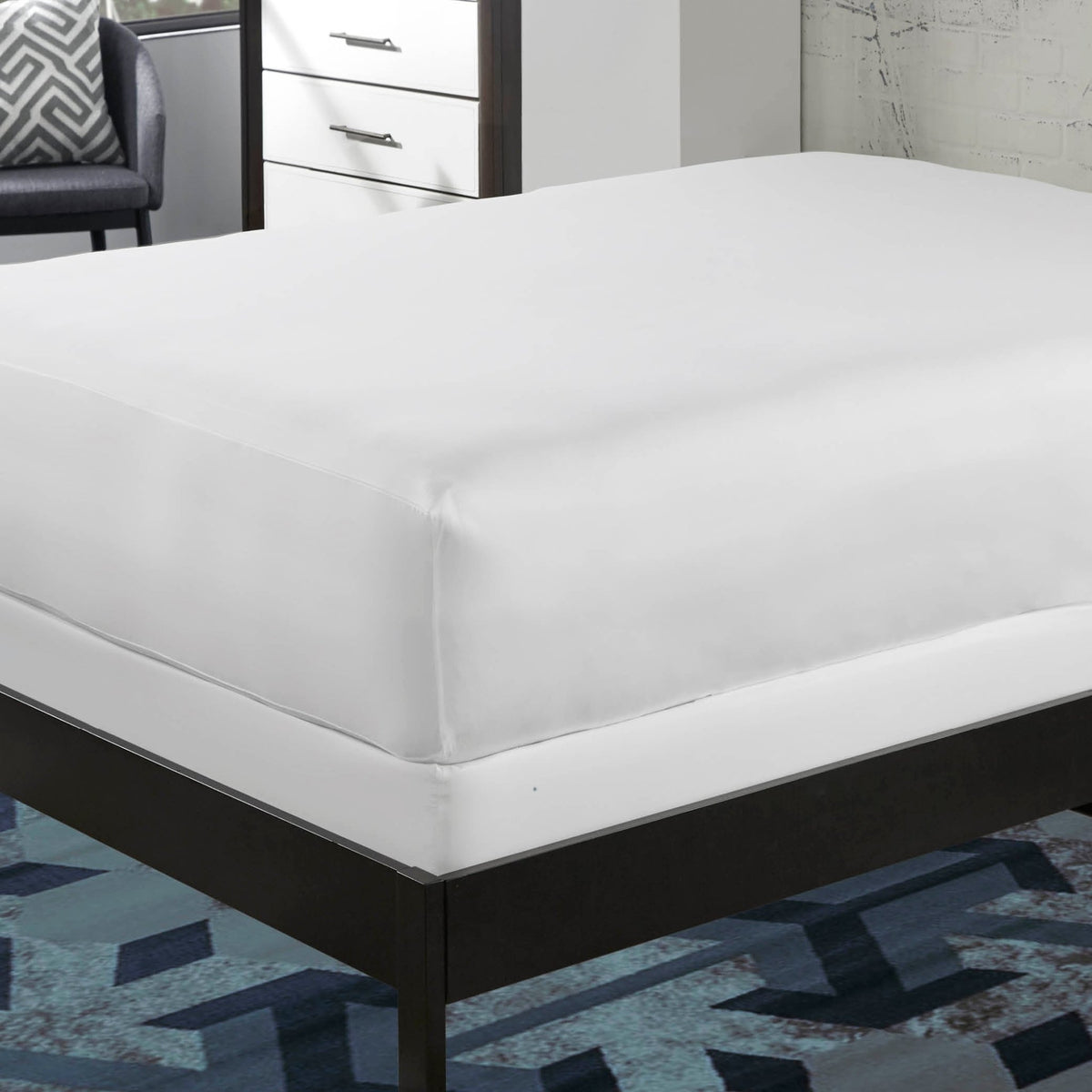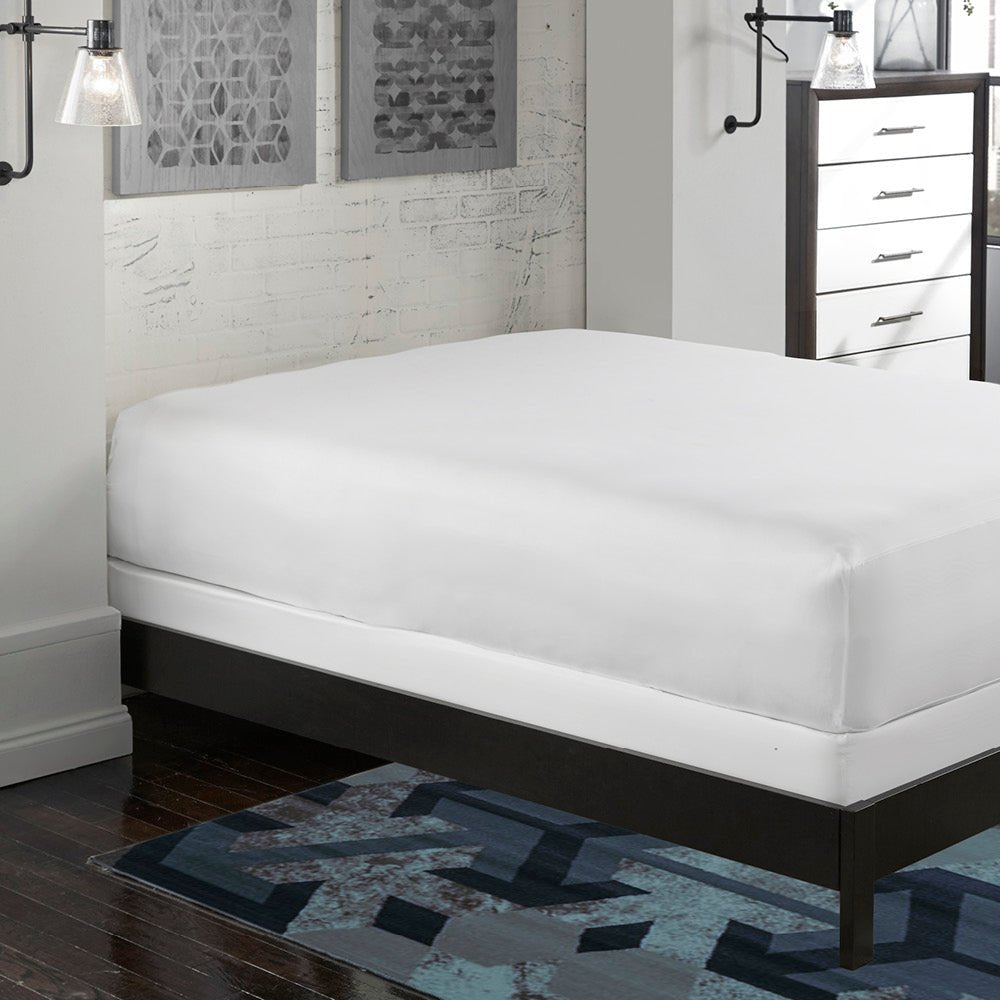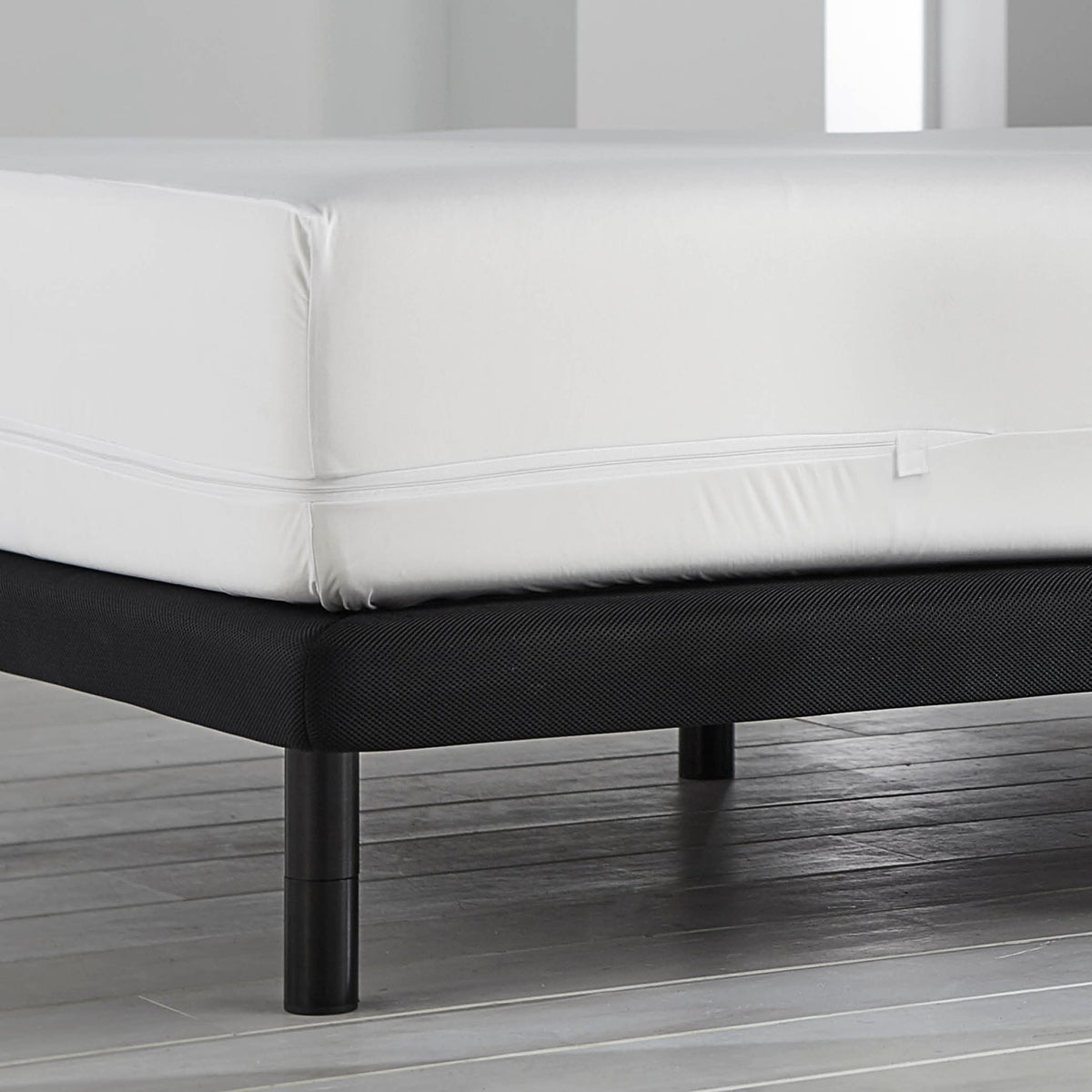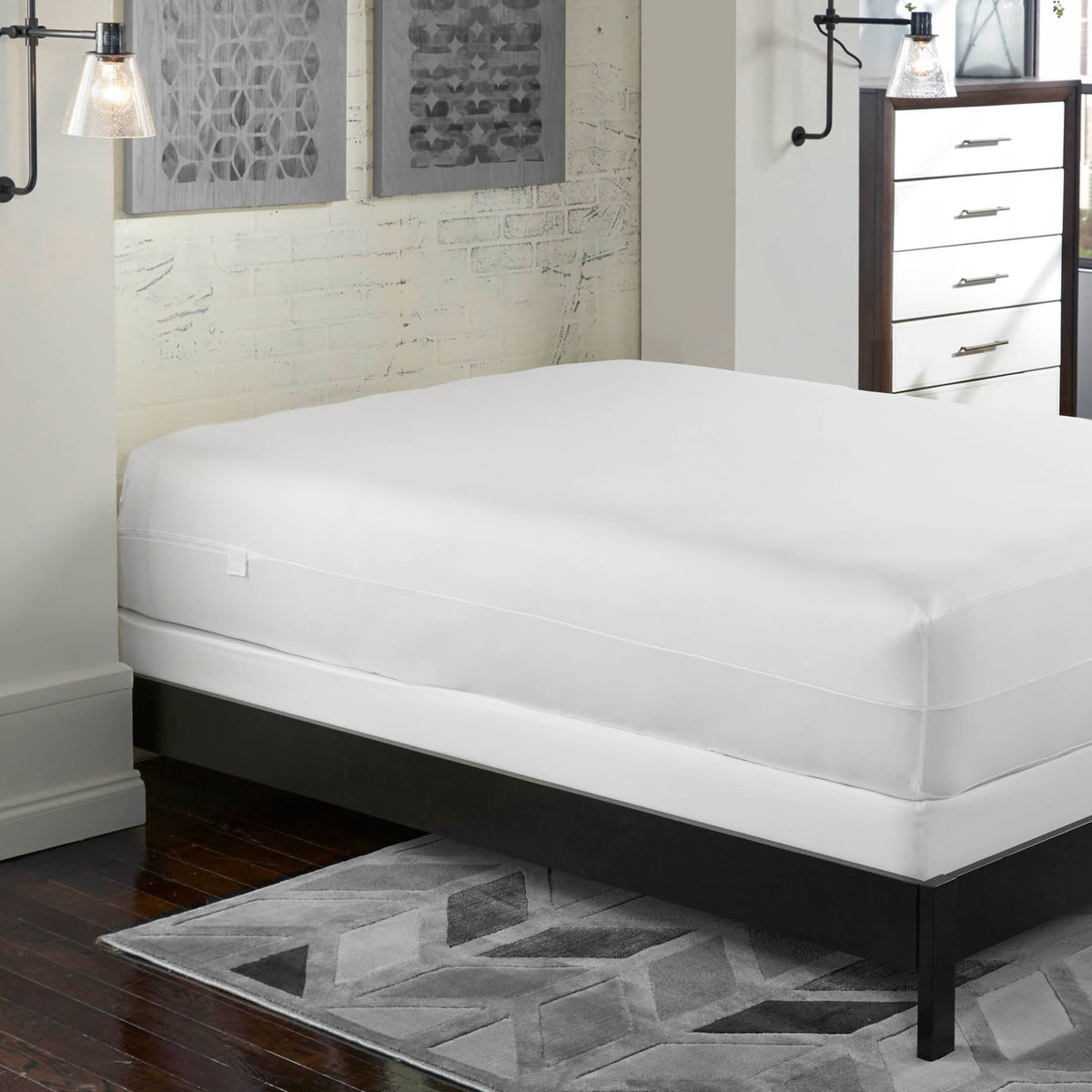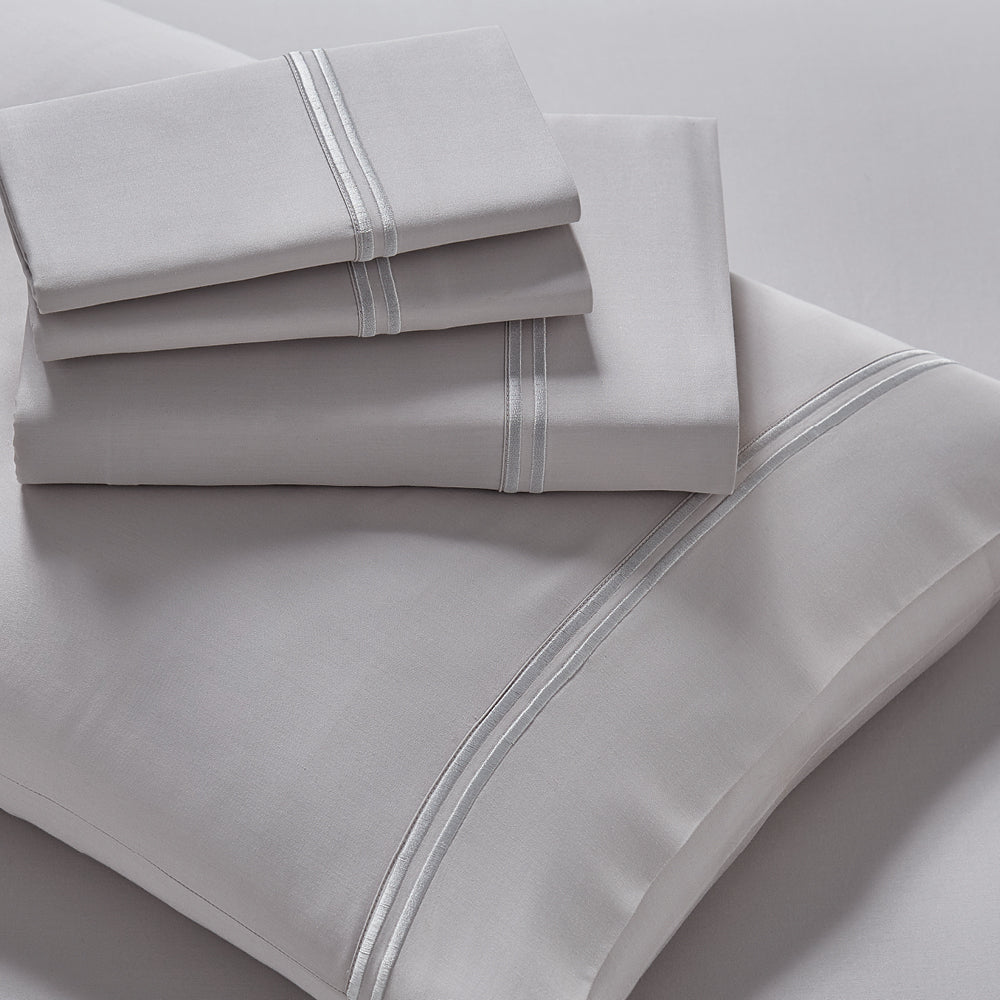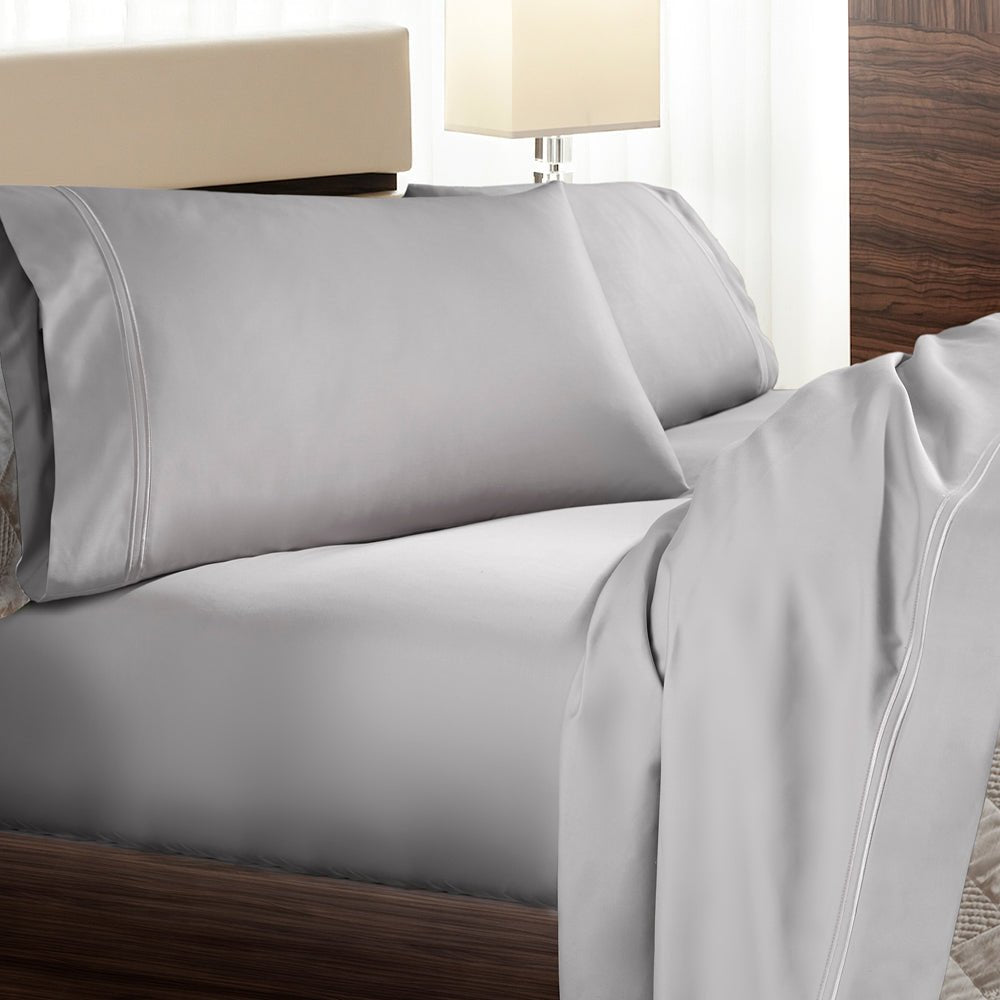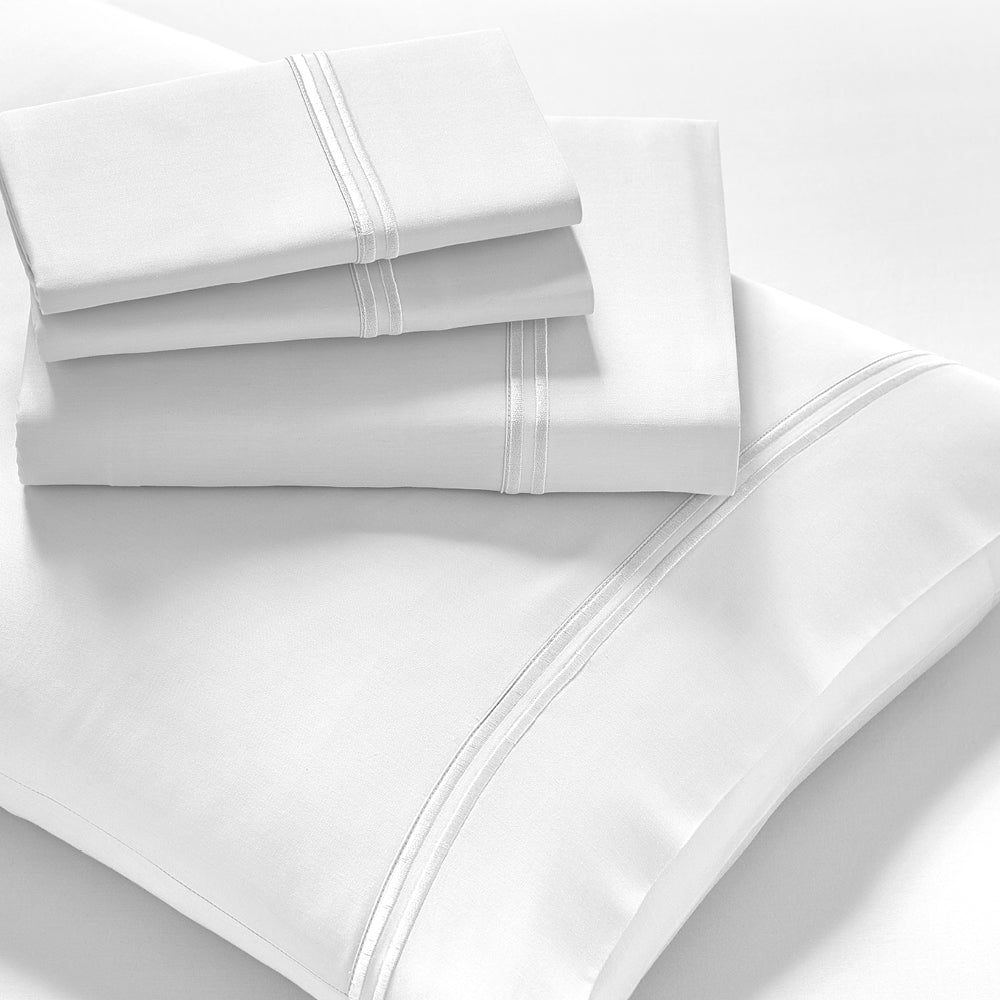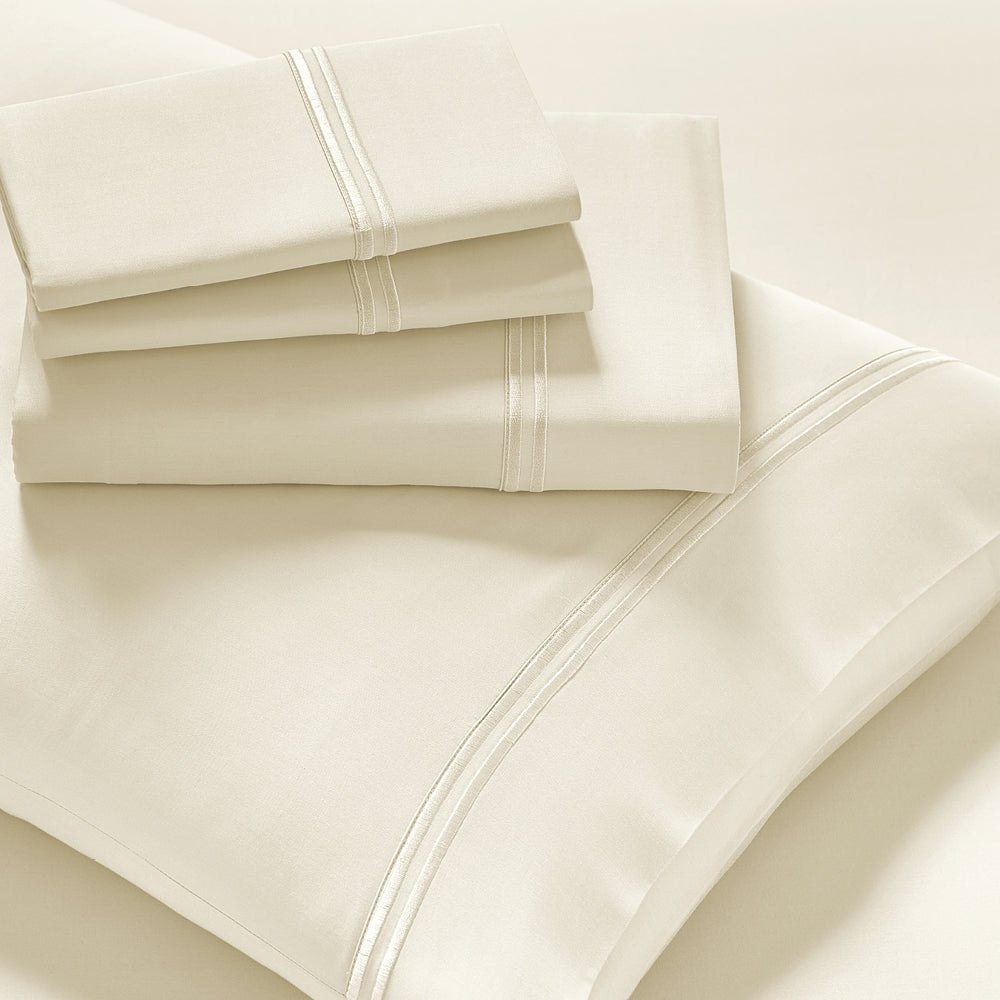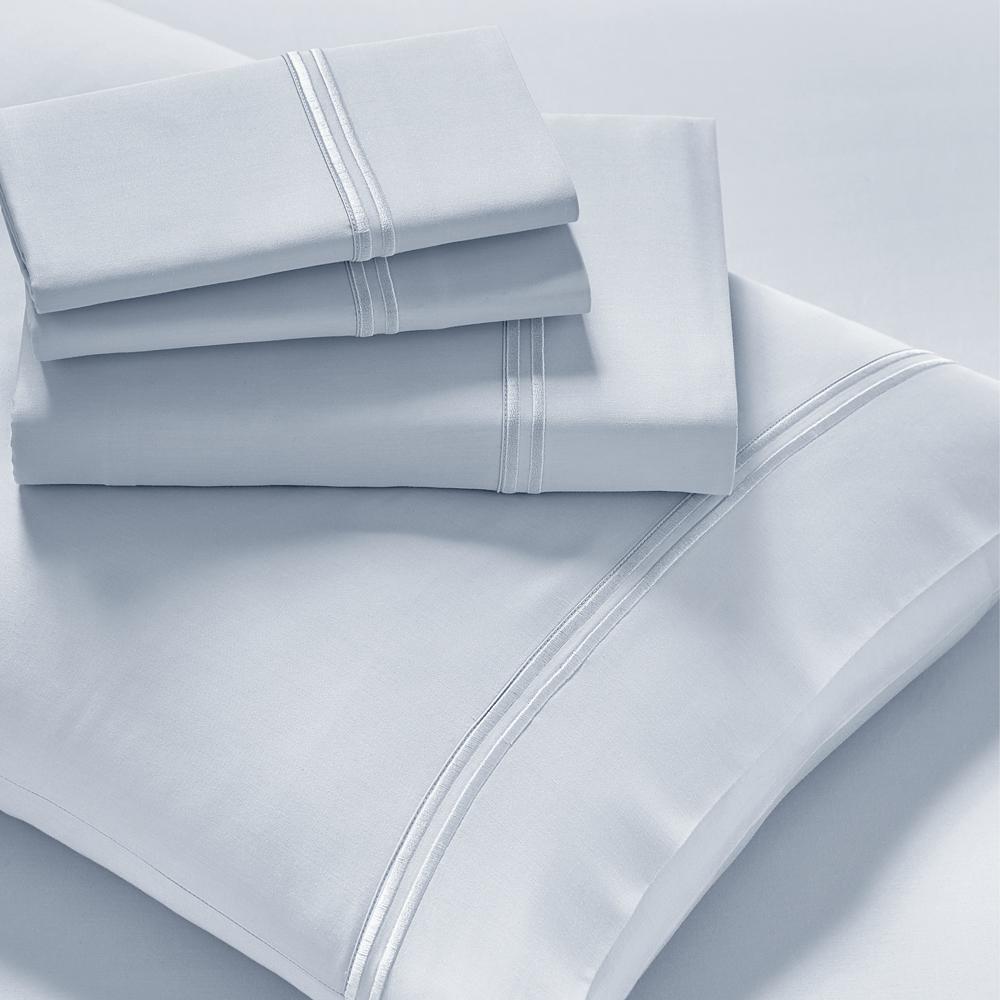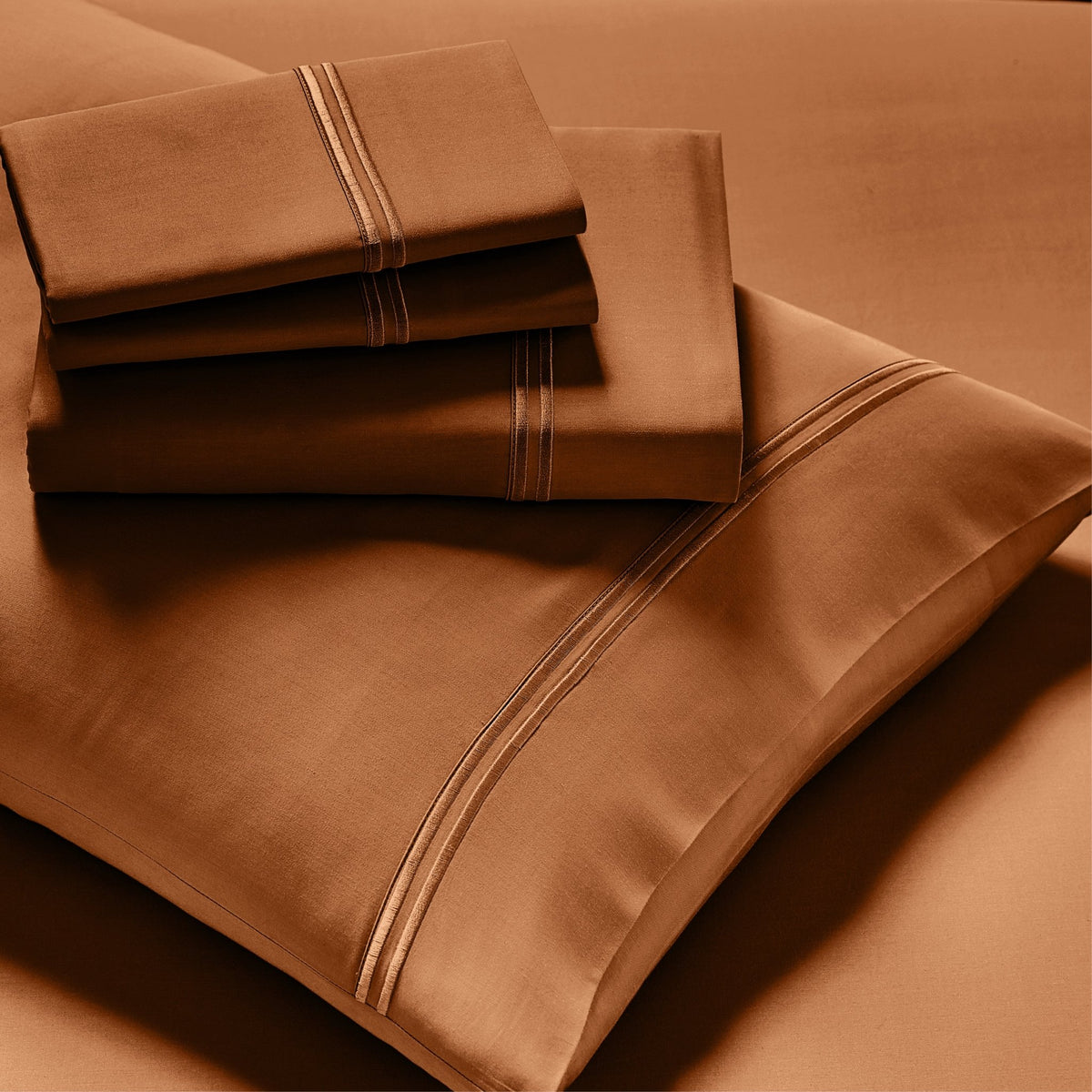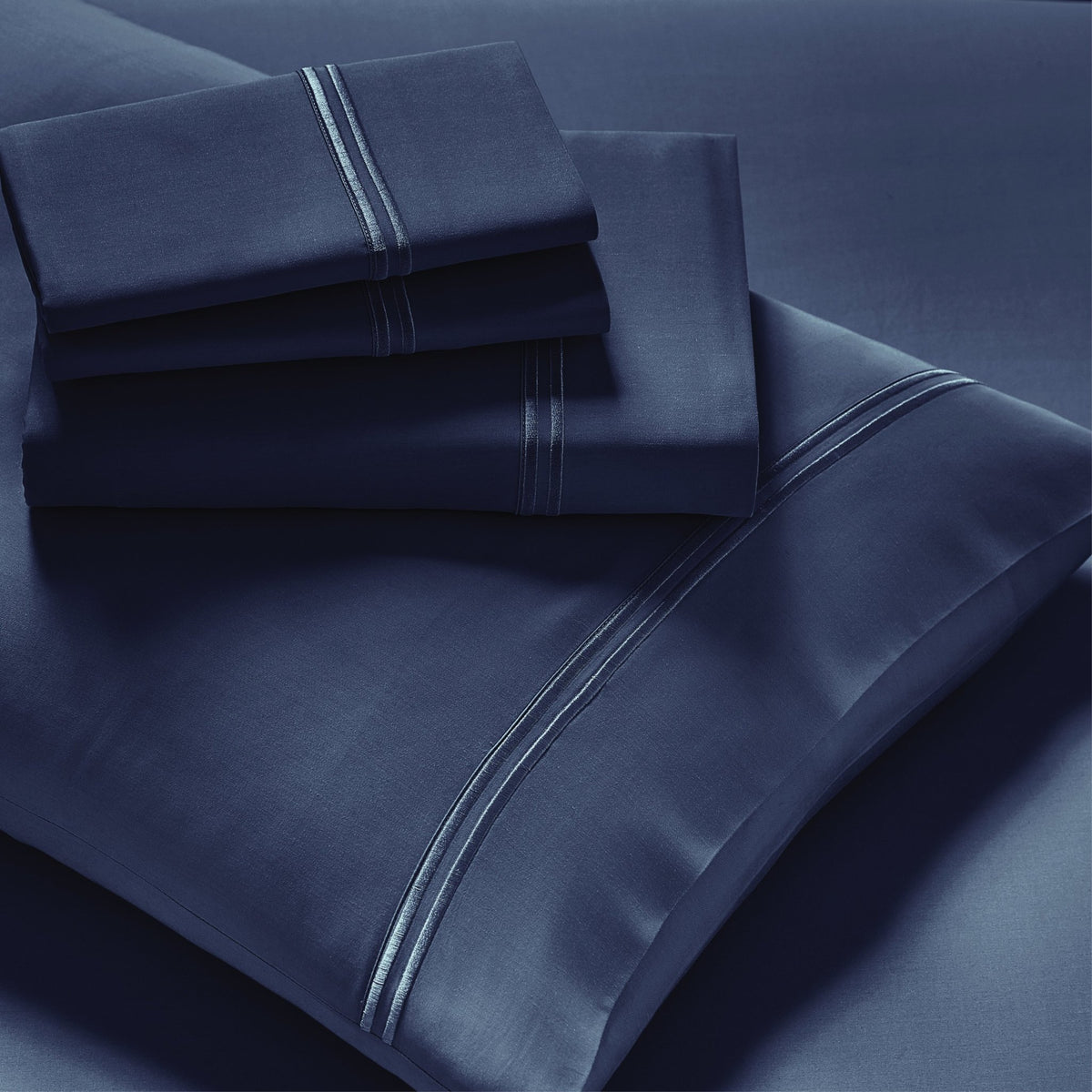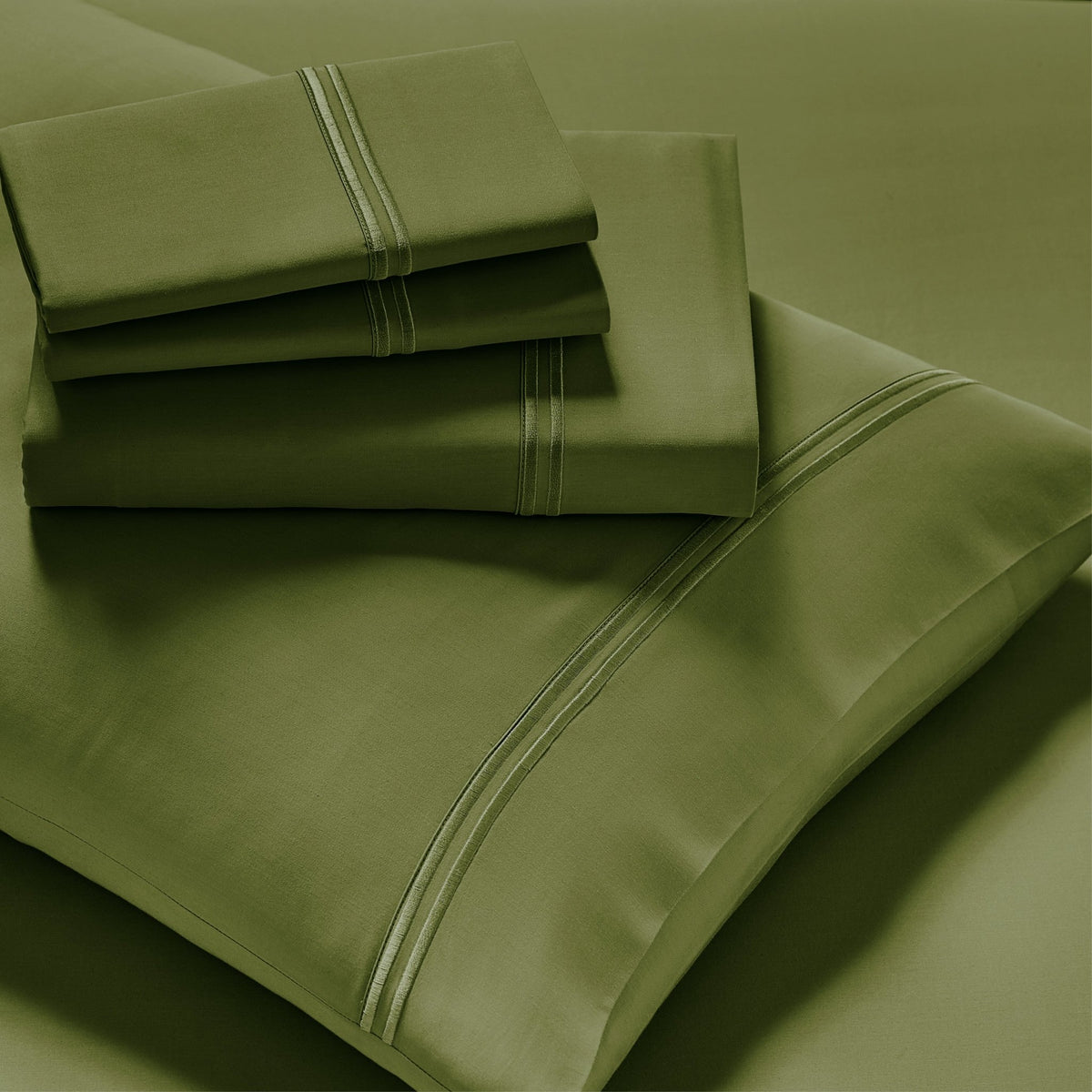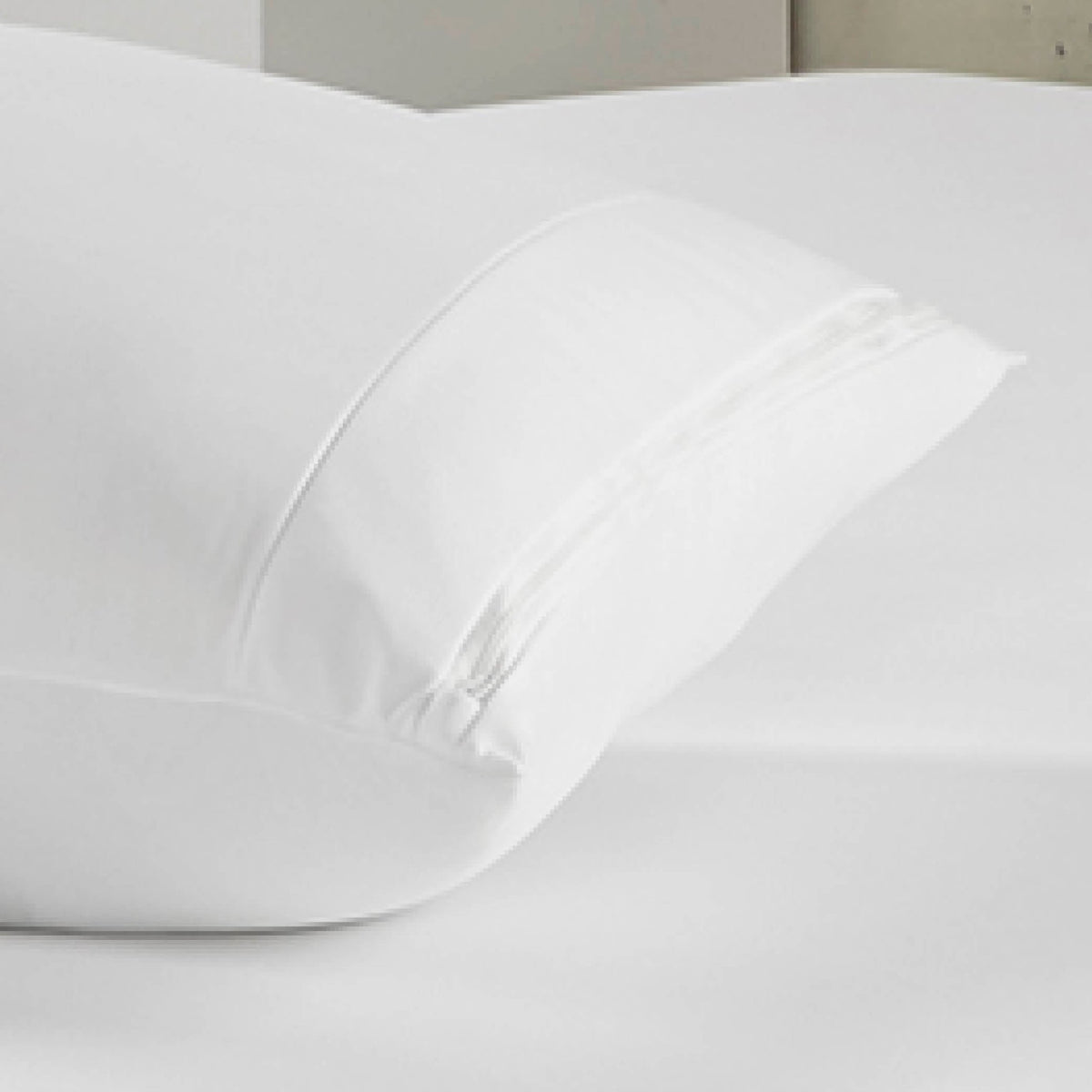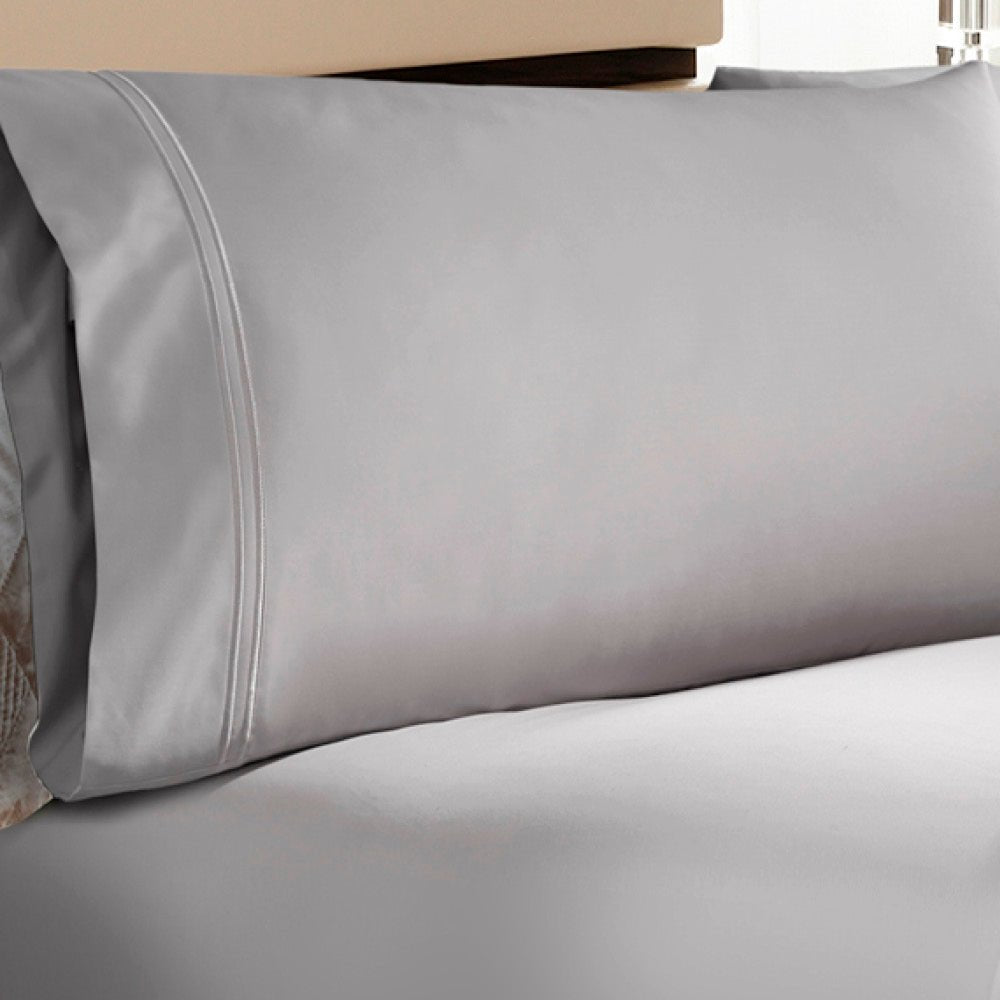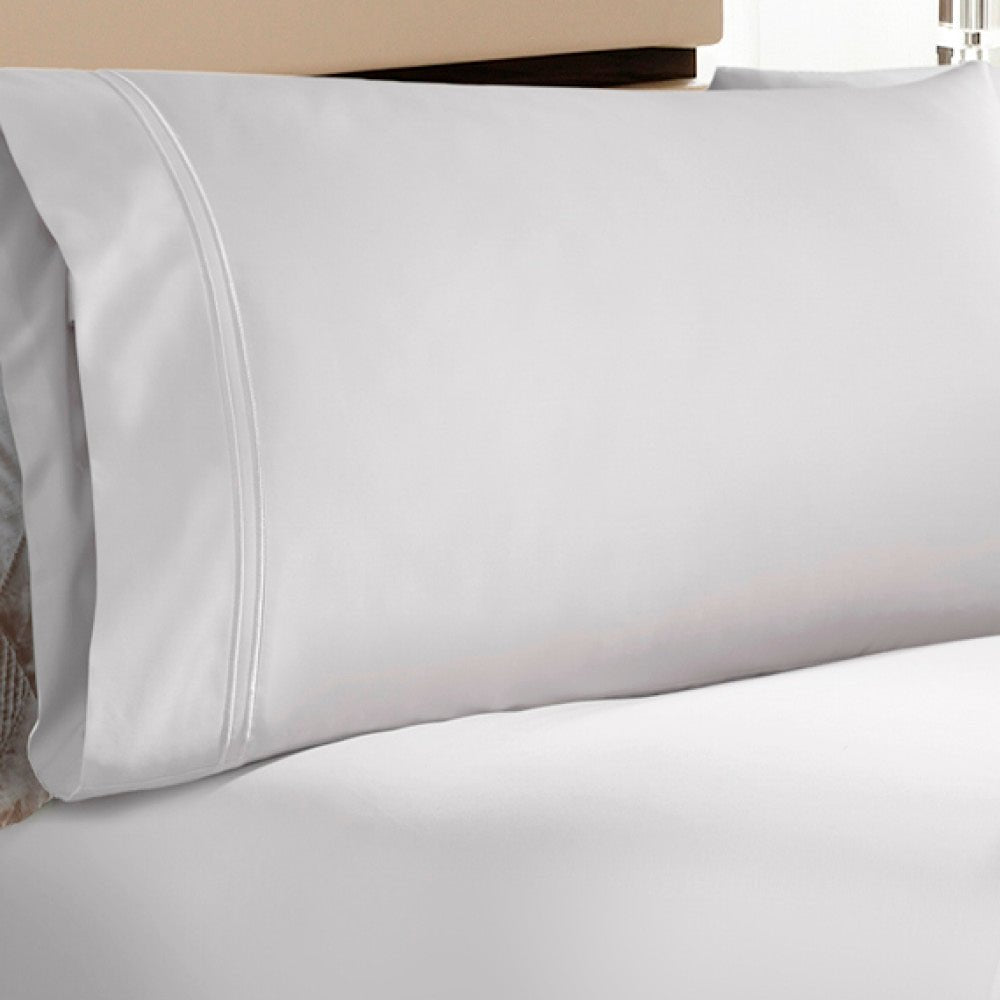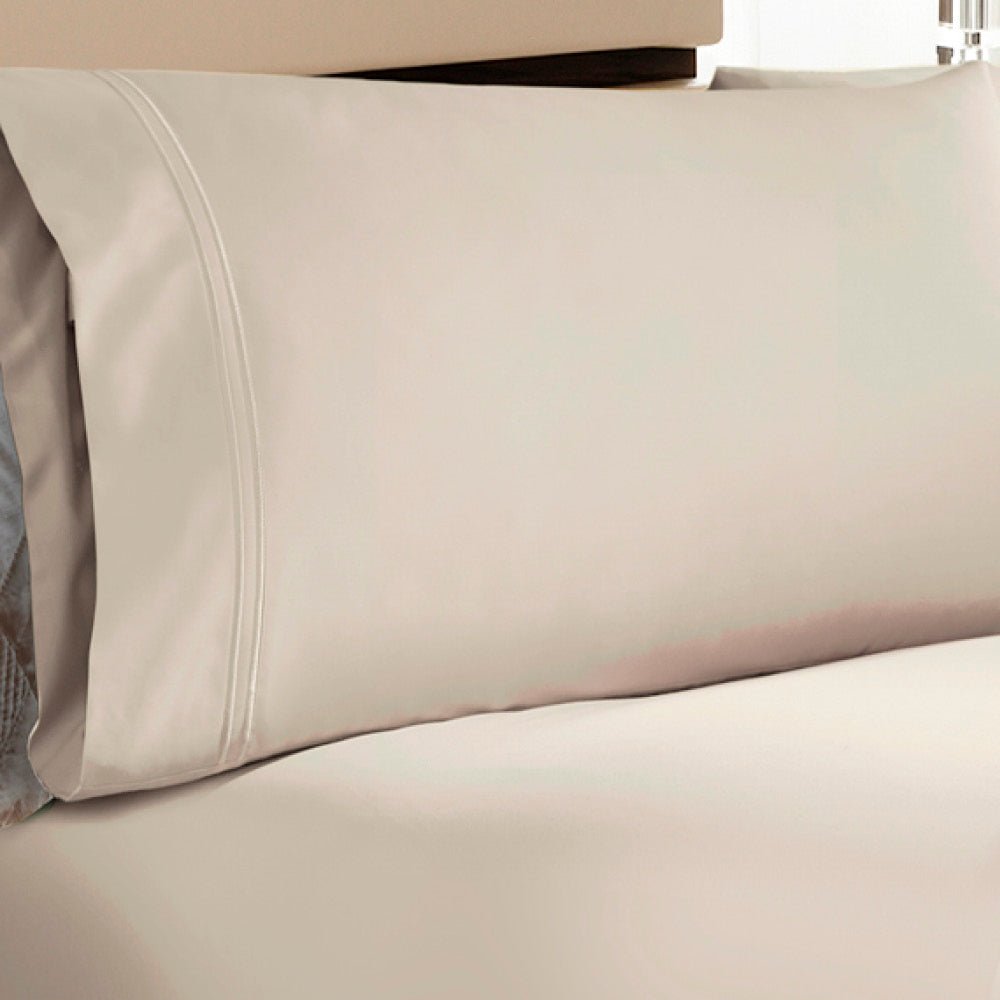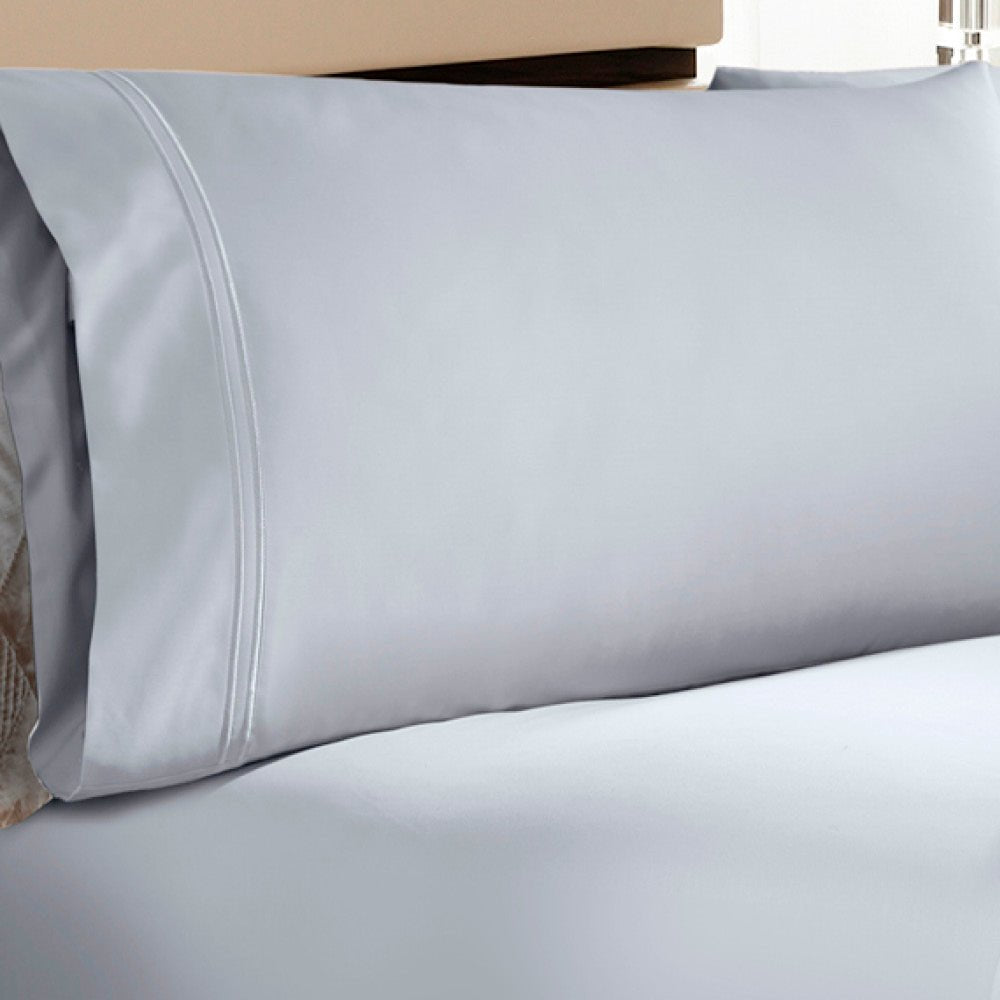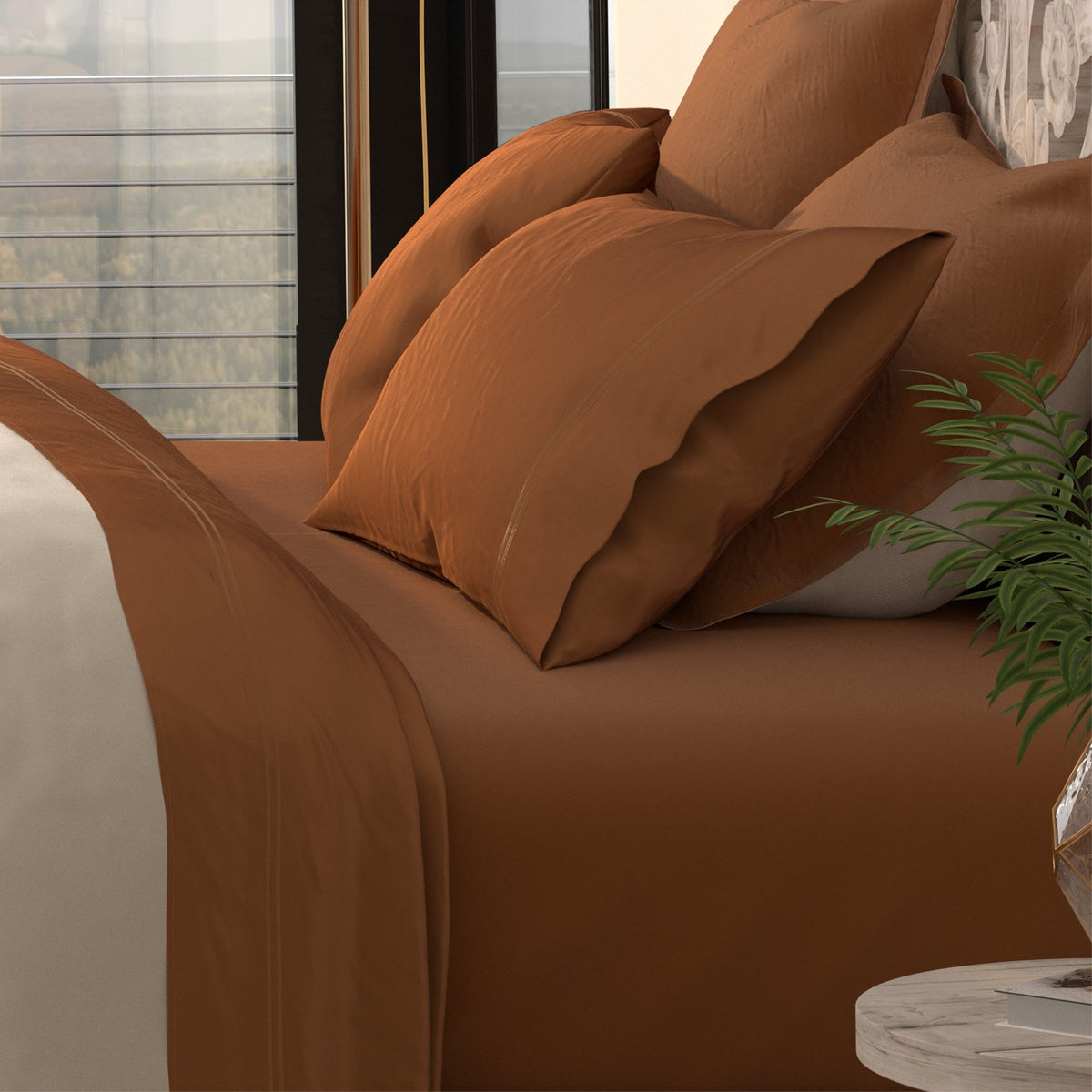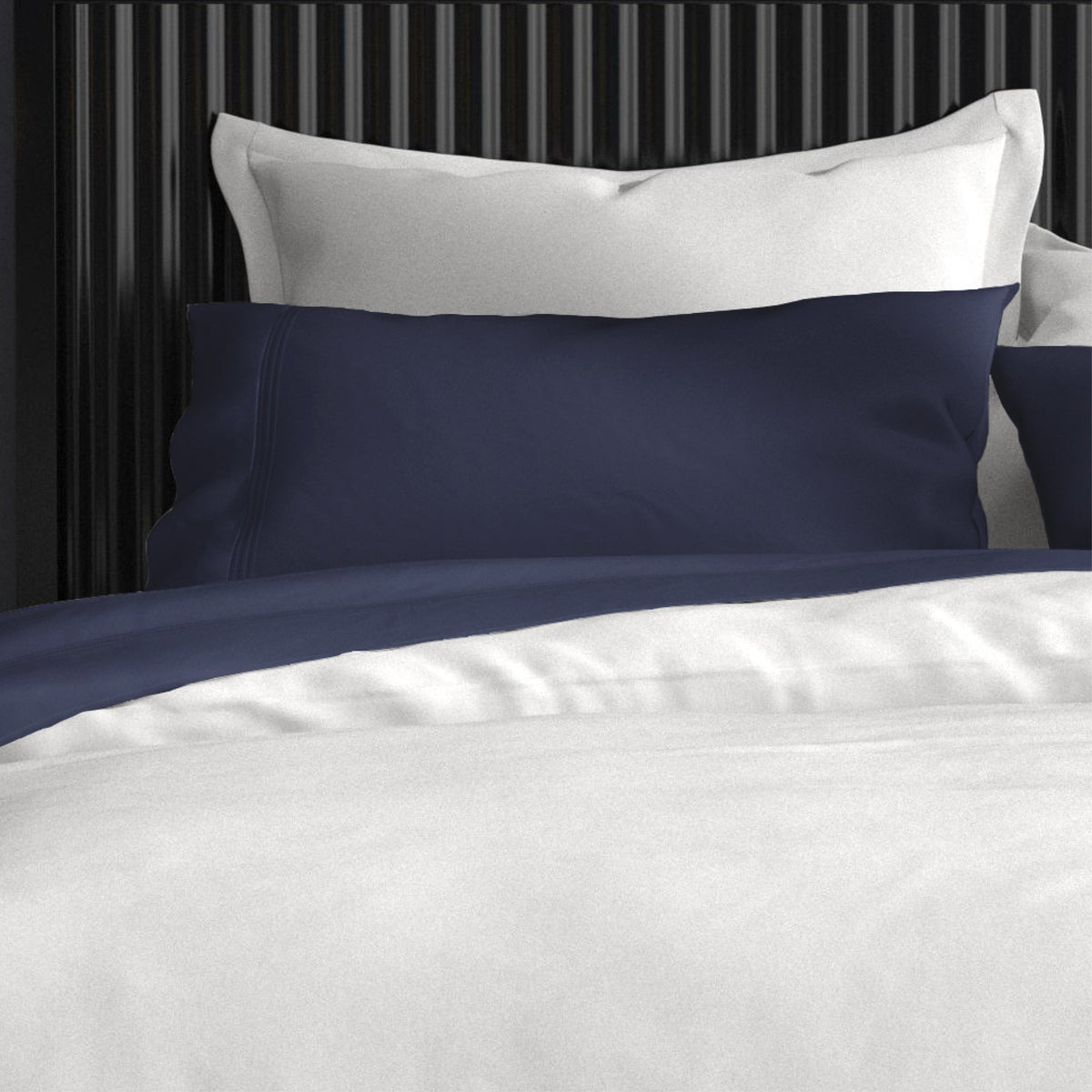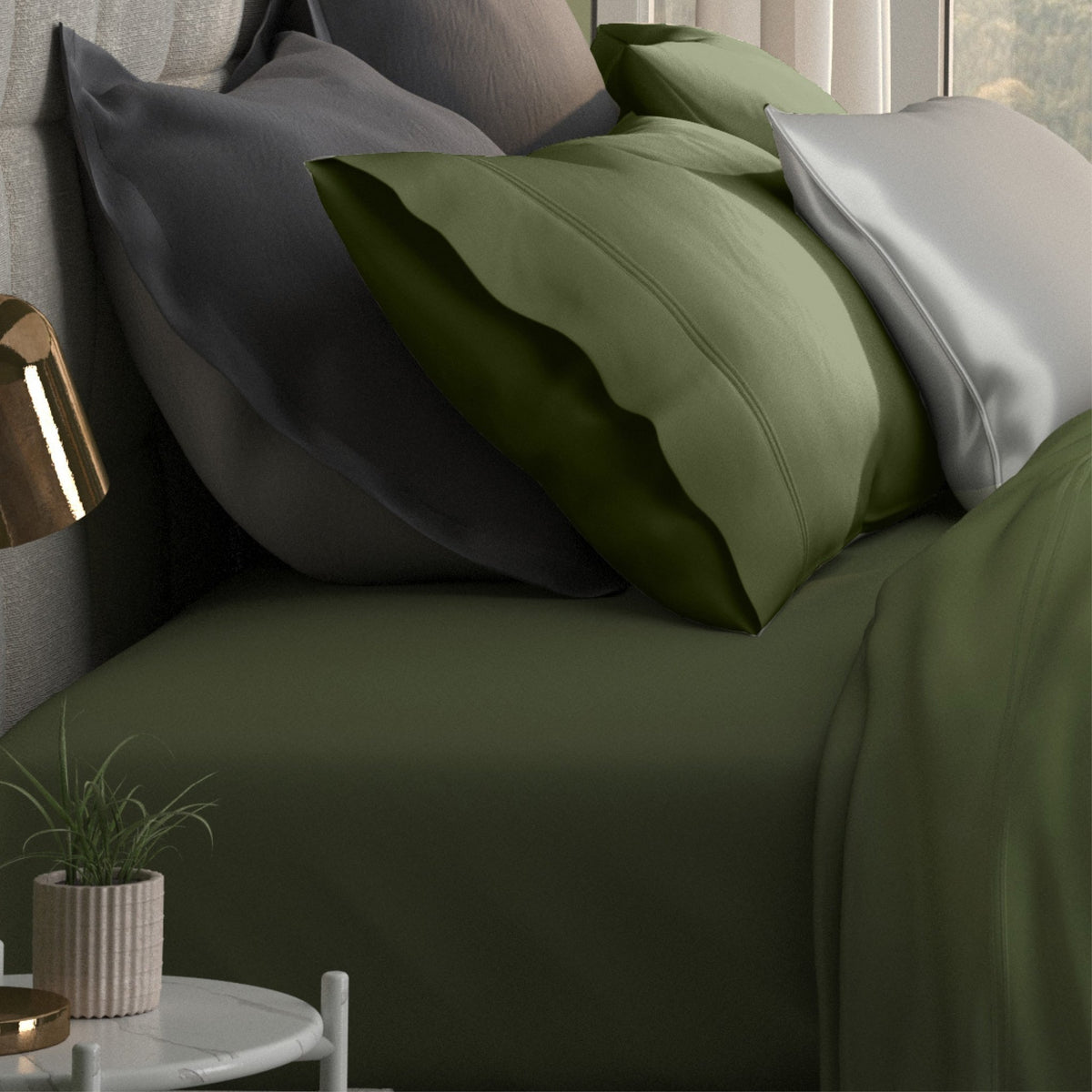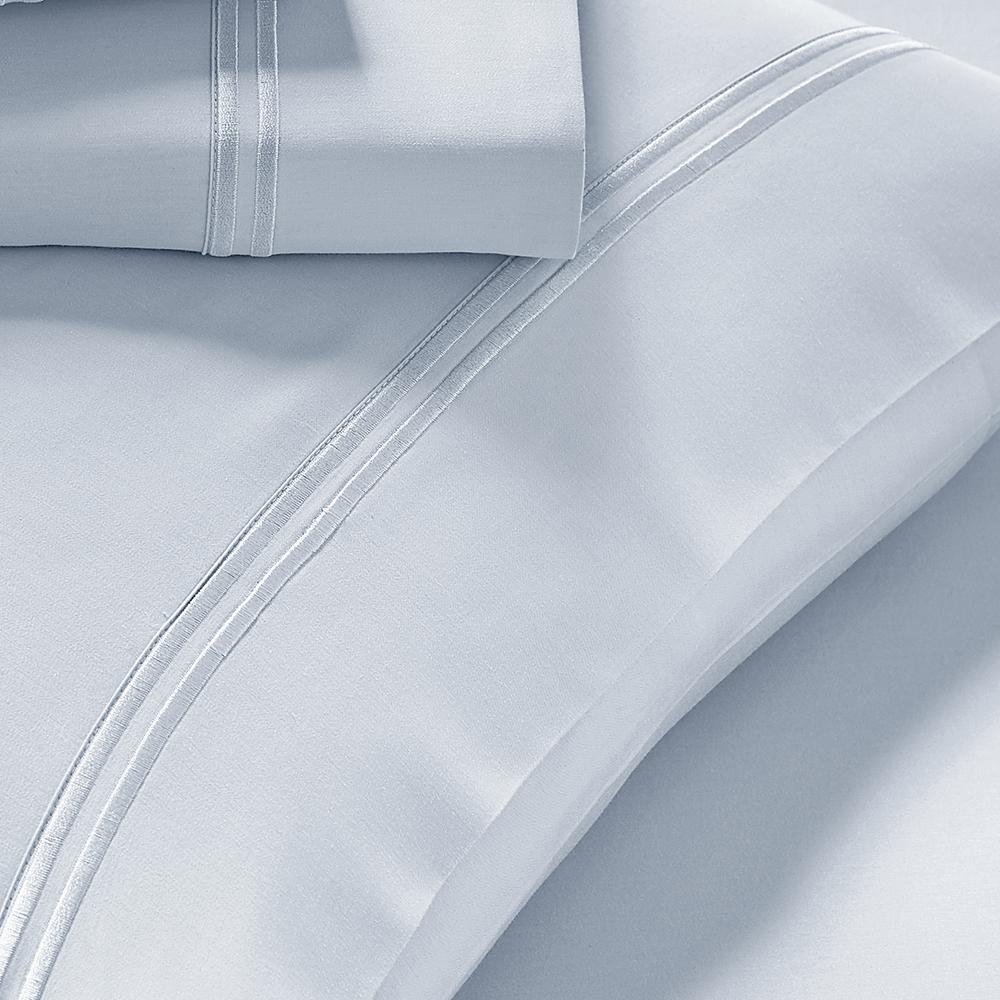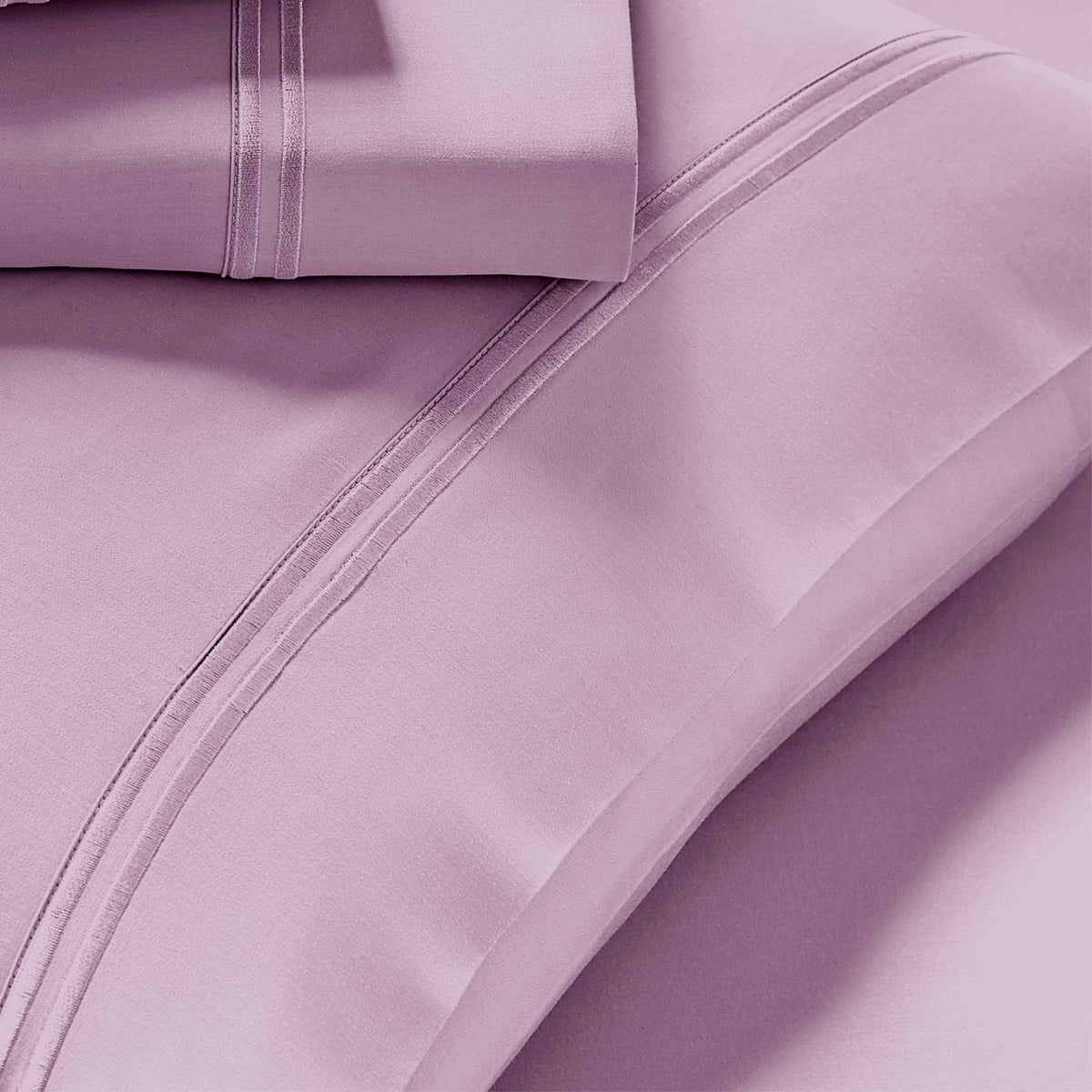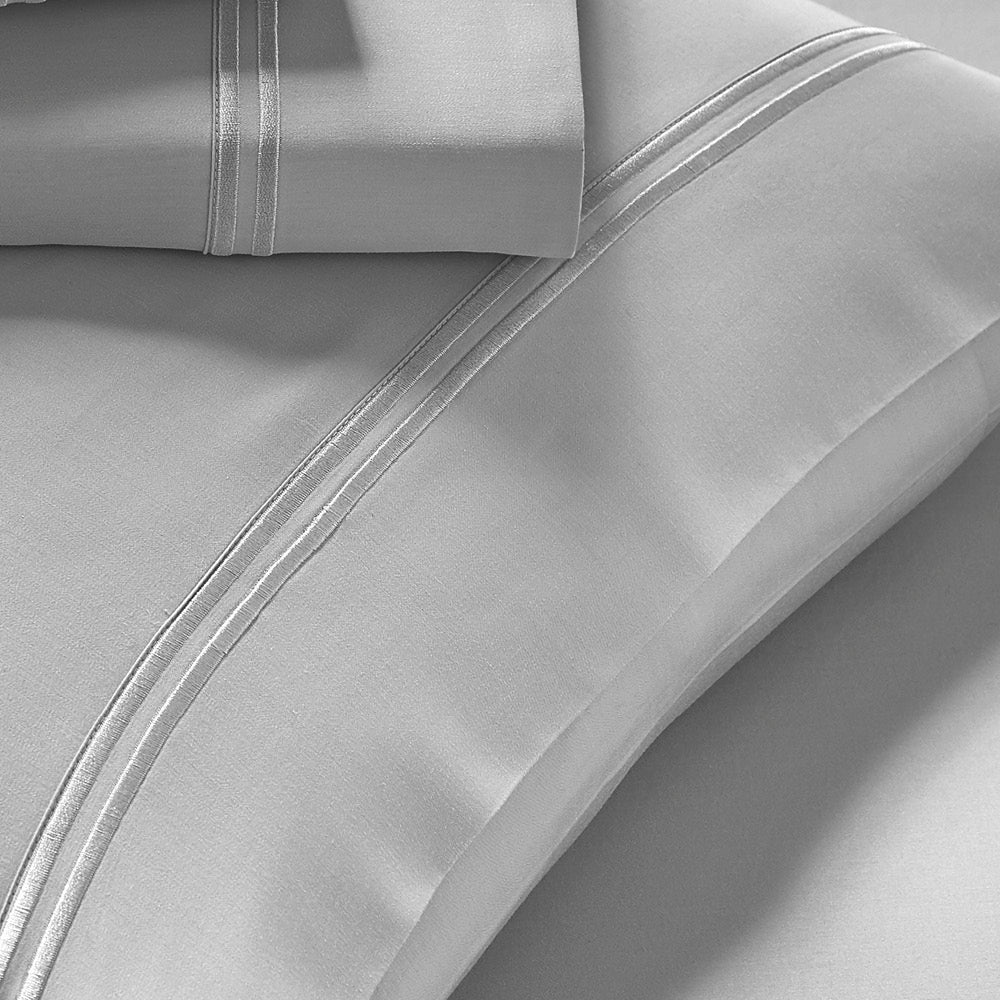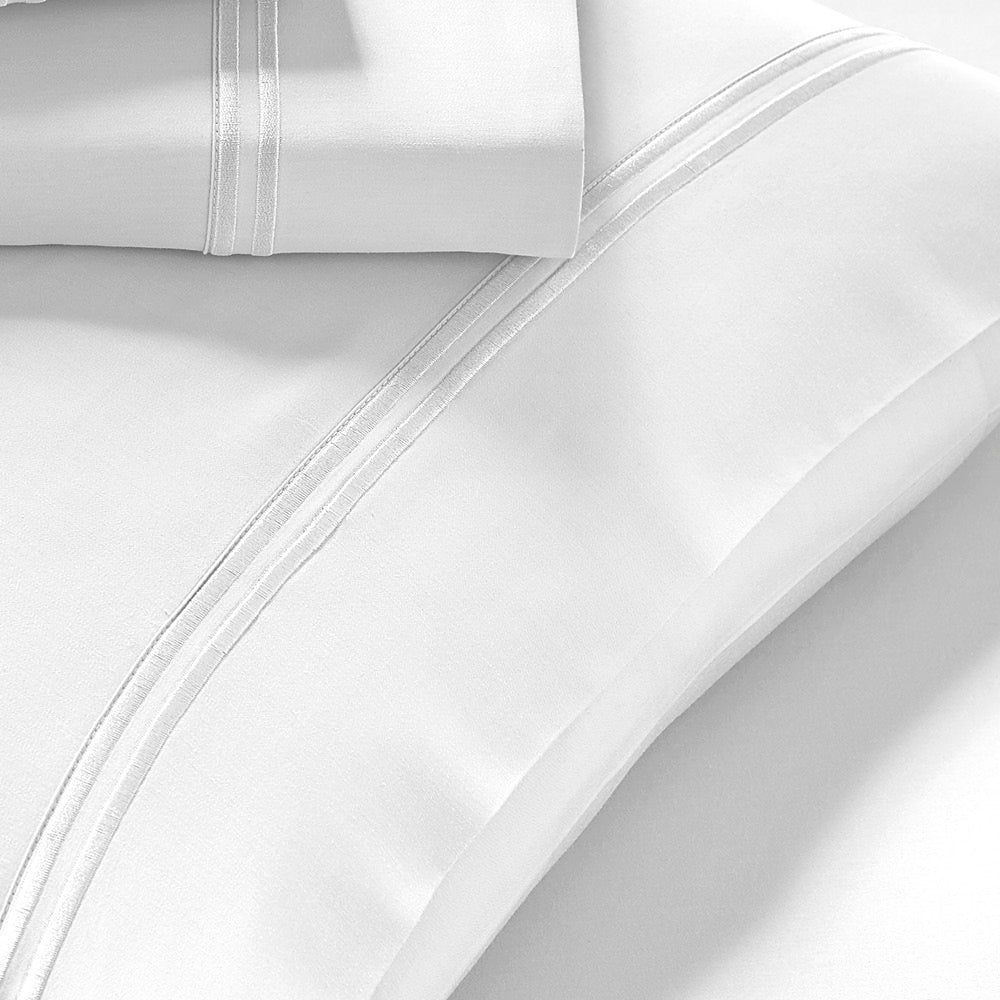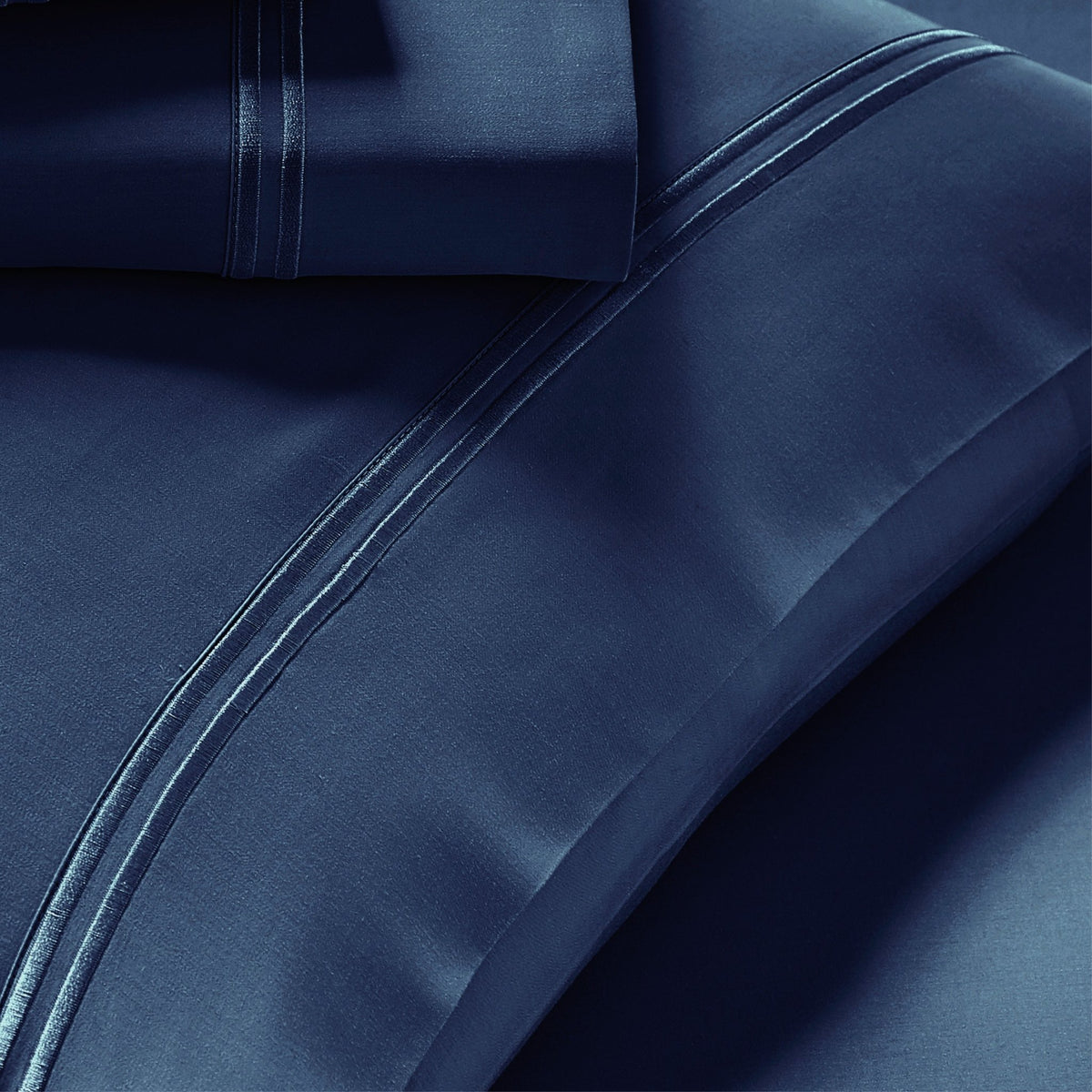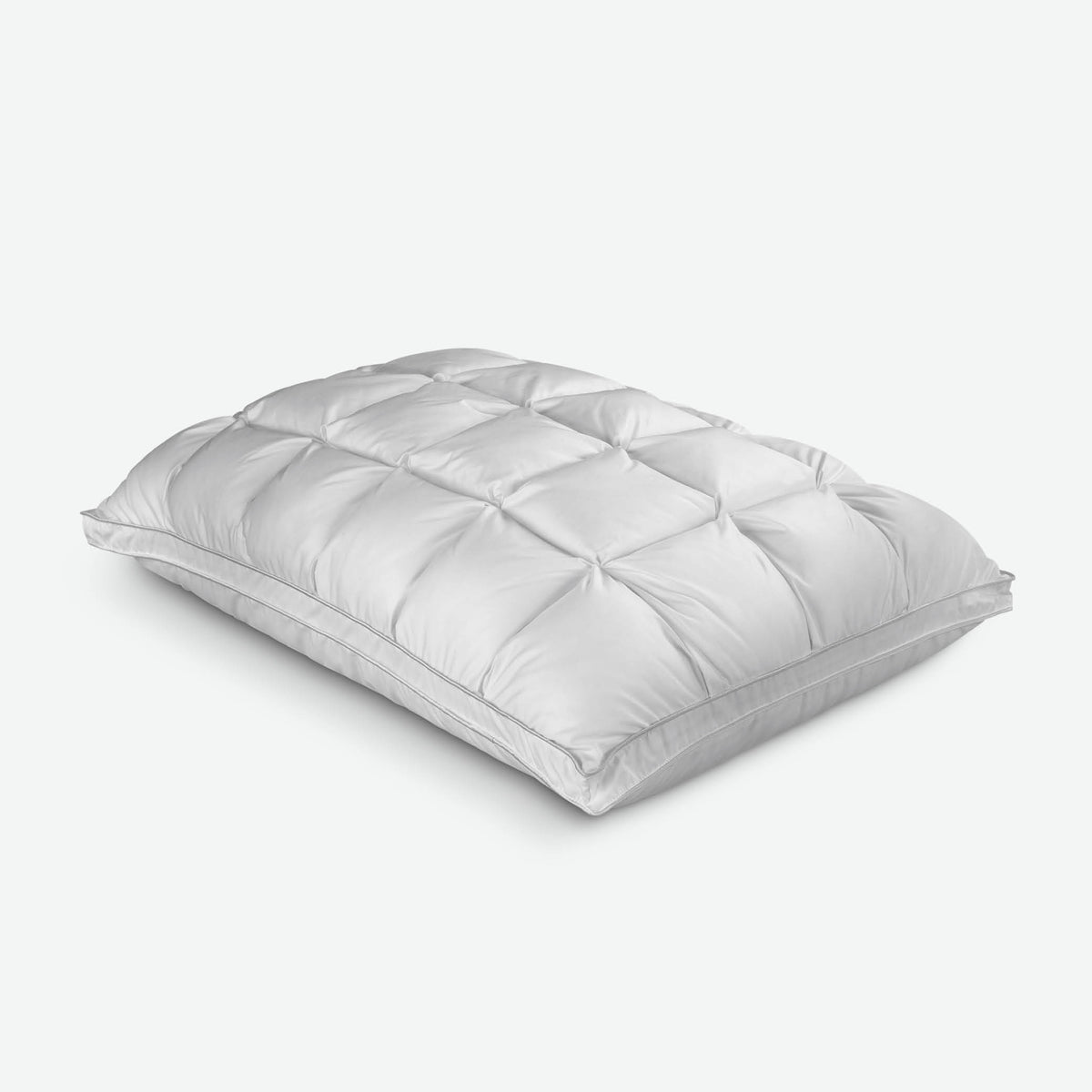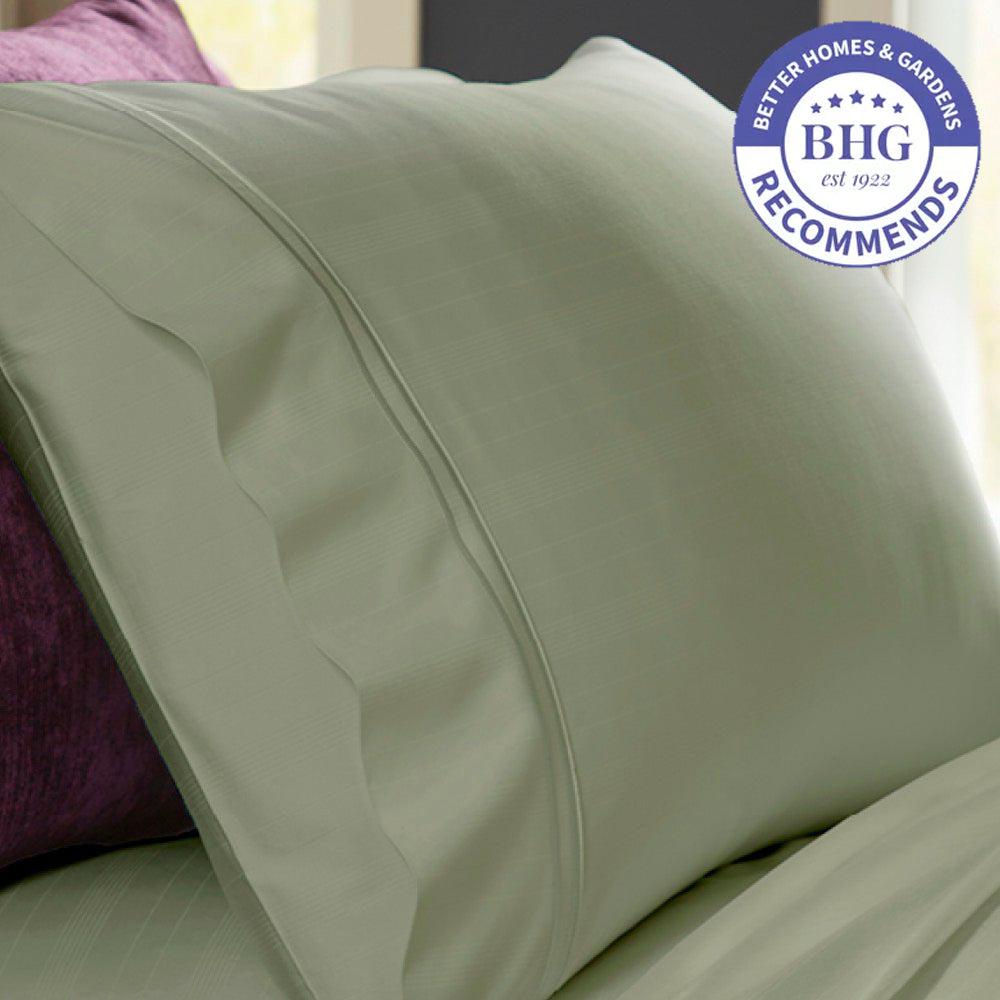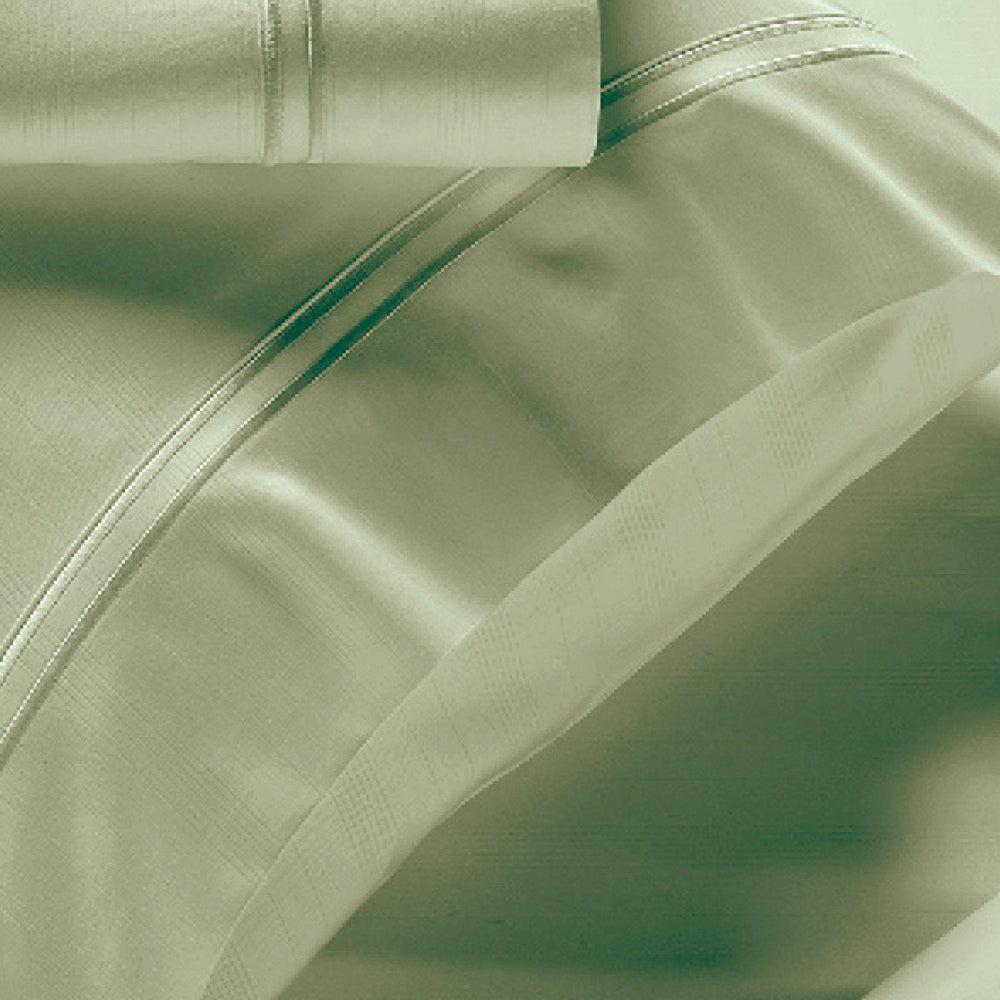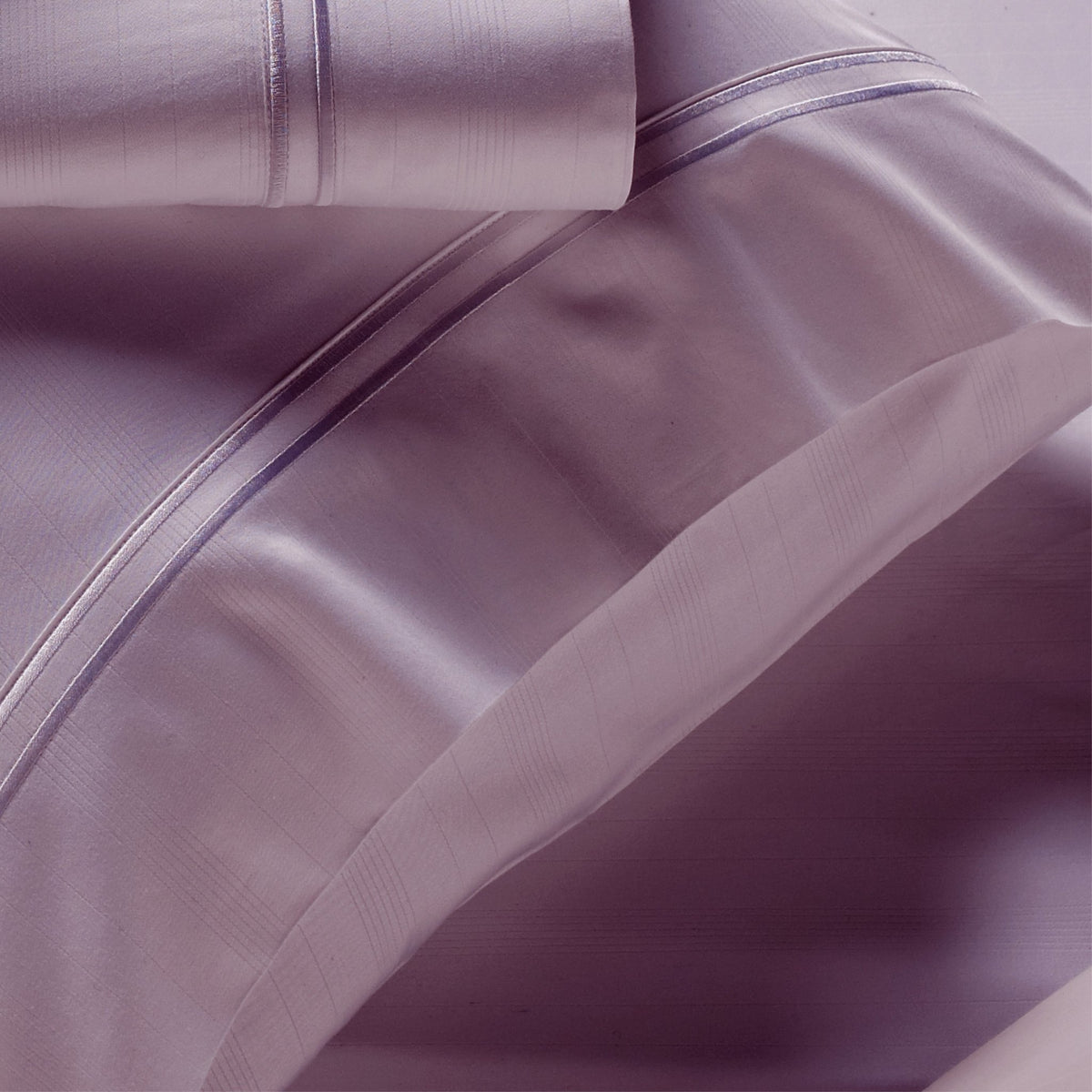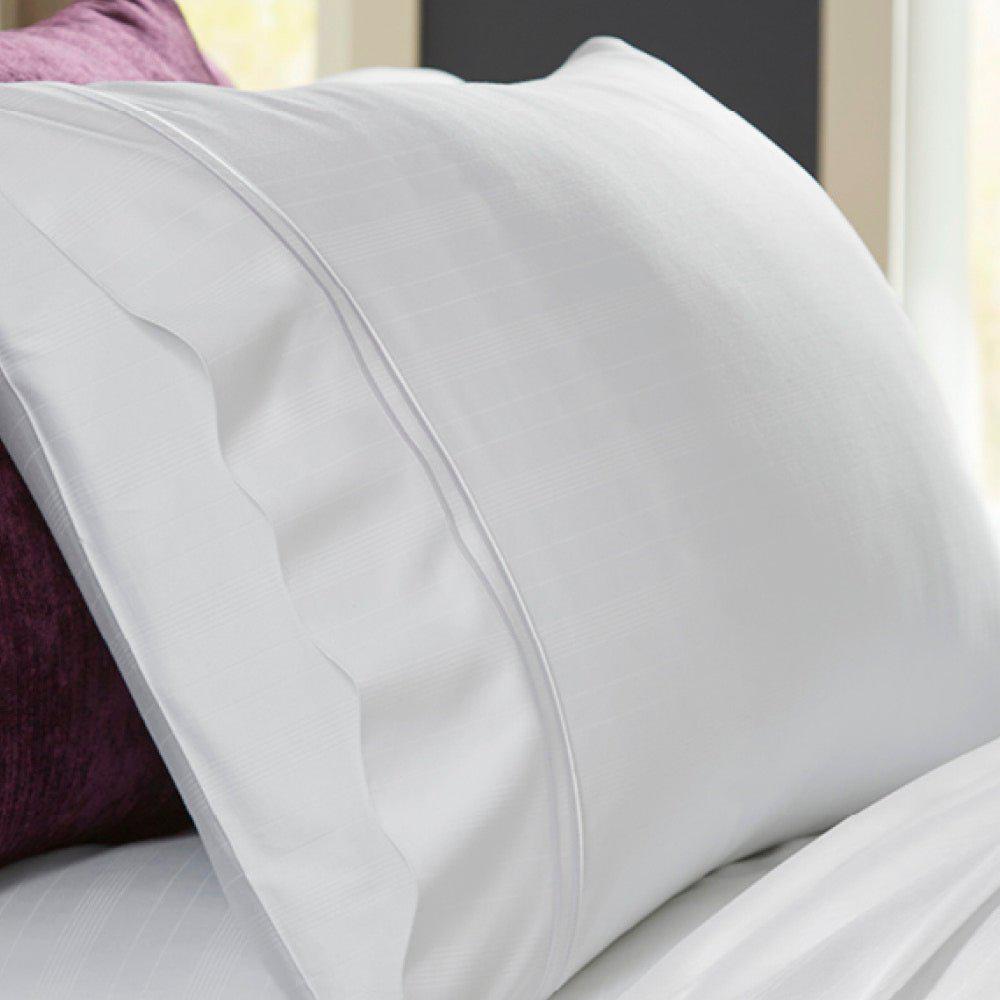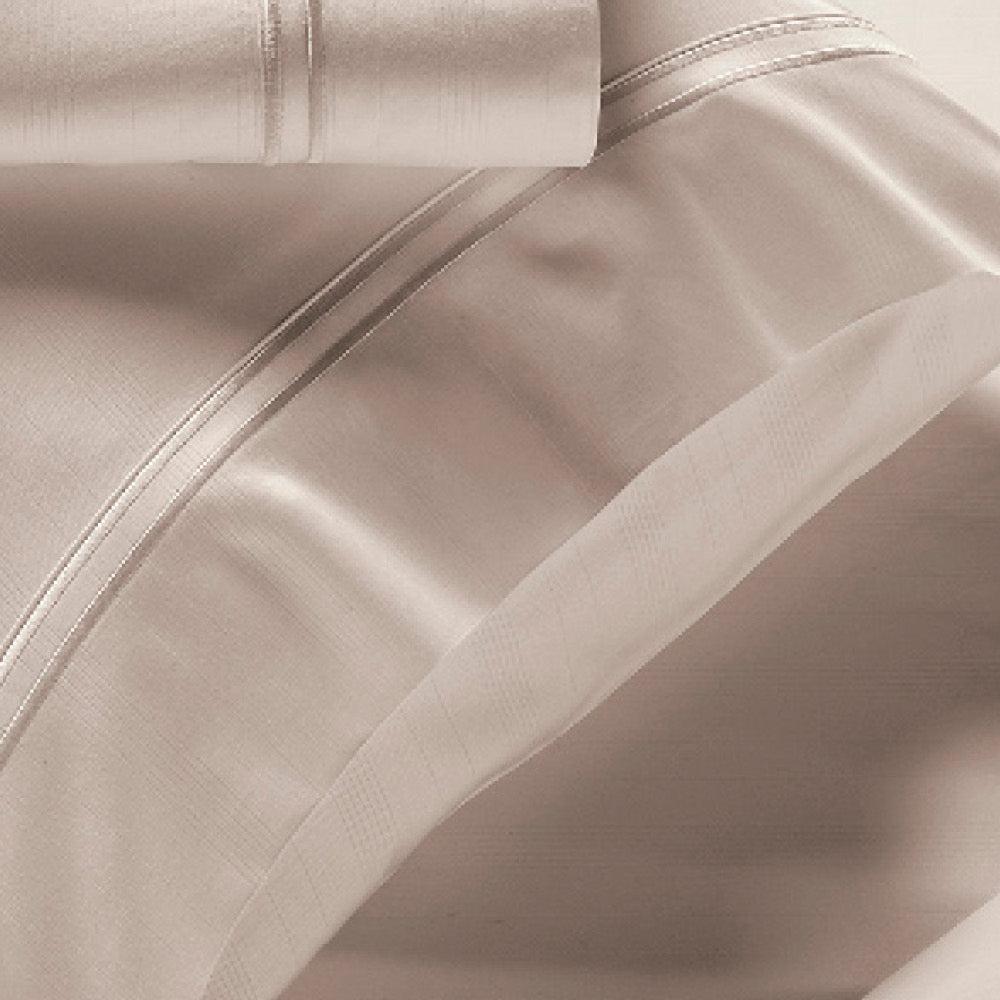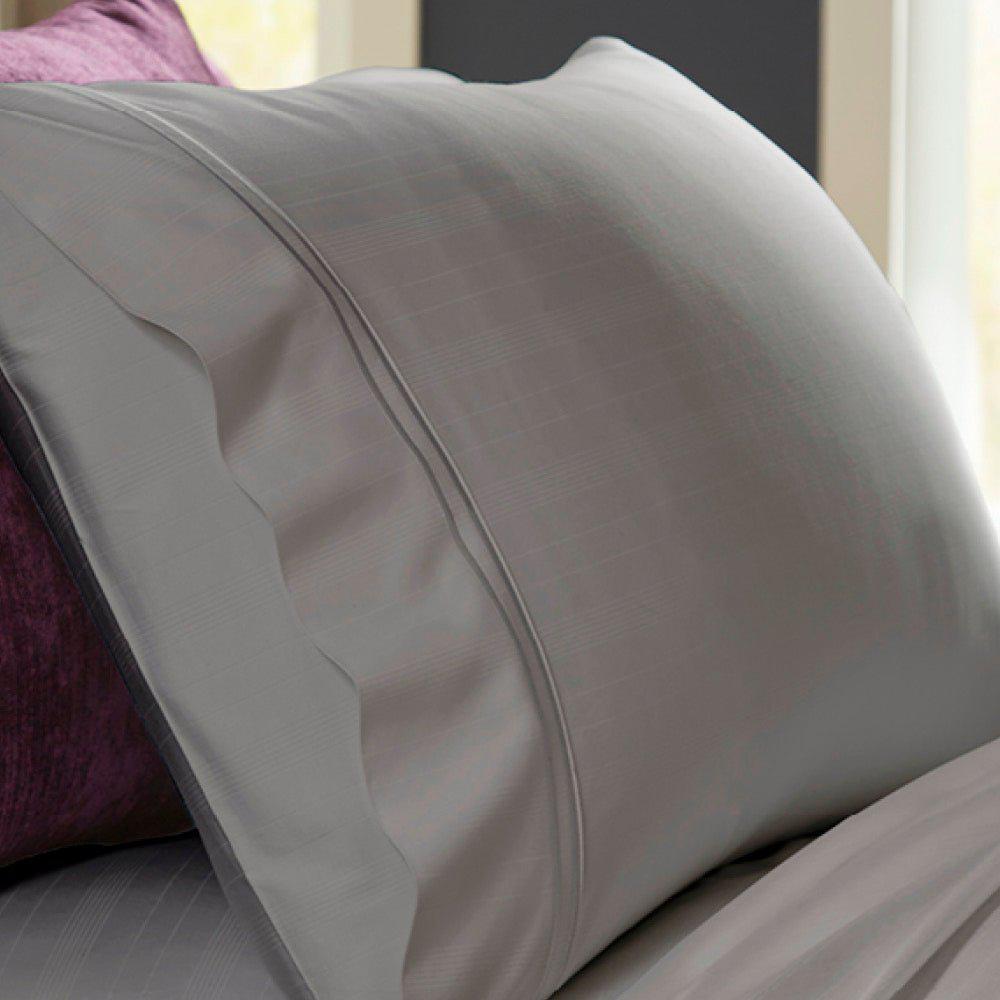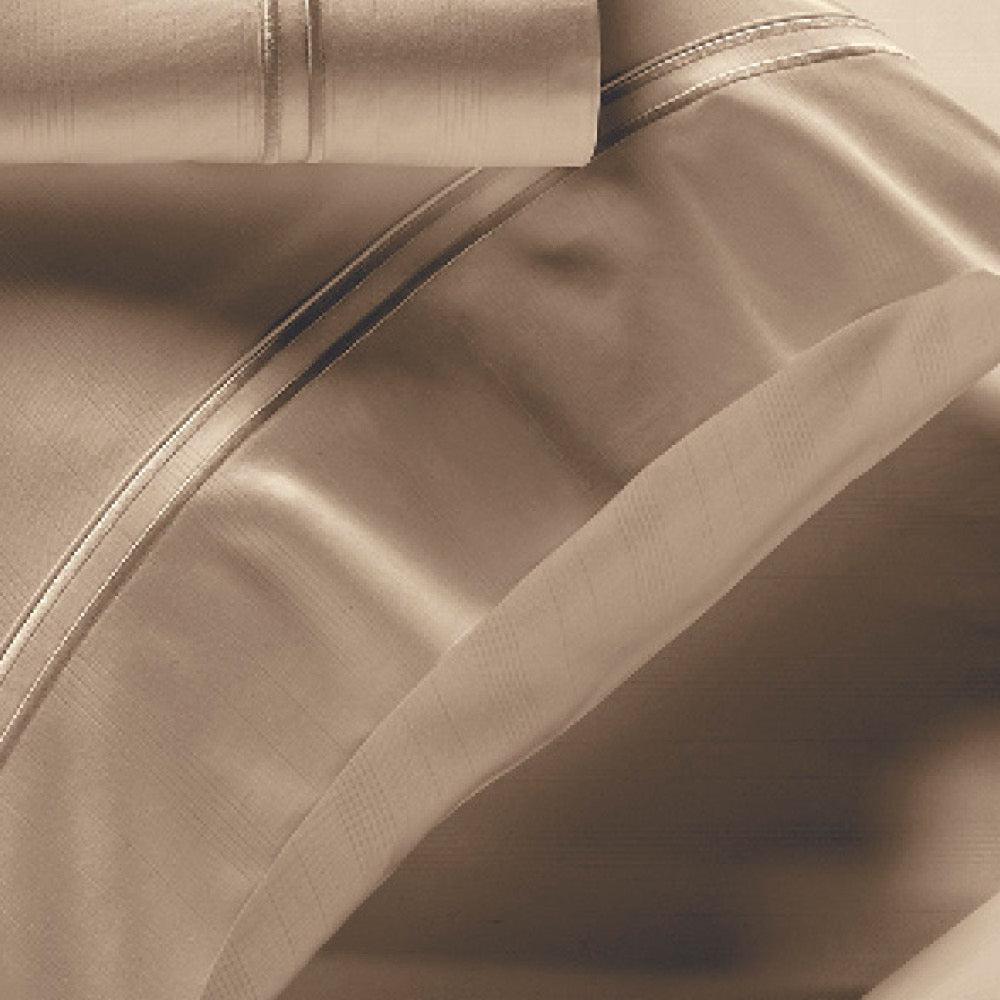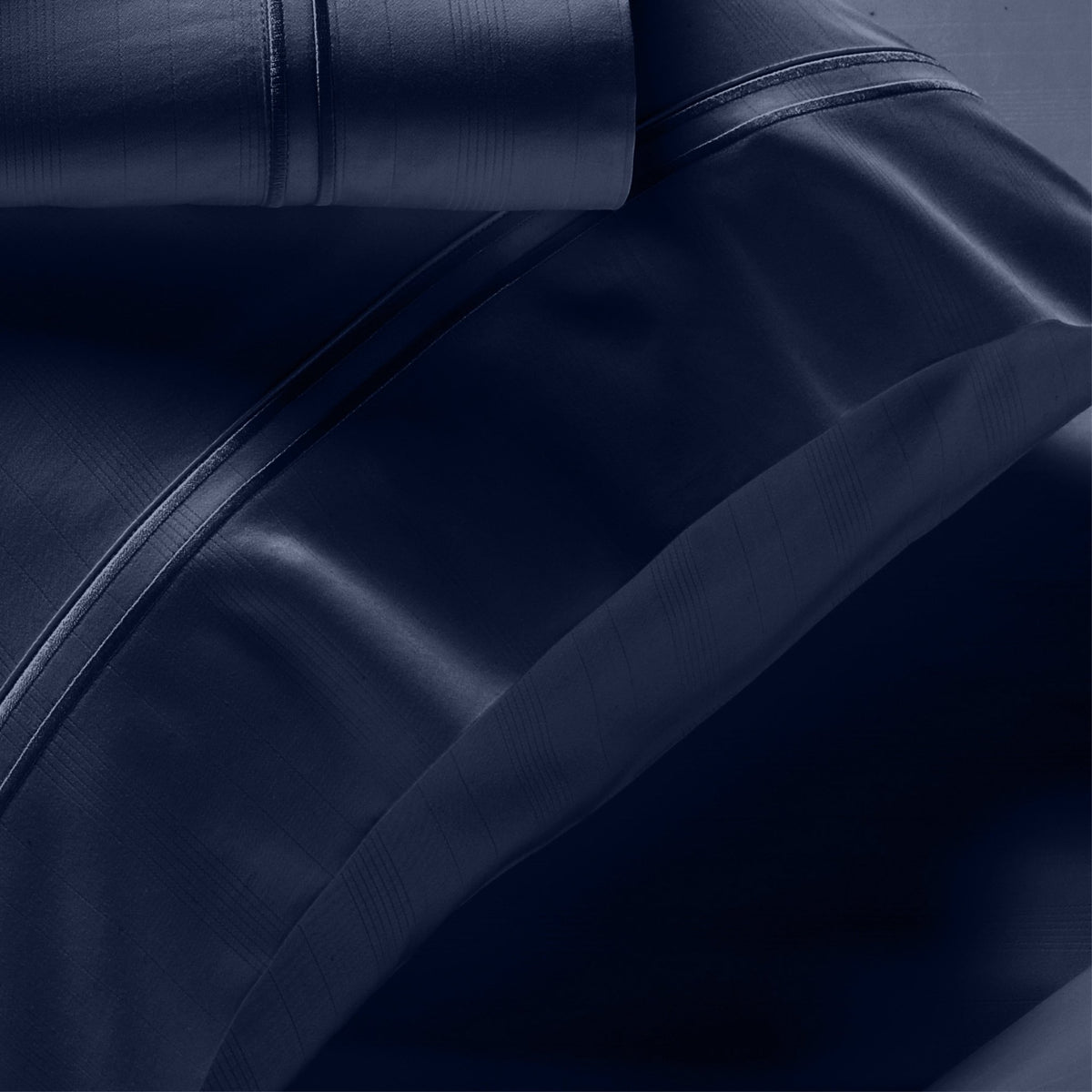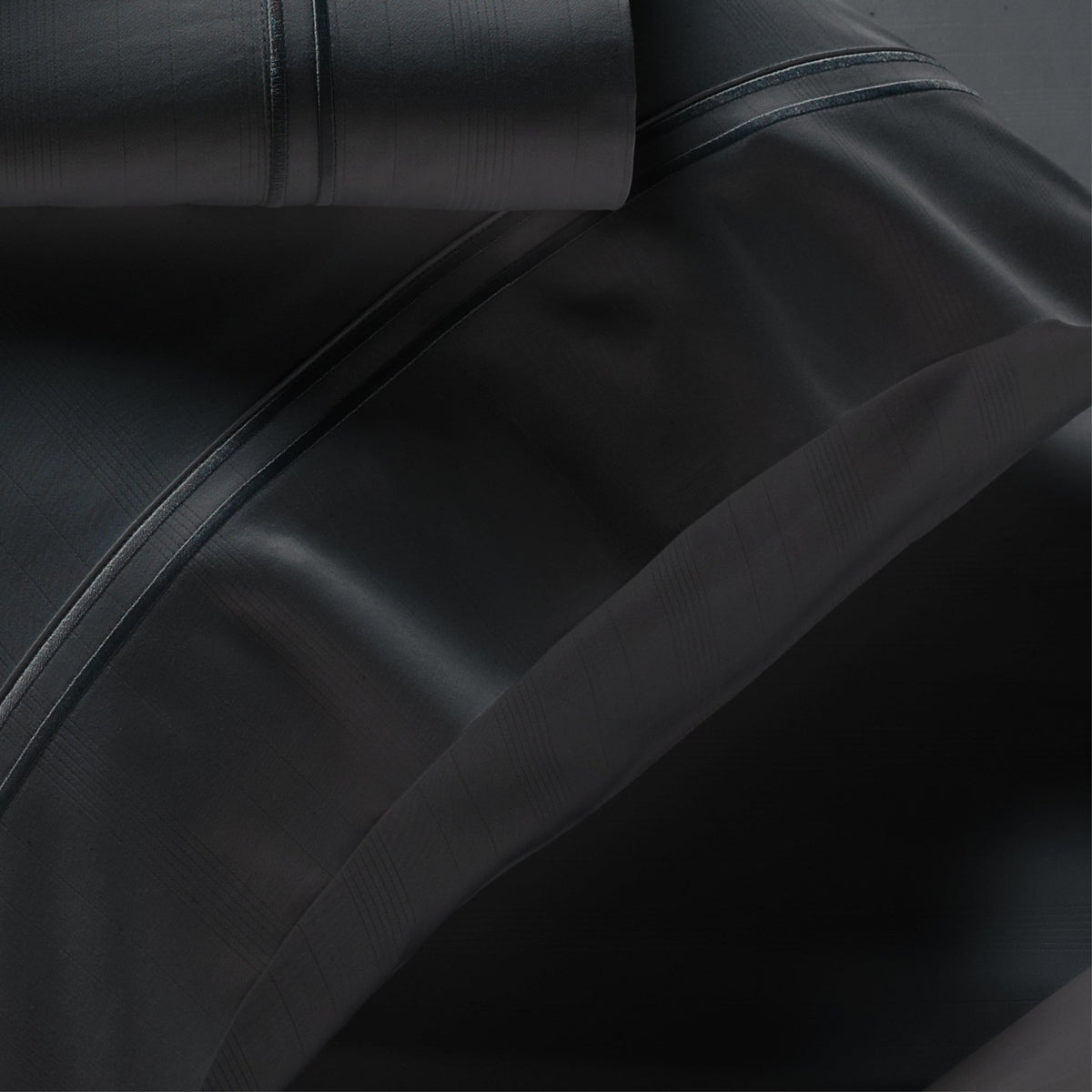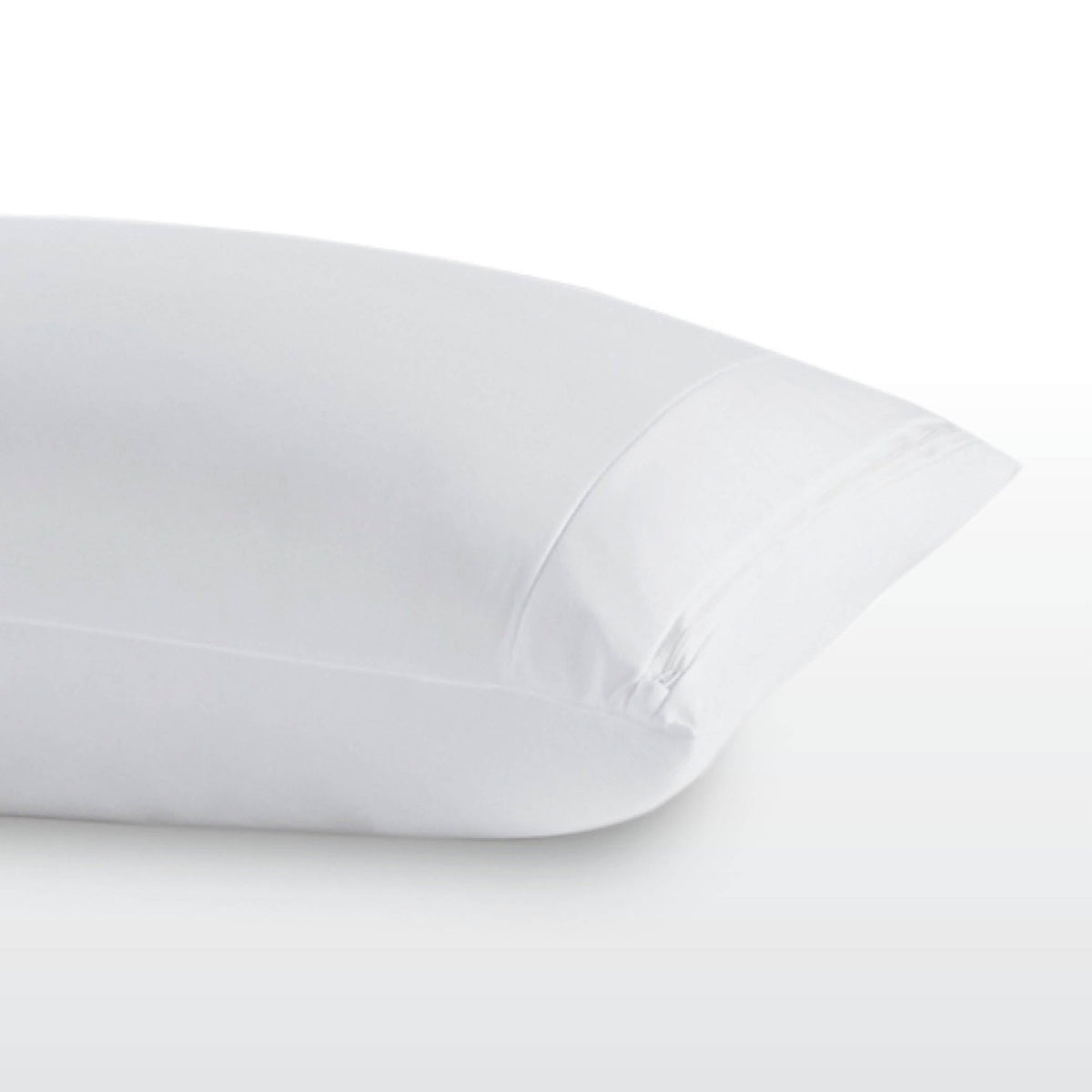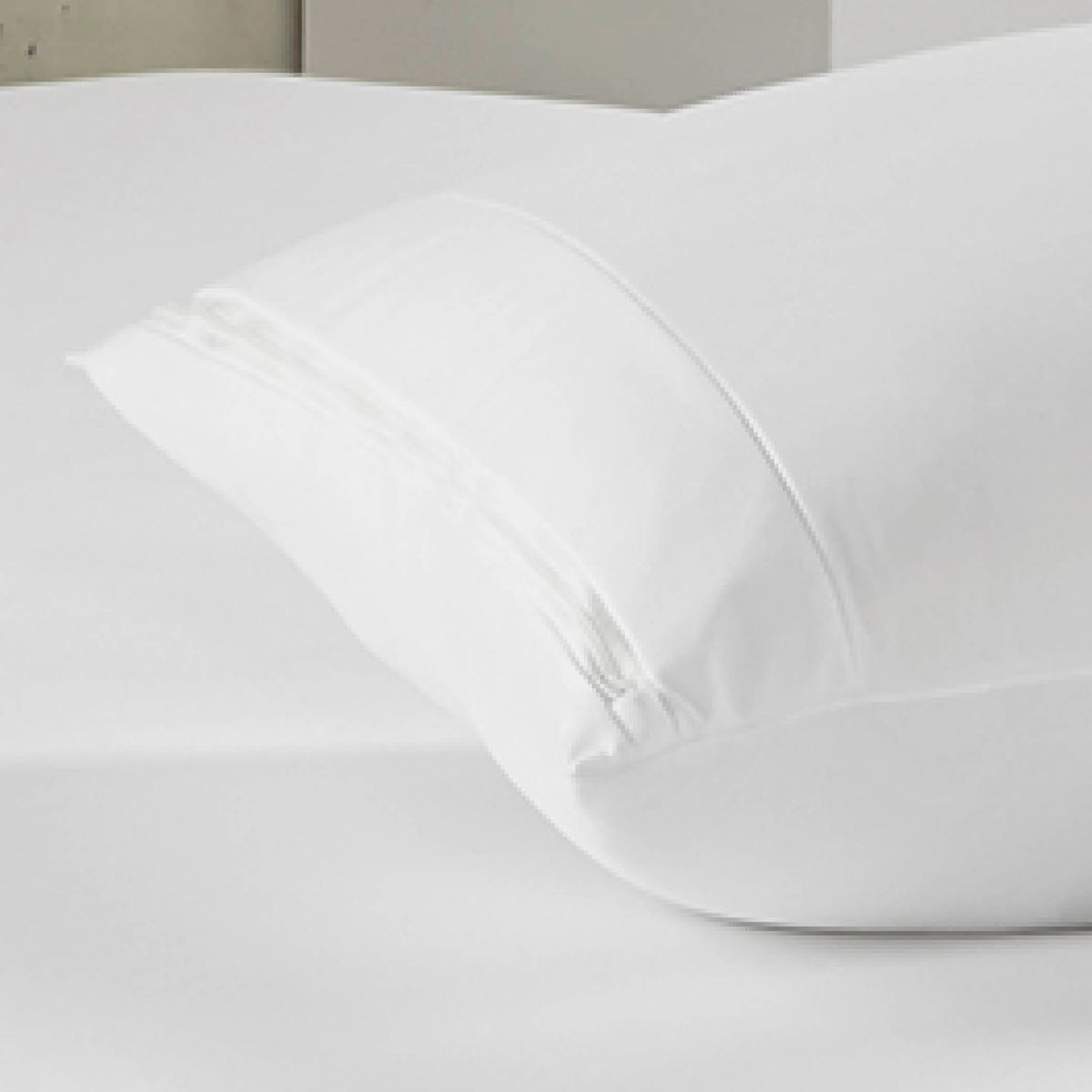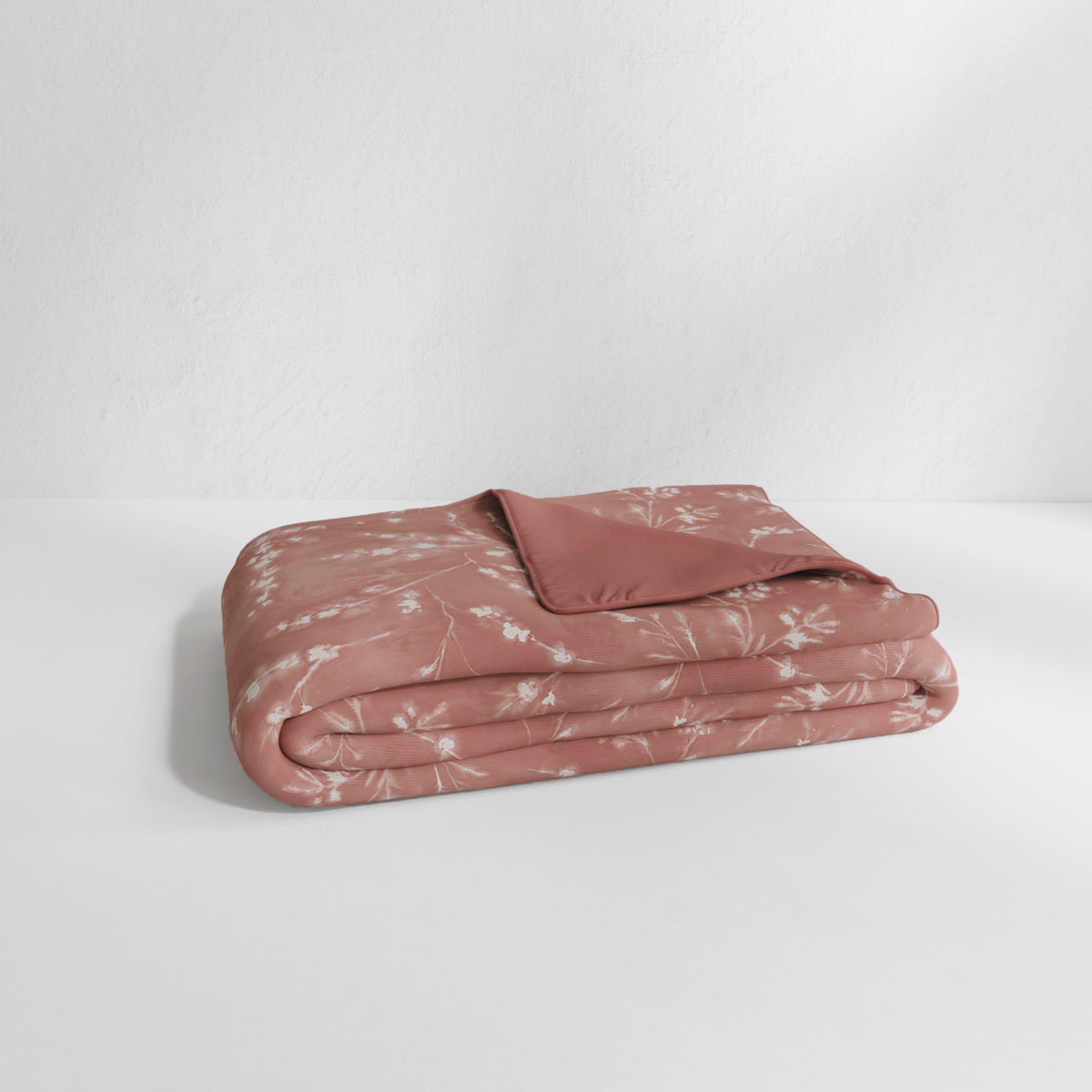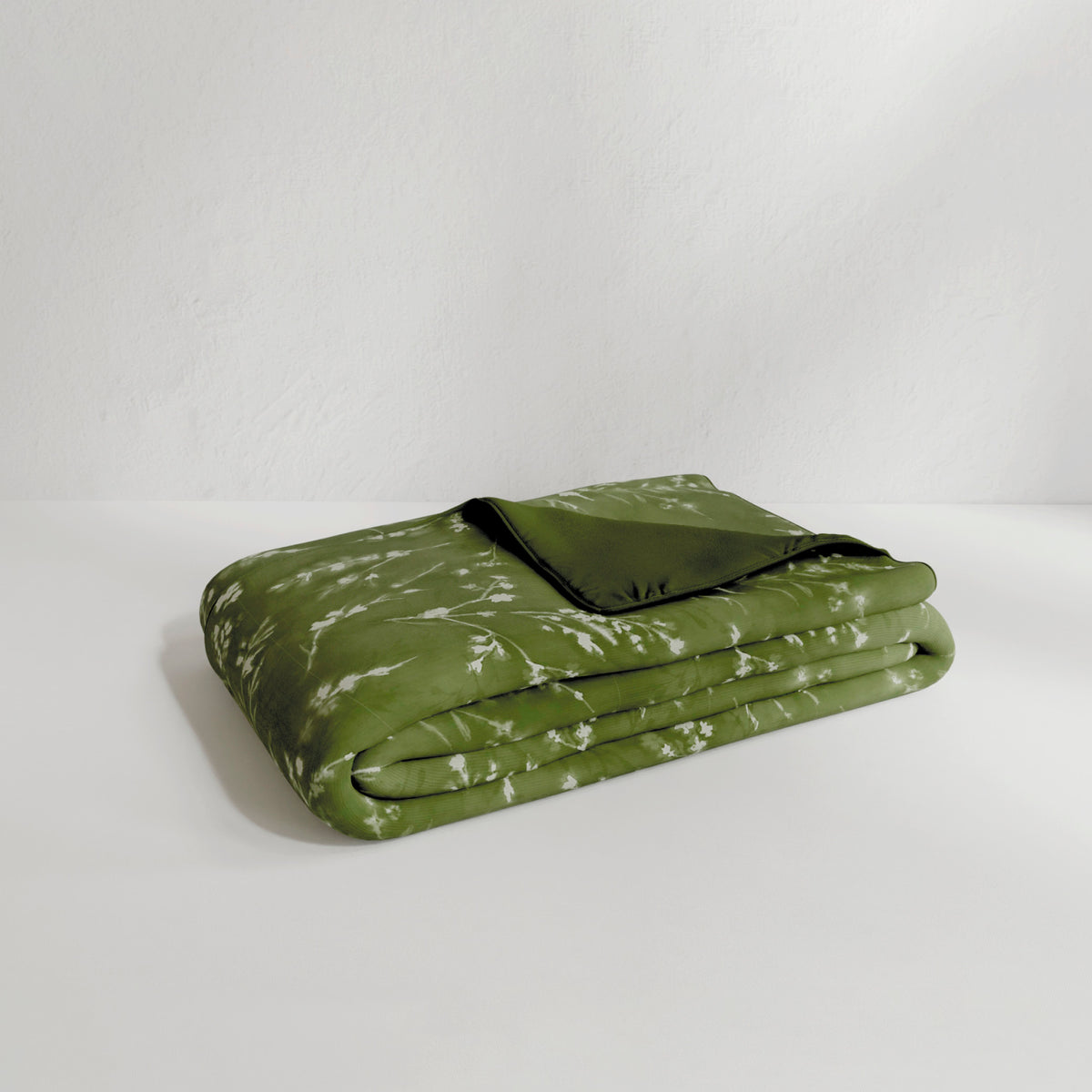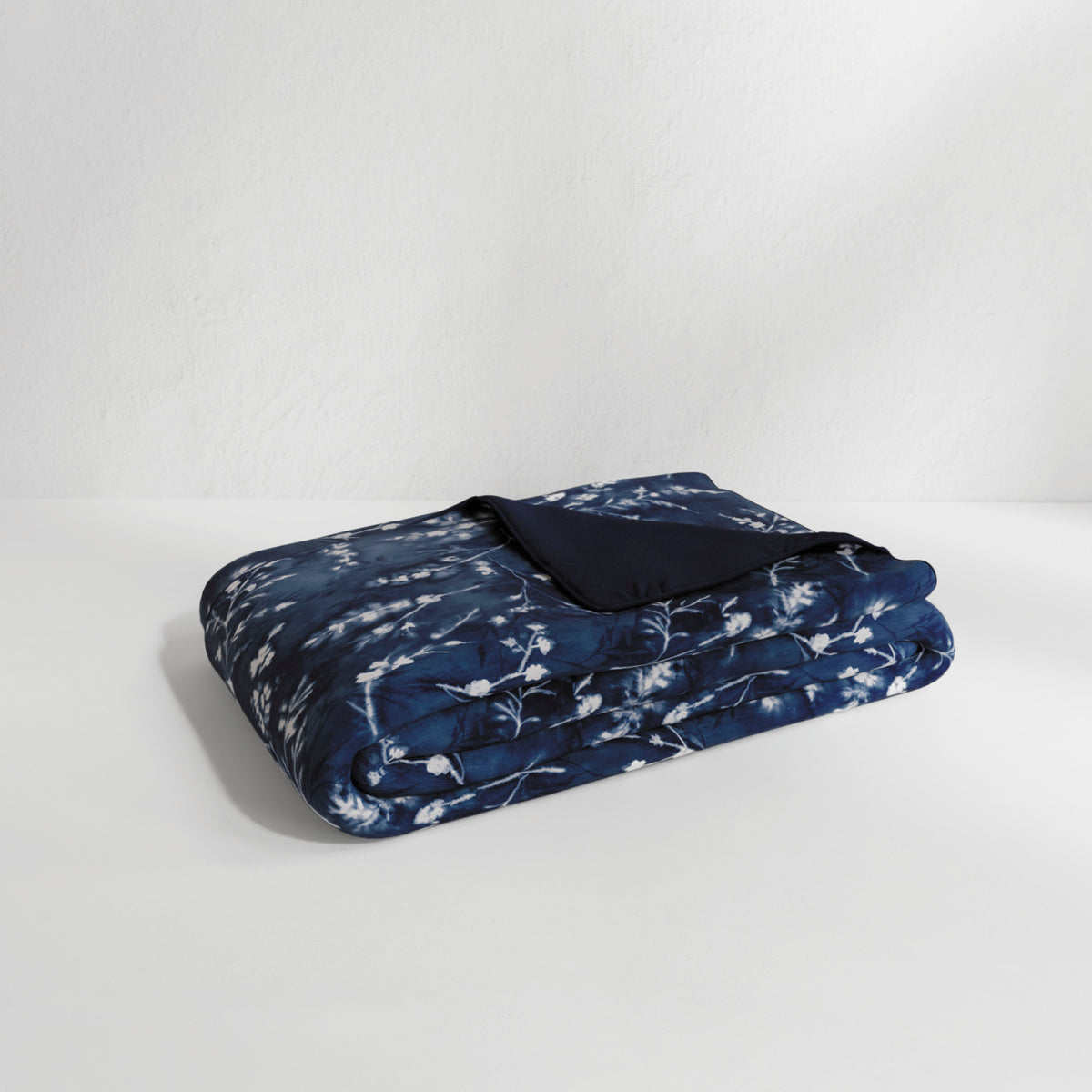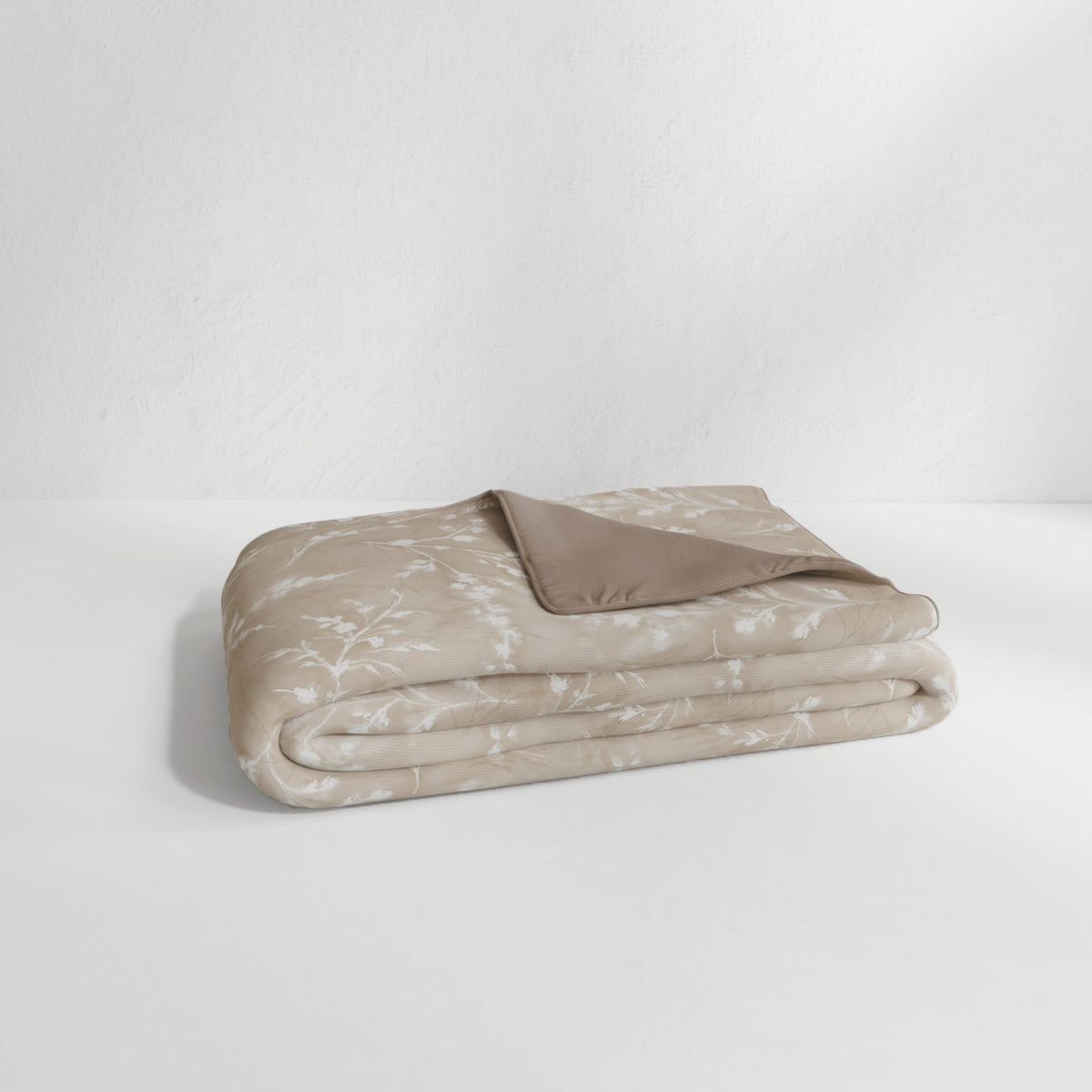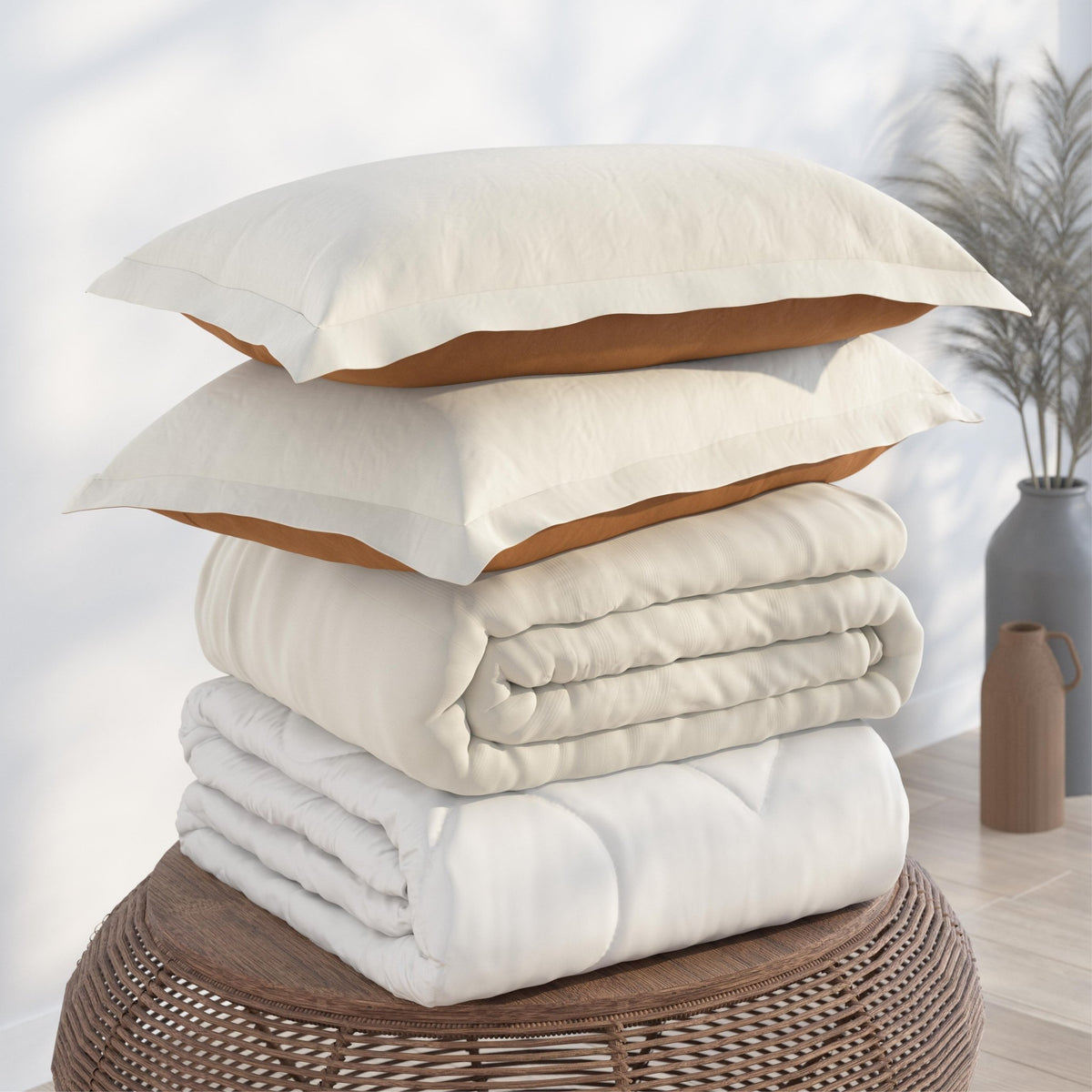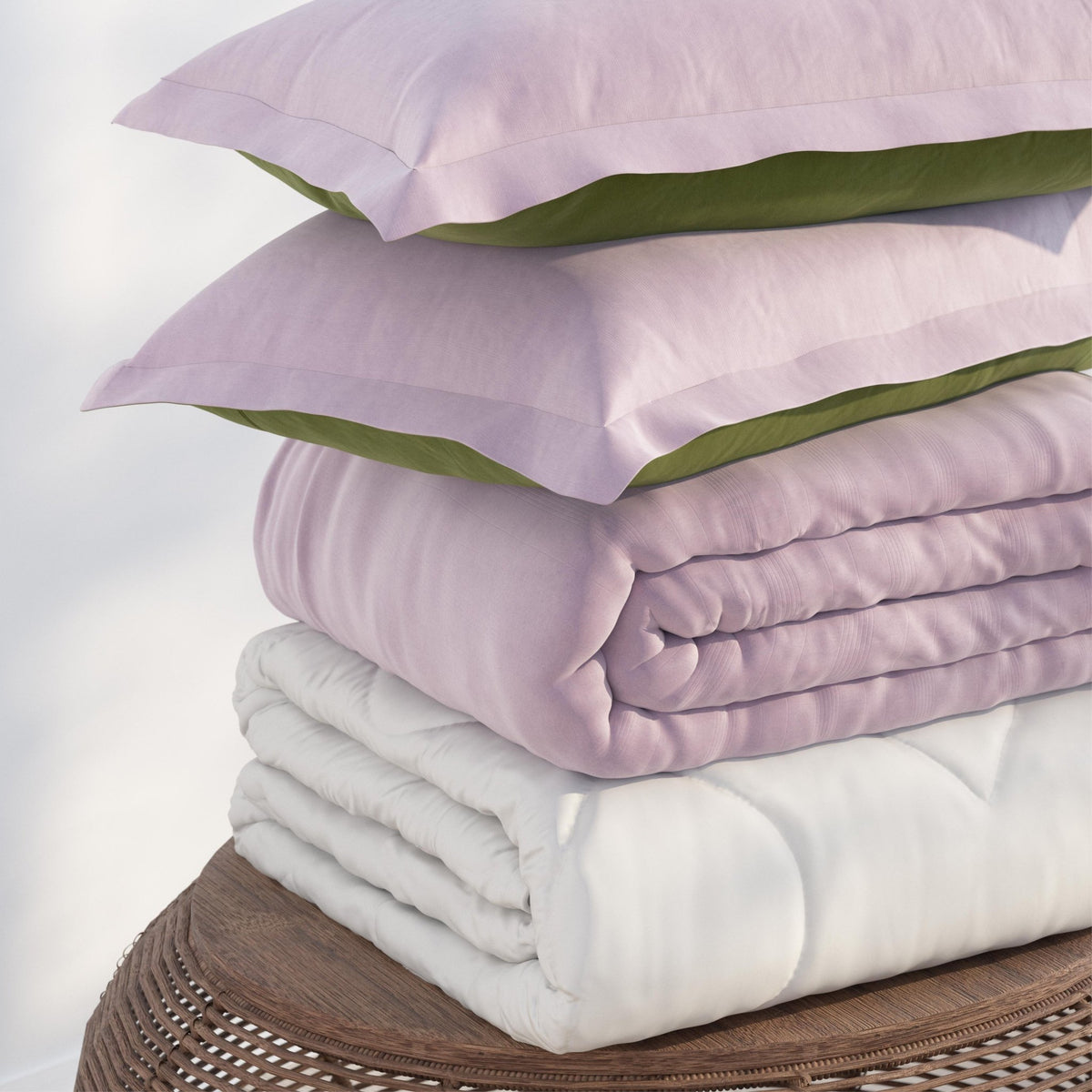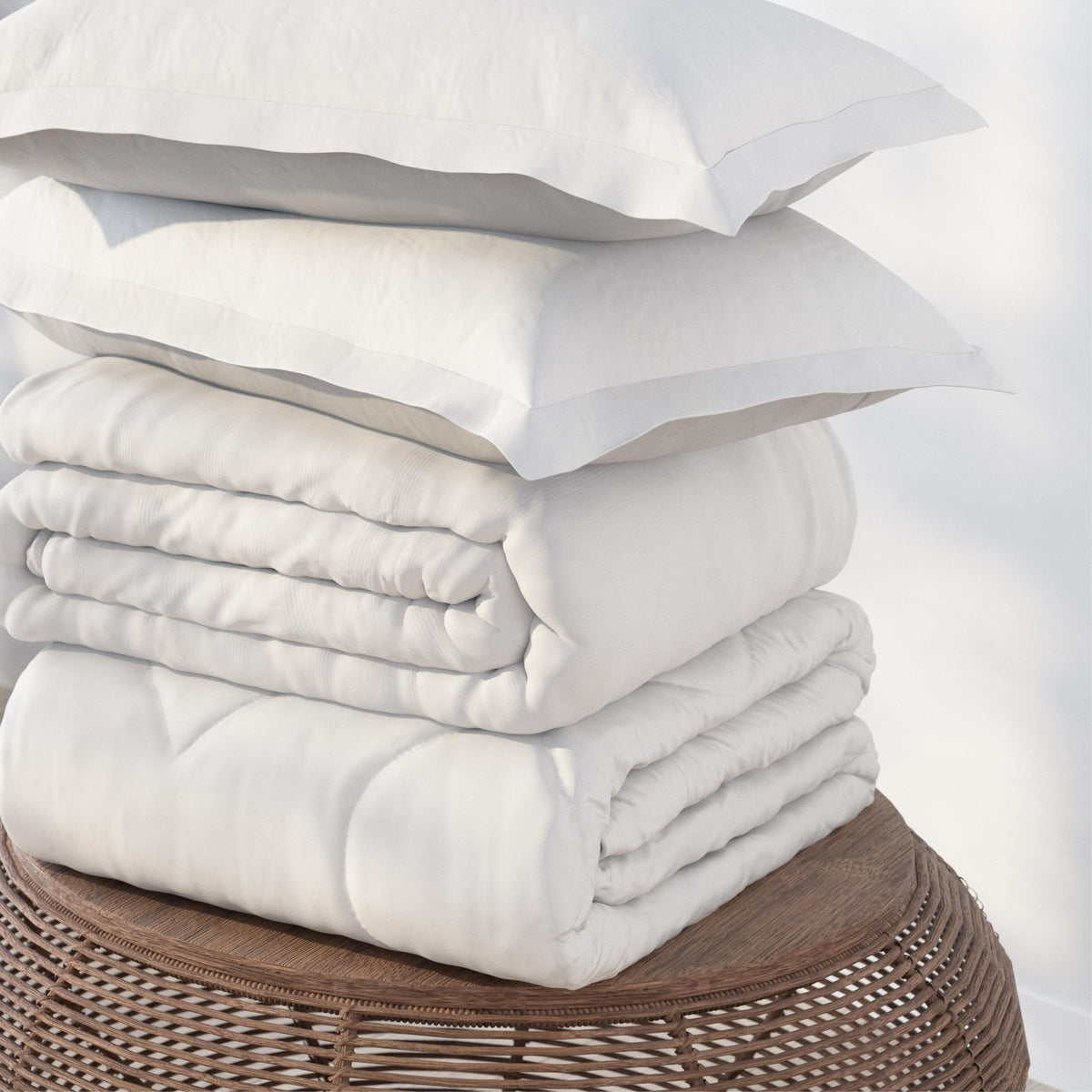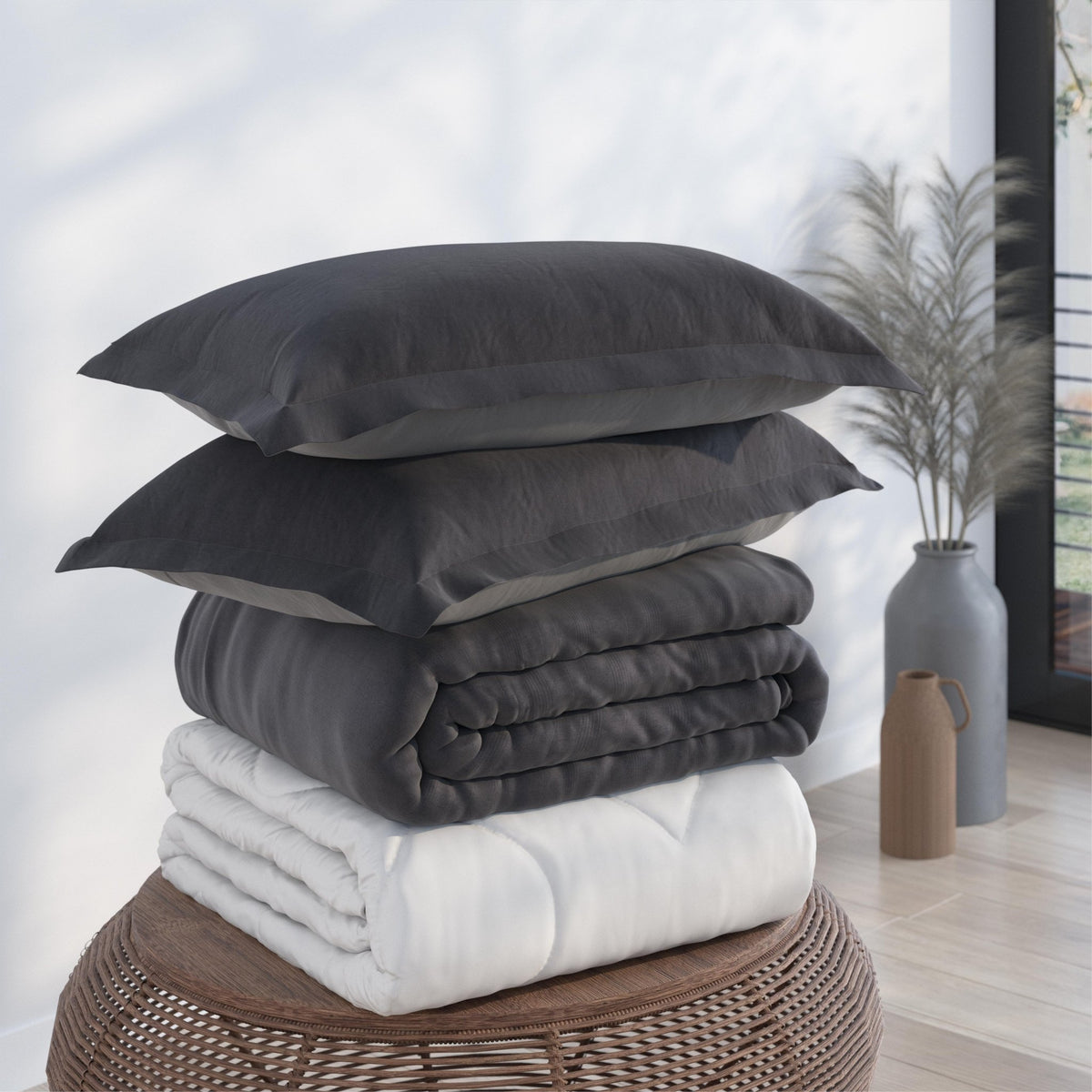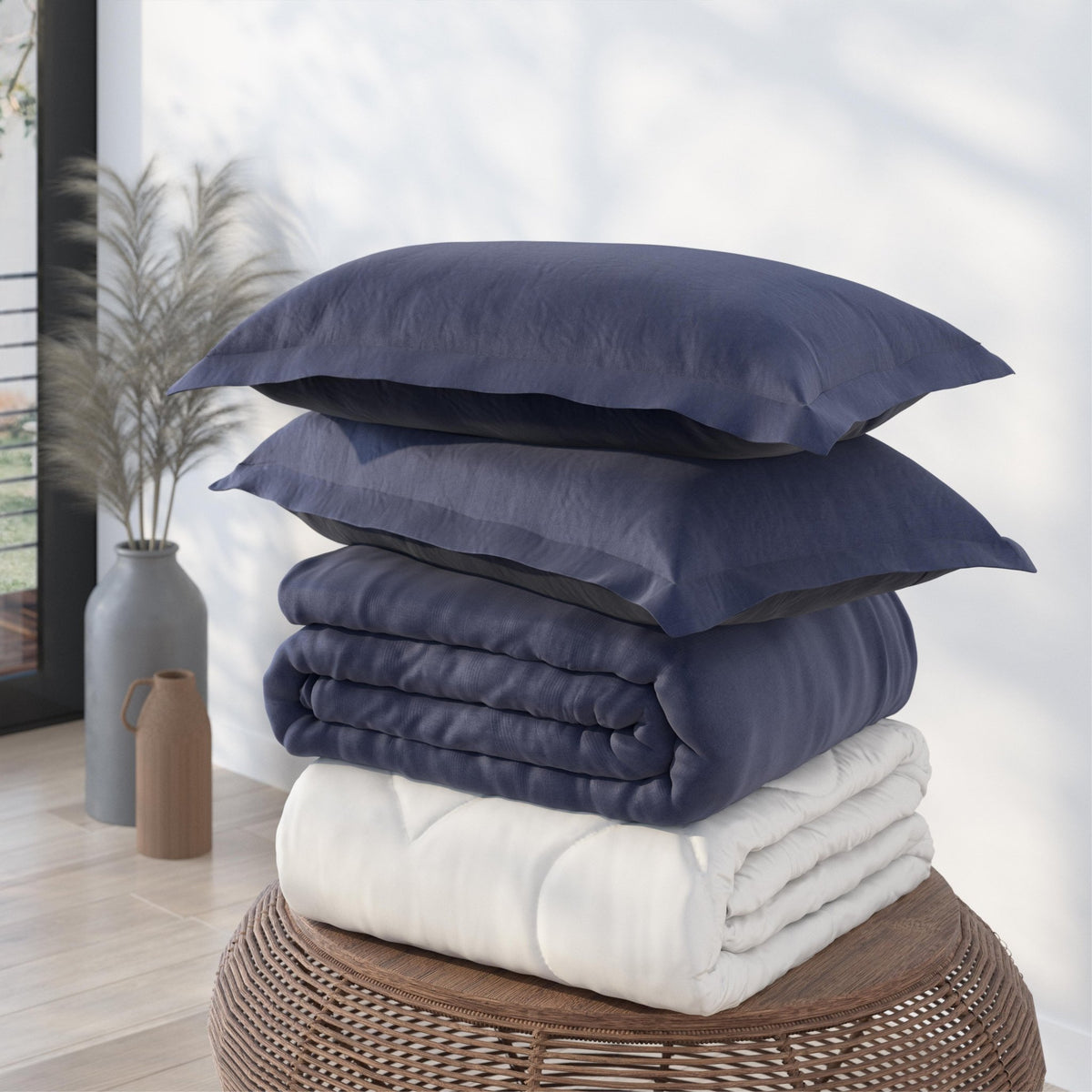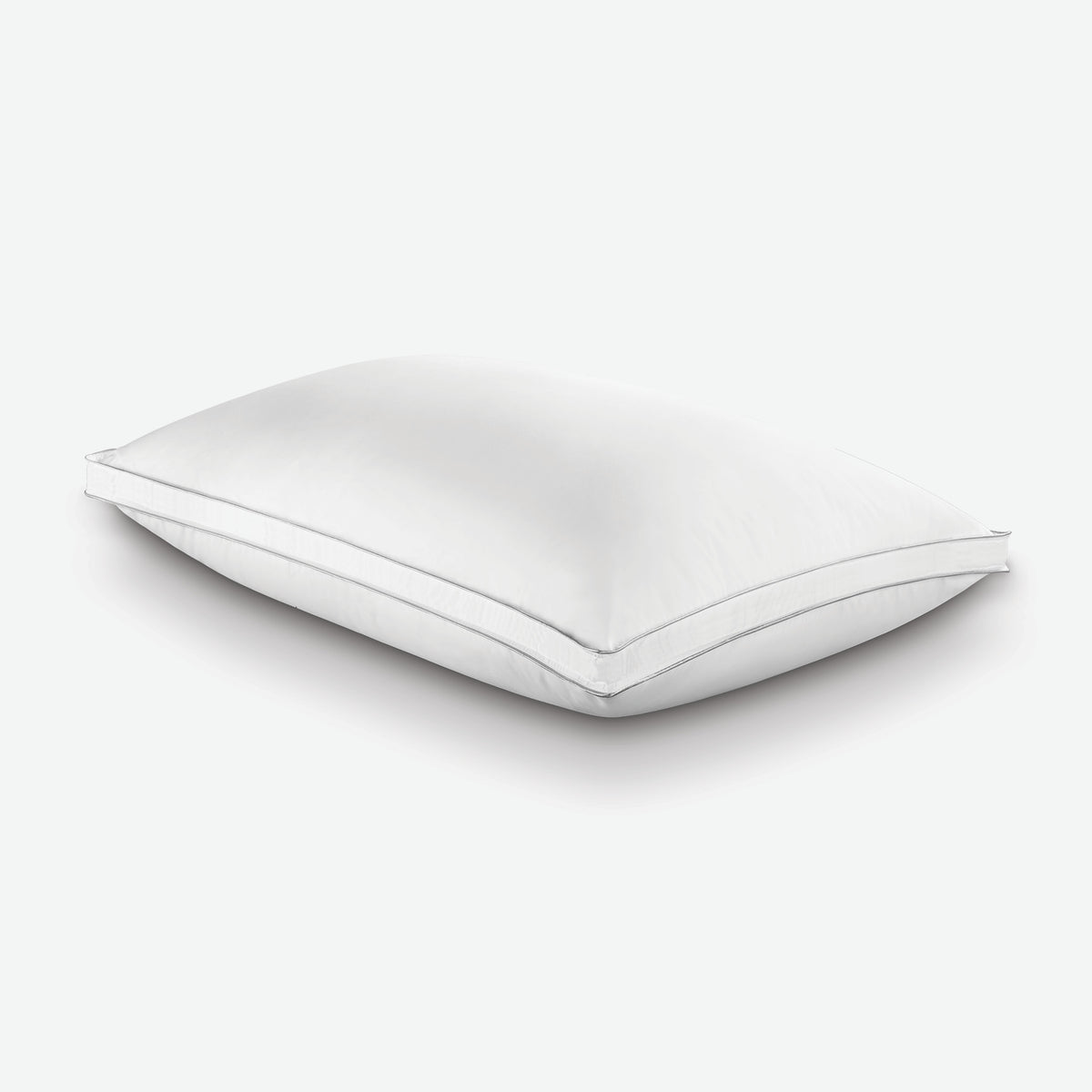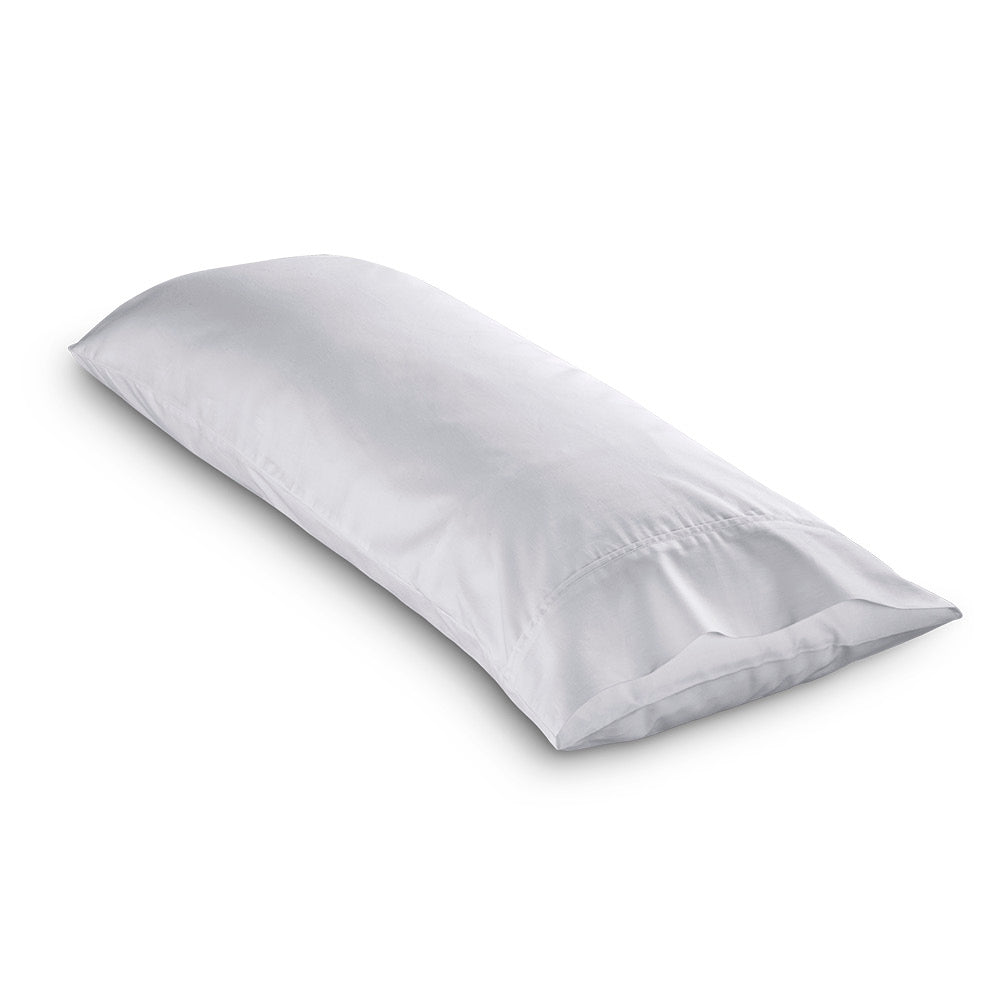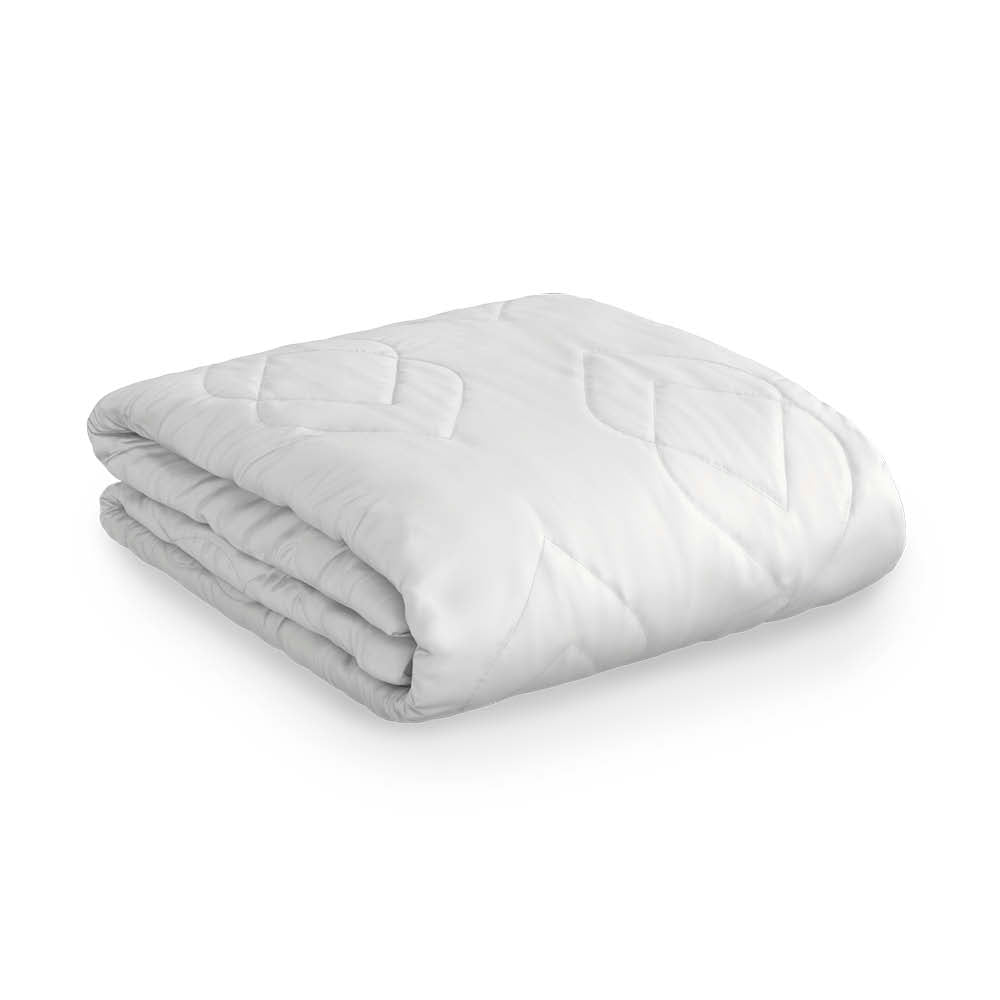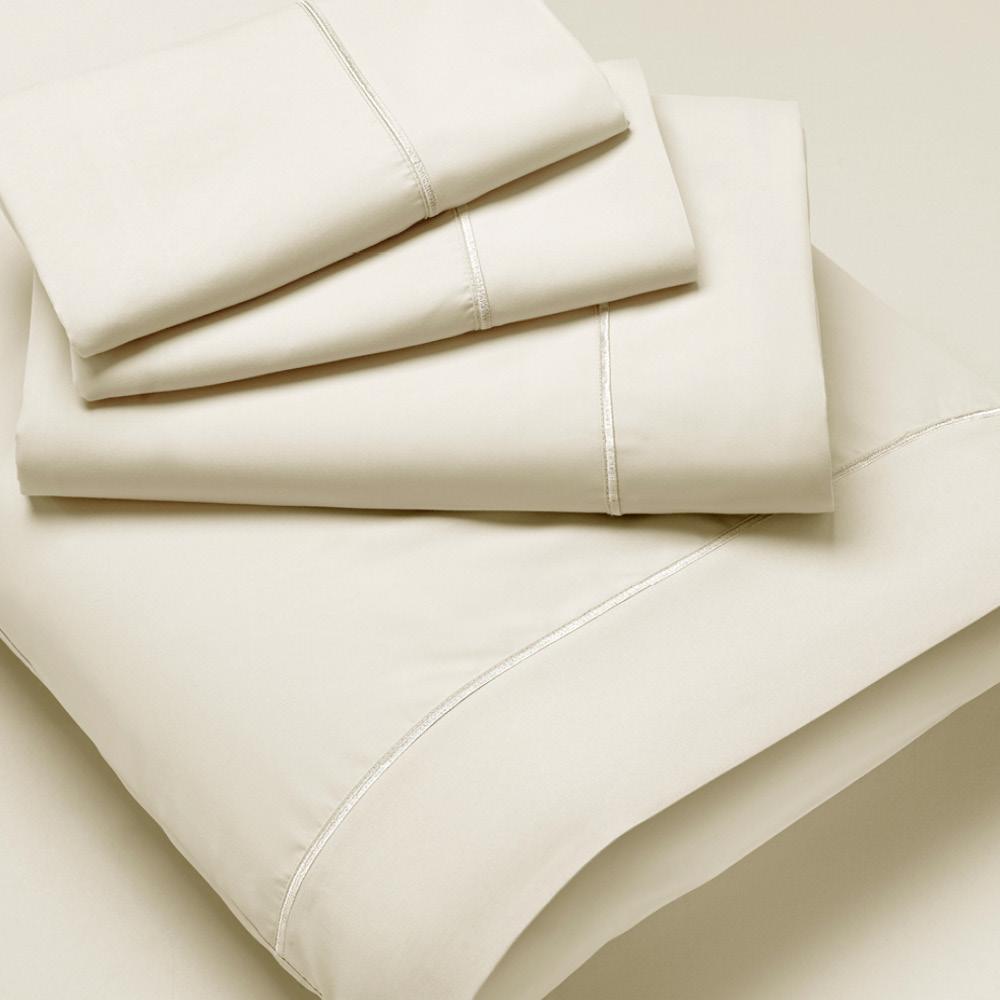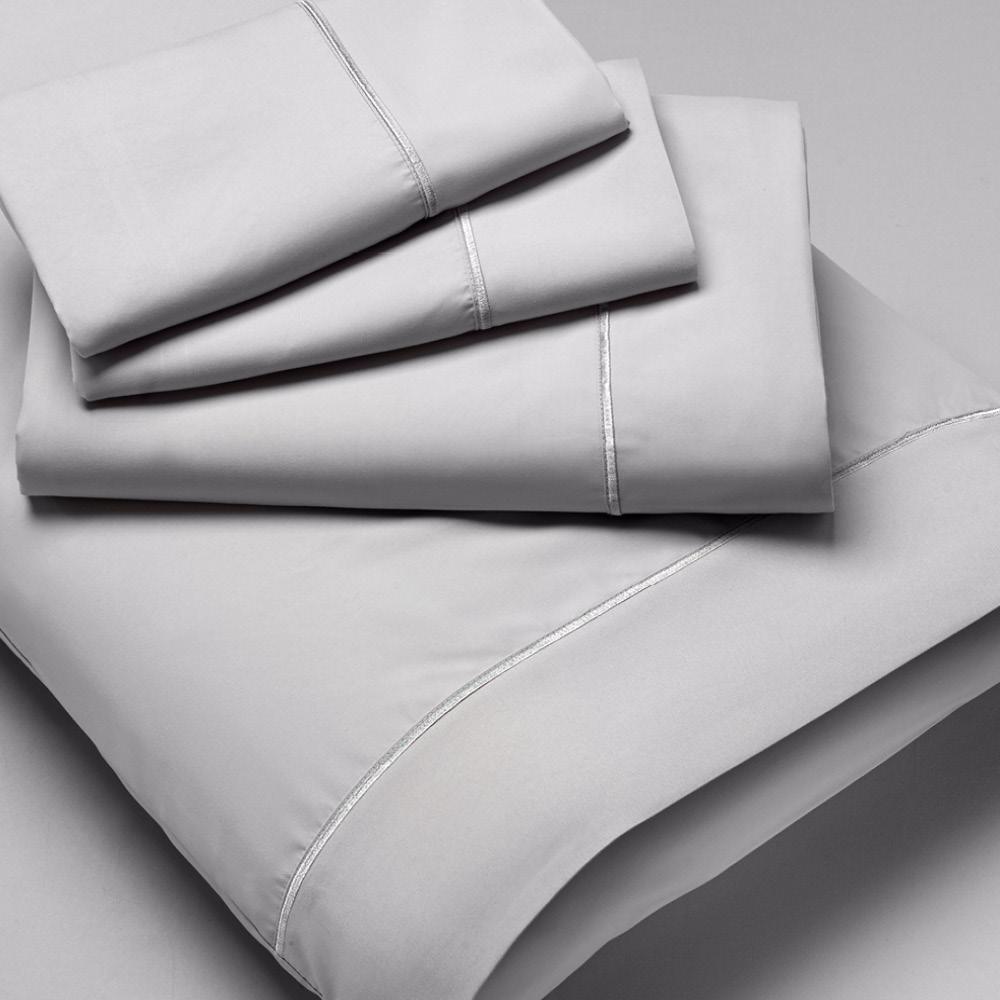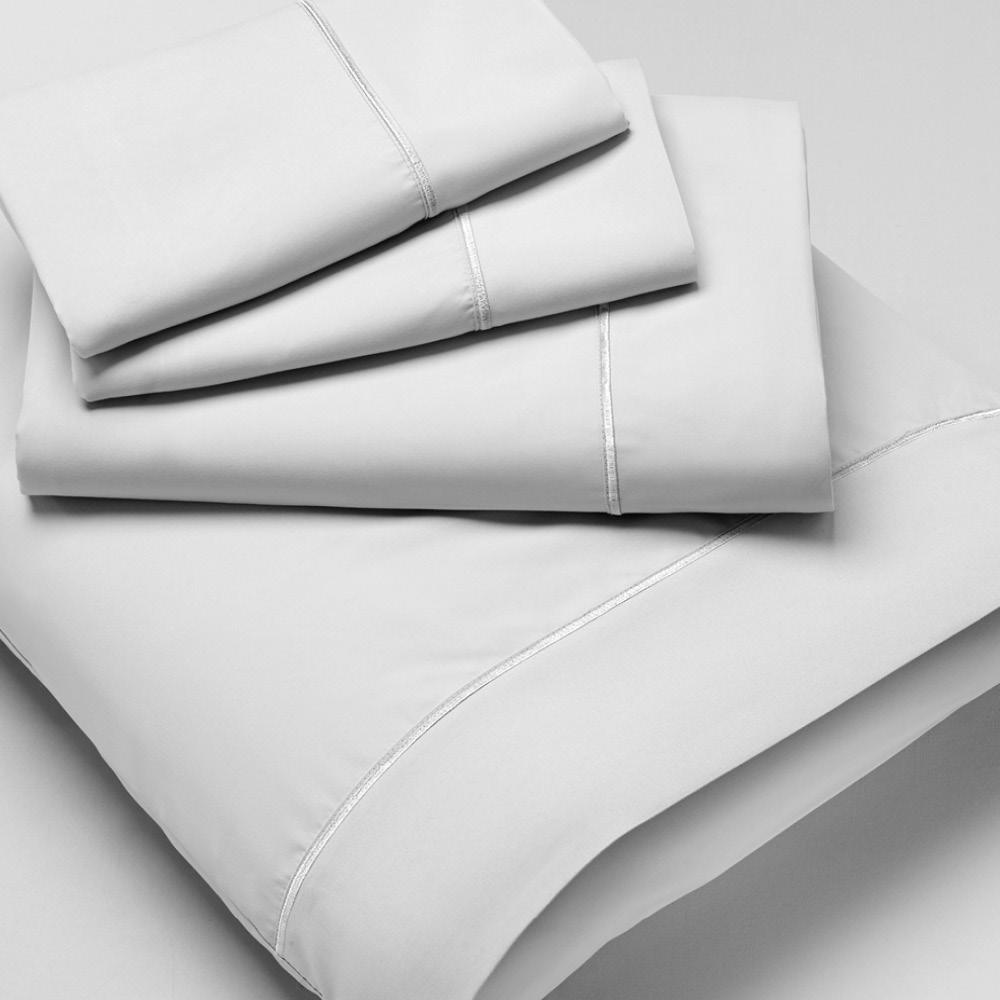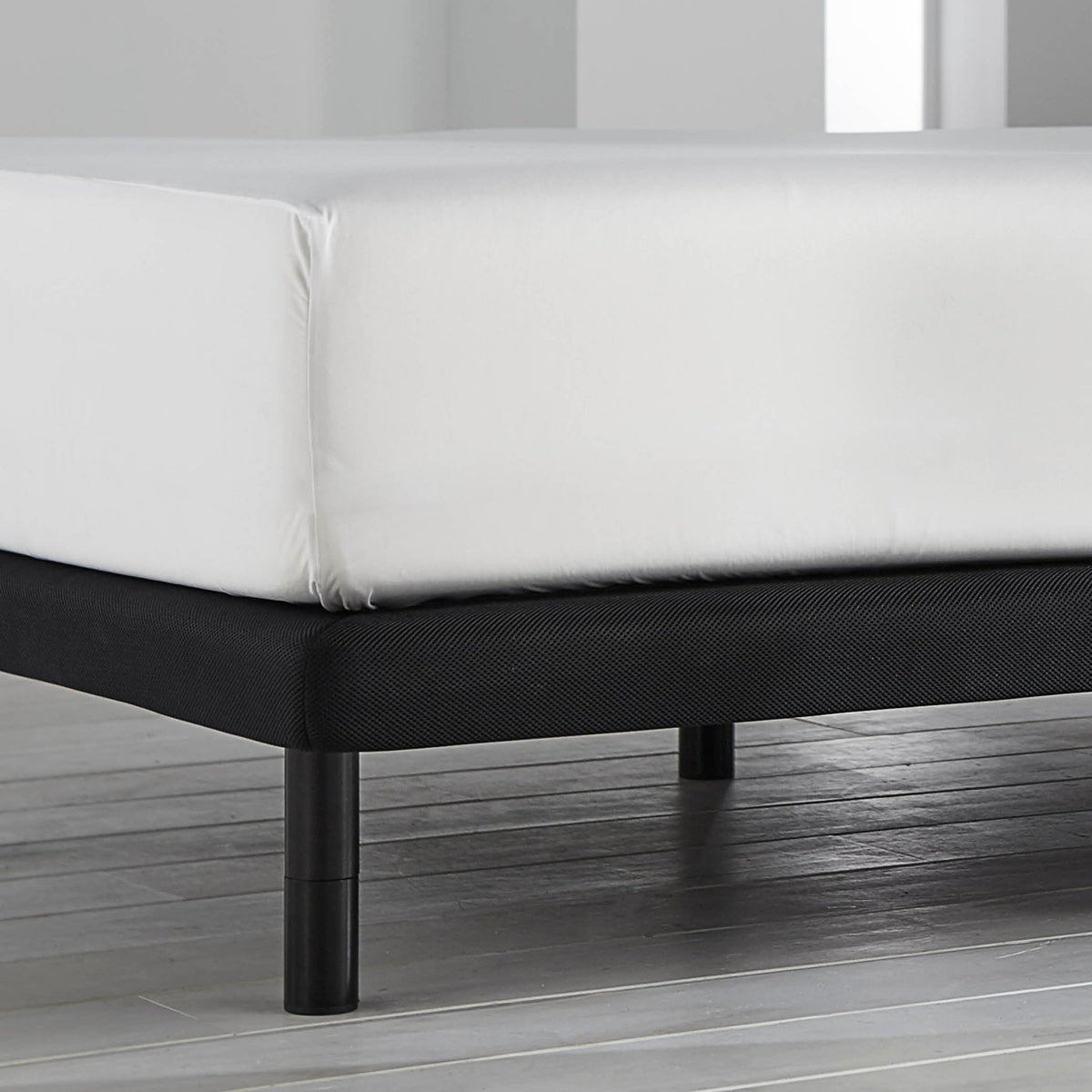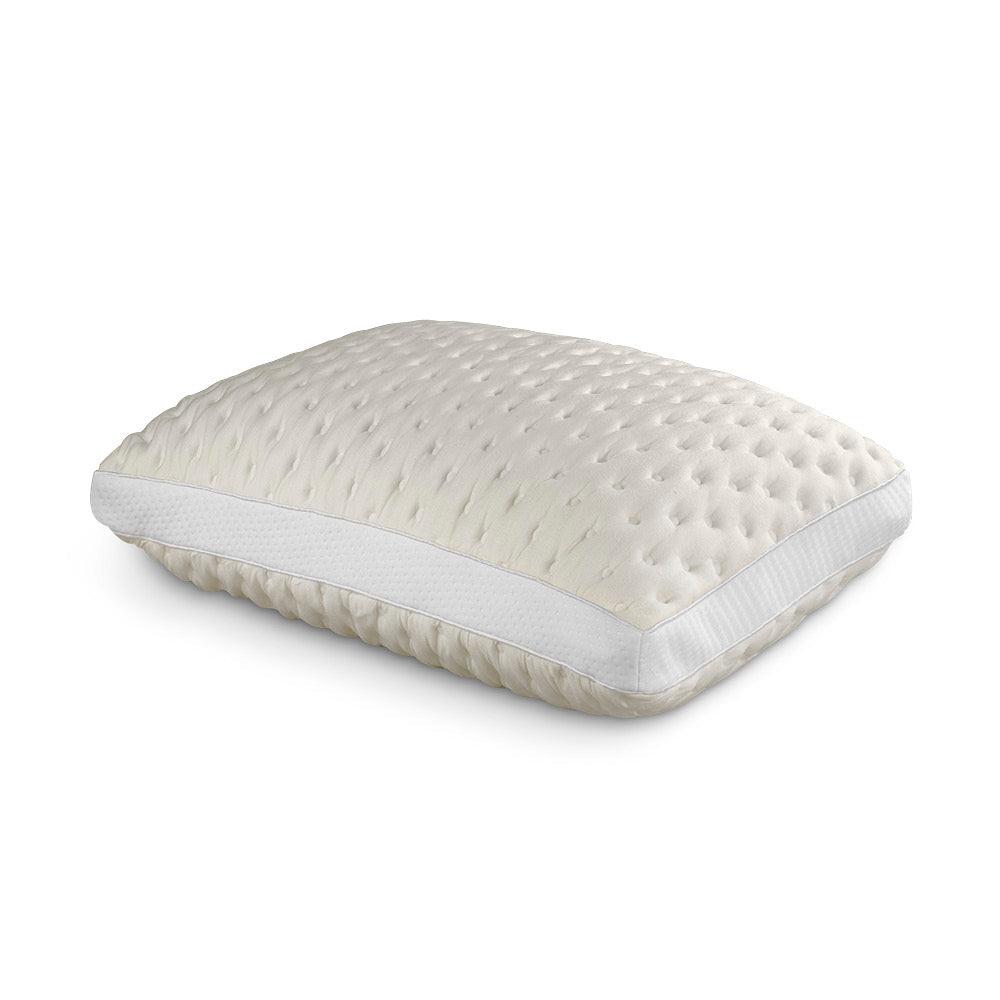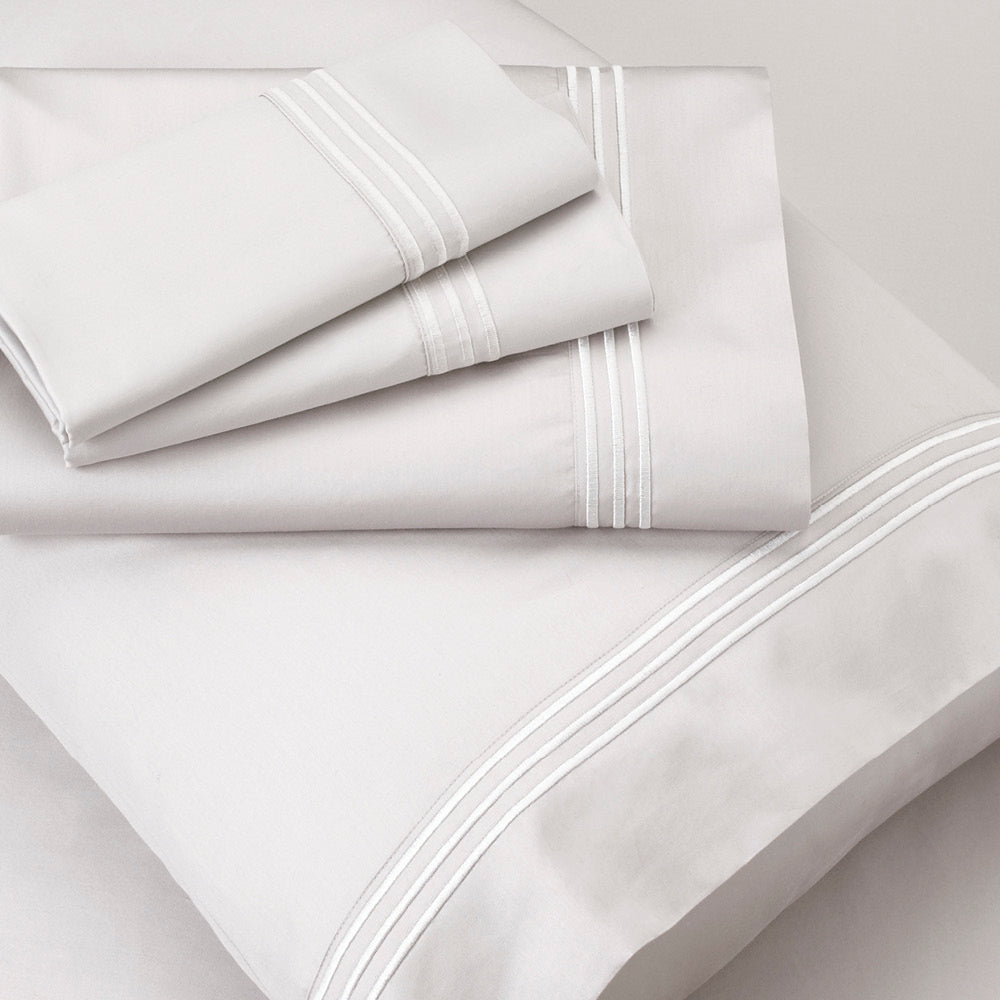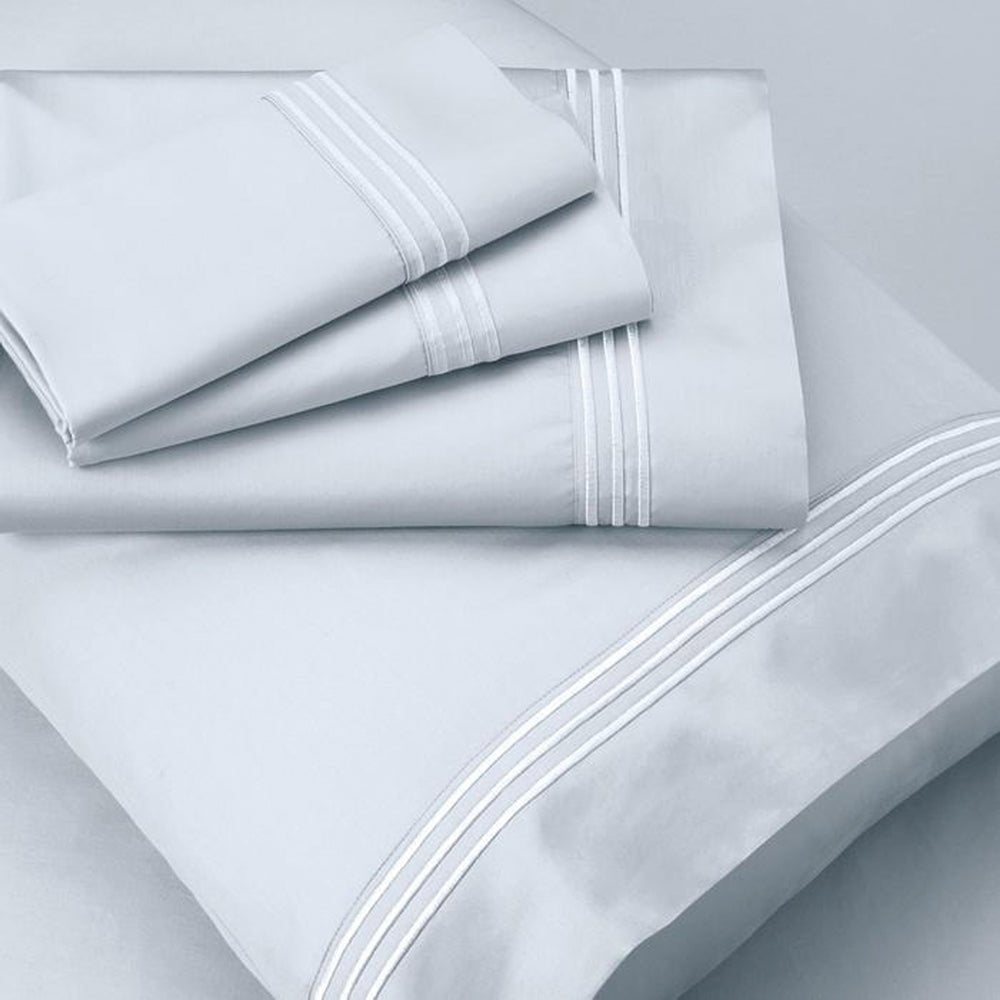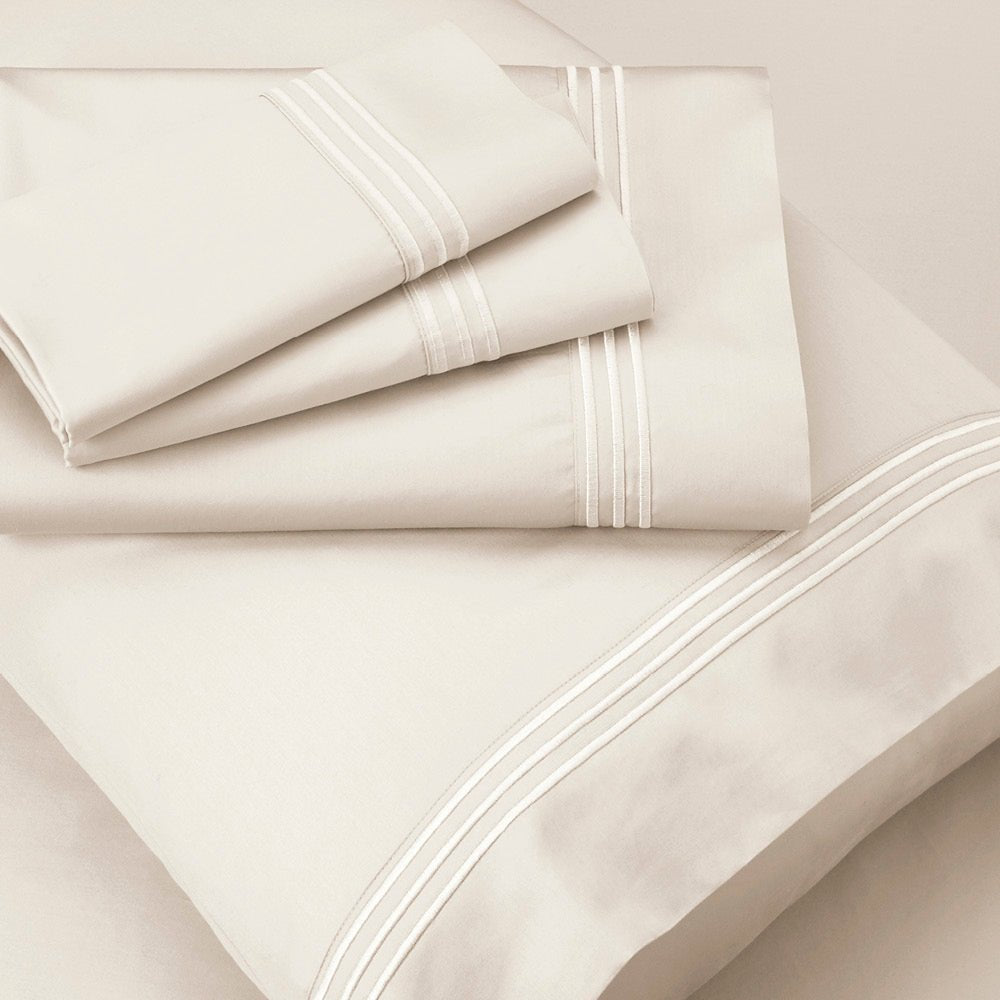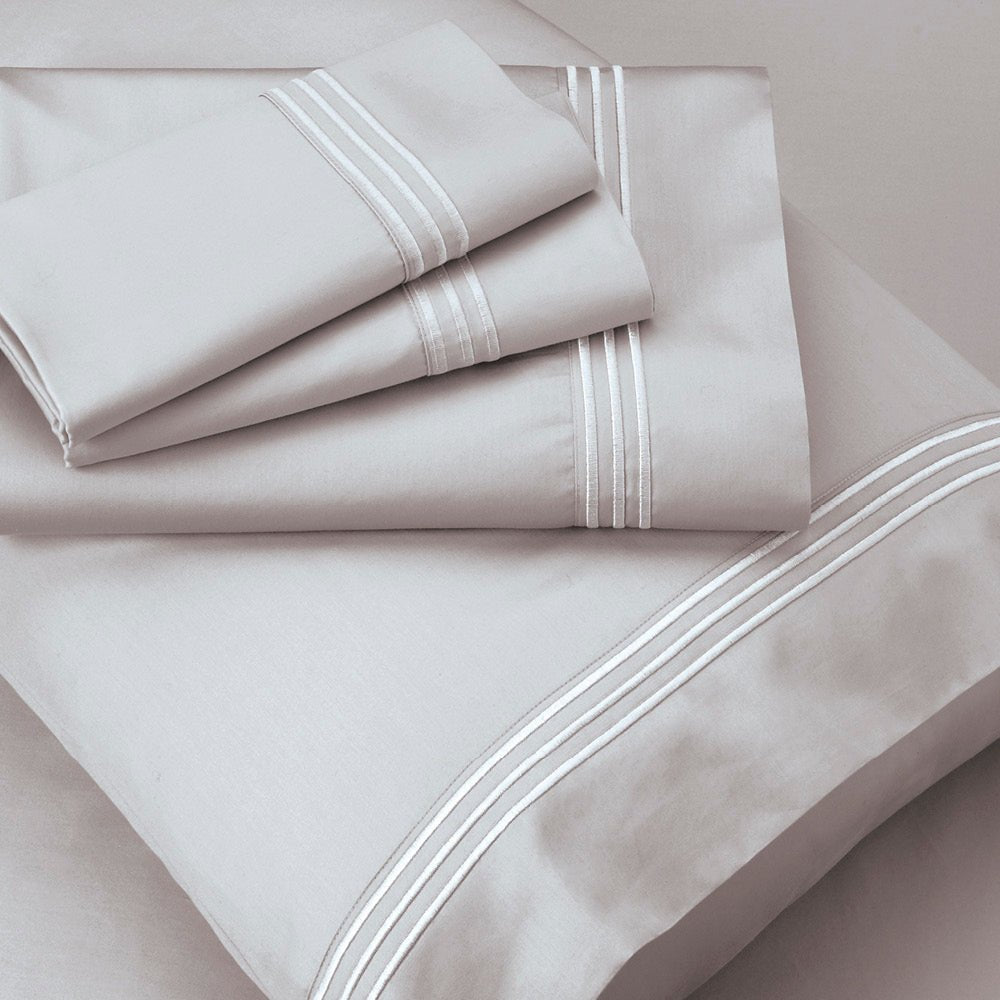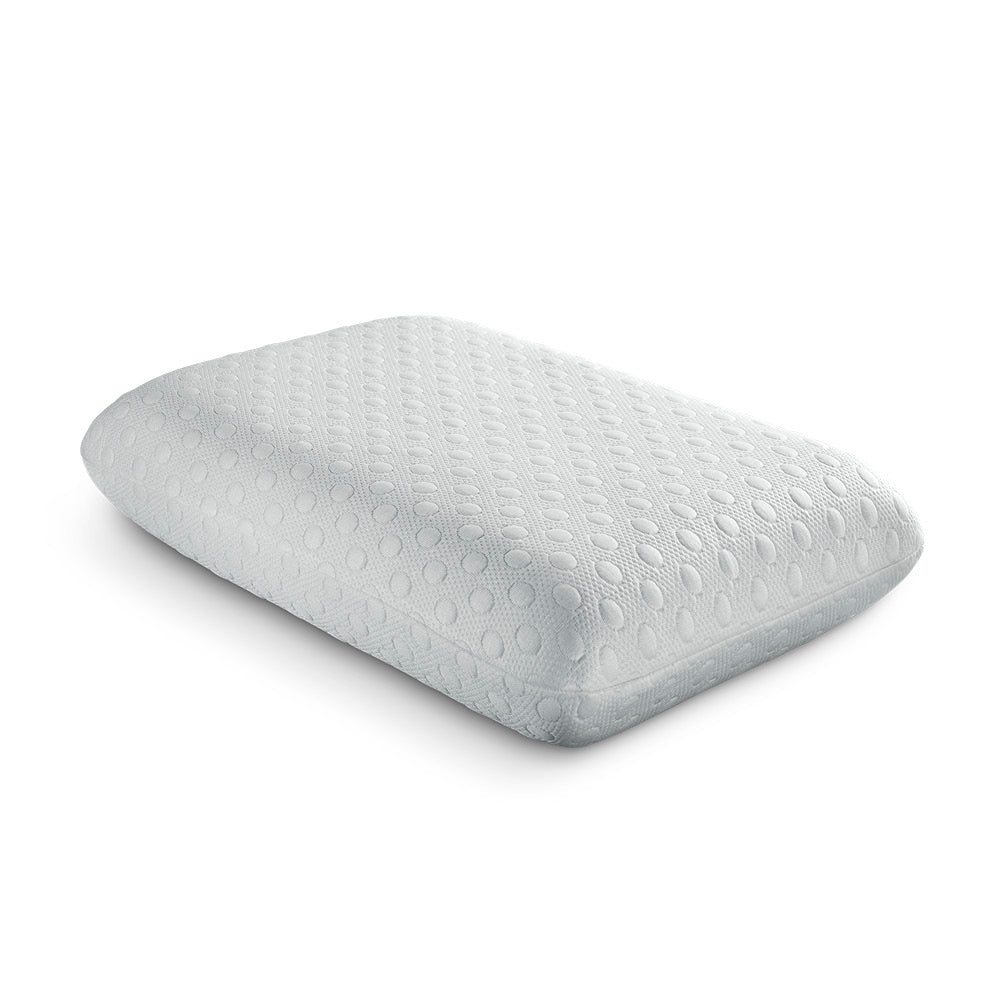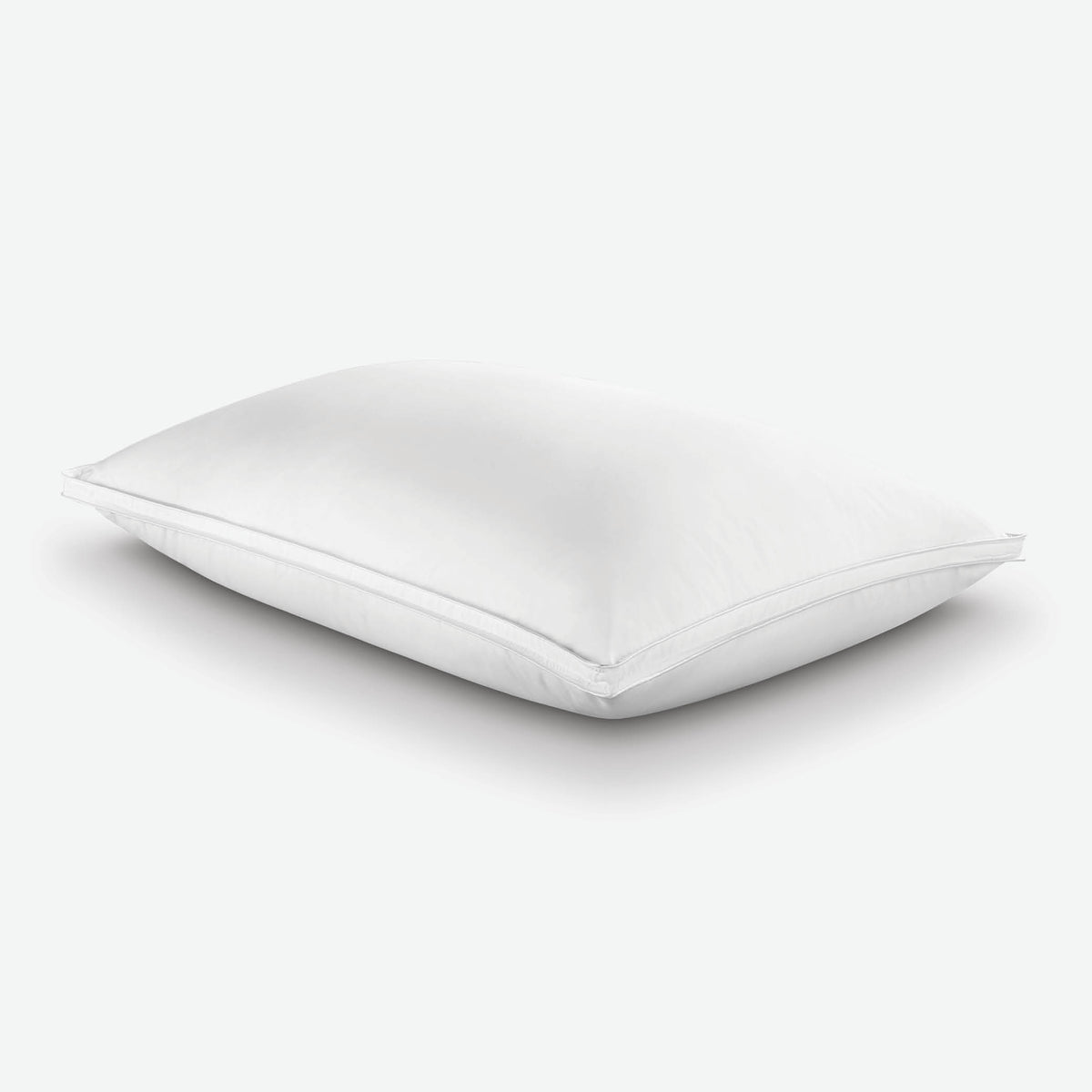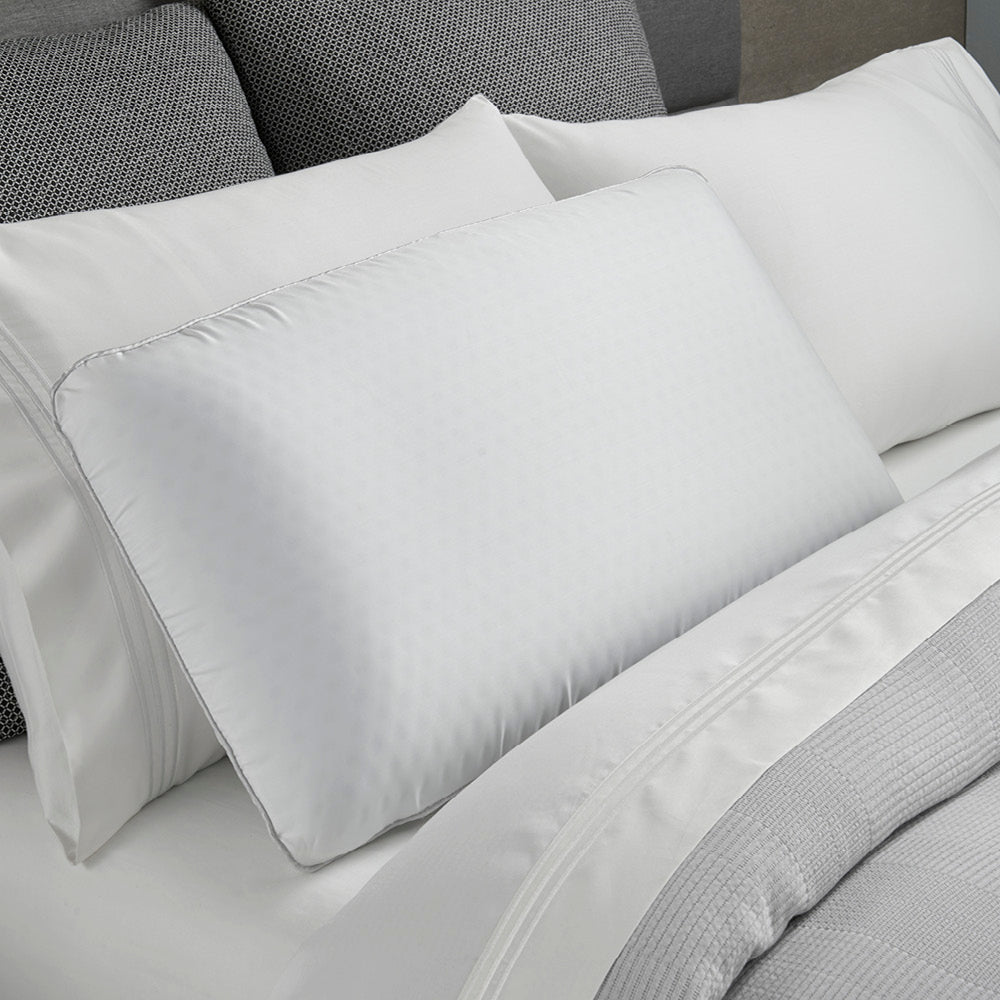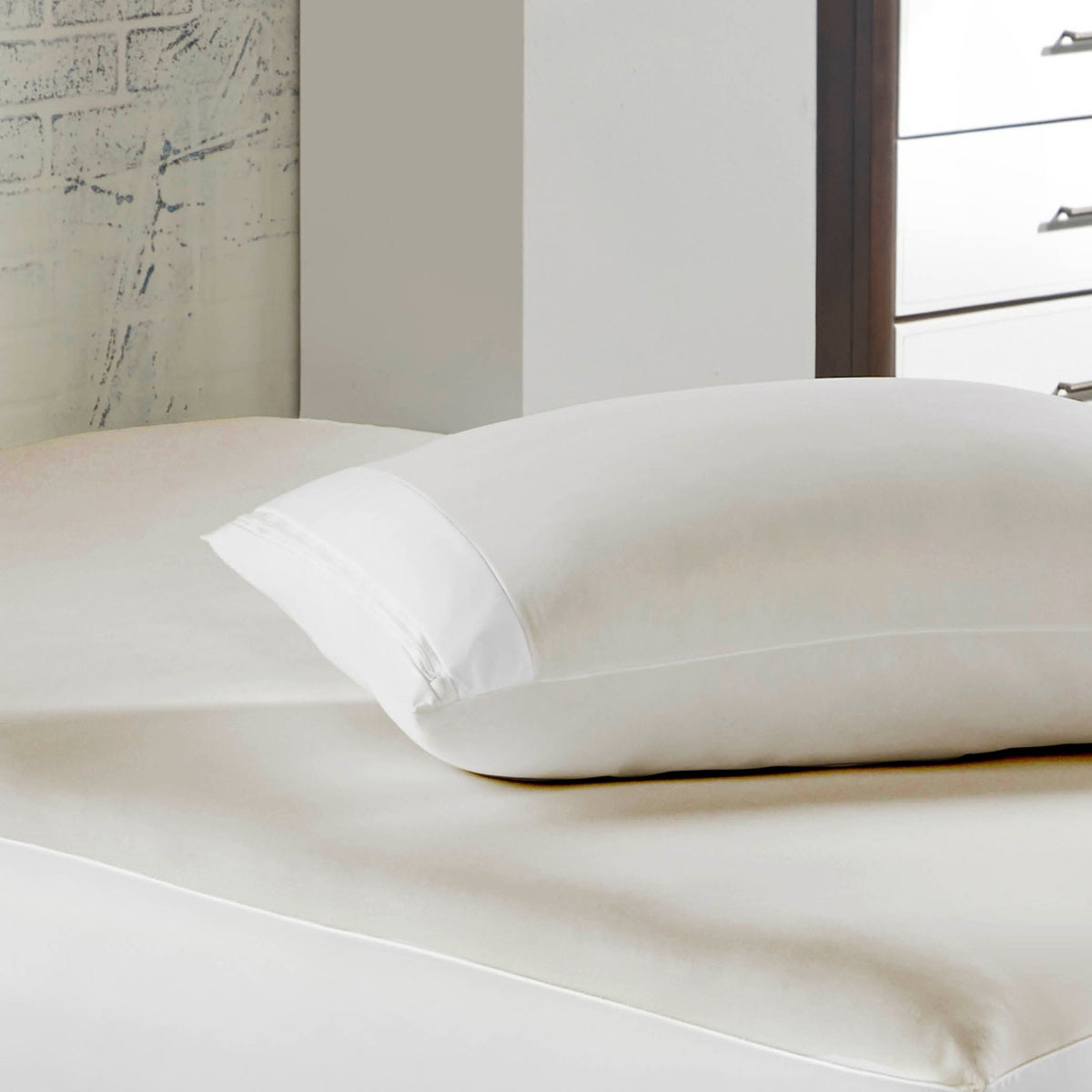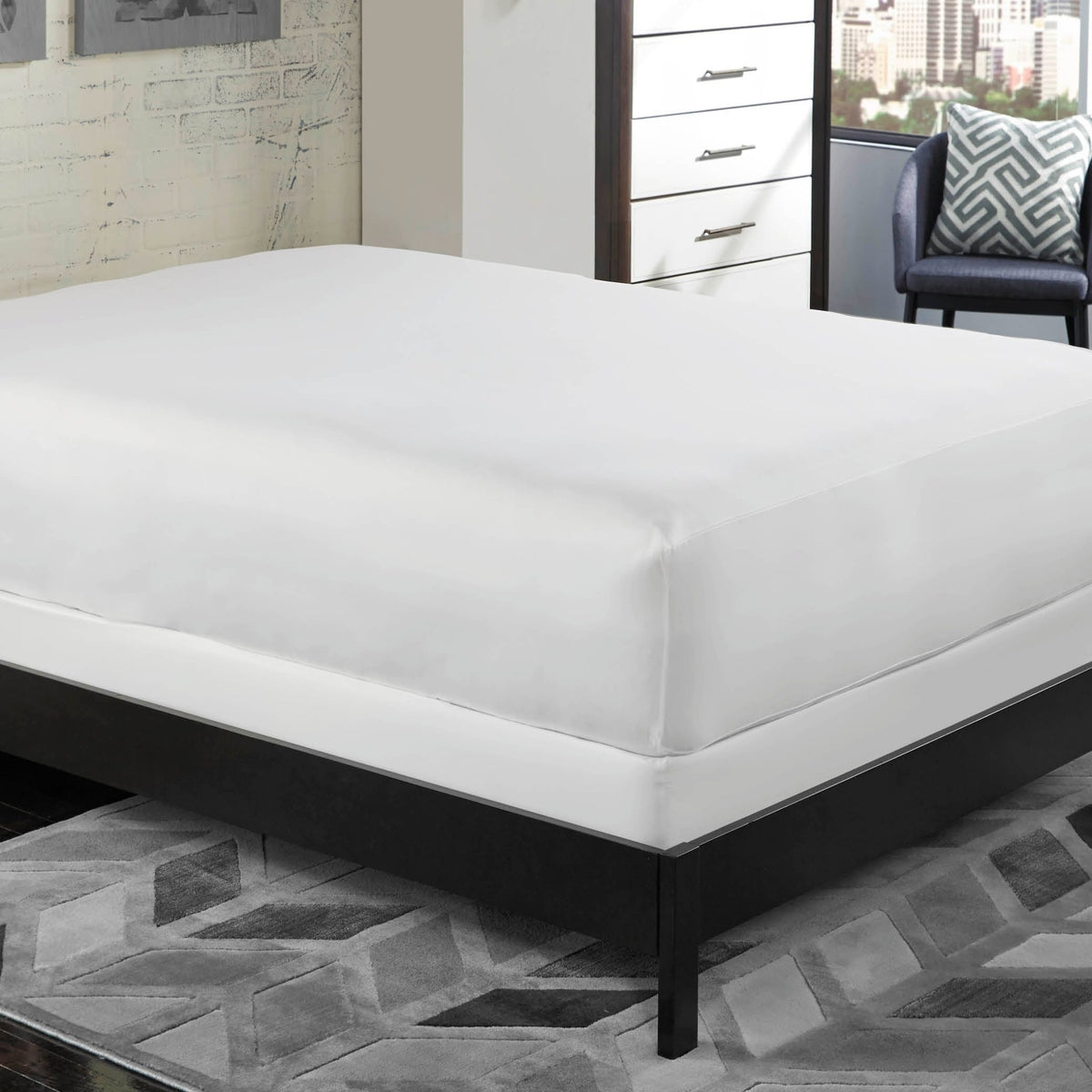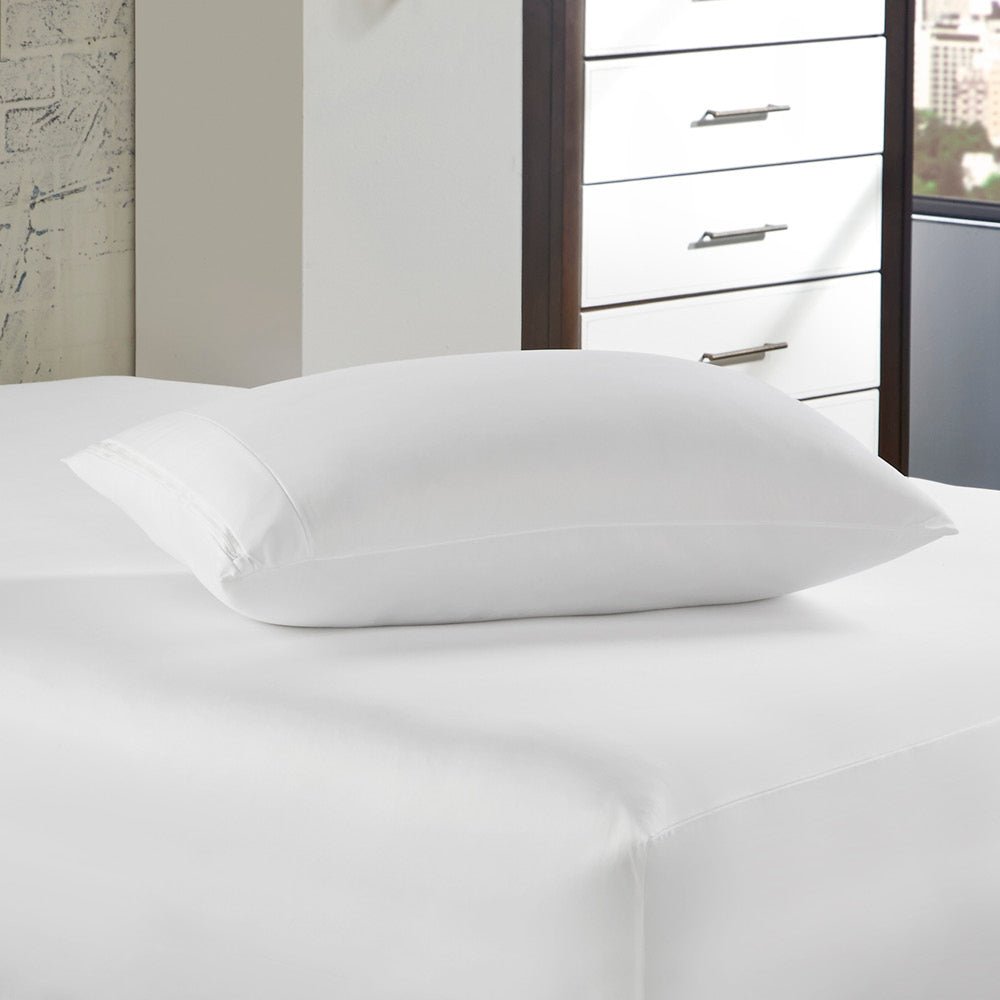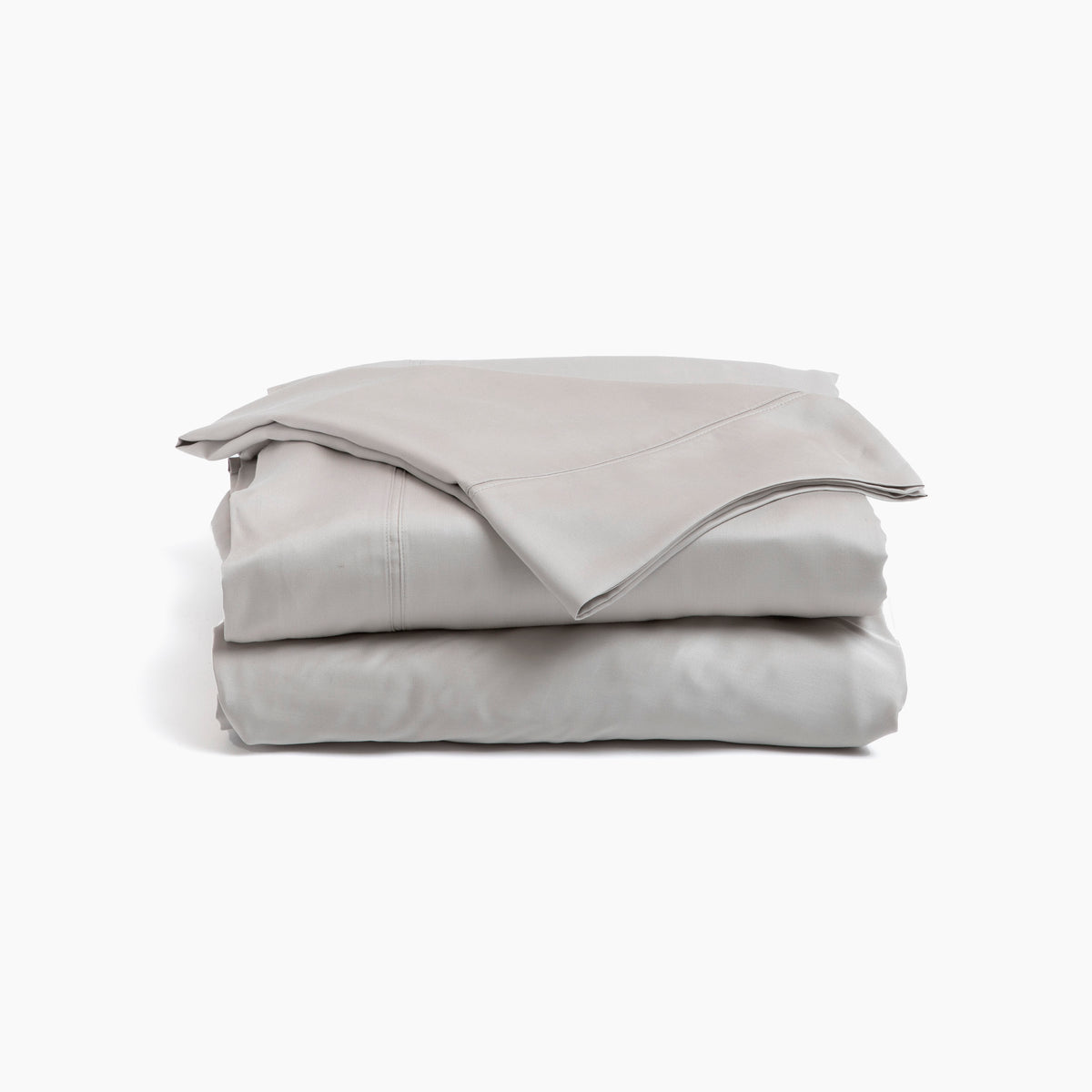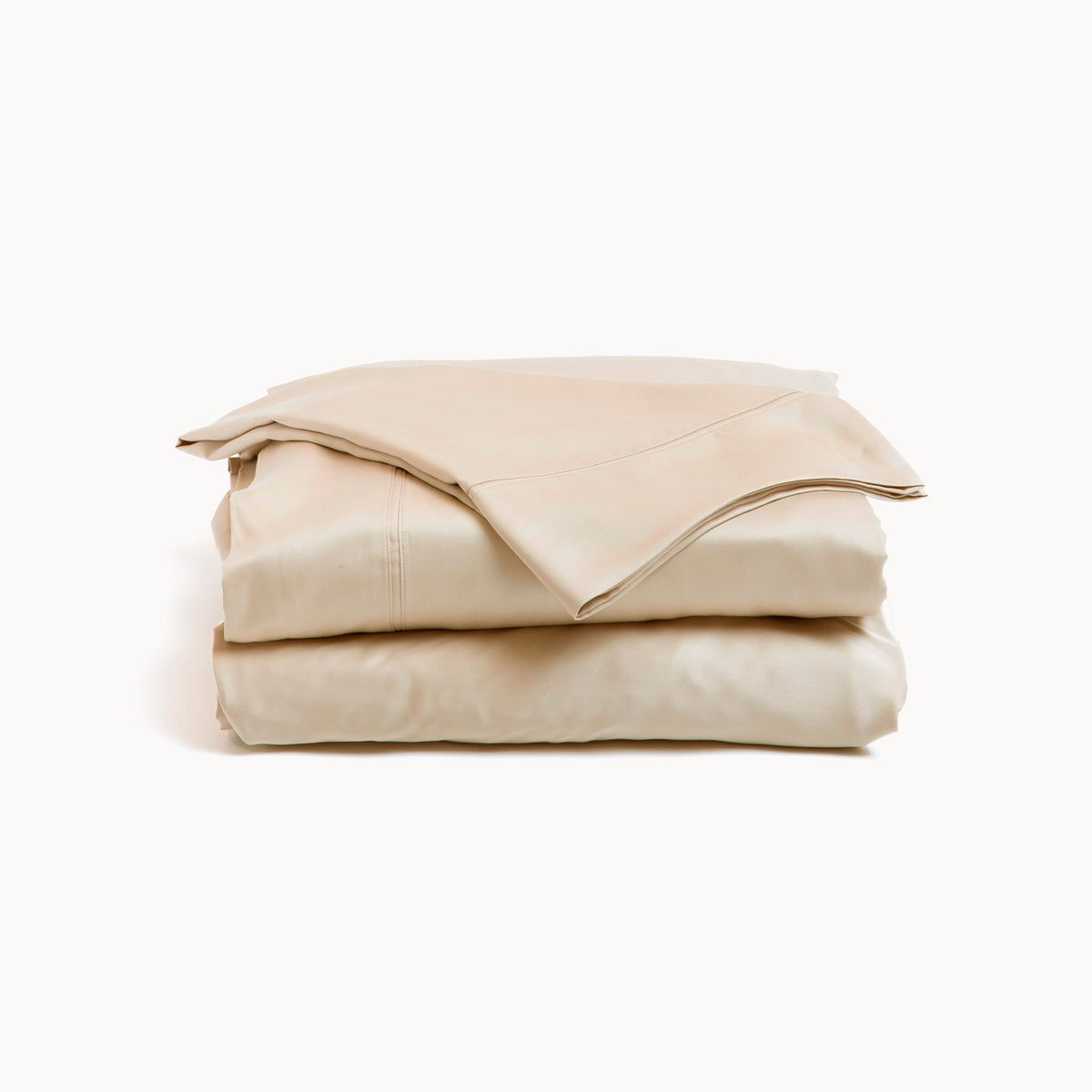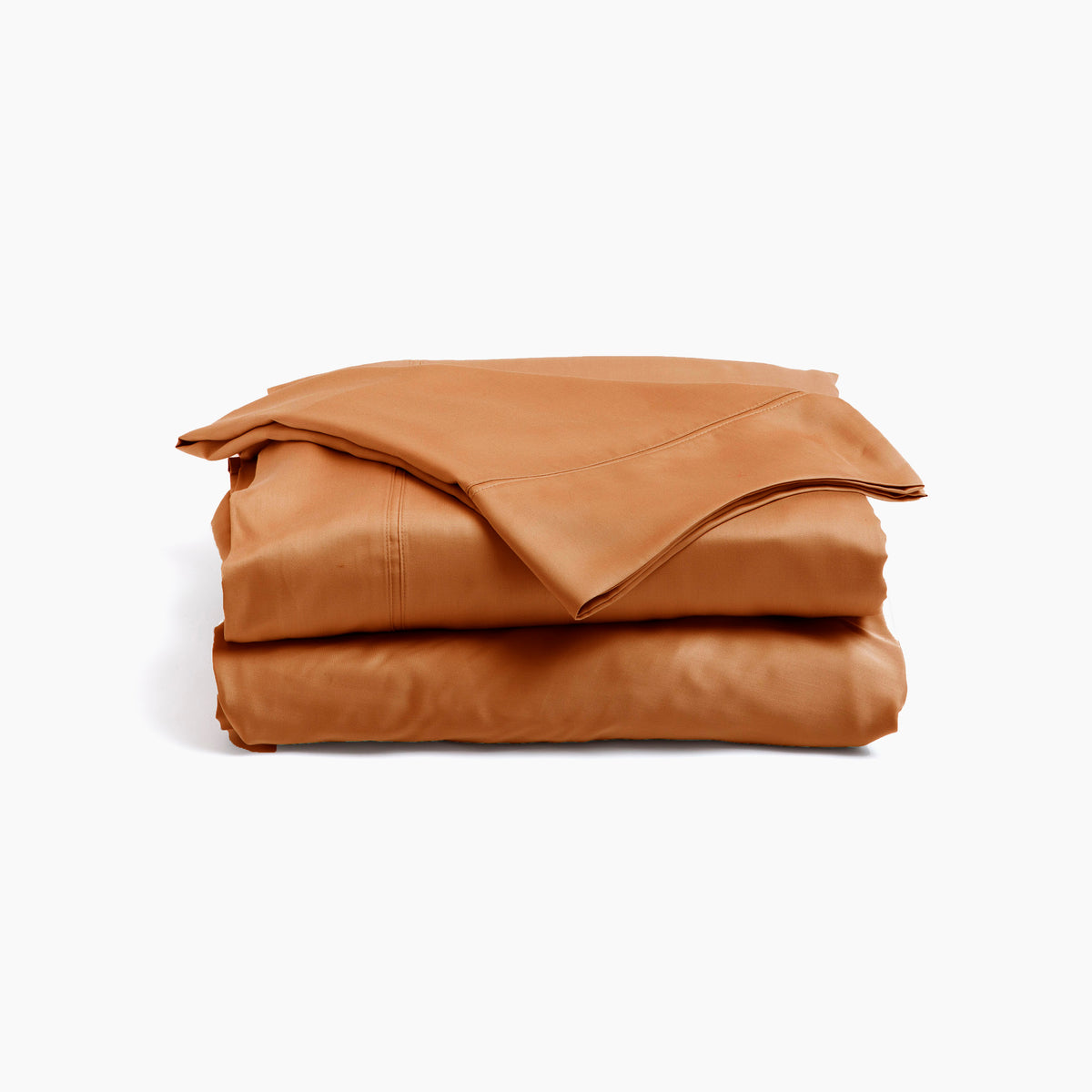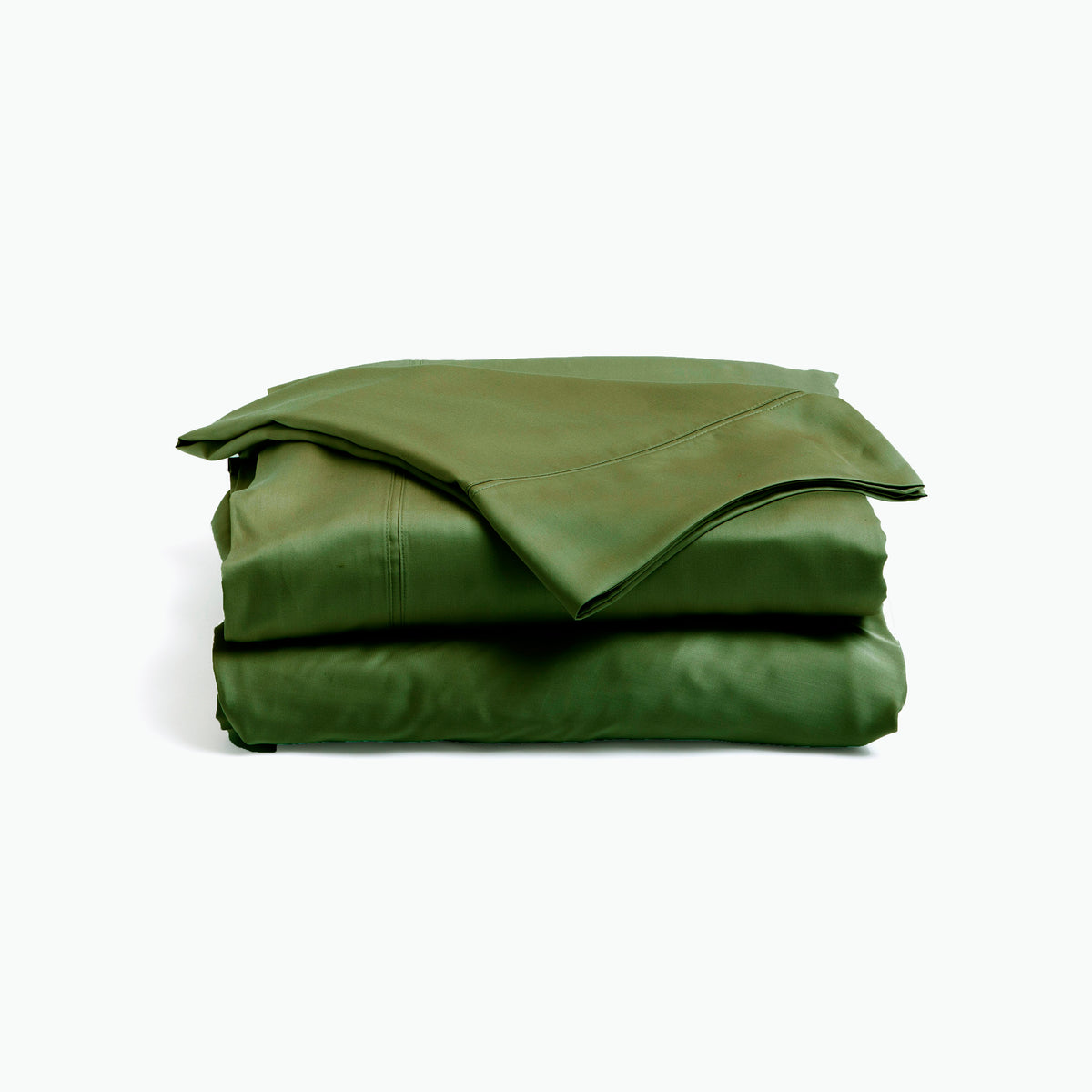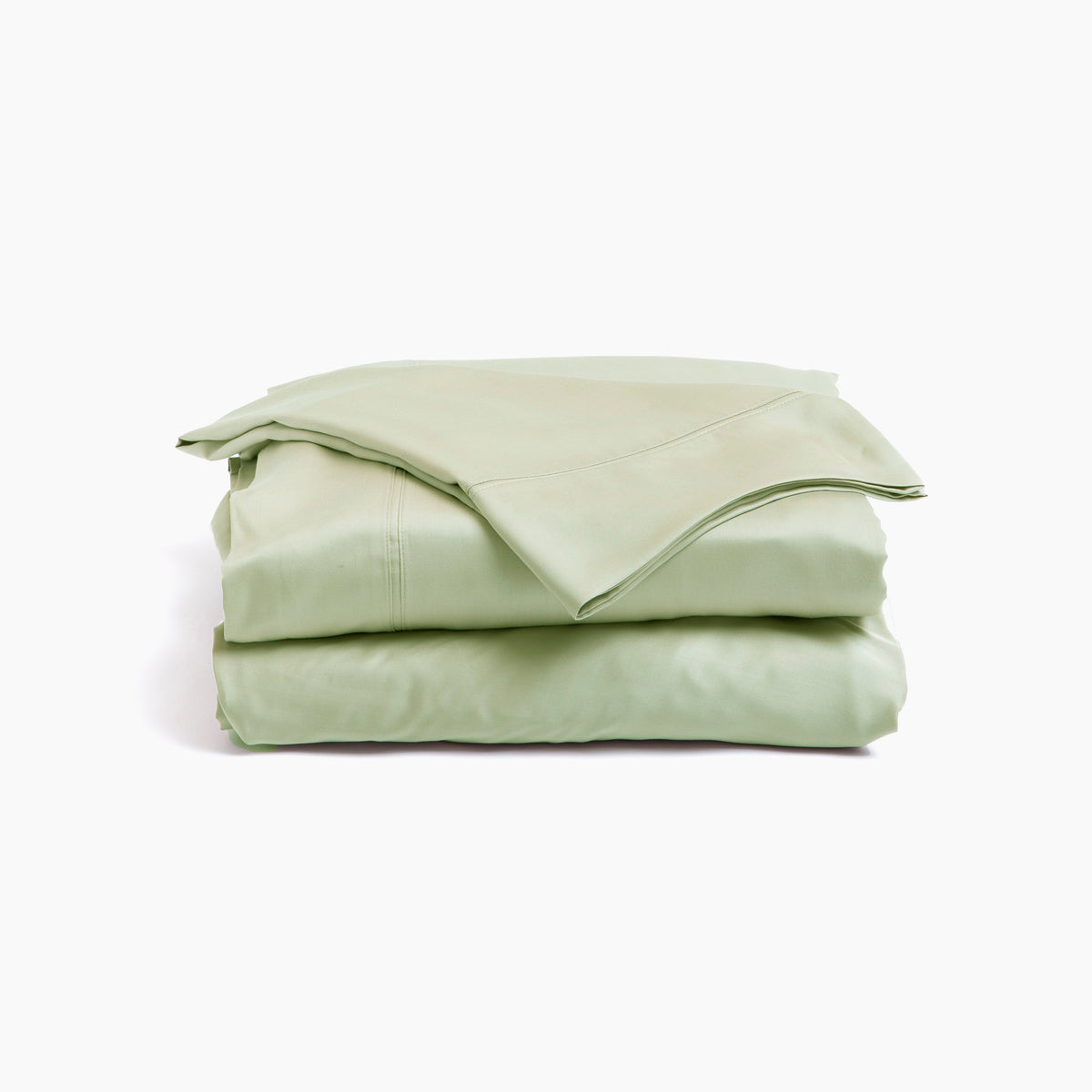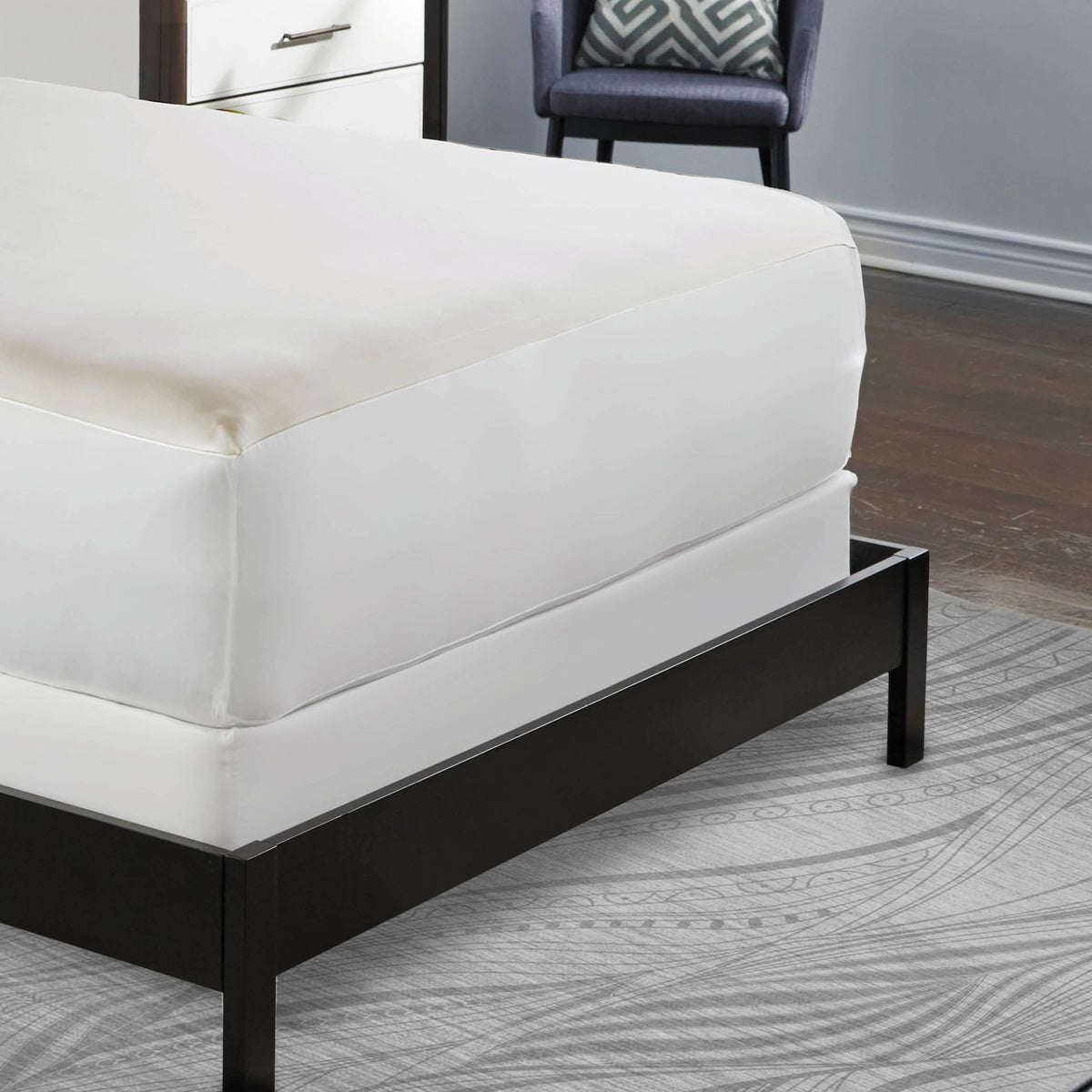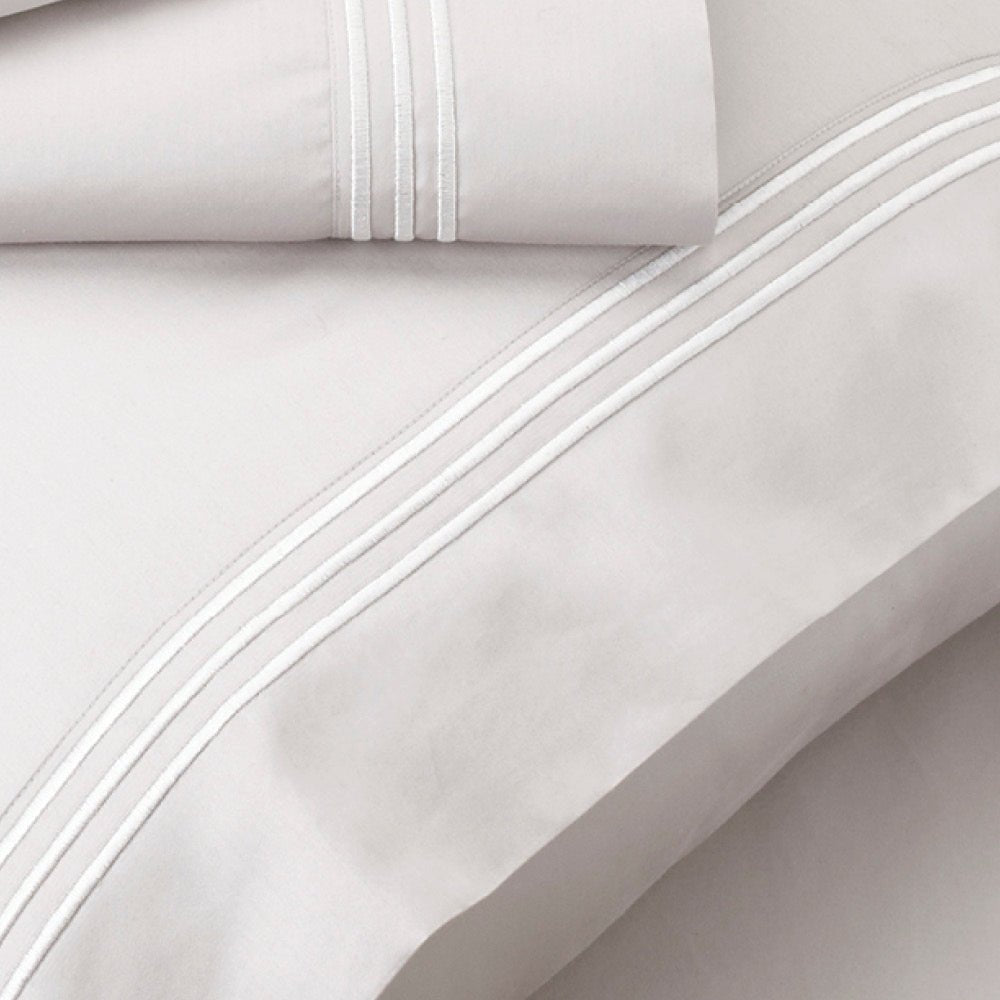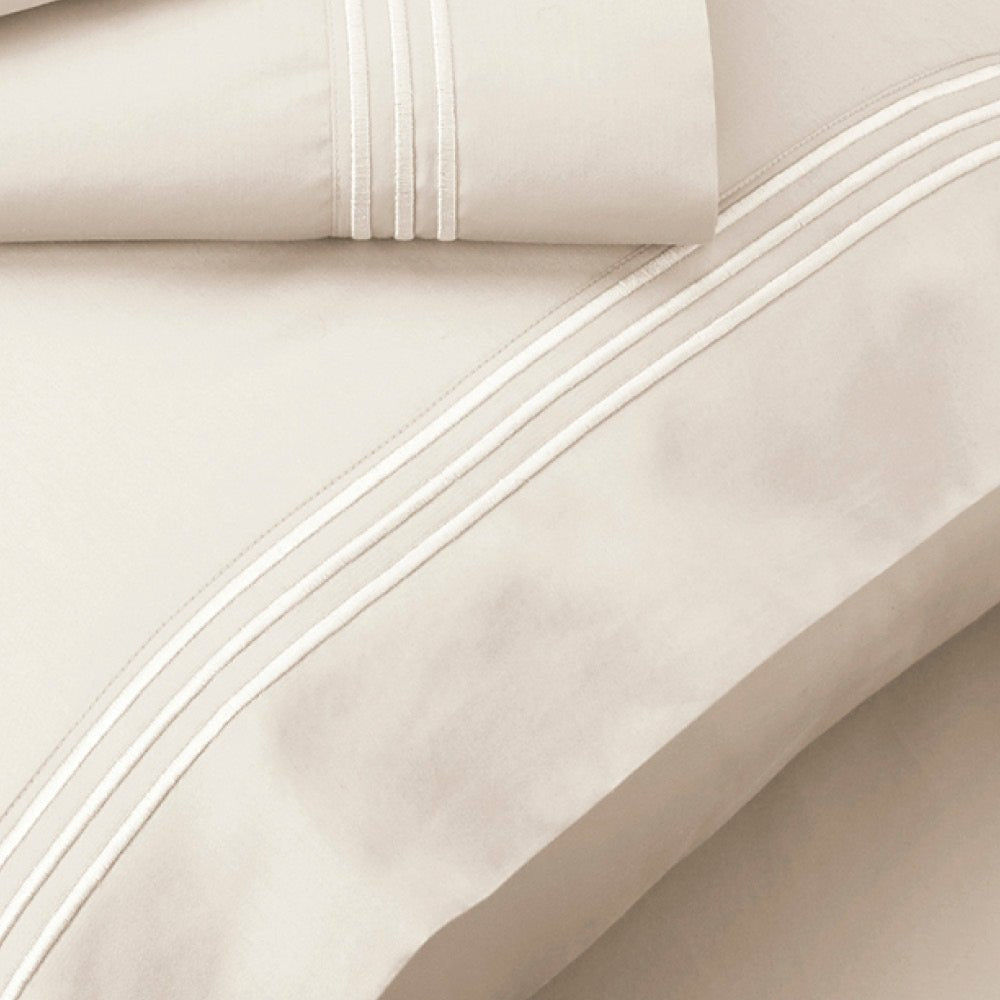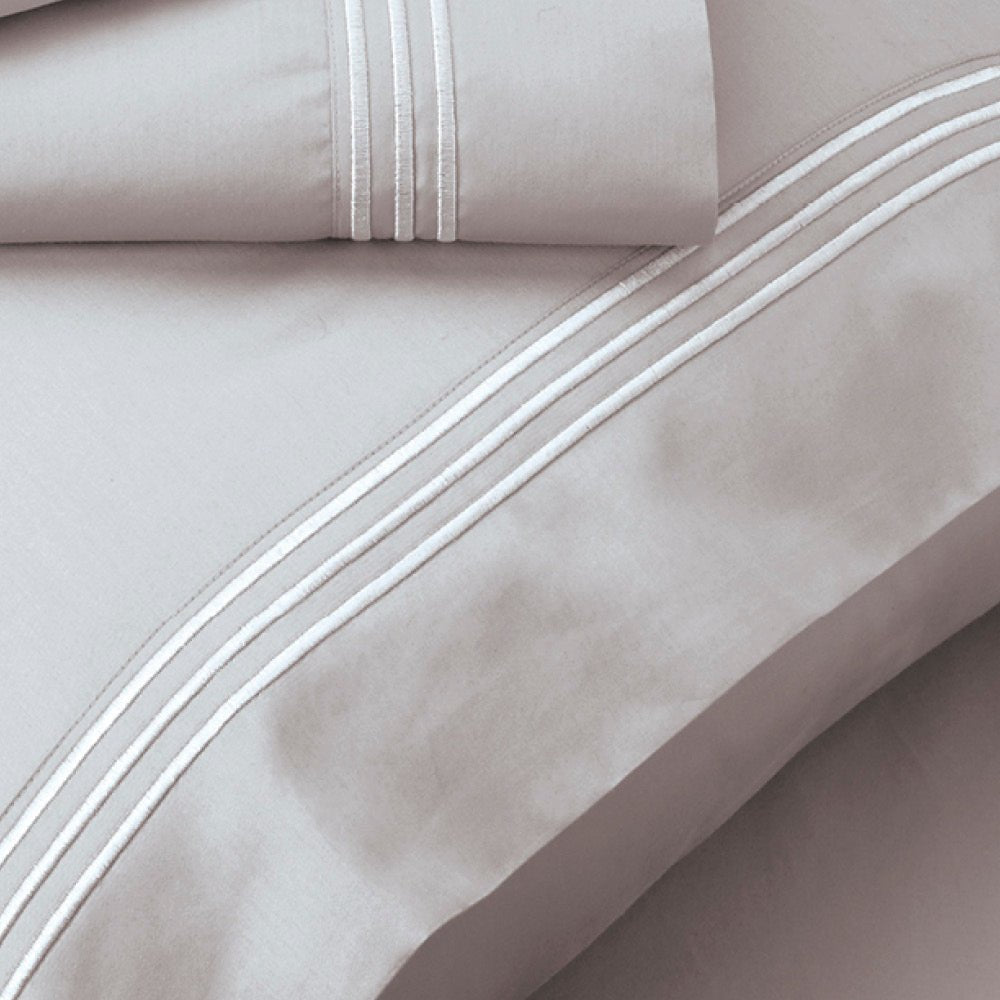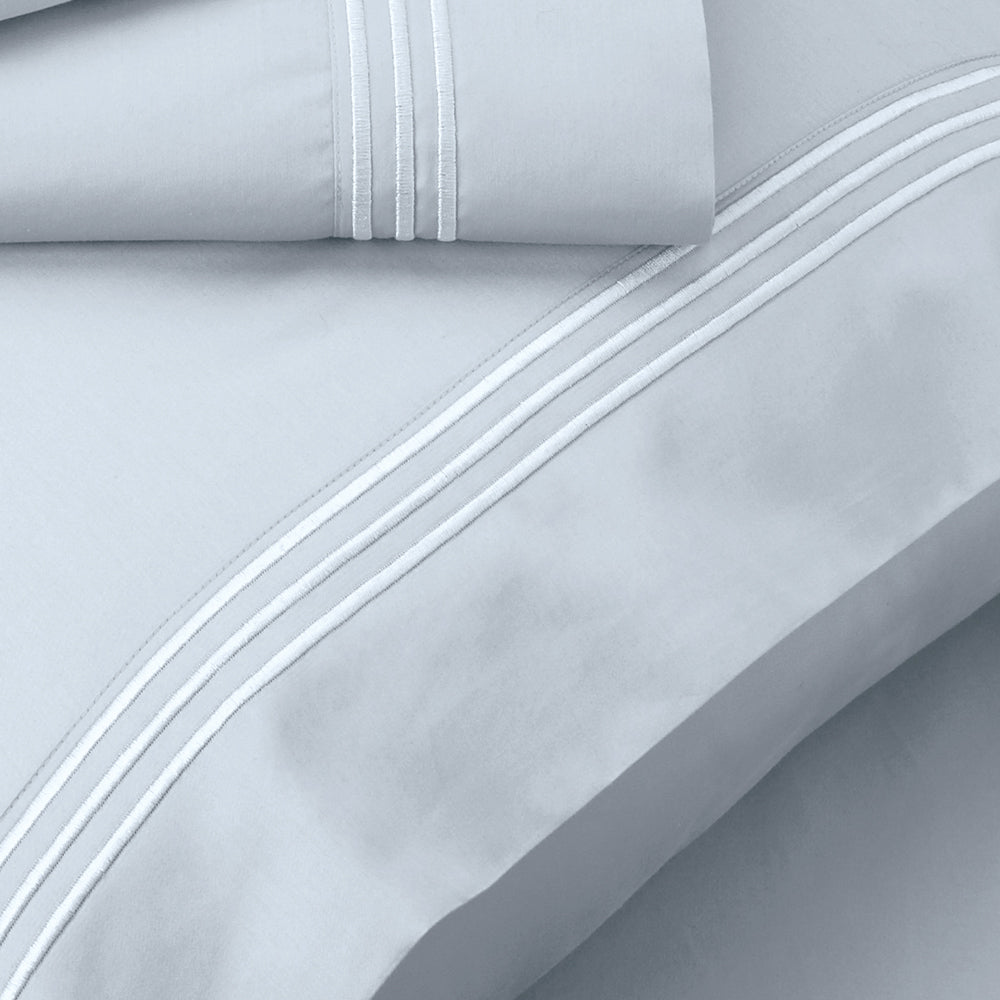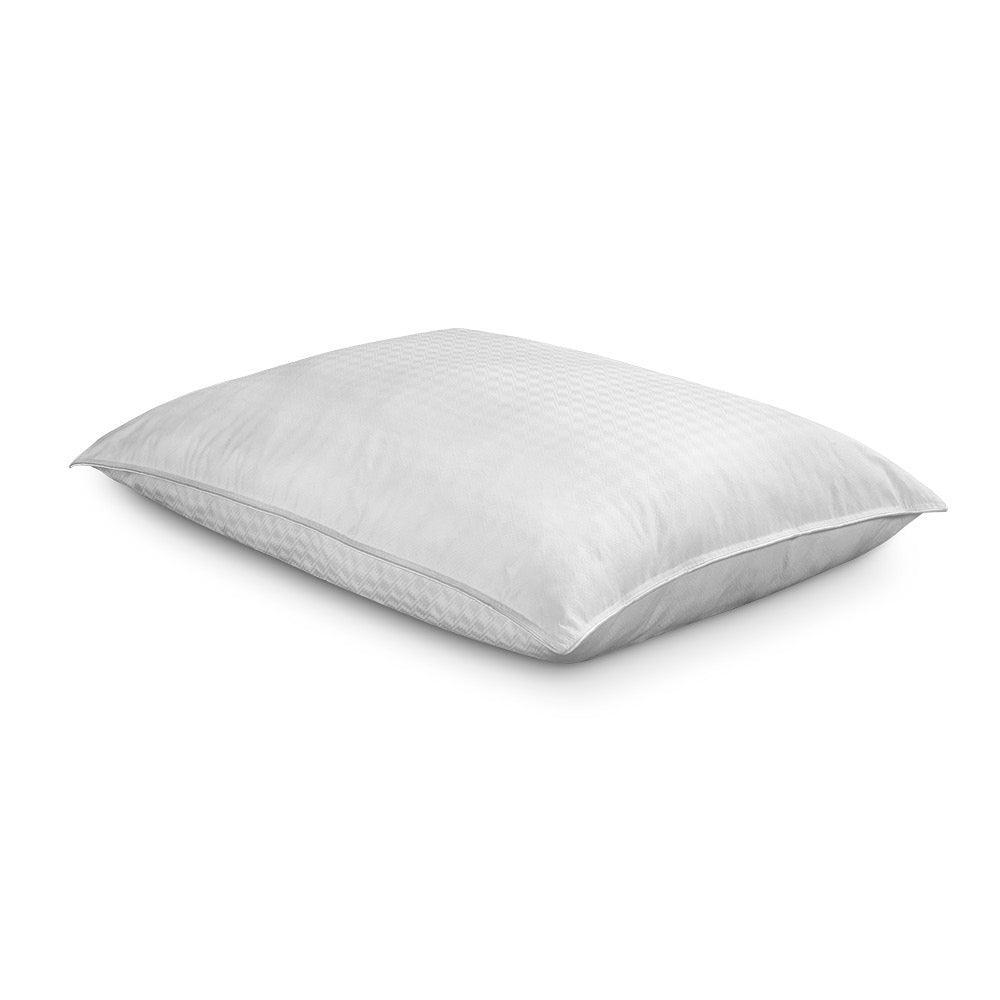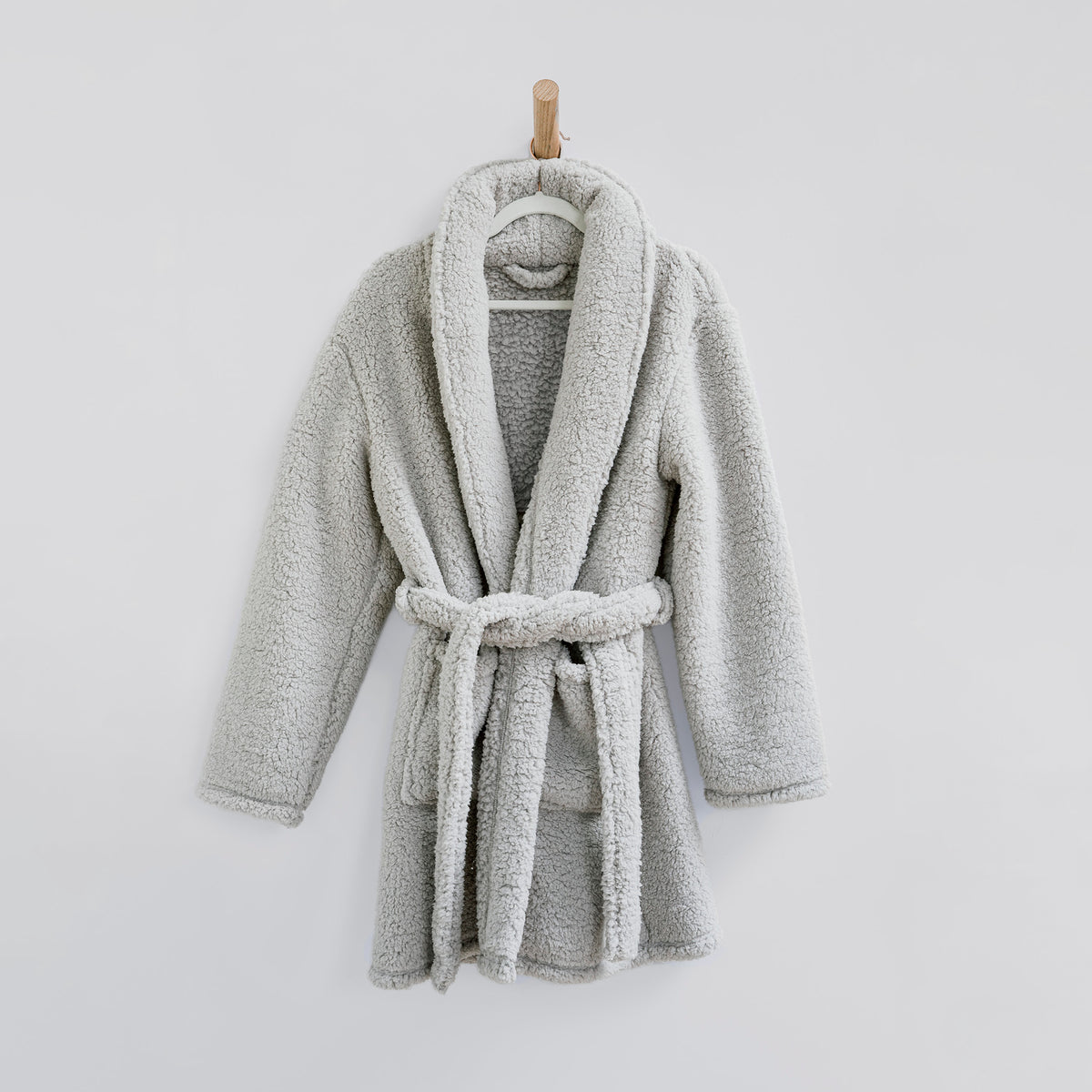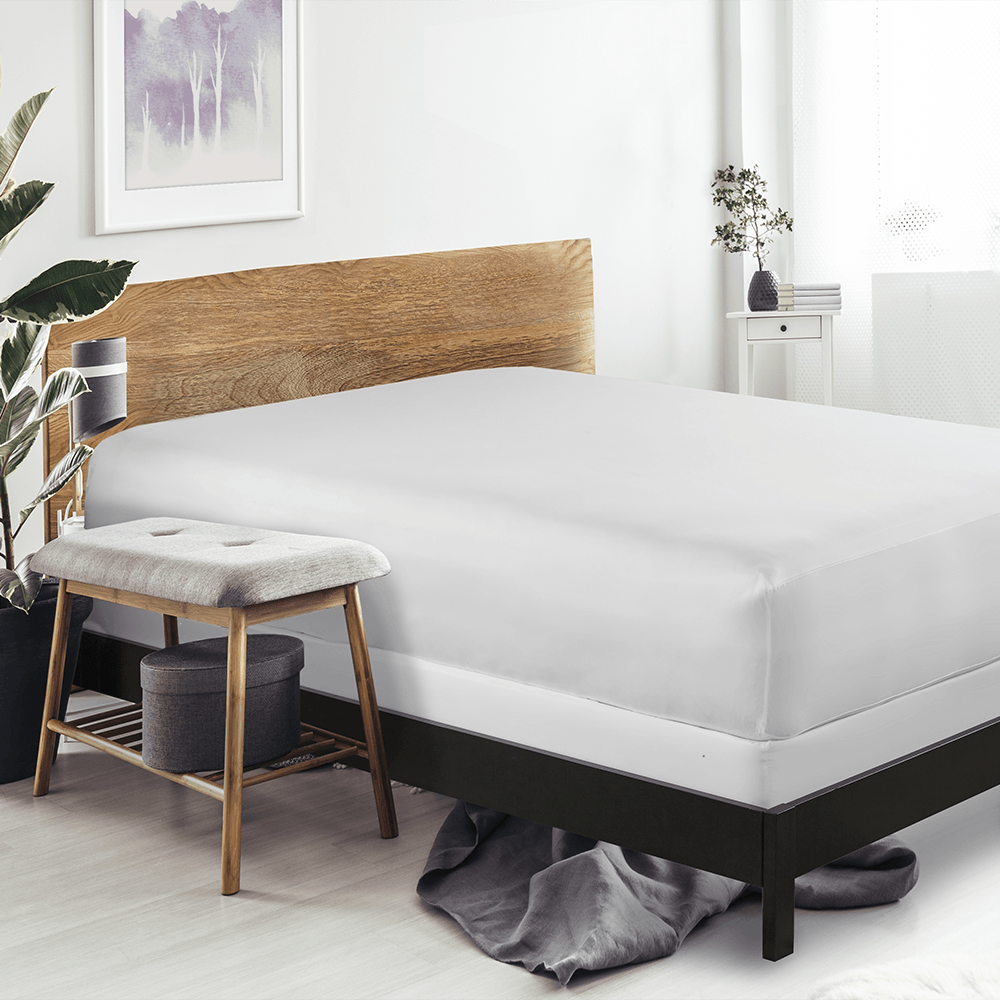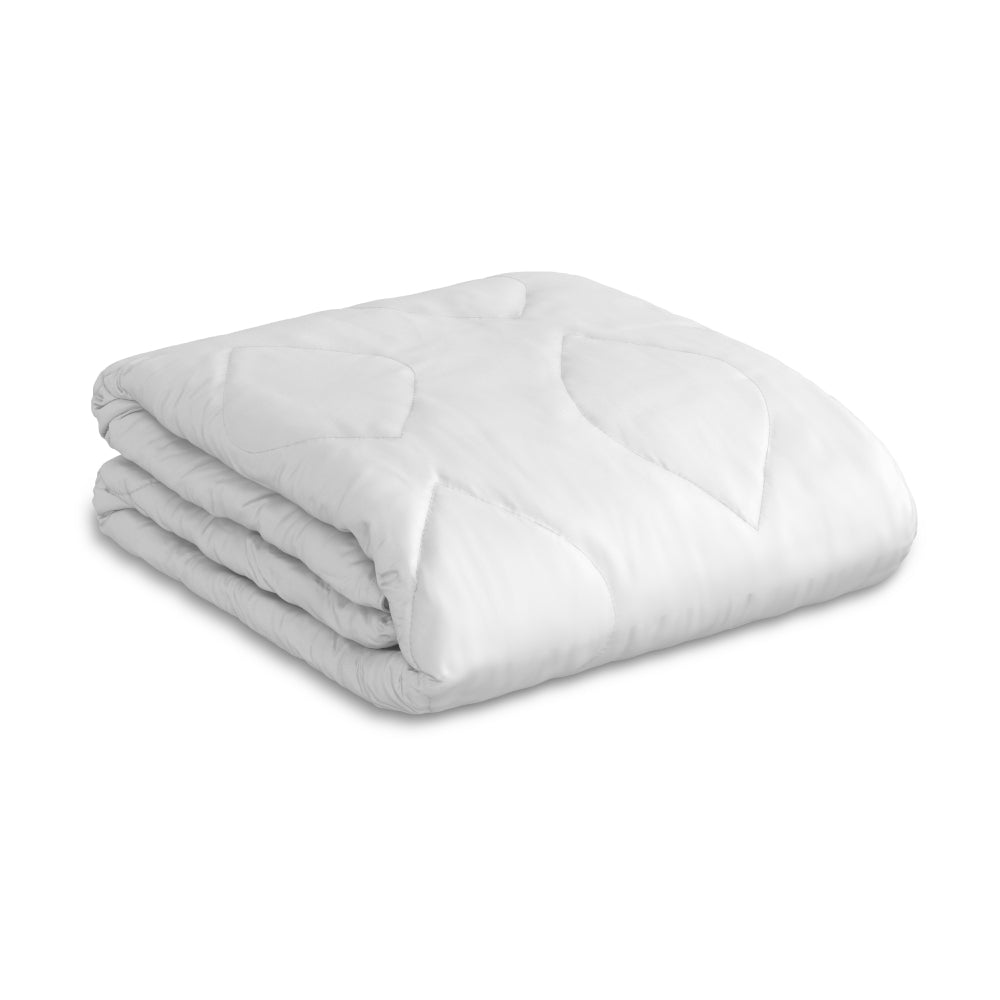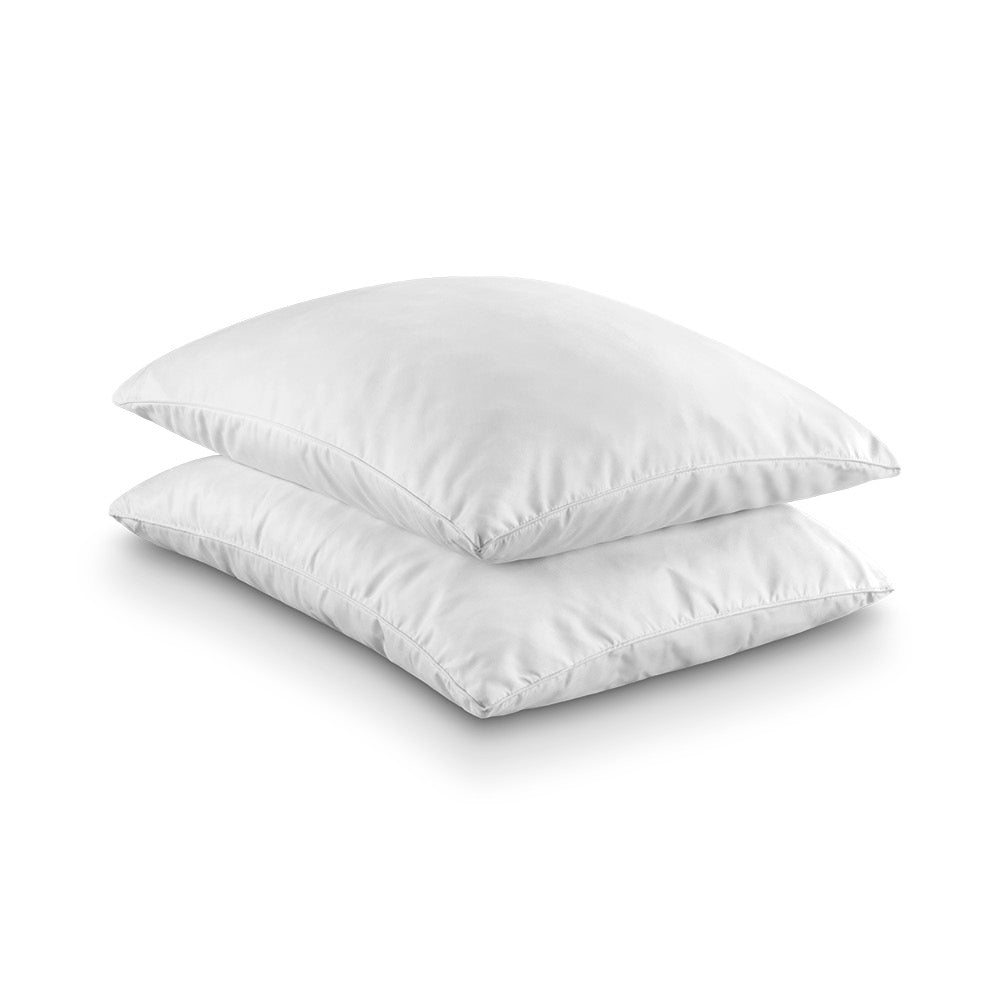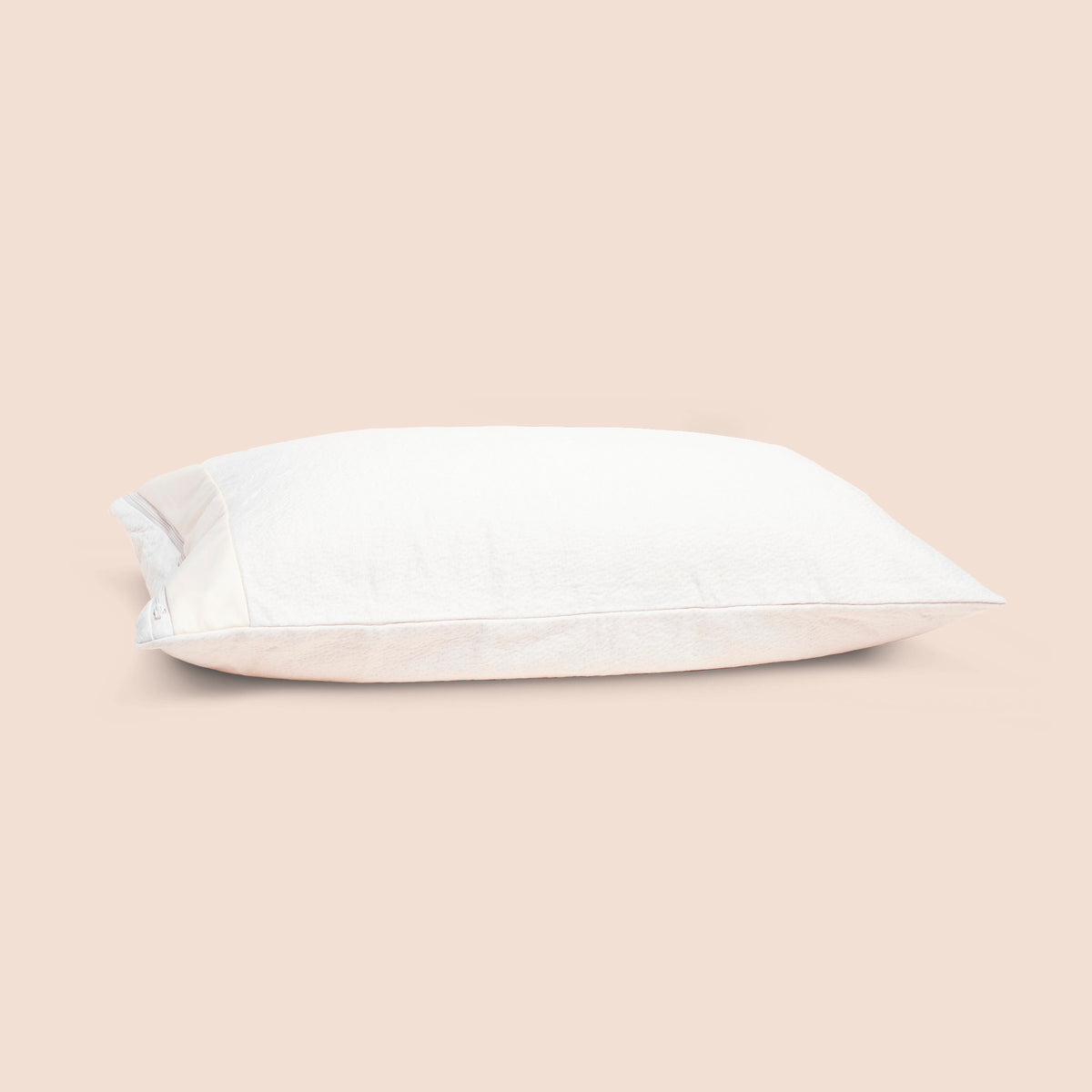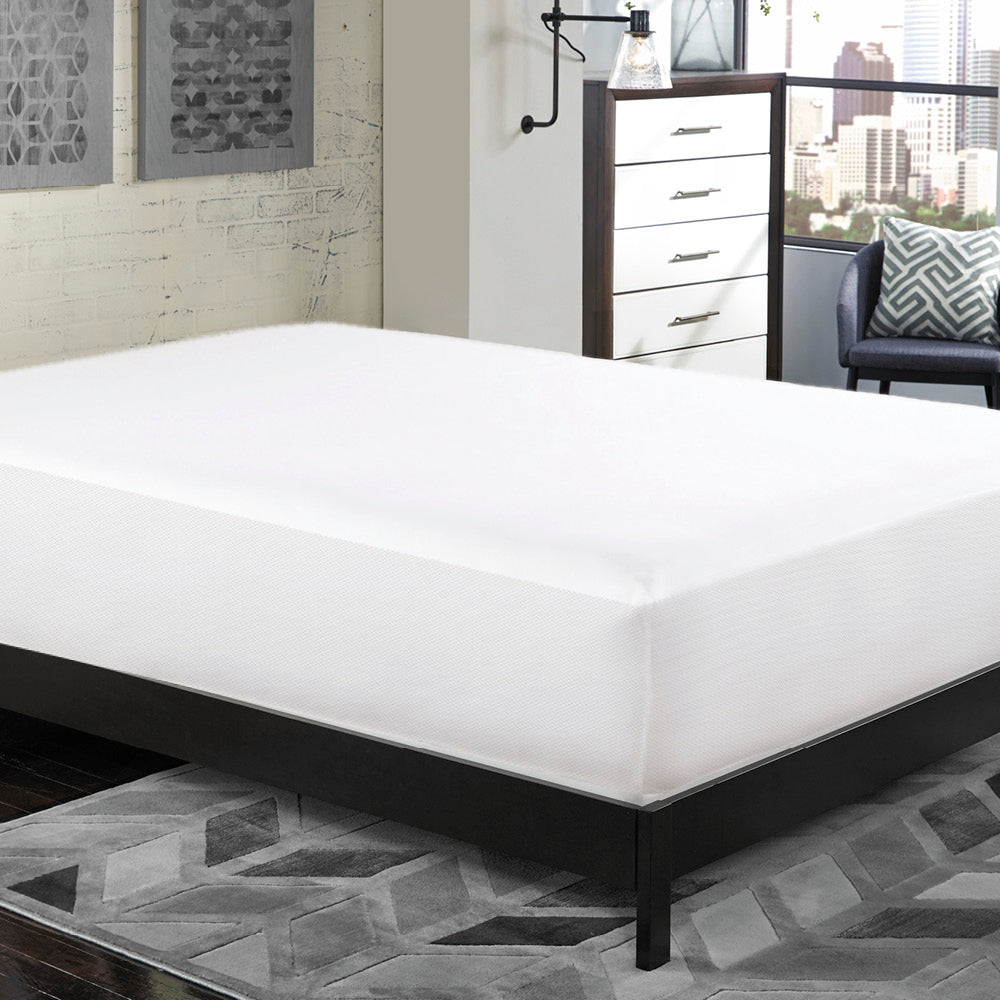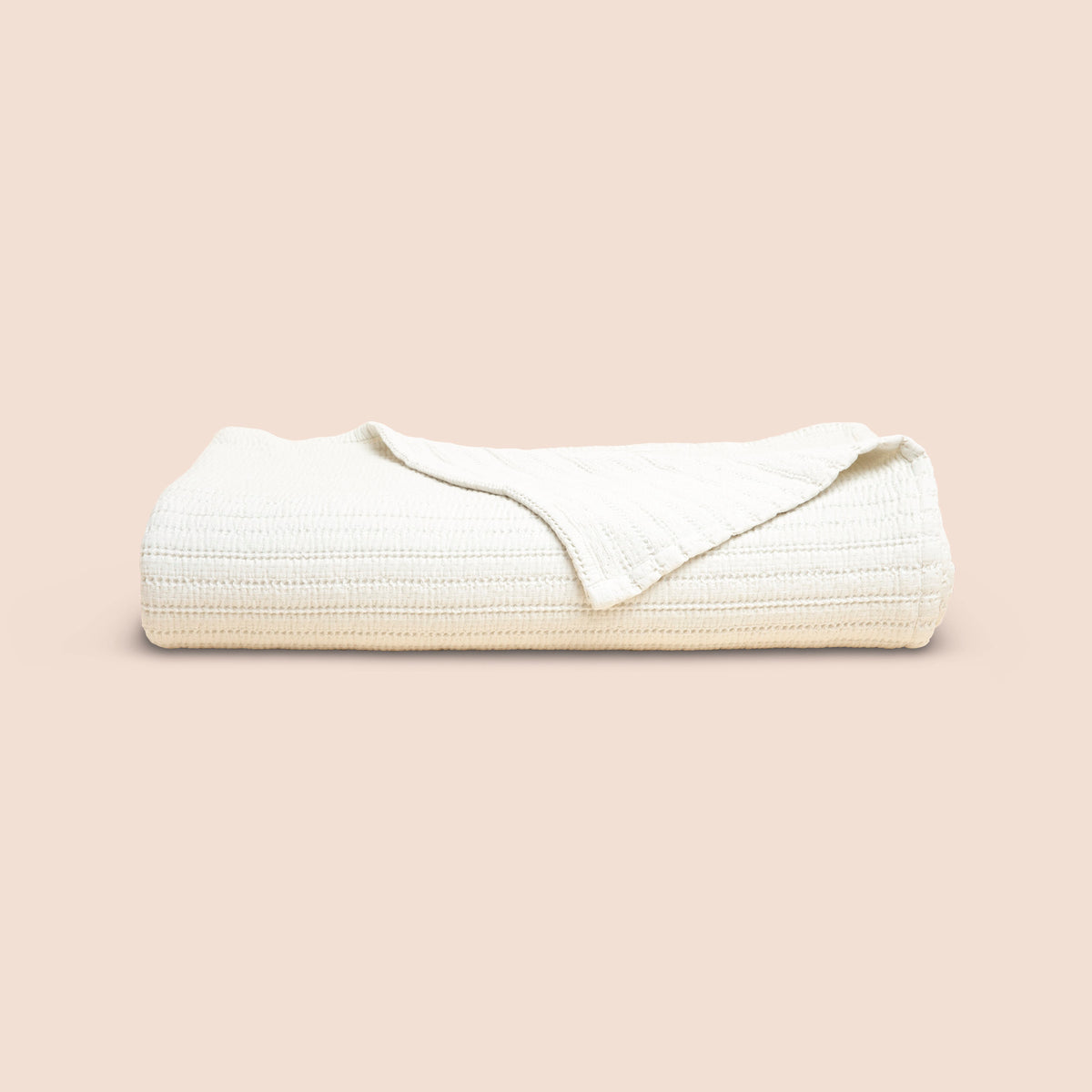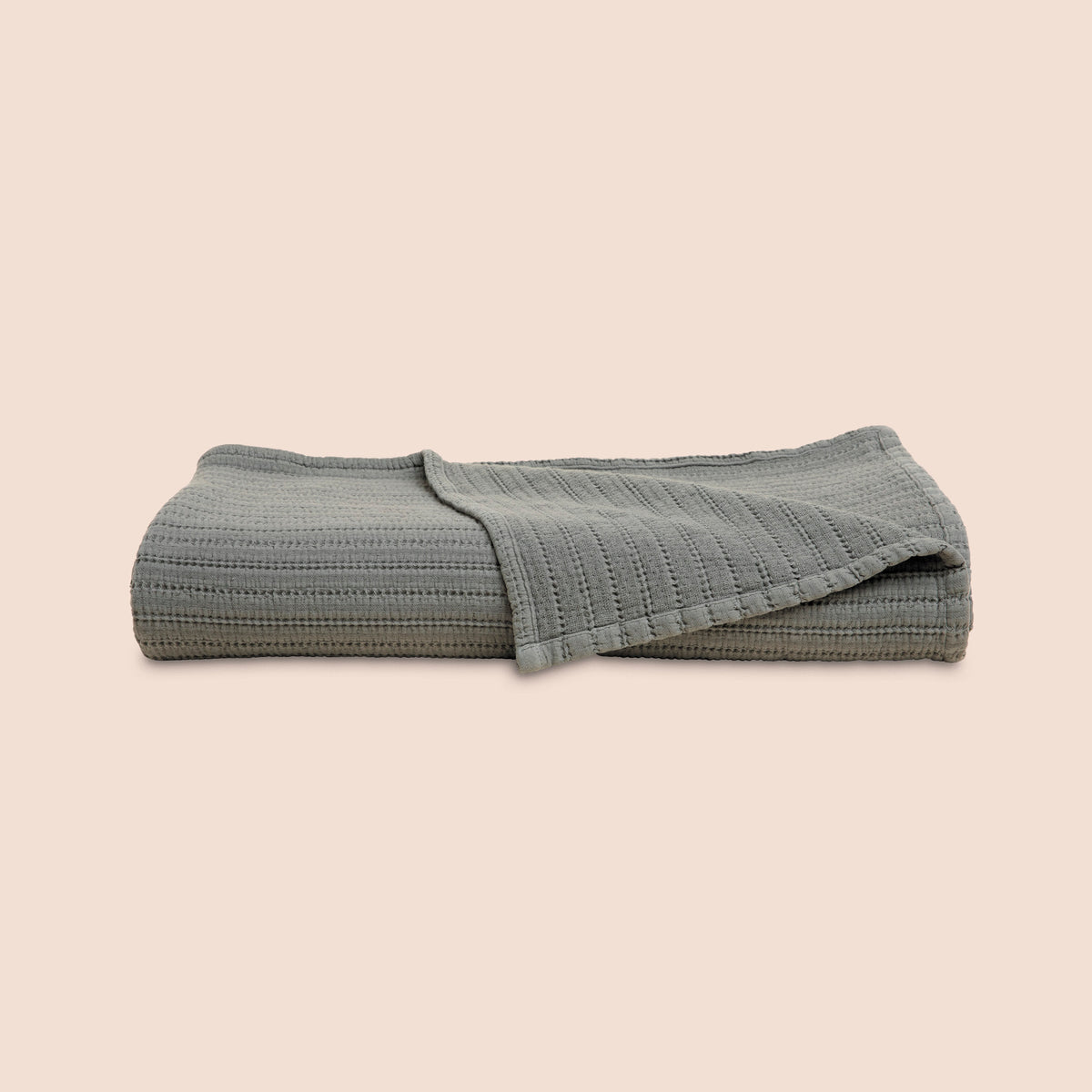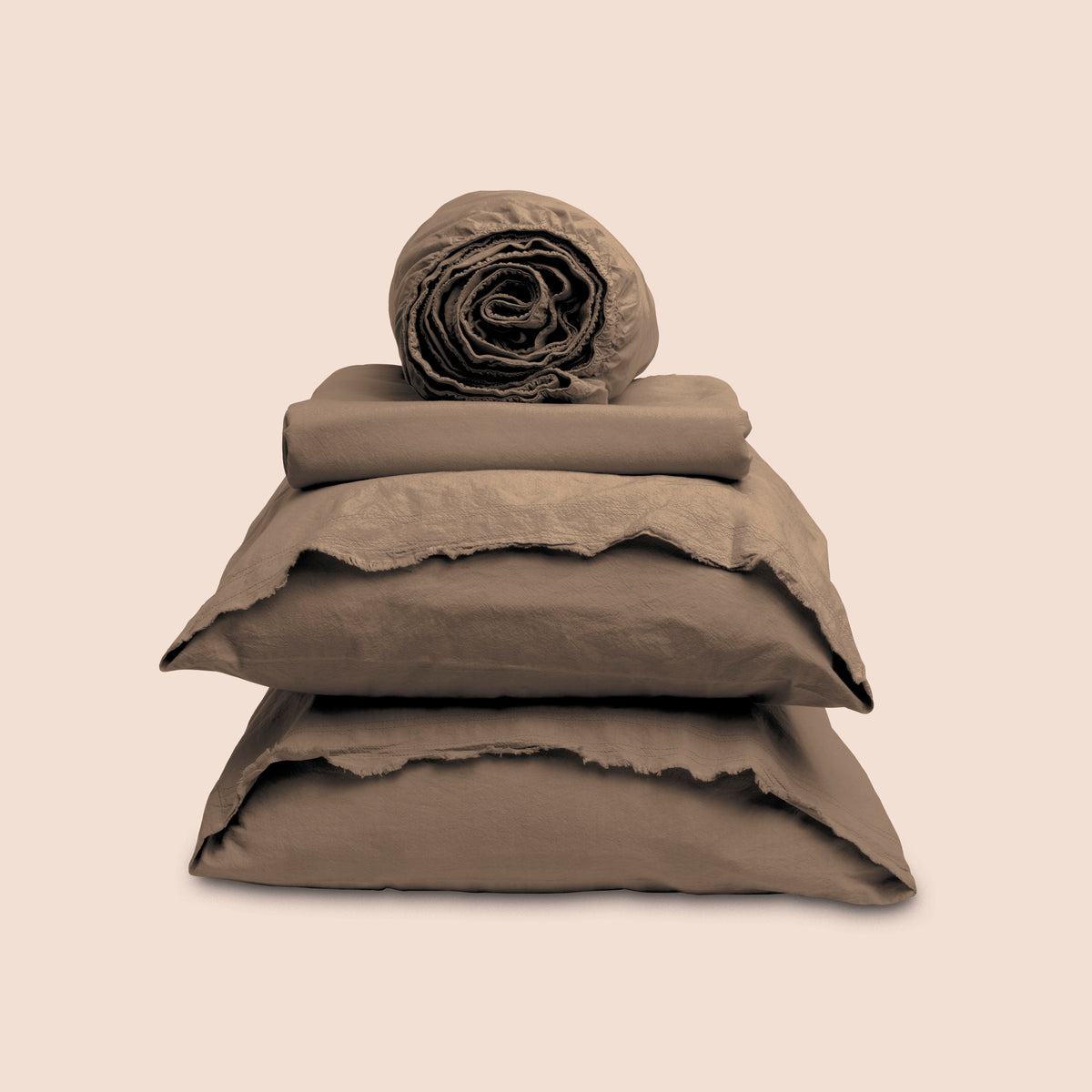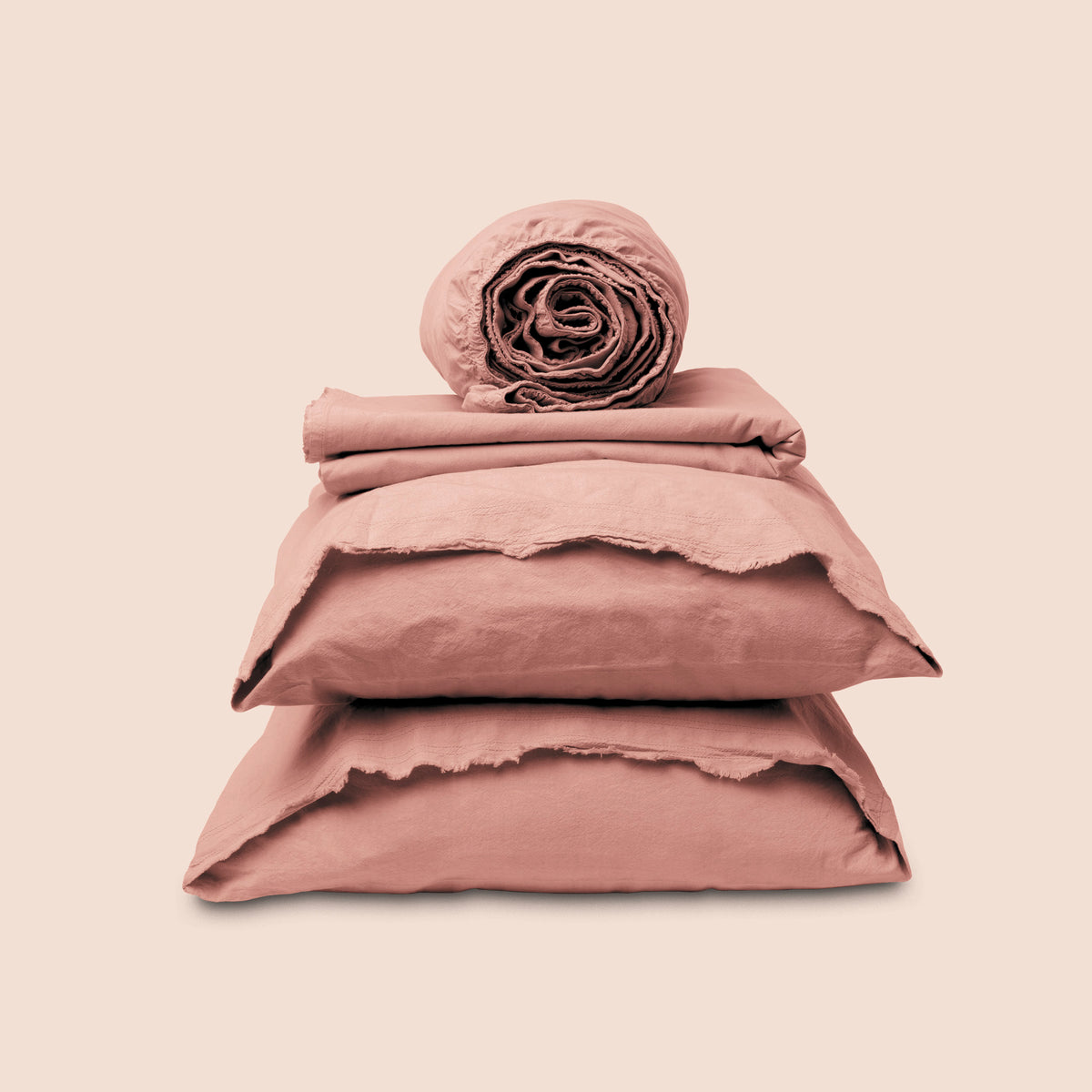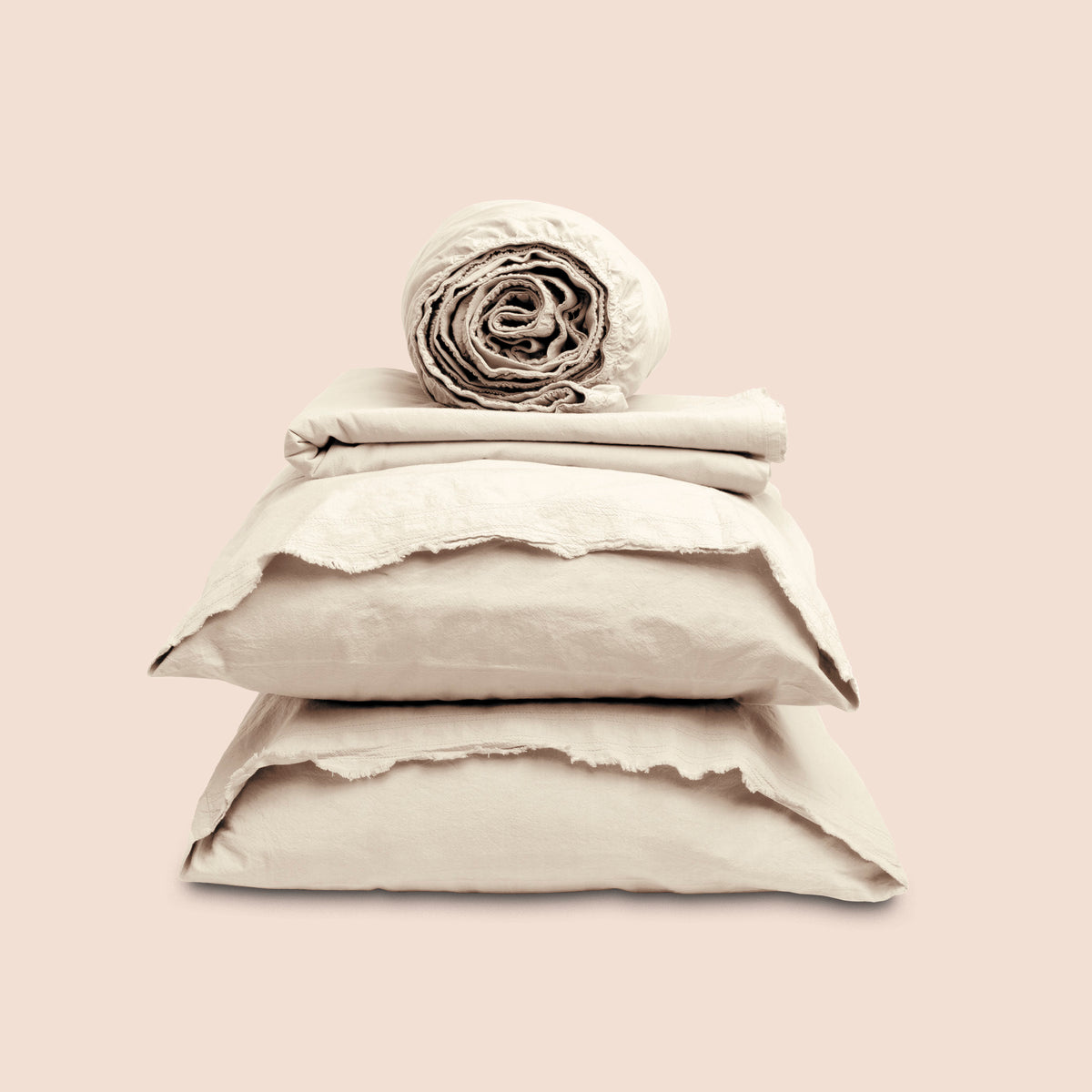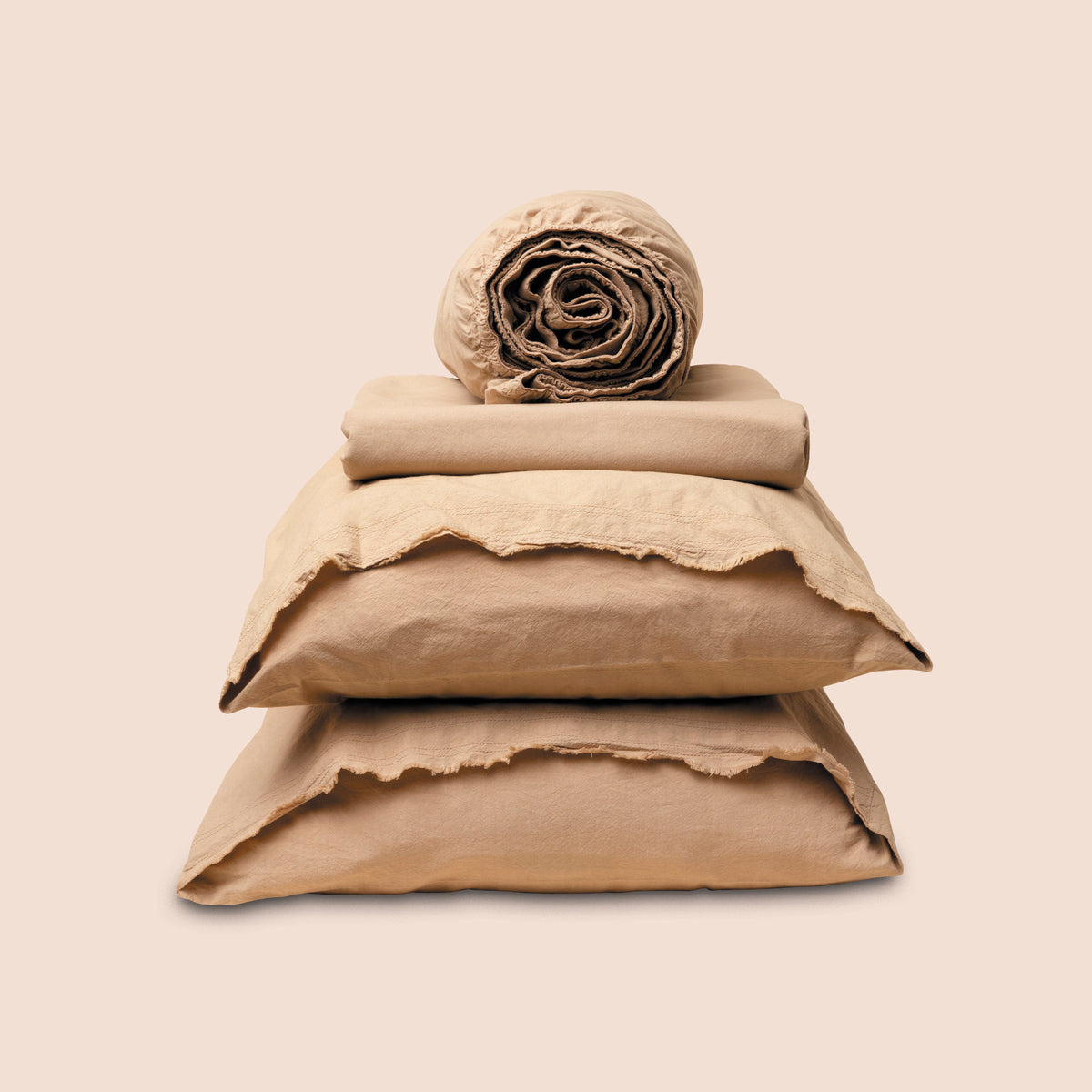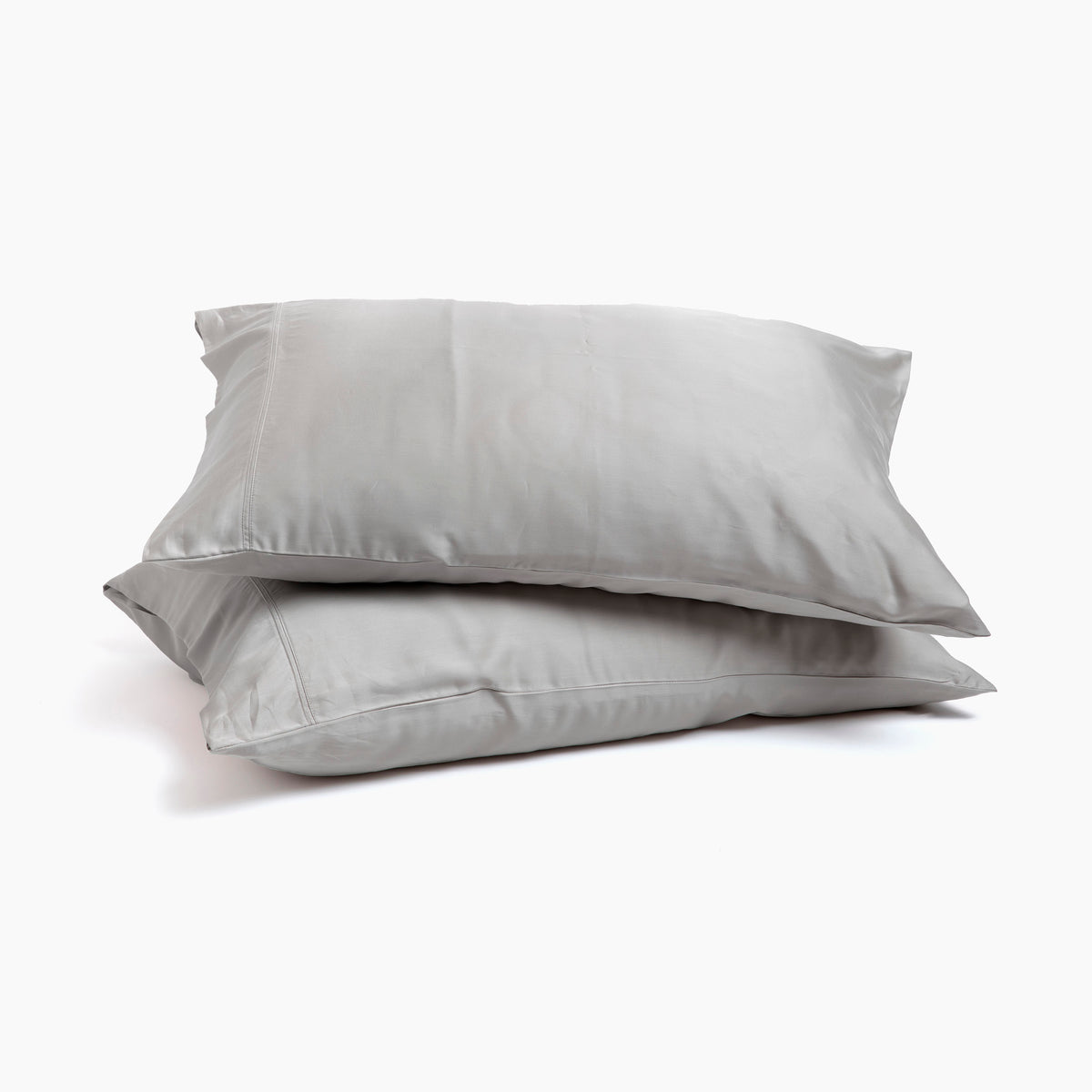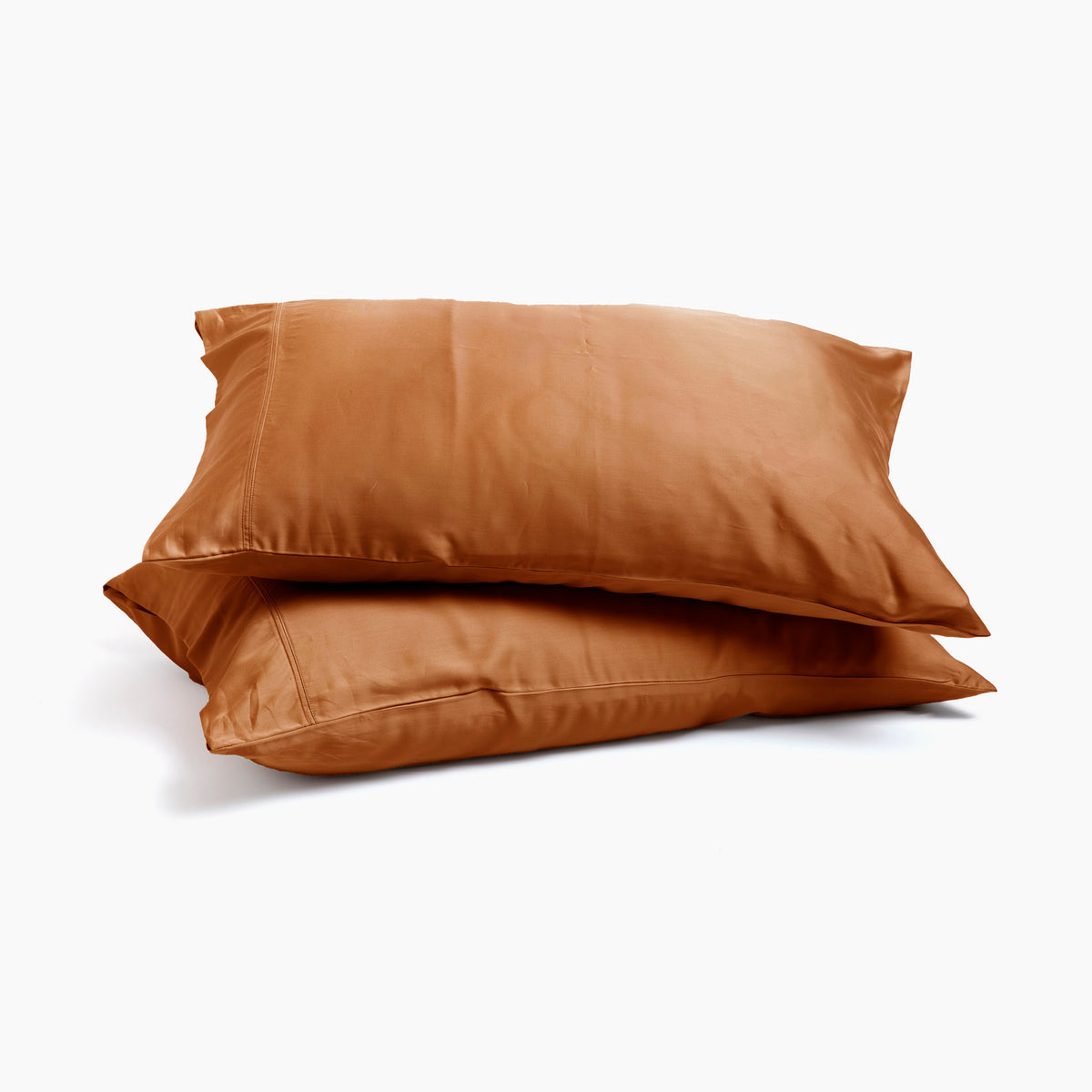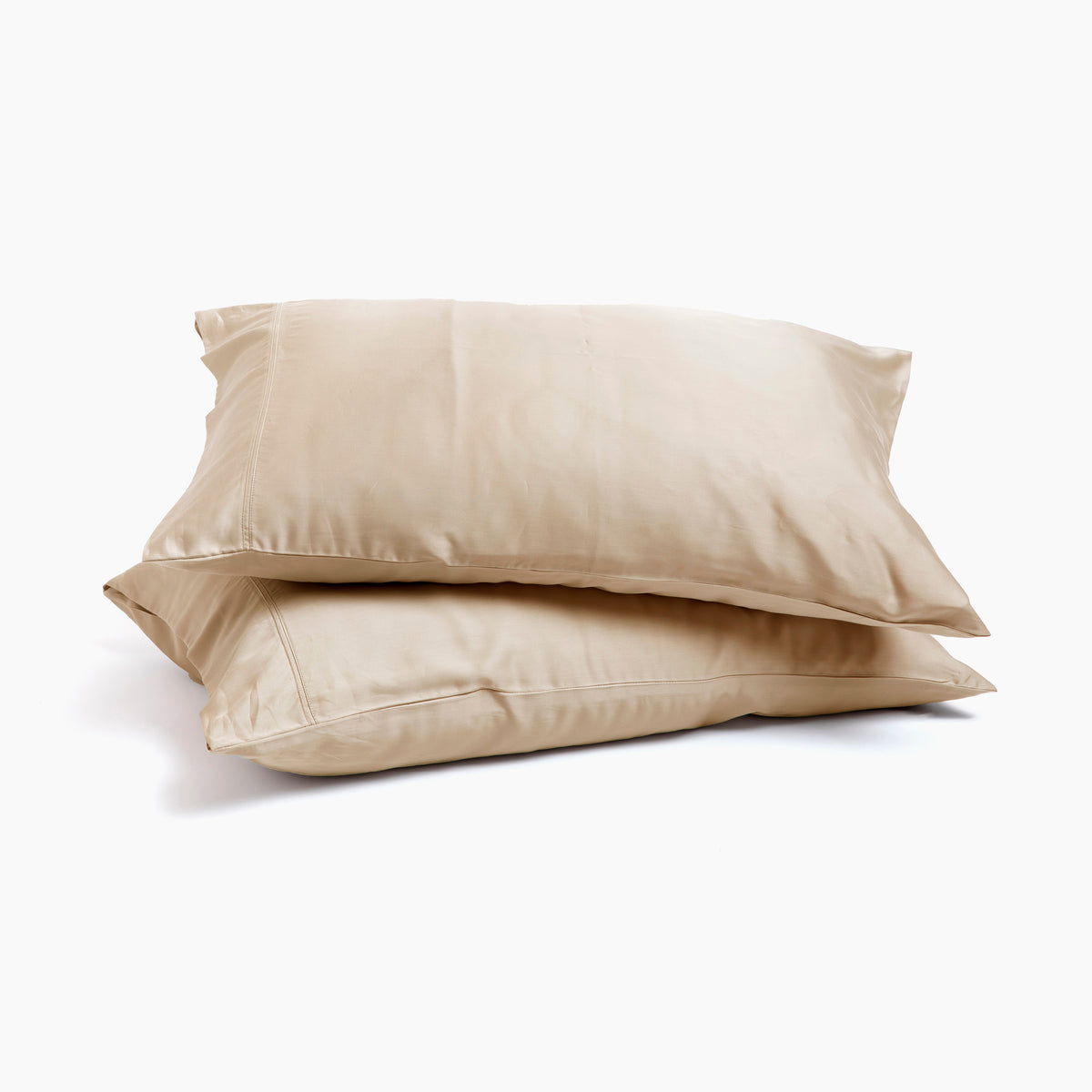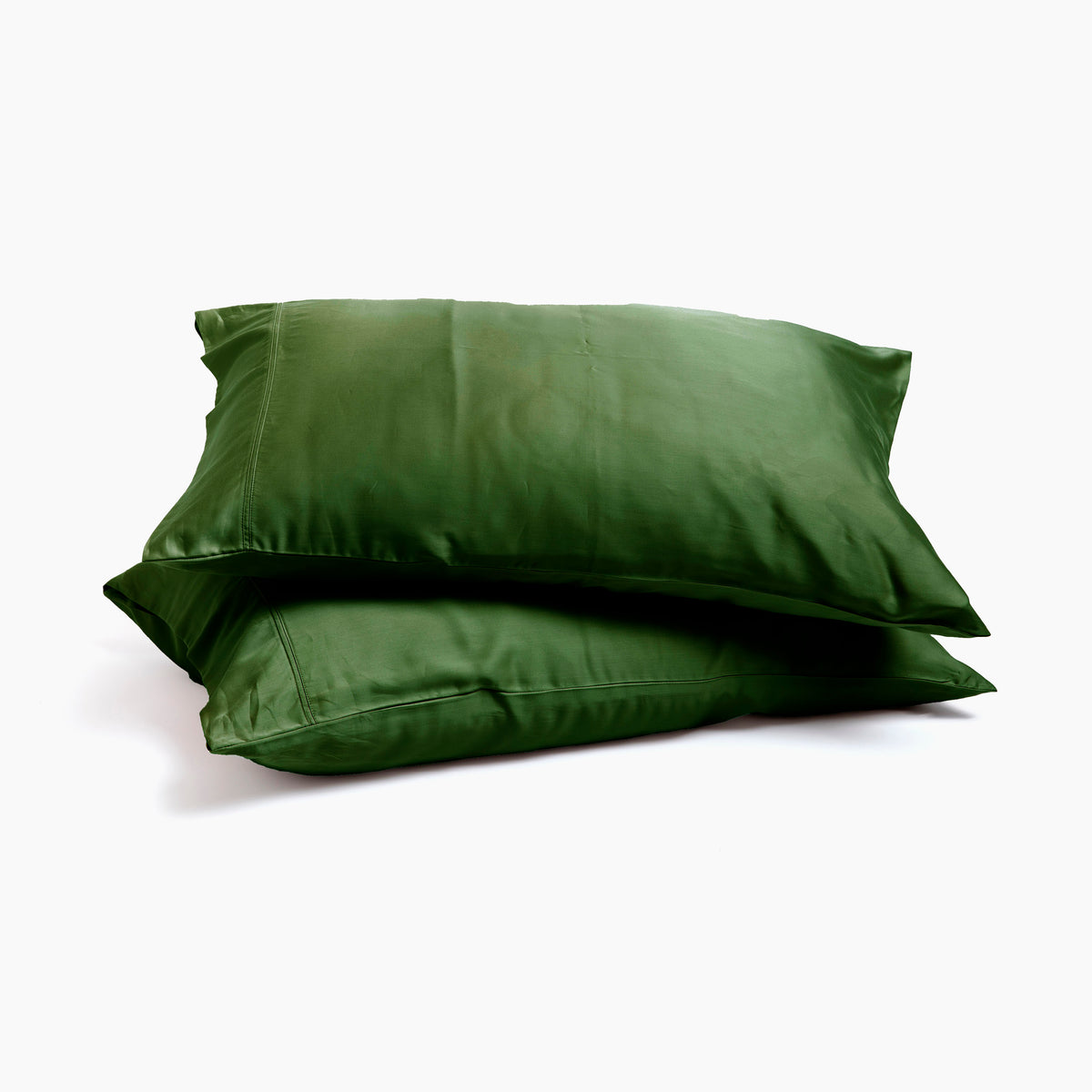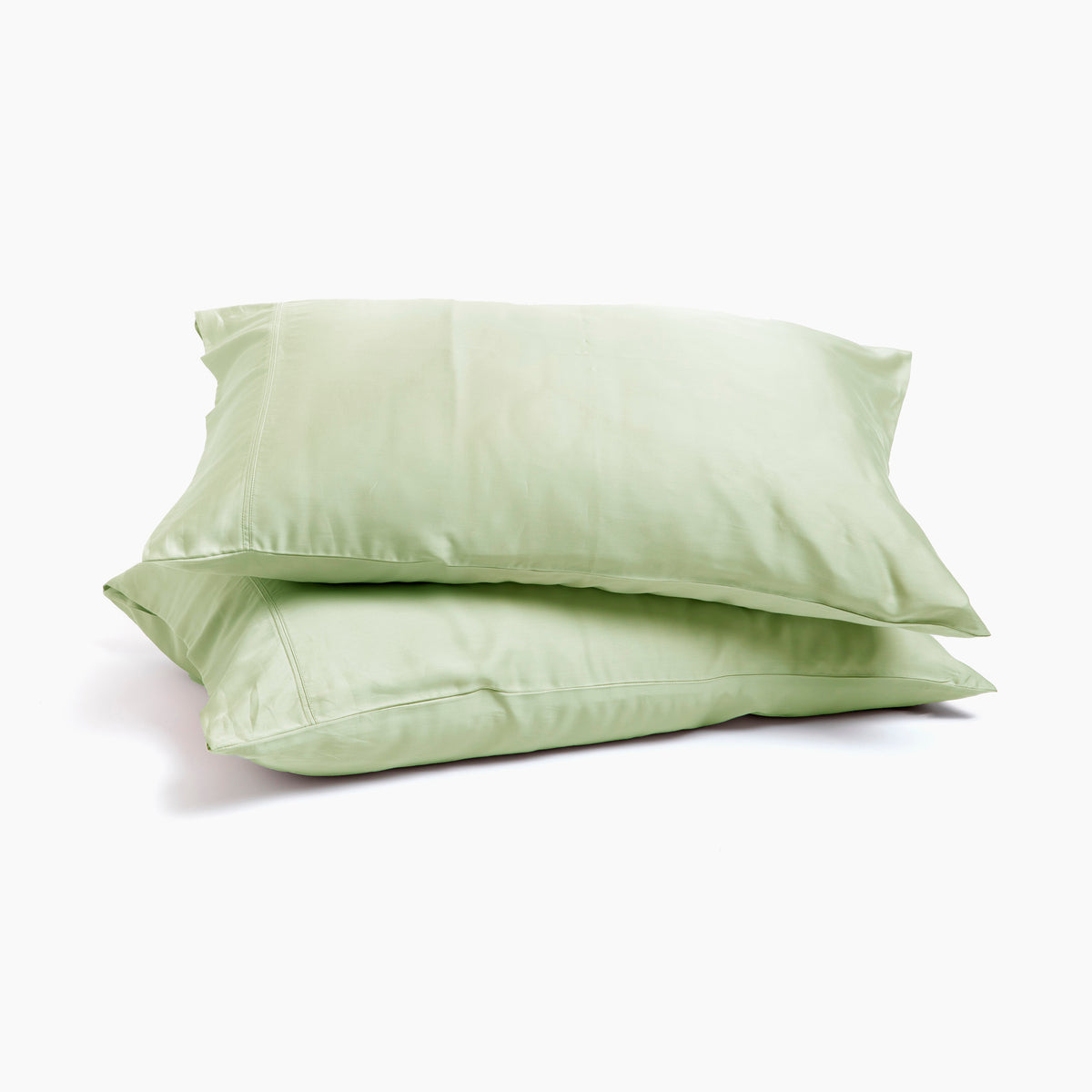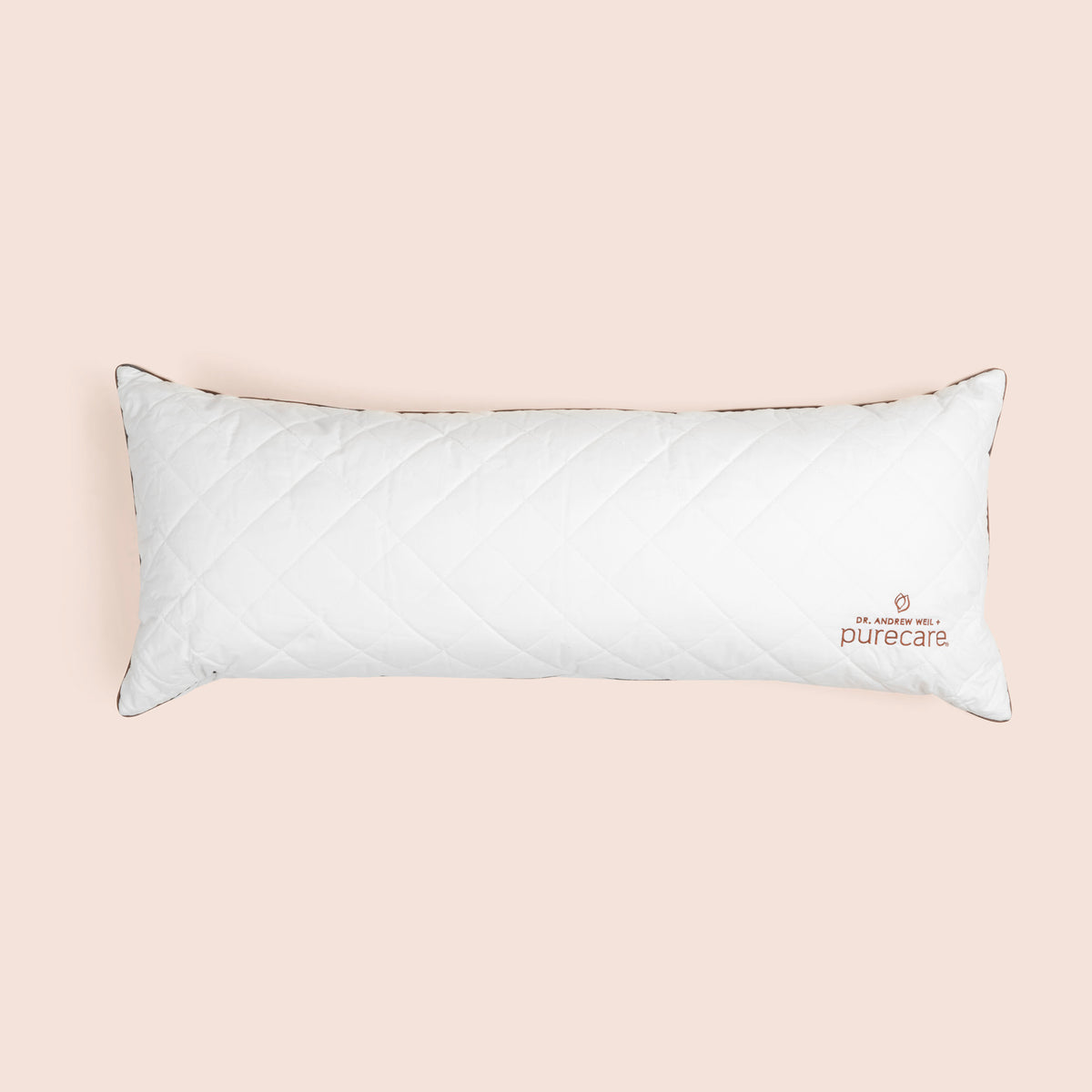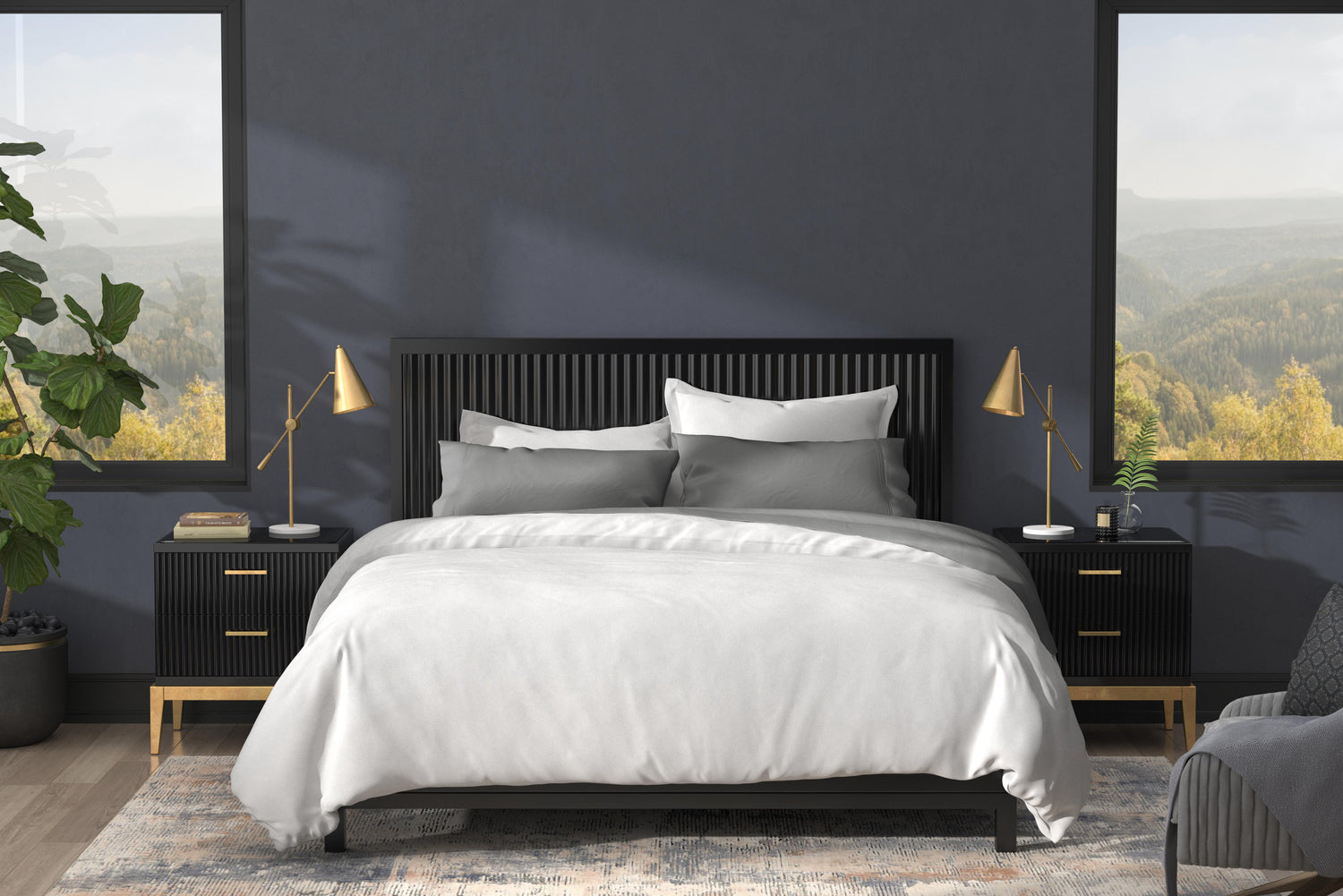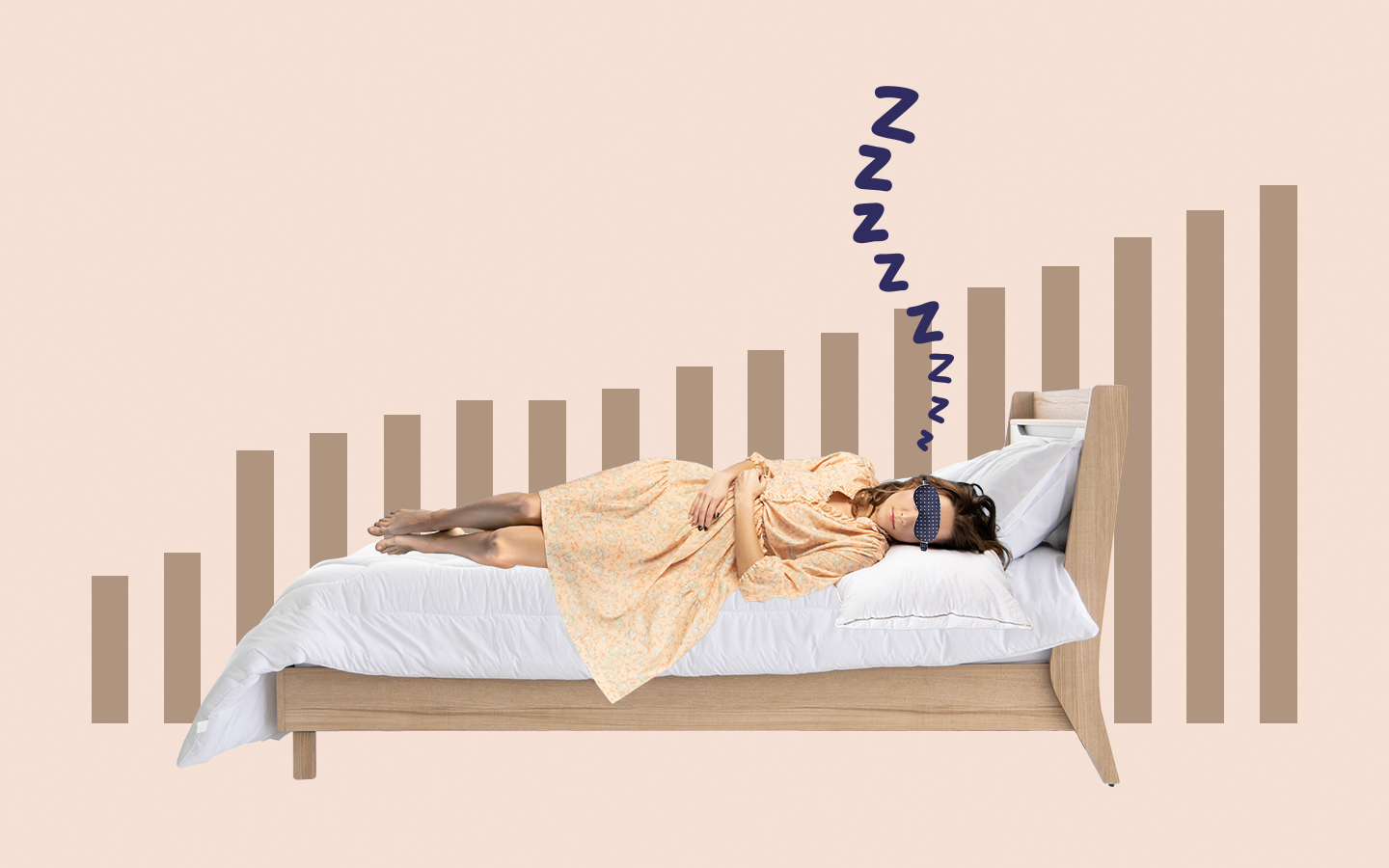TENCEL™ Lyocell is the brand name for one manufacturer's lyocell fabric. It's still lyocell fiber, but TENCEL™ Lyocell guarantees the quality and sustainable forestry practices of its manufacturer, LENZING. in other words, TENCEL™ Lyocell is to lyocell what Kleenex is to tissue.
But what is TENCEL™ Lyocell? Or, for that matter, general lyocell? What does it mean for your bedding?
Lyocell was a special fabric from the start. Dubbed a "miracle fabric" by department stores, the fabric is best known for its superior ability to wick moisture and sit lightly on sensitive skin.
As a result, it burst on the the scene in the early 1990s and quickly won consumer hearts. Today, reviews gush that "the climate control of these sheets [is] fantastic!" Others say lyocell sheets are "cool and refreshing," so sleepers are "refreshed and ready for the day."
Overall, TENCEL™ Lyocell is a fabric built on staying dry and cool, with a silky smooth, incredibly soft hand feel. Both traits have made TENCEL™ Lyocell a top choice in bedding and Purecare’s top-selling sheet set of all time.
We know that sleepers are individuals, and that TENCEL™ Lyocell may not be perfect for everyone. Luckily, we've spent thousands of sleep hours on all kinds of fabrics (someone had to do it) and dug into each fabric's unique characteristics and production to learn about how they meet our demanding standards. We're taking you on a fabric journey so that you can get a little insight into everything we've learned, from the story of TENCEL™ Lyocell to its benefits, and how it compares to other choices like modal.
Here's everything you need to know about TENCEL™ Lyocell.
What are TENCEL™ Lyocell Fibers Made Of?
TENCEL™ Lyocell is a branded lyocell that's manufactured today by Lenzing AG of Austria. Knowing the origin of your lyocell ensures that you are backing good forestry practices and getting a truly environmentally friendly product.
TENCEL™ lyocell is made using wood pulp from sustainably grown eucalyptus trees. It's a natural material, called "semi-synthetic" because part of the fiber is man-made by using non-toxic chemicals to break down wood pulp into fibers. However, TENCEL™ Lyocell doesn't pollute local manufacturing sites thanks to the closed-loop system that ensures that chemicals are recycled from batch to batch. The resulting fabric is soft, silky, and durable.
The manufacturing process that made semi-synthetic fibers more environmentally friendly was made possible by the 1973 lyocell process, which rendered the recyclable solvents that made modal fabric completely non-toxic. The result? A different hand feel and a vastly improved environmental impact.
Called tencel from the beginning, a London fabric company called Courtaulds manufactured the fabric alongside Lenzing AG. The two licenses for the lyocell process became one when Courtaulds sold its lyocell manufacturing division to Lening AG in 2000. That's why you may hear of tencel as the general name for lyocell fabric, or as a type of fabric manufactured by multiple companies.
Today, other lyocell companies manufacture lyocell under different brand names.
How Popular is TENCEL™ Lyocell?
TENCEL™ Lyocell is a very popular fabric. It's the most prominent lyocell in the market, and lyocell sales are growing year by year.
Today, lyocell is set to grow roughly 7% from 2021 to 2026, and its market value is over $1 billion. Its 2018 production of more than 400 kg tons is set to double by 2030., Top lists for the best cooling bedsheets always seem to include a set of lyocell sheets, and lyocell fabric's meteoric rise shows no signs of slowing down.
TENCEL™ lyocell is attractive as consumers increasingly search for products that meet their eco-friendly expectations.
Further, lyocell sales have risen alongside increasingly accessible prices since the 1990s, and the popularity of cooling fabrics in bedding, along with growing environmentalism, keep lyocell a top choice.
The History of TENCEL™ Lyocell Fabric
Sometimes called the "third generation" in Rayon textiles, lyocell is a fabric made from cellulose fibers. It was created to maximize sustainability and create new fabrics that other branches of the Rayon family couldn't.
Since cellulose is the most abundant polymer on earth, synthetic fabrics aimed to capitalize on this abundance. Semi-synthetics like rayon, modal, and lyocell promise less deforestation and an environmental triumph over the ever-popular cotton based on water usage.
But water is only part of the story. Before lyocell, there was modal. That "second generation fabric" is still incredibly popular today thanks to its sustainability and non-toxic production; a huge improvement over original generation rayons.
Modal didn't, and it improved on some of Rayon's biggest drawbacks, namely, that it tends to lose its shape and shrink when wet. The origin of the fabric's tree cellulose got an upgrade, too: beech trees gave modal its distinctive look and feel.
Yet lyocell took it one step further by freeing the processing of wood pulp from sodium hydroxide - lye - which can cause issues if not handled correctly. Lyocell uses amine oxide, so it's not only systemically non-toxic but also skin-friendly.
Another core difference is that lyocell is made from eucalyptus trees (though it can be made from oak, birch, or bamboo).
Besides its improved manufacturing process, lyocell came with some superstar qualities among Rayon lookalikes. Says the Chief Commercial Officer of LENZING AG, which manufactures lyocell, "That softness, the friendliness for the skin, and the moisture management are really the three key advantages that lyocell brings versus a lot of other alternatives."
How Does TENCEL™ Lyocell Fabric Feel Different From Other Sheet Fabrics?
Today's spectrum of fabric choices can make it challenging for buyers to find their perfect sheets. In bedding, here are some common ways to tell when lyocell is (and isn't) right for you:
TENCEL™ Lyocell vs Modal: With both a new wood source and a new process, TENCEL™ Lyocell fibers feel different from modal and from first-generation rayon. TENCEL™ Lyocell is shinier and silkier than modal and better at moisture-wicking. Modal is better for those who prefer a matte finish and those who want more warmth, though both fabrics feel cool to the touch and wick moisture better than natural fabrics like cotton and linen. Both are great for sleepers who want a sustainable, environmentally friendly option.
TENCEL™ Lyocell vs Cotton: Breathable, classic, and affordable, cotton has long been a mainstay on our beds. It can be warmer than semi-synthetic alternatives like TENCEL™ Lyocell, which is 50% more absorbent than cotton. Cotton is the best choice for affordability, TENCEL™ Lyocell is more durable than cotton in the long run.
TENCEL™ Lyocell vs Linen: Linen is an ancient, time-tested fabric that screams "summer." It's the image of breathability, with its moisture-wicking comparable to the semi-synthetic TENCEL™ Lyocell. That said, linen has a completely different hand feel than silky TENCEL™ Lyocell, but linen lovers adore the way it softens and relaxes over time. Linen is best for those craving that distinctive “lived-in” charm that only flax fiber can provide.
TENCEL™ Lyocell vs. Bamboo: For sleepers who want long-lasting sheets that are environmentally friendly, TENCEL™ Lyocell and bamboo rayon blends are finalists. How do you tell them apart? Bamboo rayon sheets are typically less silky. They're soft but without the sheen of 100% TENCEL™ Lyocell. Bamboo is also more prone to wrinkle. Looking for breathability without the look and feel of silk? Bamboo is the best choice.
What are the Advantages of TENCEL™ Lyocell Fabric?
TENCEL™ Lyocell comes with many benefits. Here are a few:
- TENCEL™ Lyocell sheets are great for hot sleepers. Brands use TENCEL™ Lyocell in sports clothing because it wicks moisture and keeps you feeling cool and dry.
- TENCEL™ Lyocell sheets are some of the most durable available. TENCEL™ Lyocell is made sustainably. TENCEL™ Lyocell is a plant-based fabric cultivated organically, using less water than cotton. While you should watch for best forestry practices to ensure this fabric meets your expectations for forest stewardship, the types of trees and processes used to create TENCEL™ Lyocell are outstanding compared to those previously used to make the kinds of fabrics suited for bedding and sheets.
- TENCEL™ Lyocell looks and feels great. Photogenic TENCEL™ Lyocell always shows off its best side. This silky, luxurious-looking fabric is soft, yet resistant to wrinkles (though you can iron lyocell on a low setting when needed). For those who like the buttery hand feel of luxury fabrics, TENCEL™ Lyocell is the perfect fabric.
- TENCEL™ Lyocell shrinkage is minimal. 100% TENCEL™ Lyocell can shrink about 3% when first washed. Protect your TENCEL™ Lyocell sheets by washing and drying on warm. It's blendable. That makes it possible to enjoy the benefits of TENCEL™ Lyocell alongside other fabrics. There's no need to choose when the long fibers of TENCEL™ Lyocell blend so well with so many other threads.
Disadvantages of TENCEL™ Lyocell
All fabric choices come with trade-offs. For example, heavy, warm-sleeping fabrics won't keep your hot sleeping partner happy and cool all night. It's all about balancing your ideal sleep with your aesthetic preferences, environmental values, and even your climate. Here are the drawbacks of TENCEL™:
- It can be expensive. While TENCEL™ Lyocell is made from wood that grows quickly and is a renewable resource, harvesting and processing lyocell comes at a price. The bright side? 100% TENCEL™ Lyocell is durable, and its price tag might be offset by how long it lasts compared to more affordable options.
- It's specific. Though strong and durable, TENCEL™ Lyocell should be washed and dried on specific settings. Use cold or warm water and the gentle cycle. Dry with low or medium heat.
How is TENCEL™ Lyocell Made?
You make TENCEL™ Lyocell by turning wood into cellulose, the fibrous material in the cells of living things. Because TENCEL™ Lyocell comes from natural fibers, but includes man-made processes like the use of chemicals in its production, it's considered a semi-synthetic fiber. Here's what the production of TENCEL™ Lyocell looks like:
- Wood is chipped and dissolved into pulp.
- Wood pulp is mixed with amine oxide to extract cellulose.
- Amine oxide is heated and pressurized, melting the pulp into a workable, syrup-style liquid.
- The resulting liquid is filtered and purified.
- The liquid, known as viscose, is pumped through spinneret holes to create fibers.
- Fibers are processed in another bath that helps fibers solidify into long, continuous strands.
- Fibers are washed, dried, dyed, and spun into yarn.
- Amine oxide is recycled to process more tree pulp.
Sustainable TENCEL™ Lyocell?
TENCEL™ Lyocell can be a very sustainable option and is hyped for its improvement in the process that turns tree pulp into fabric.
But the process of turning a plant-based fiber into lyocell fabric isn't necessarily inherenty eco-friendly. If it's not TENCEL™ Lyocell, look for a lyocell production process that:
- Uses trees grown with good forestry practices.
- Conserves energy, or uses clean energy, in transport and processing.
- Has a guaranteed closed-loop recycling process for solvents.
TENCEL™ Lyocell: The Sheet of Your Dreams?
TENCEL™ Lyocell and lyocell sheets are a luxurious choice for sleepers who want cool and silky. The fiber’s moisture-wicking properties help ensure that hot sleepers stay dry, wake less, and get a better night's sleep than thicker fabrics that trap heat. Those in warm climates also find that TENCEL™ lyocell sheets help them stay cool.
Want soft but not silky? TENCEL™ Modal sheets and pillowcases may be a better choice. Their cooling profile is more neutral, so sleepers of multiple temperatures can share with ease.
No matter what your decision is, at the end of your evening, all that awaits you is a night of pure rest. Lyocell and related cellulose-derived fabrics all have slightly different properties and costs, but they are all highly popular choices for a reason.
The semi-synthetic fabrics help sleepers stay cool and feel buttery soft against sensitive skin. They all help sleepers relax and forget about the day, enveloped in a cocoon of comfort. Which is perfect for you? It can be tough to know without considering differences in weave and touching the fabrics you're considering.
But rest assured (no pun intended), with their environmental pedigree and silky soft feel, lyocell sheets are made for sleep.

